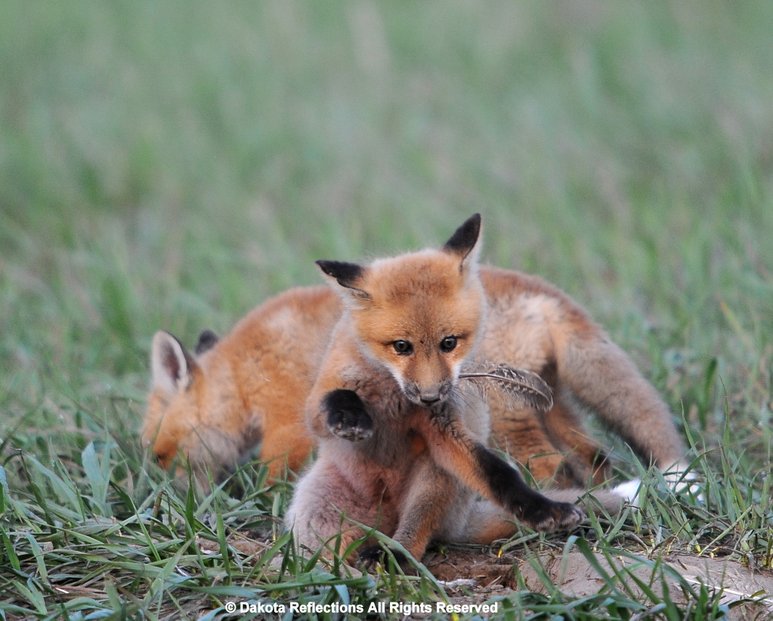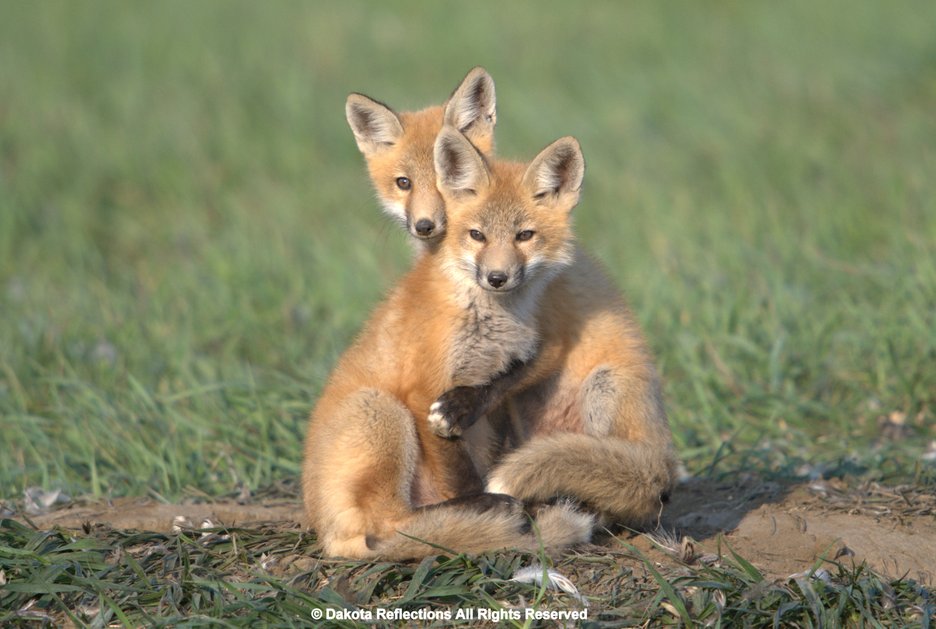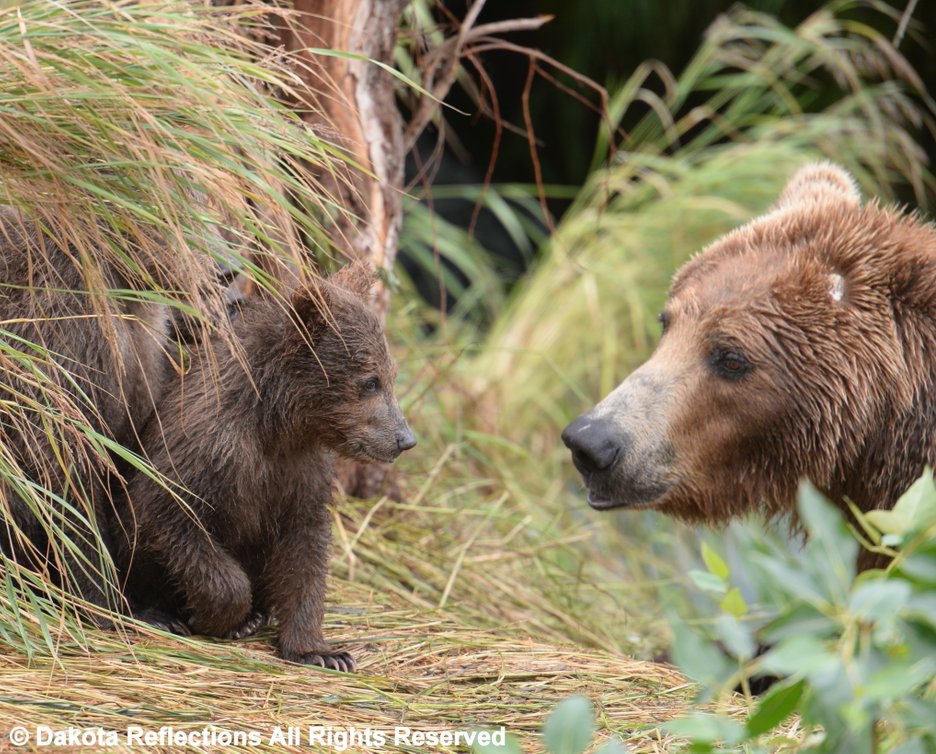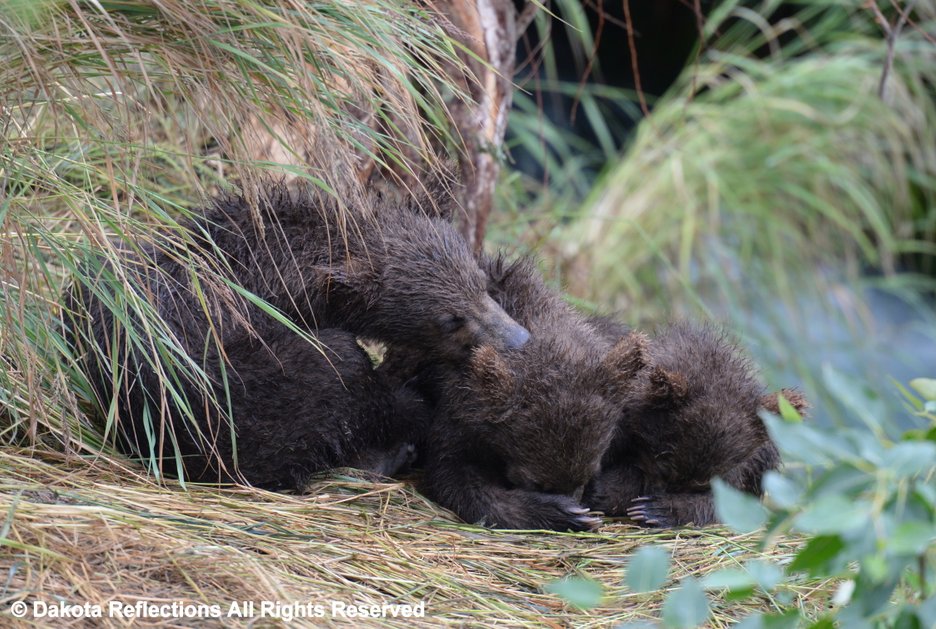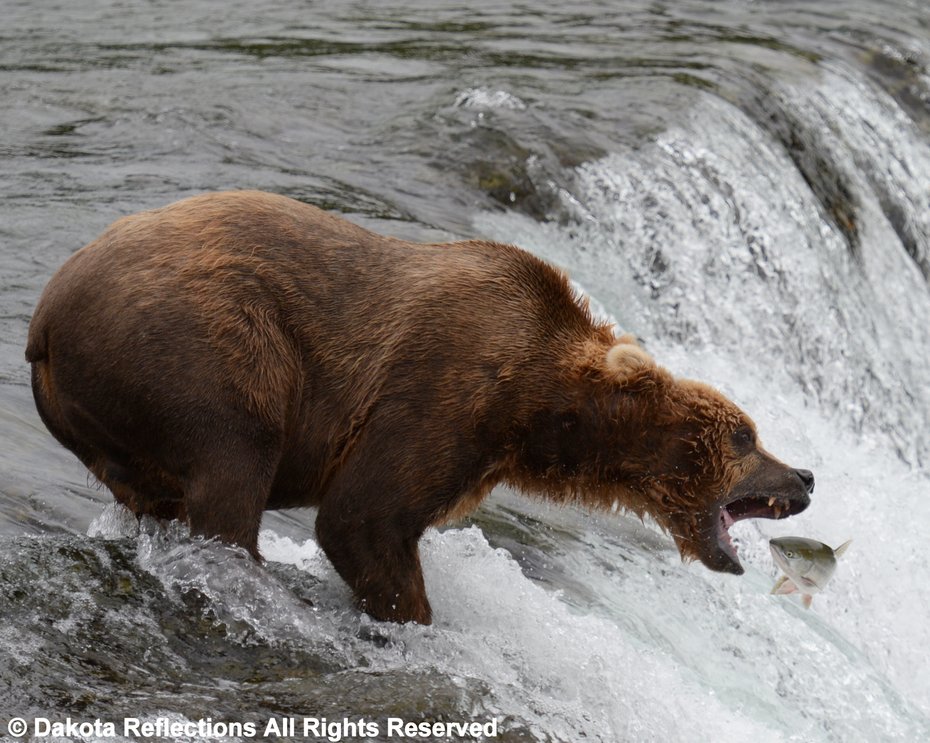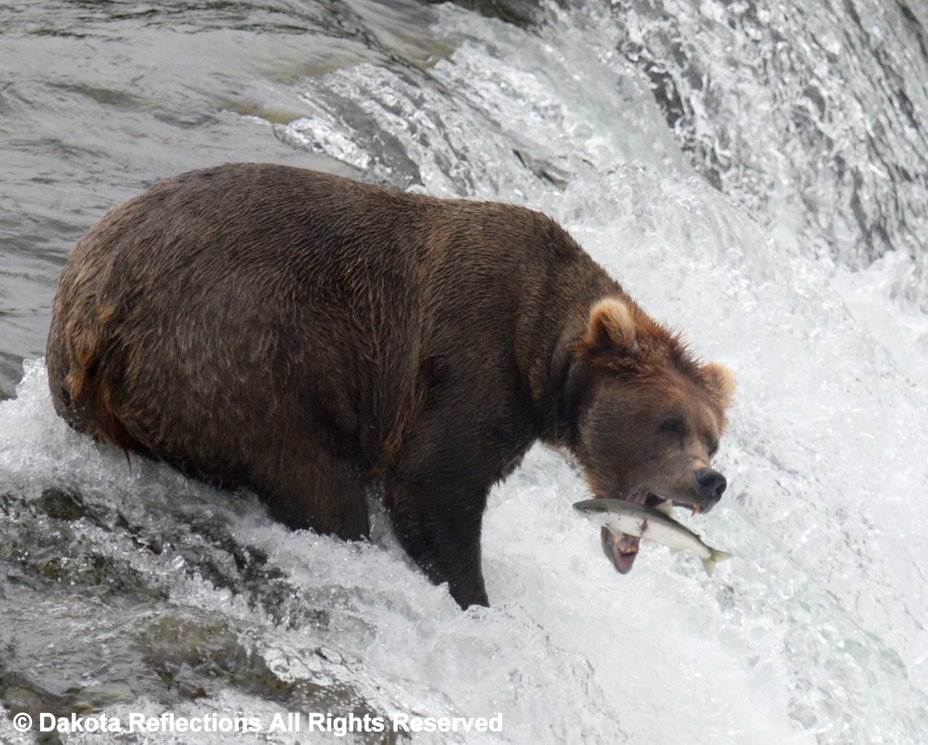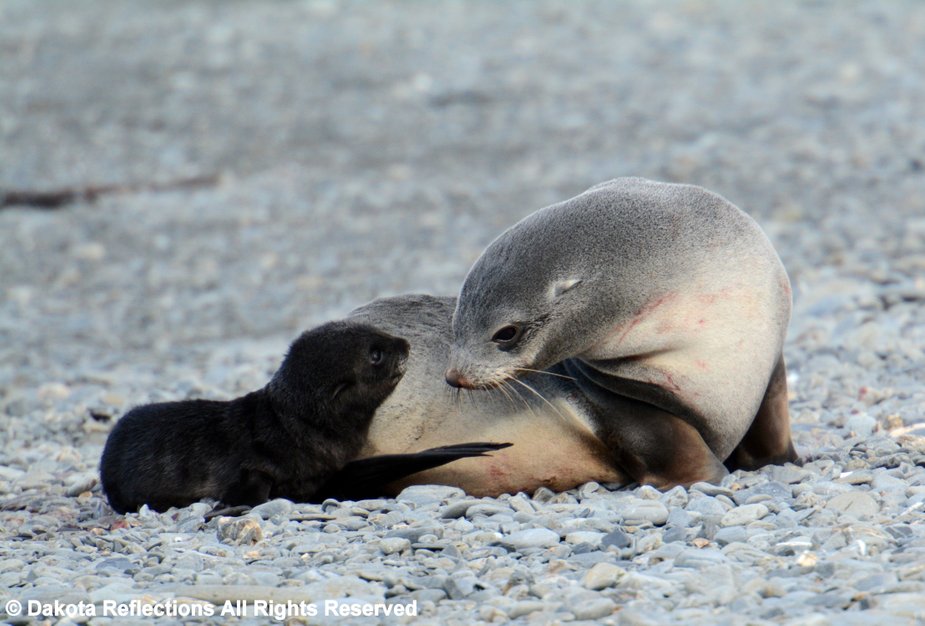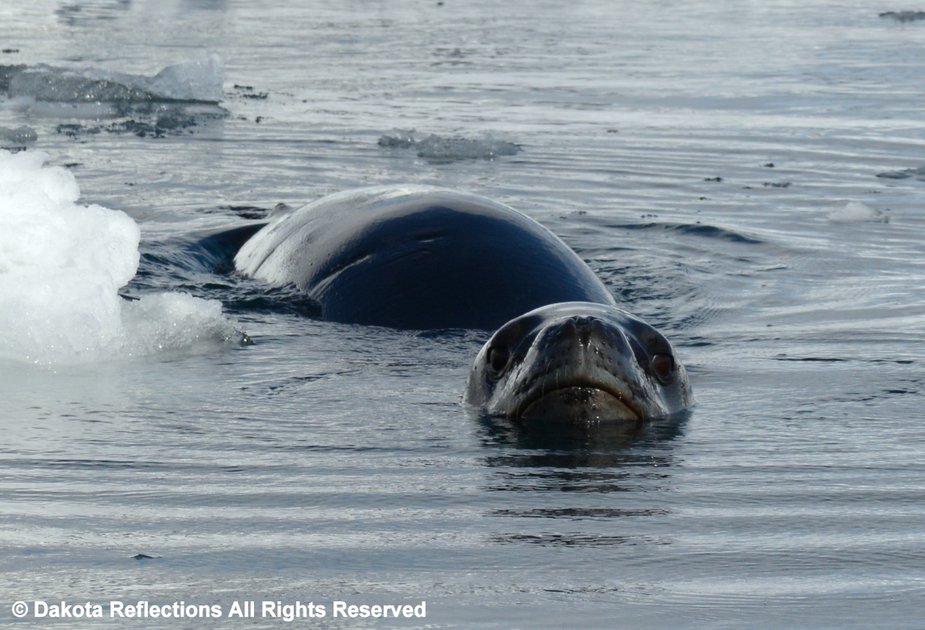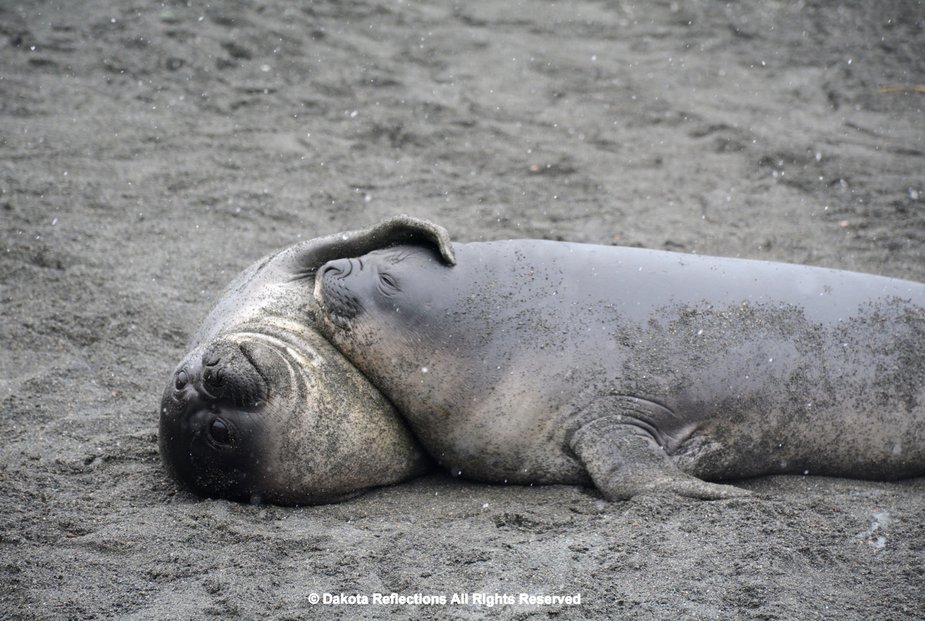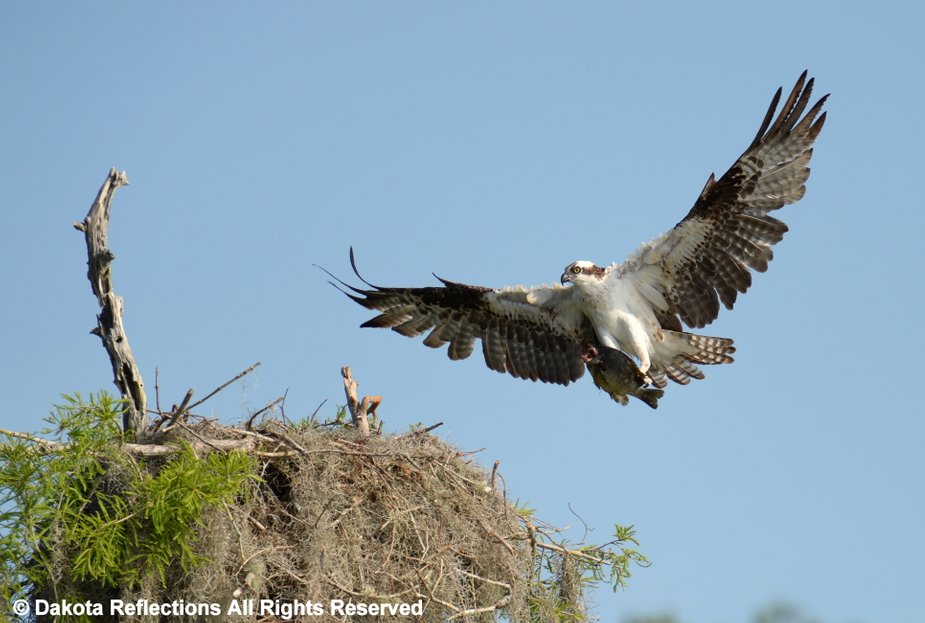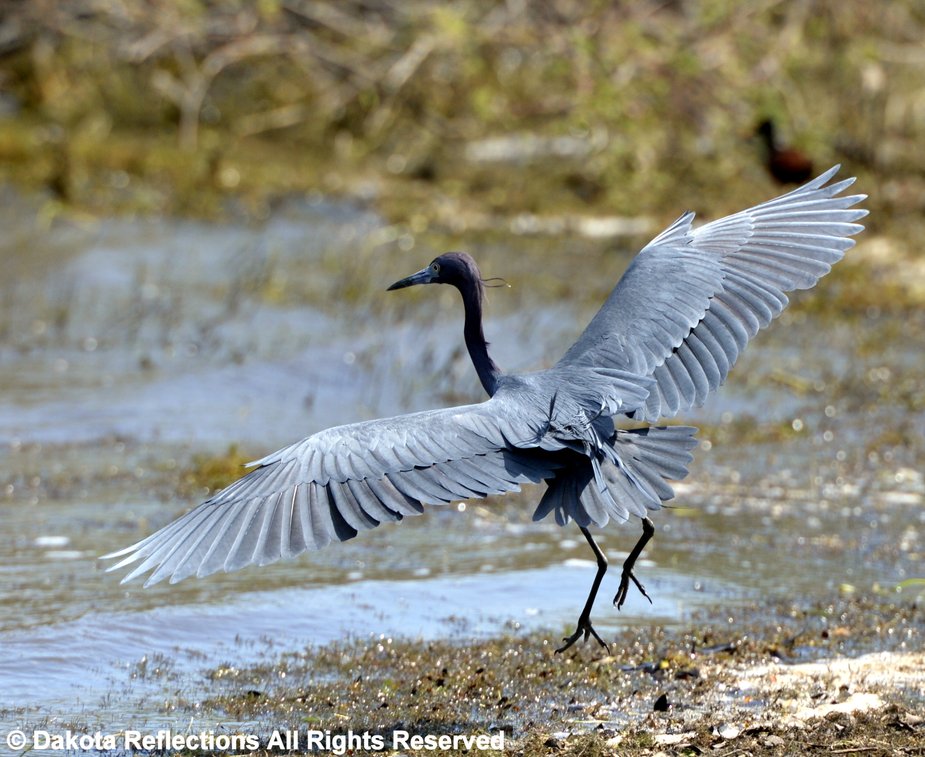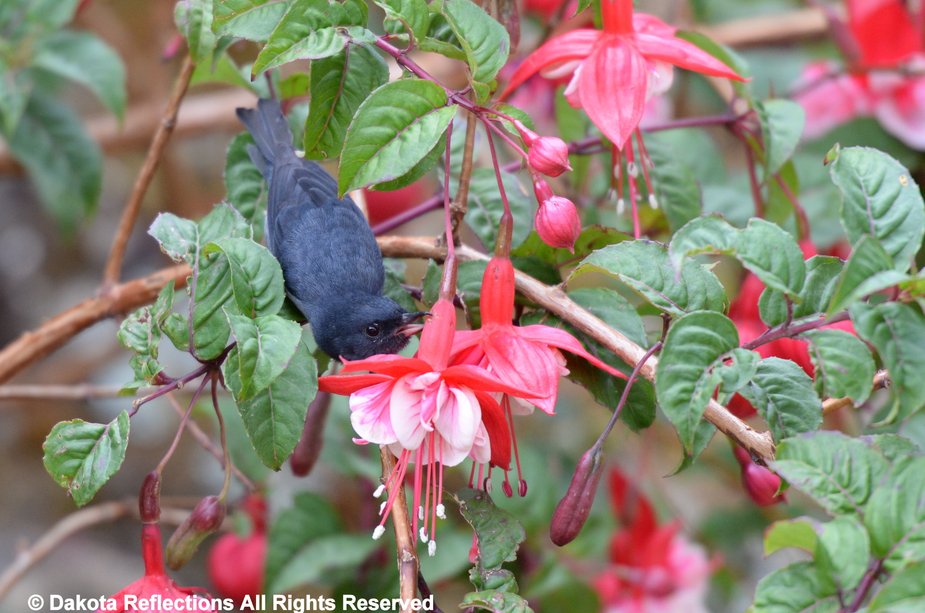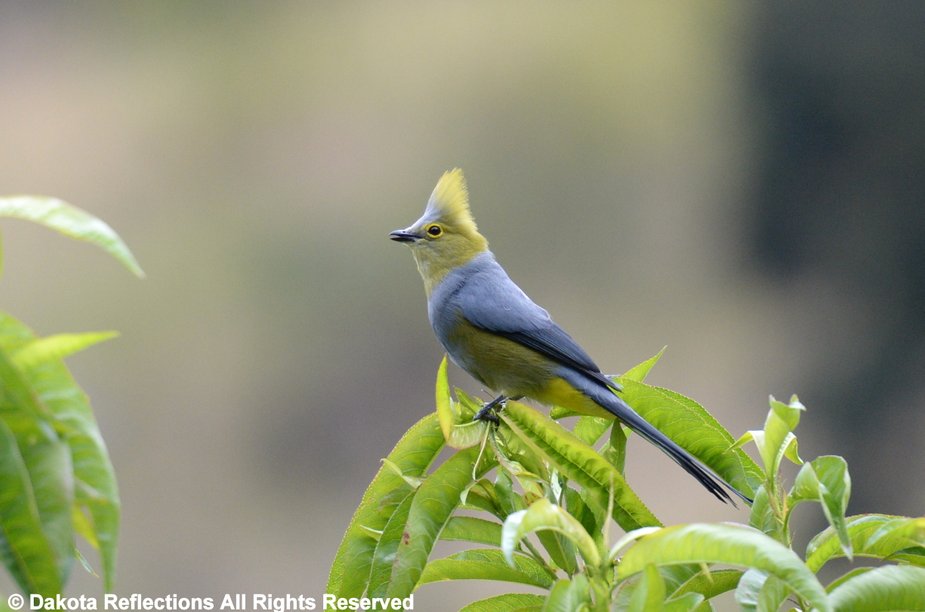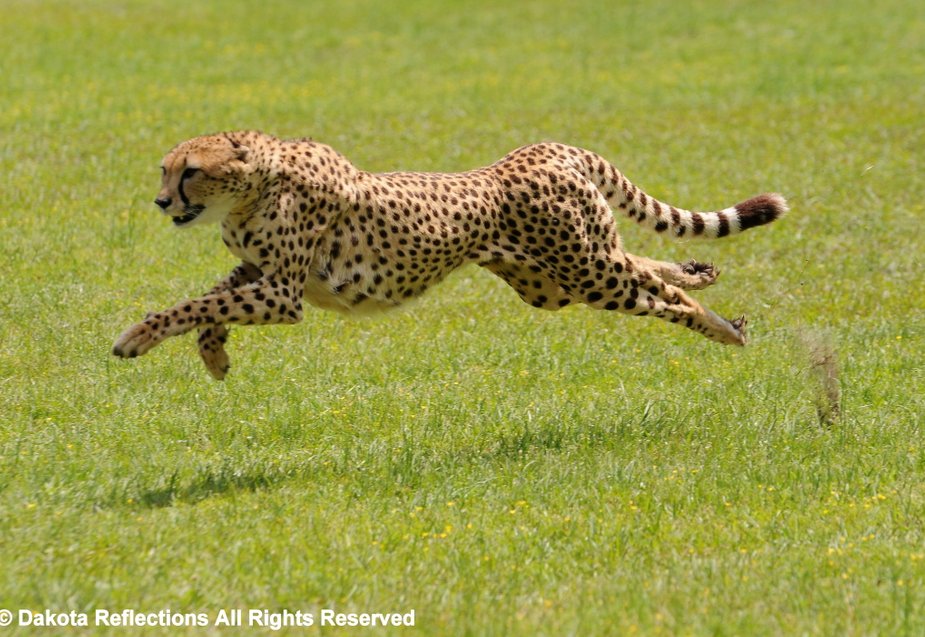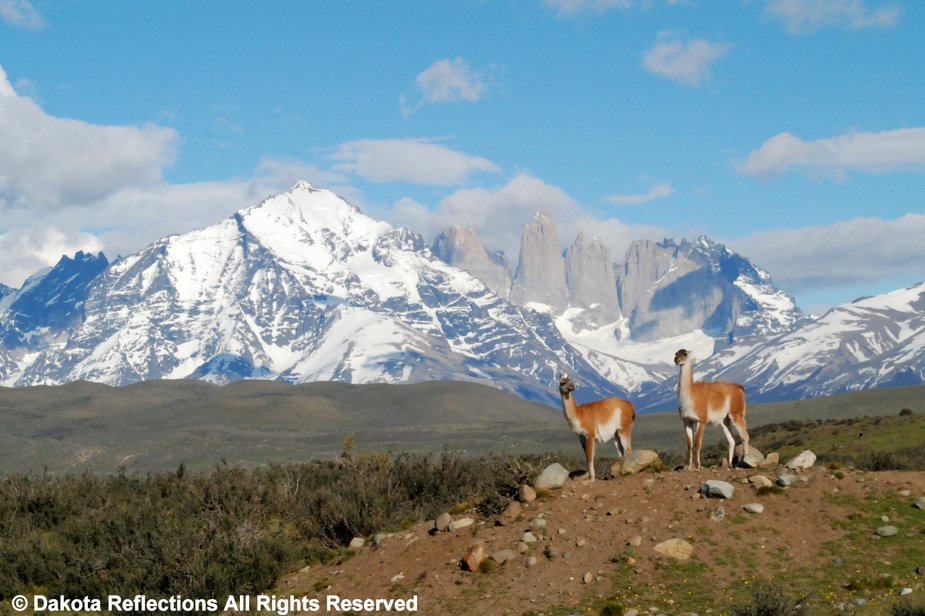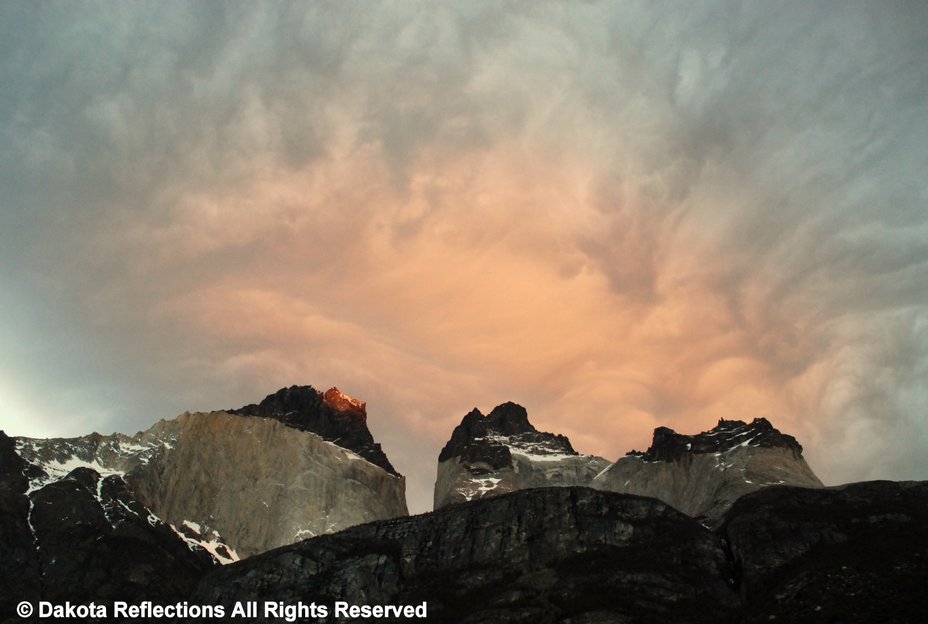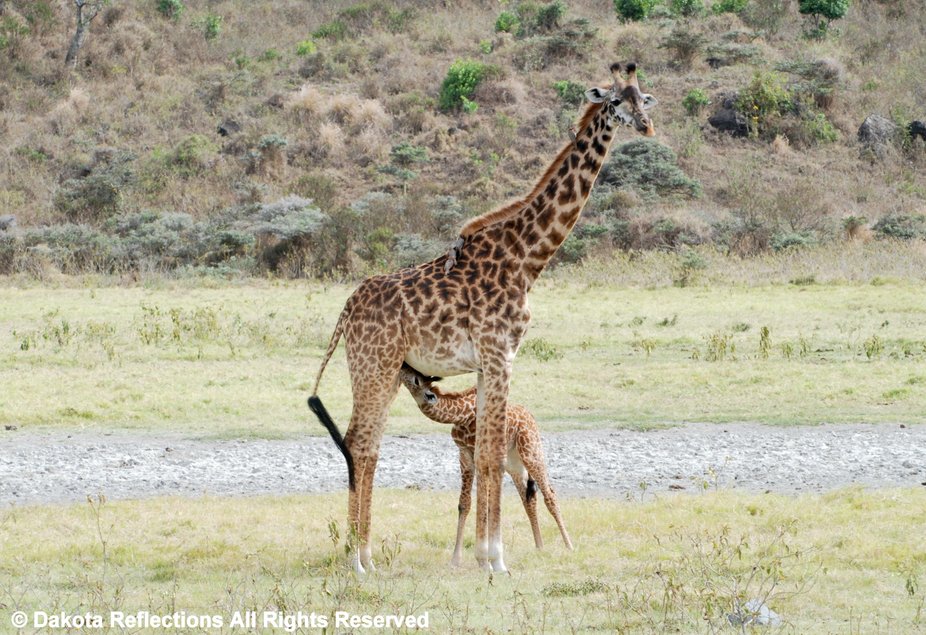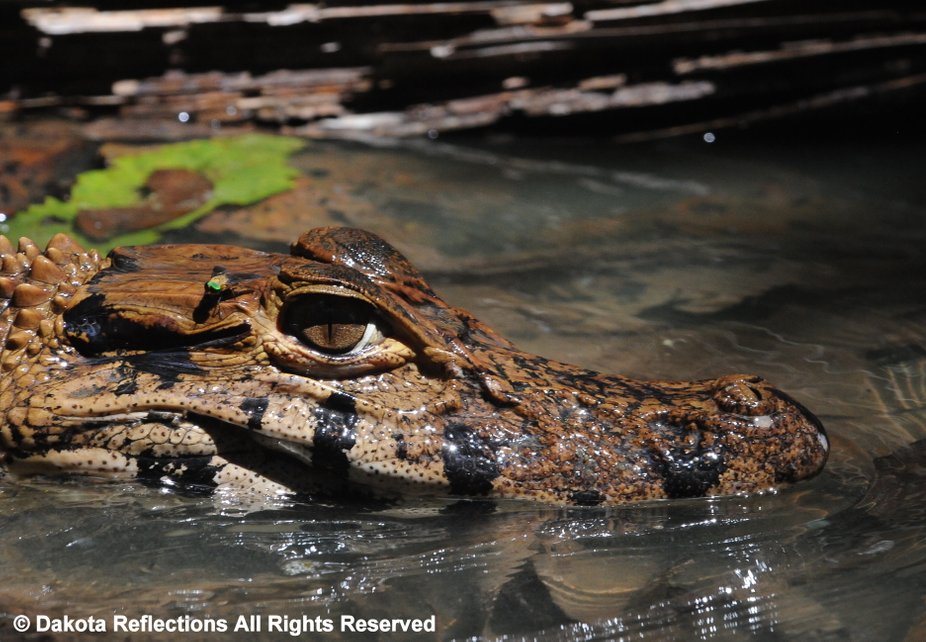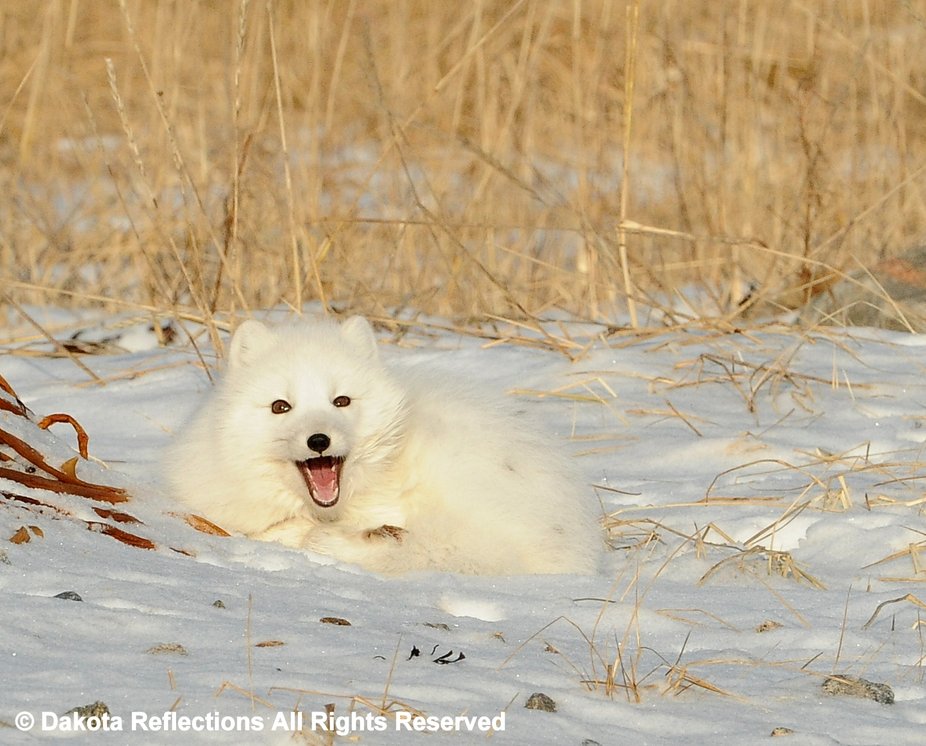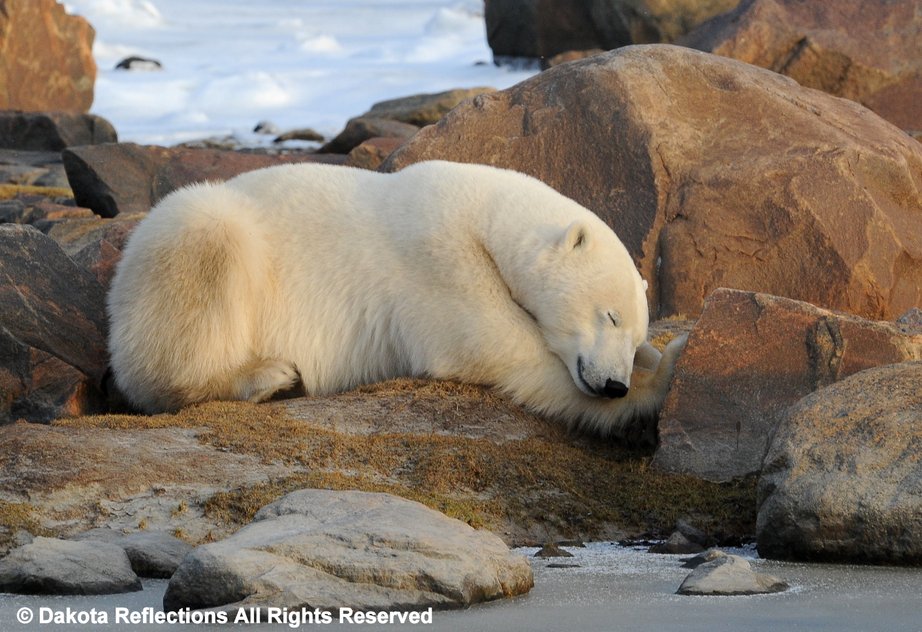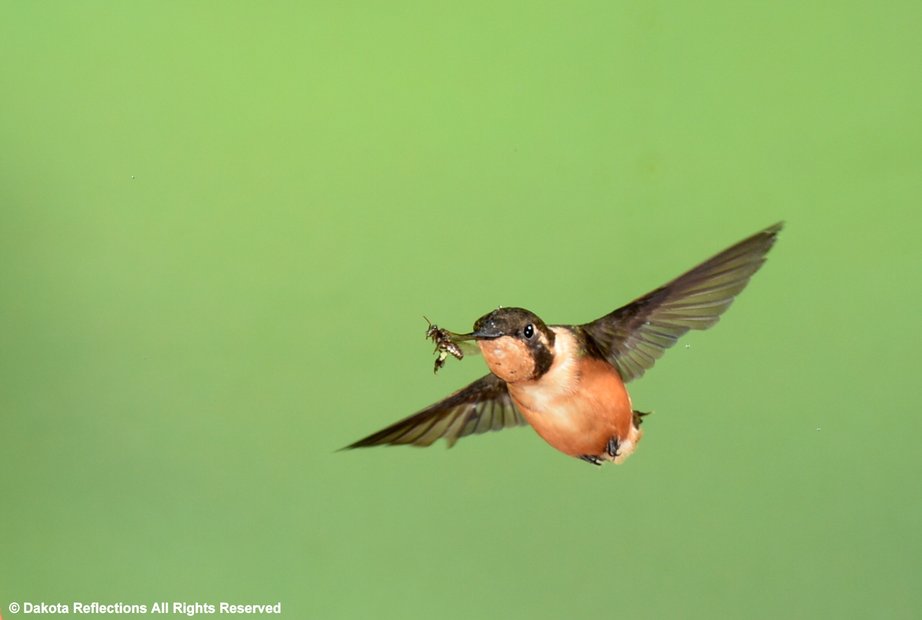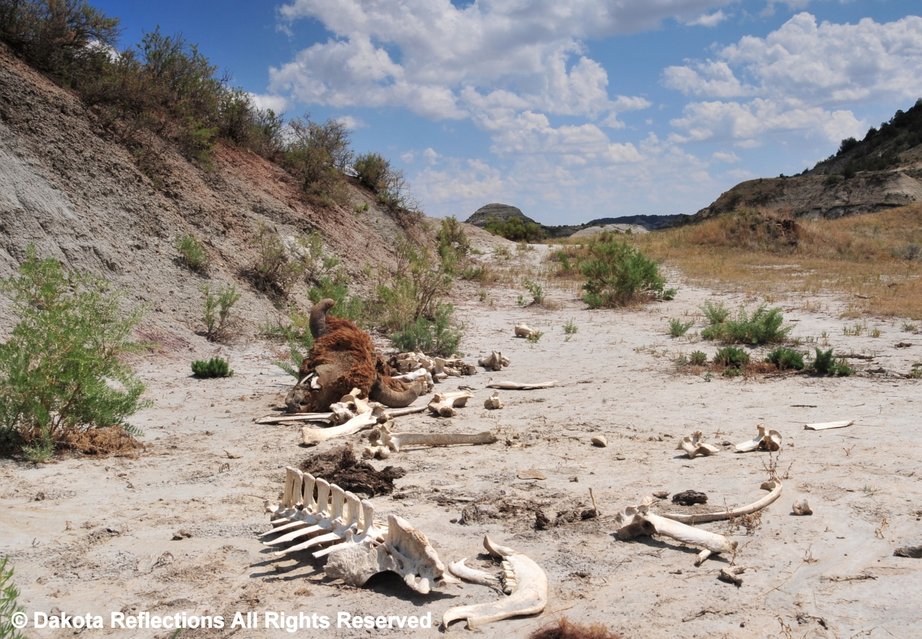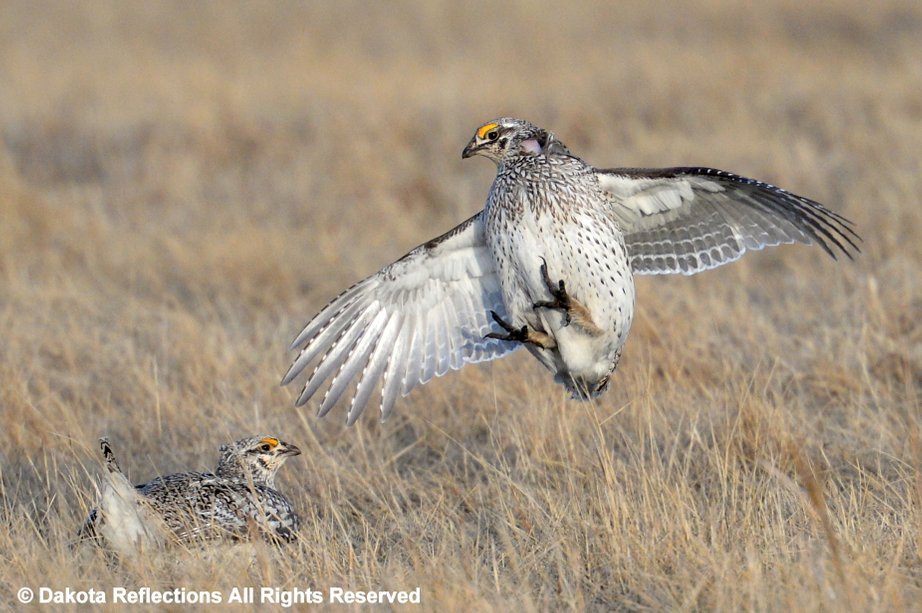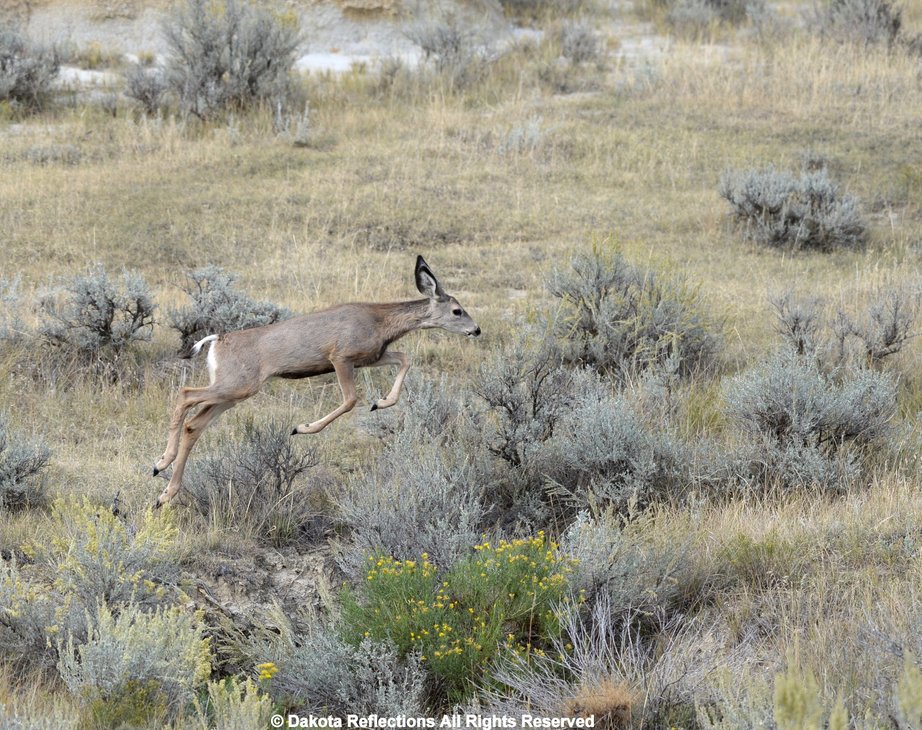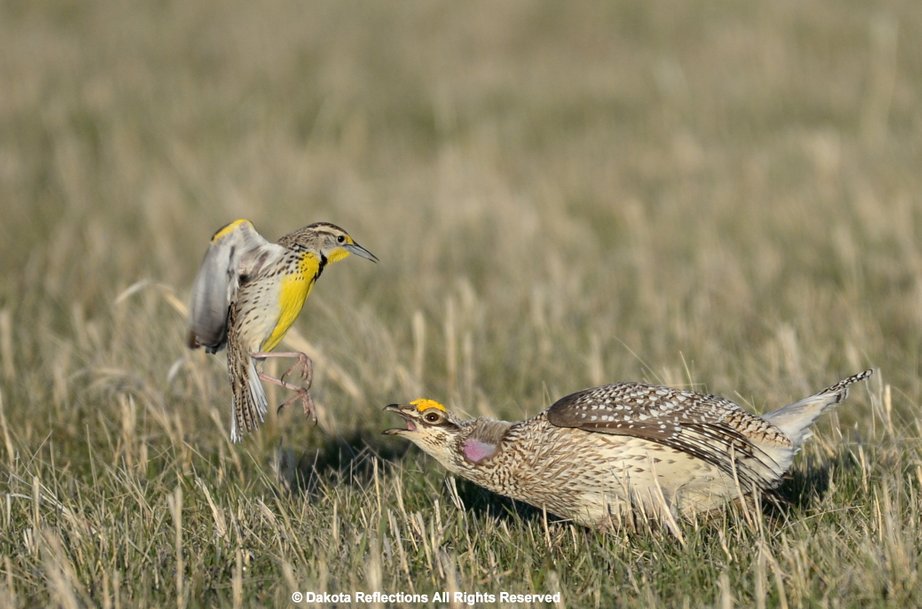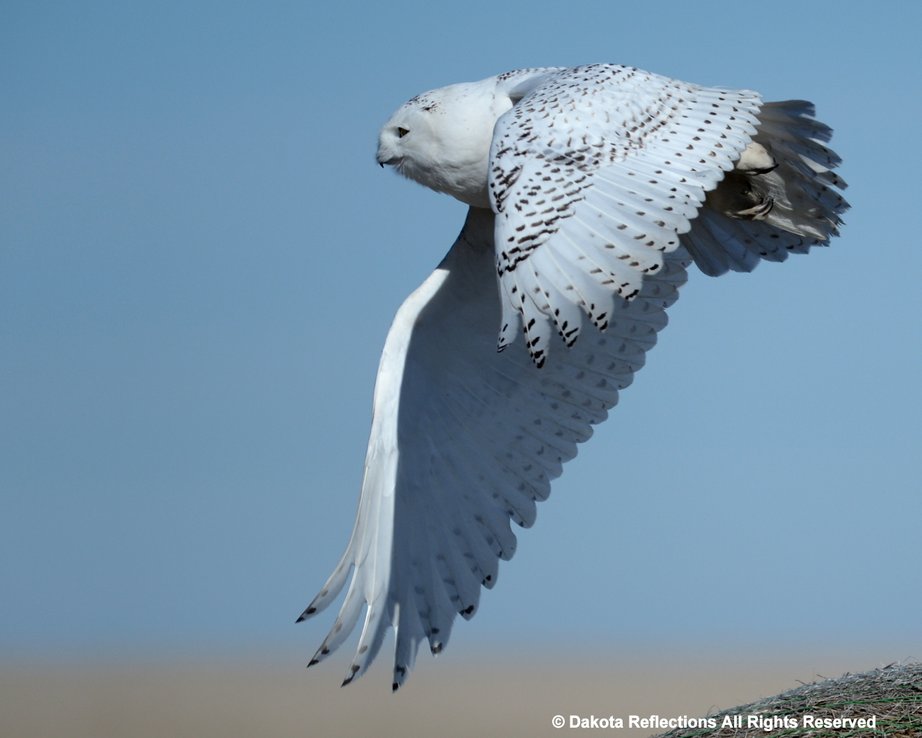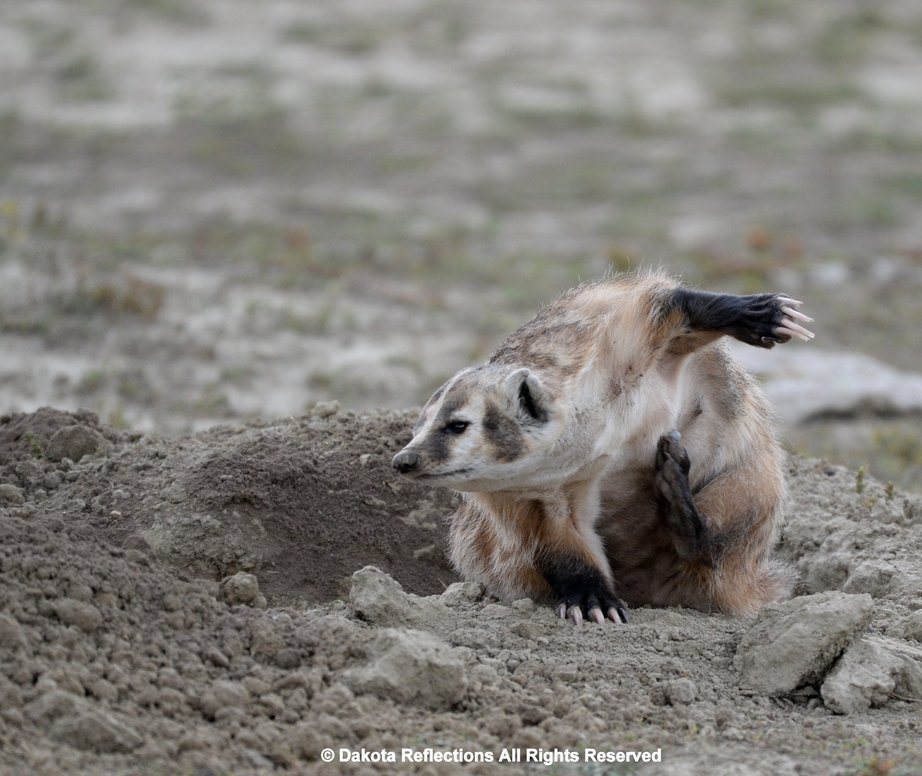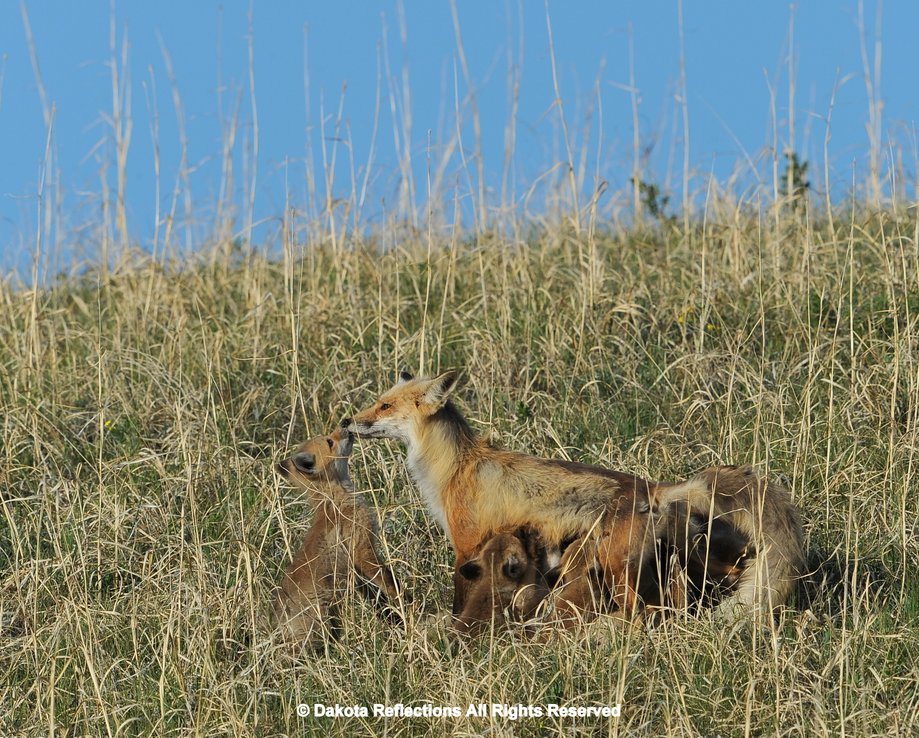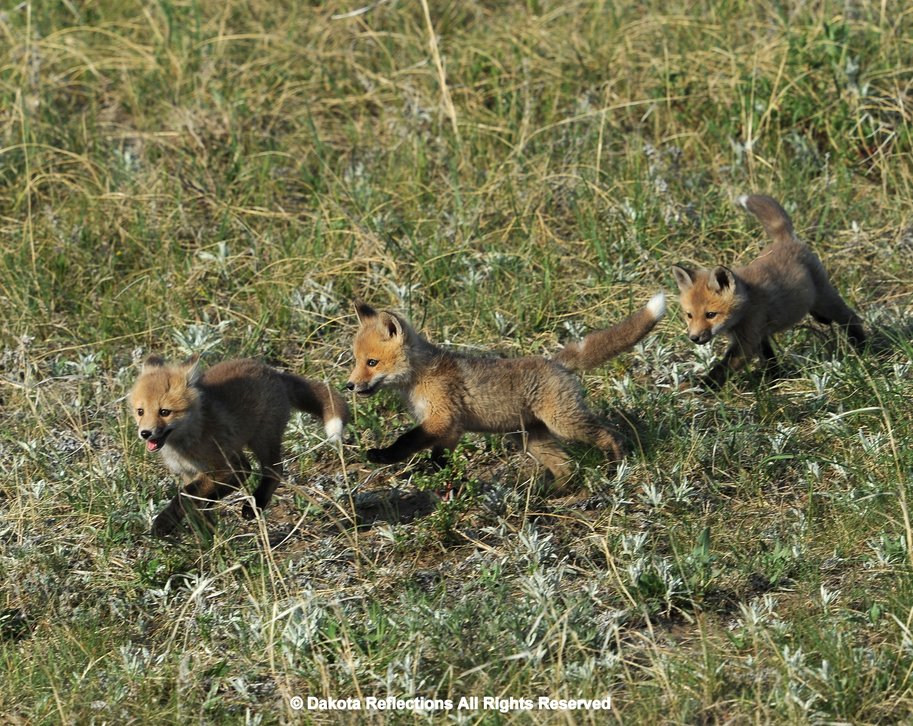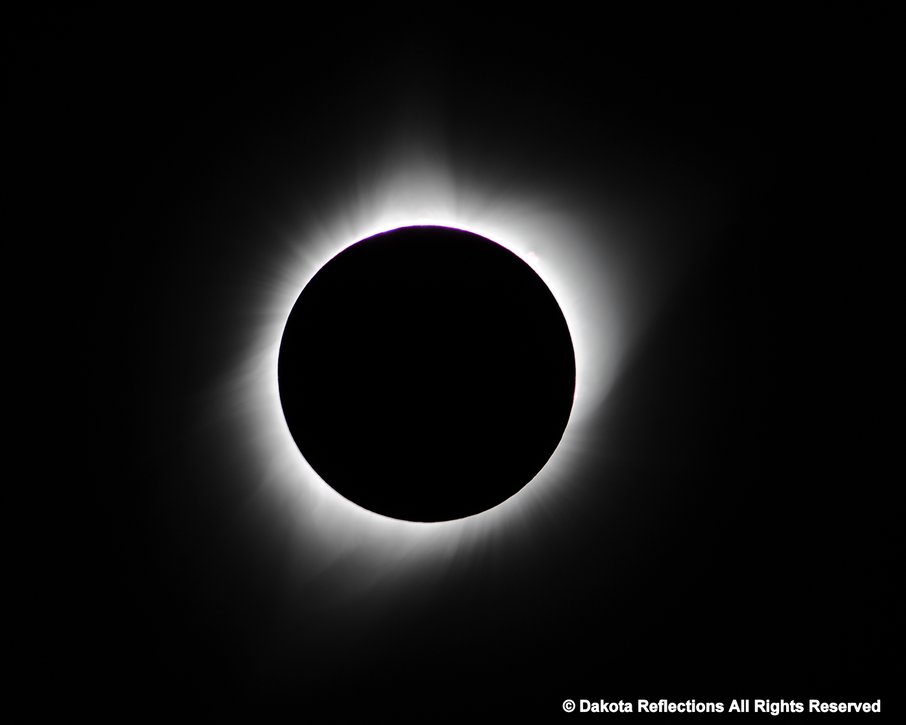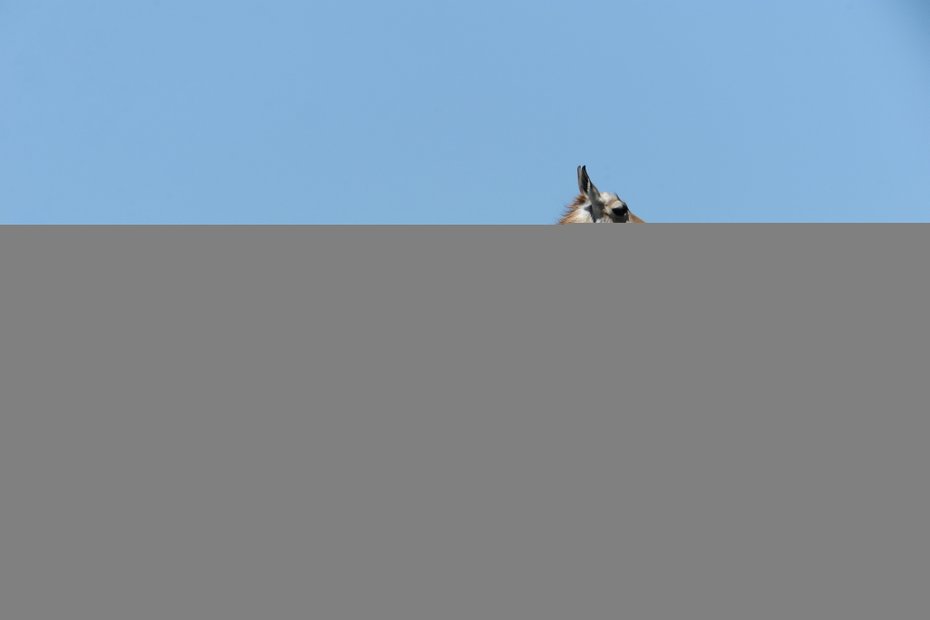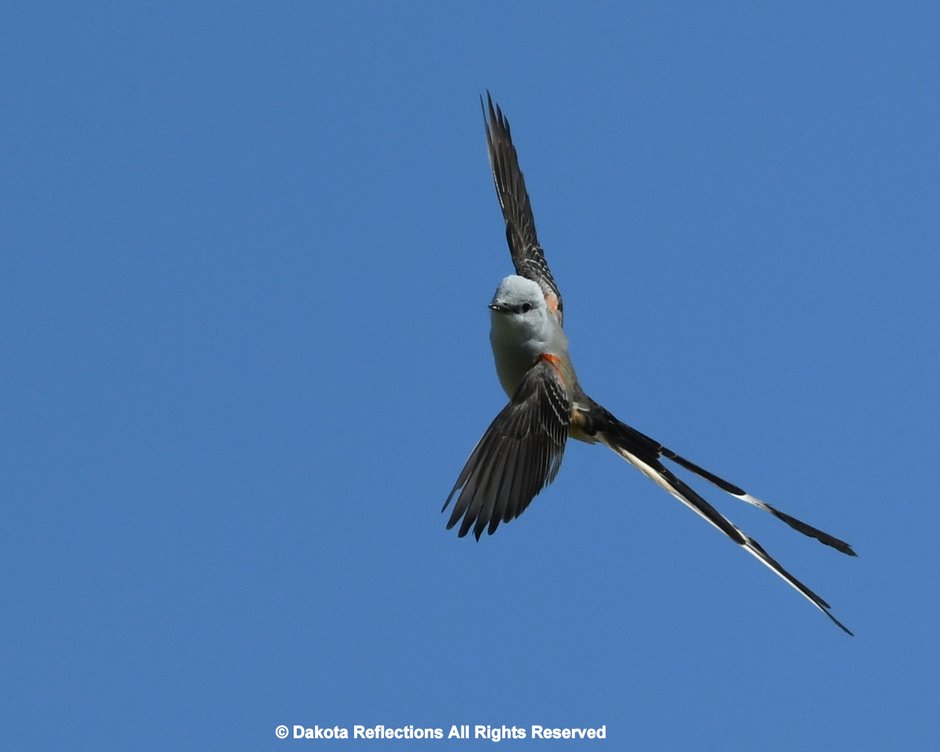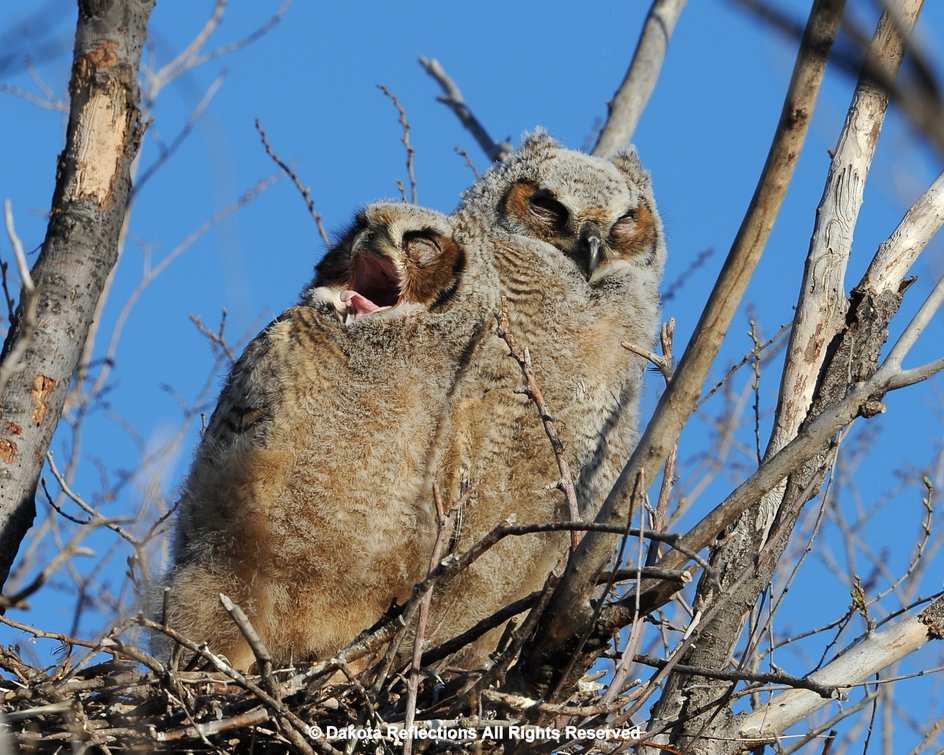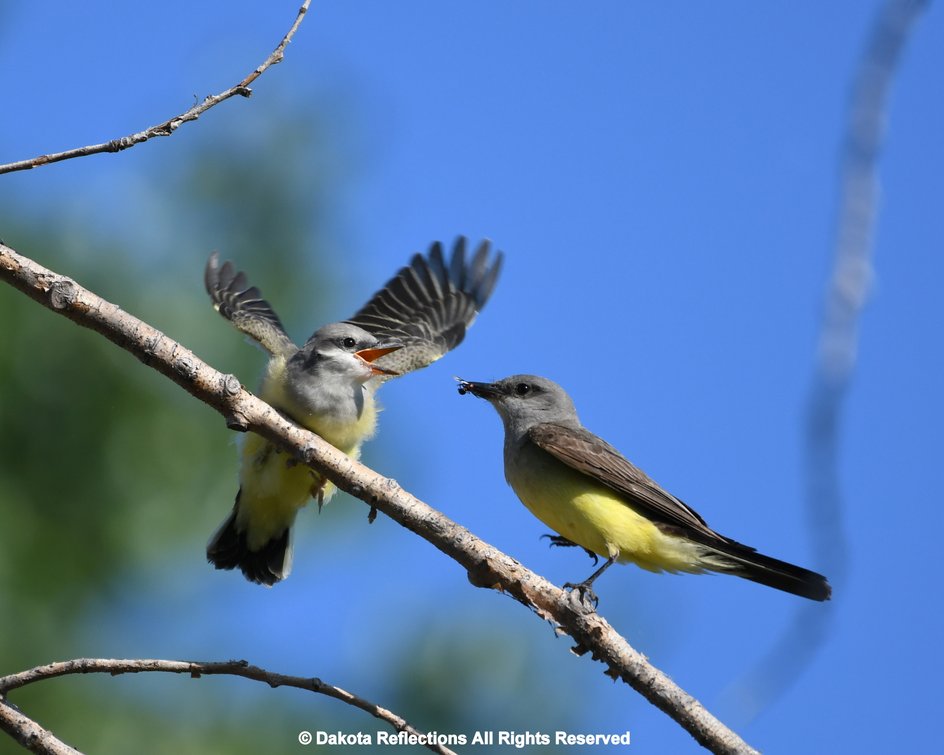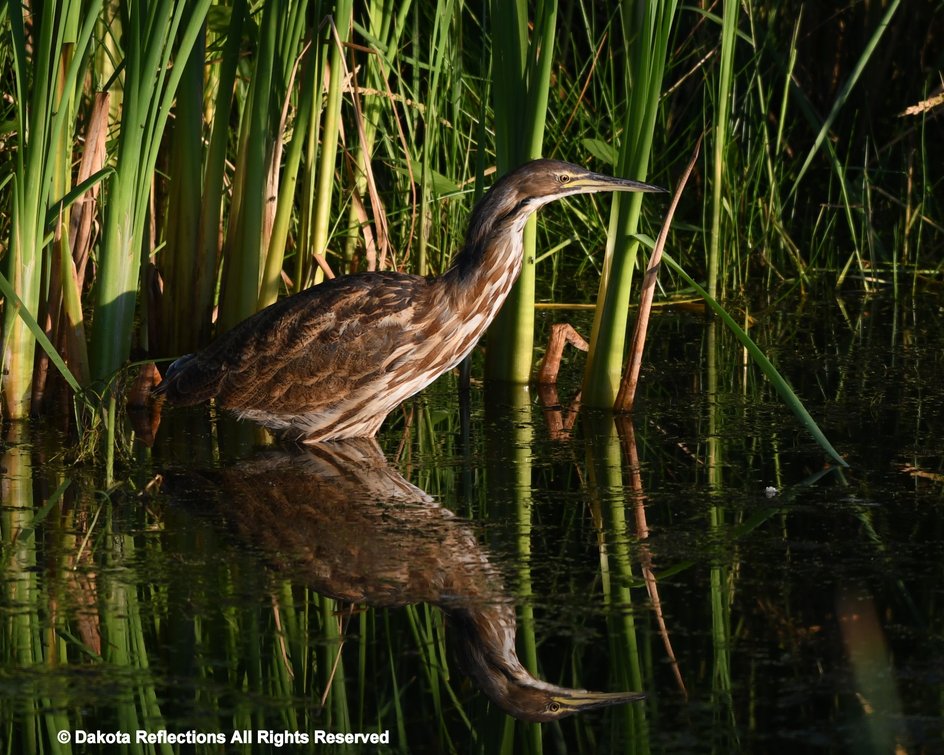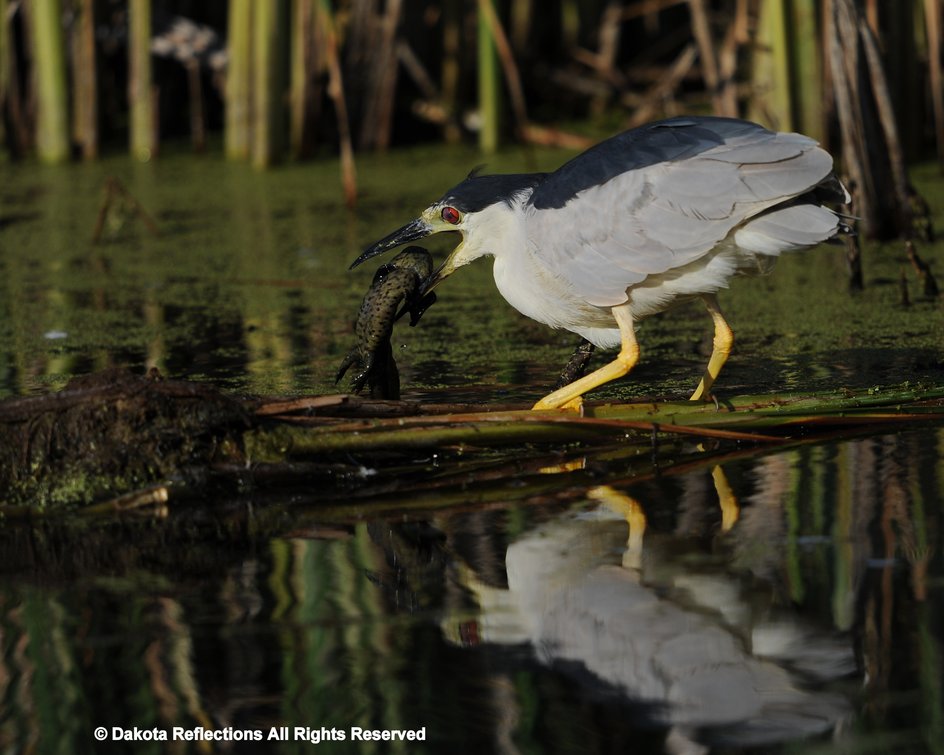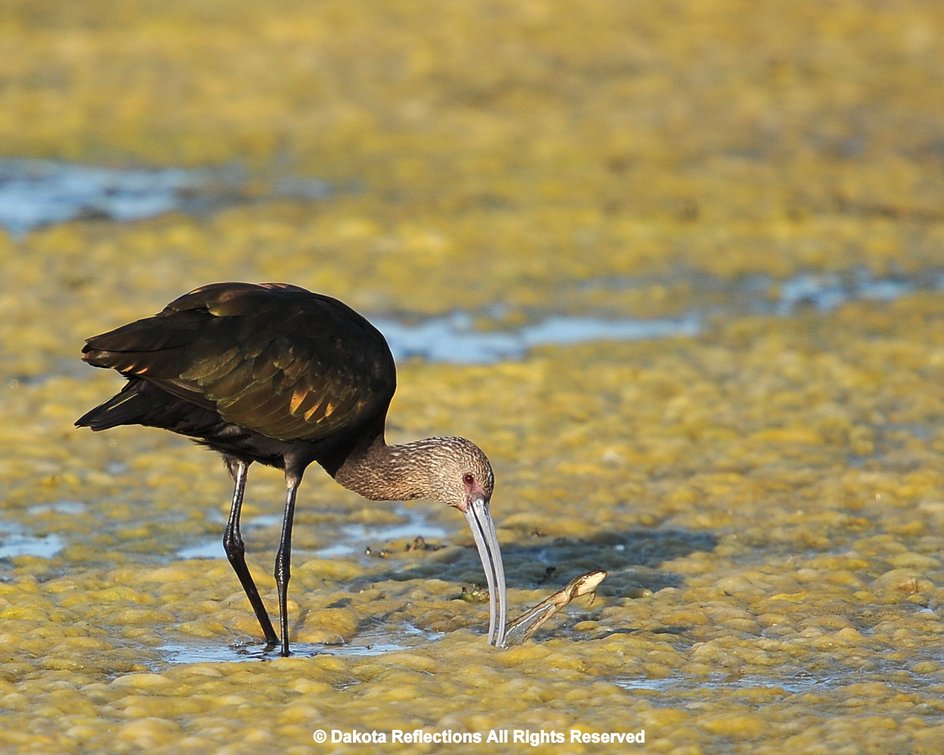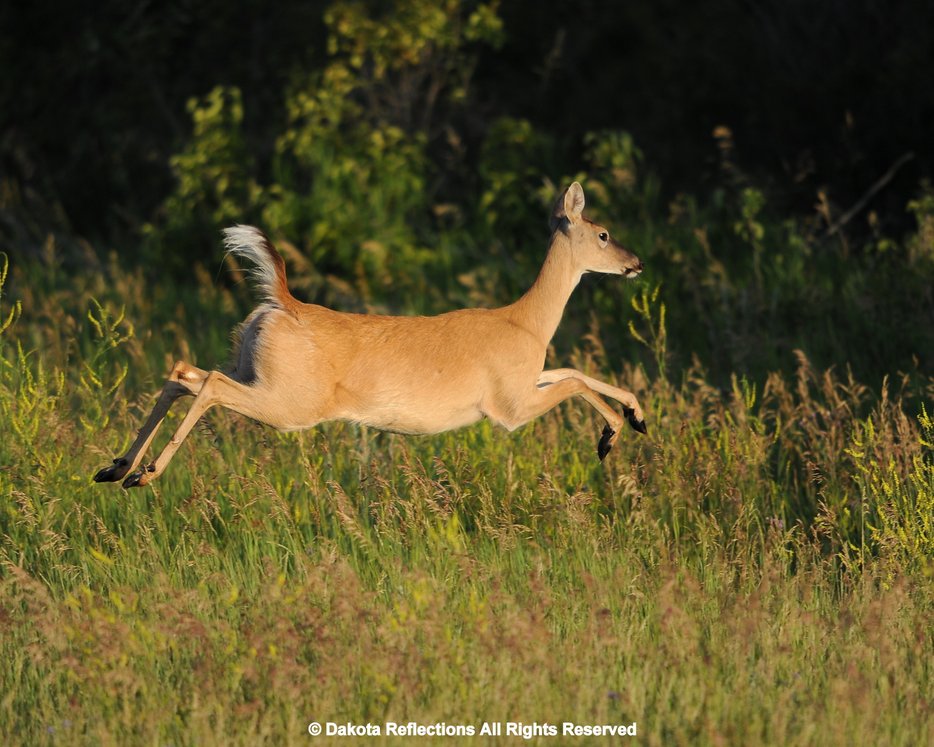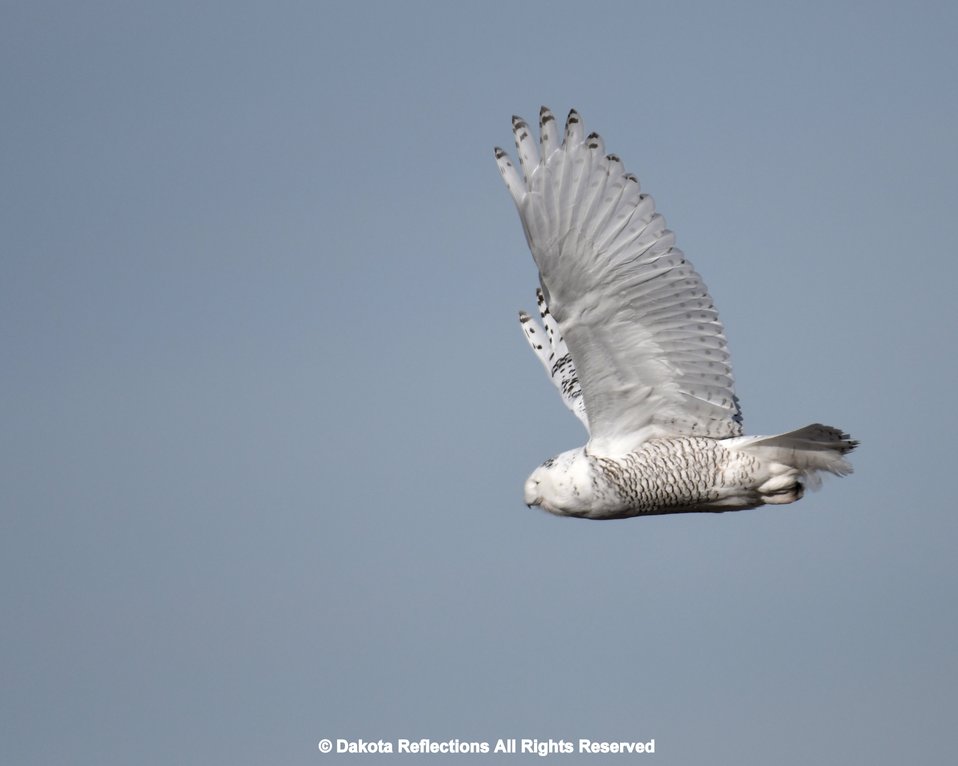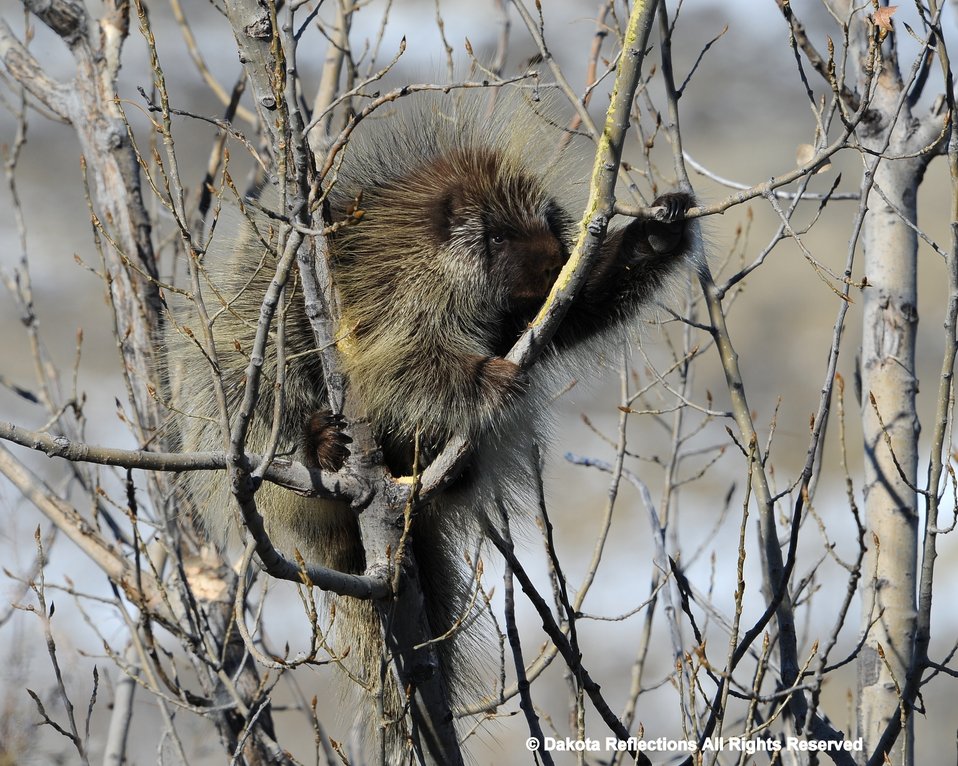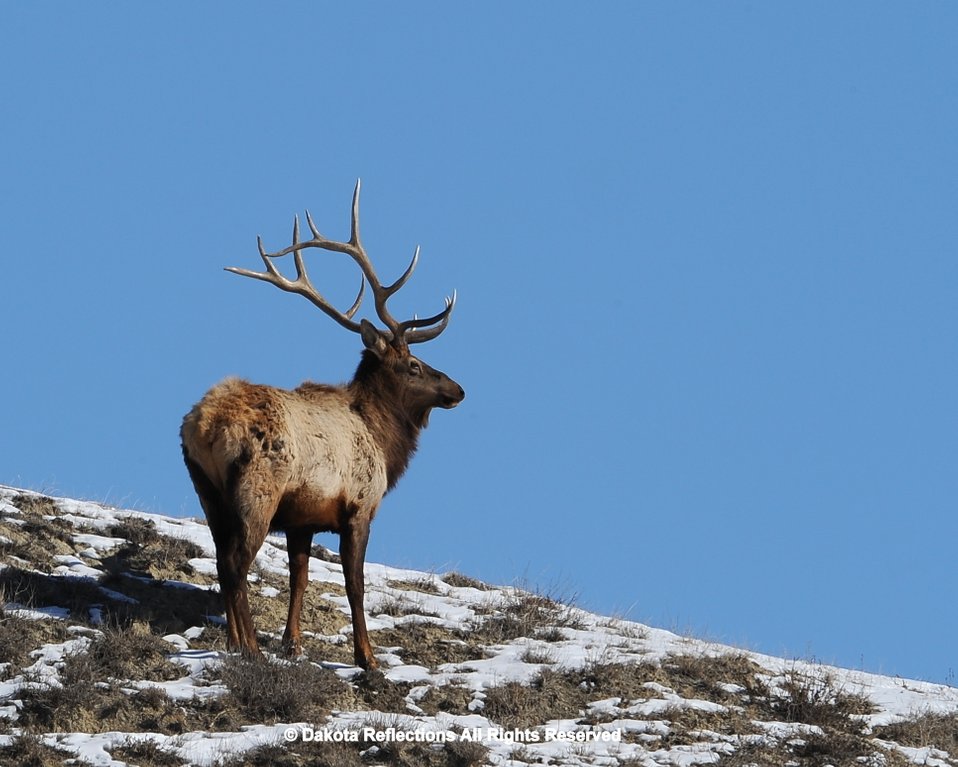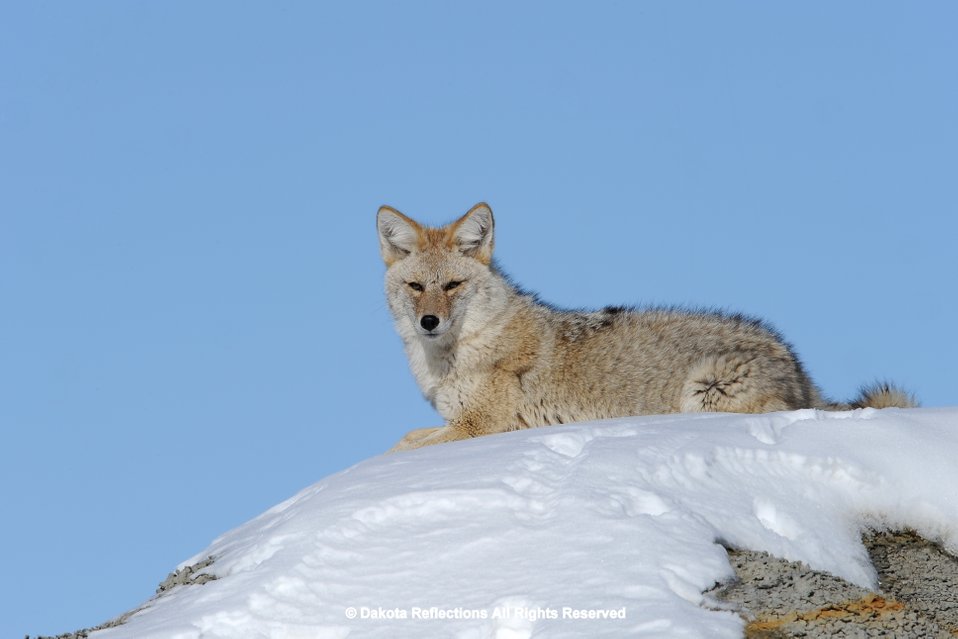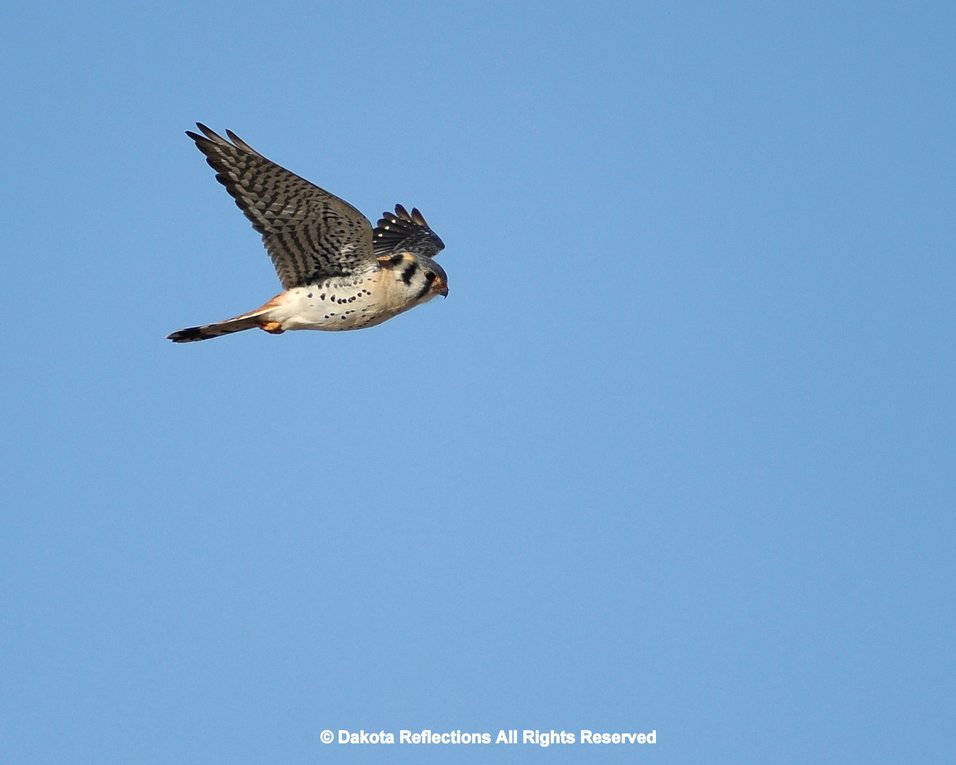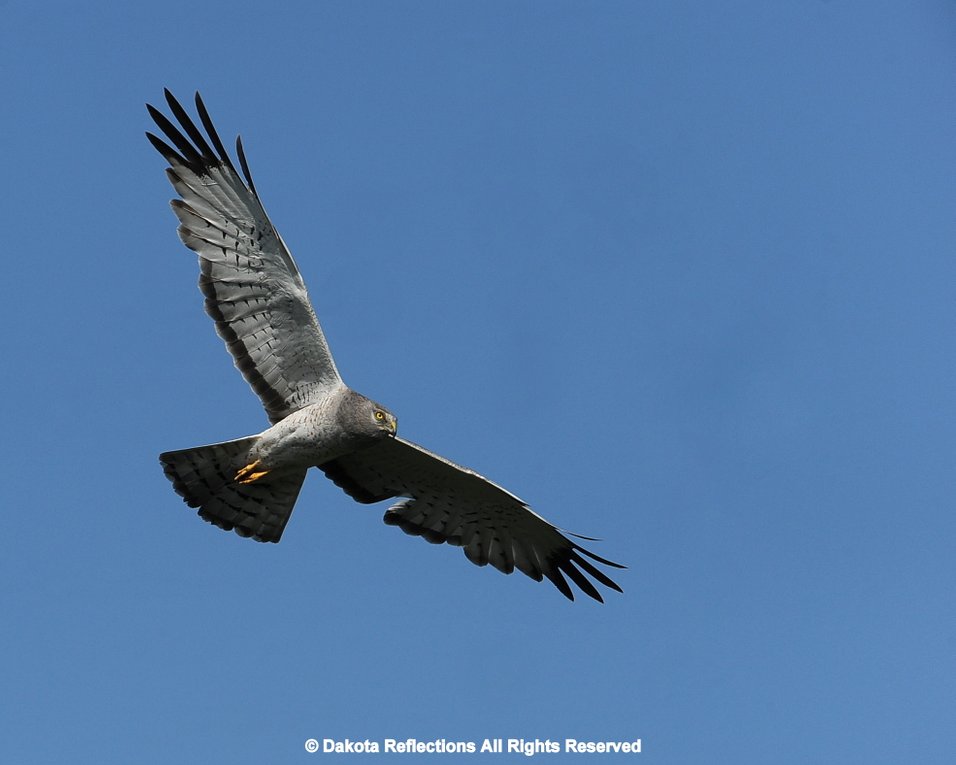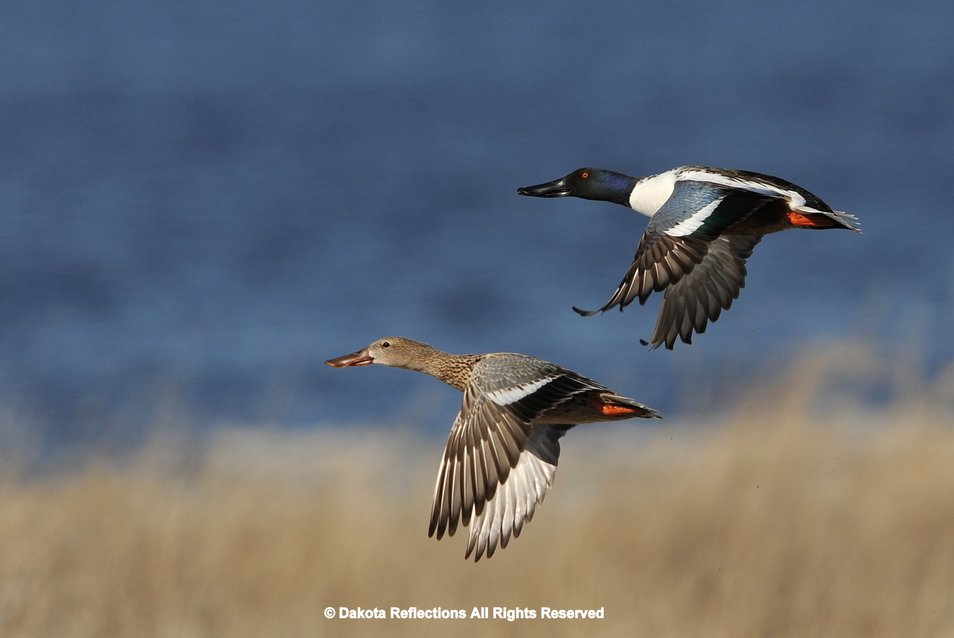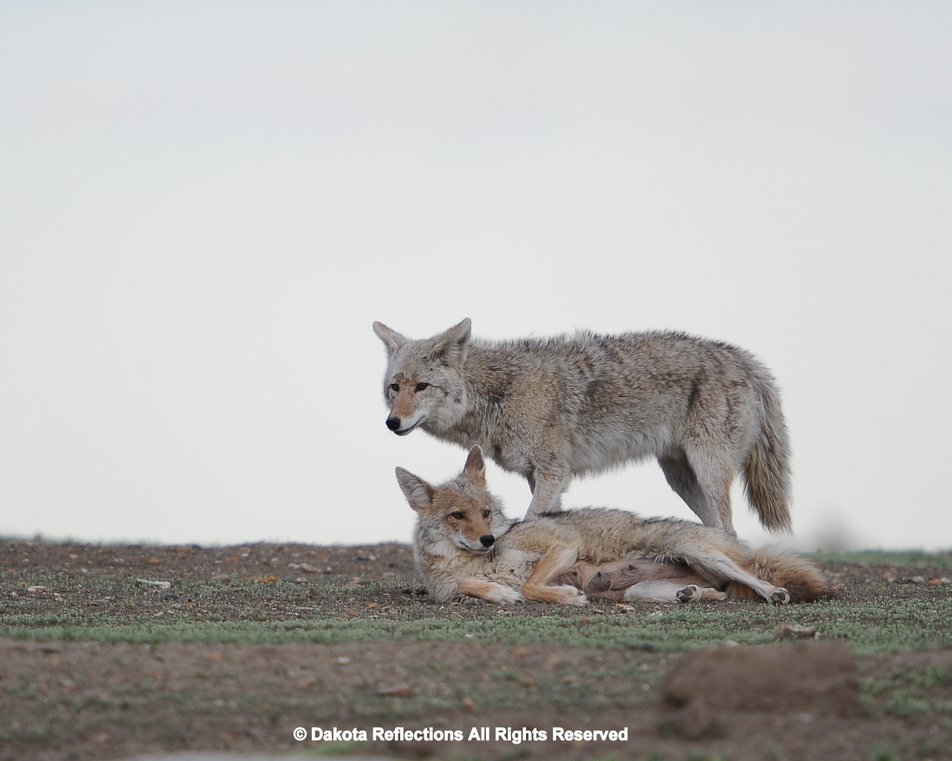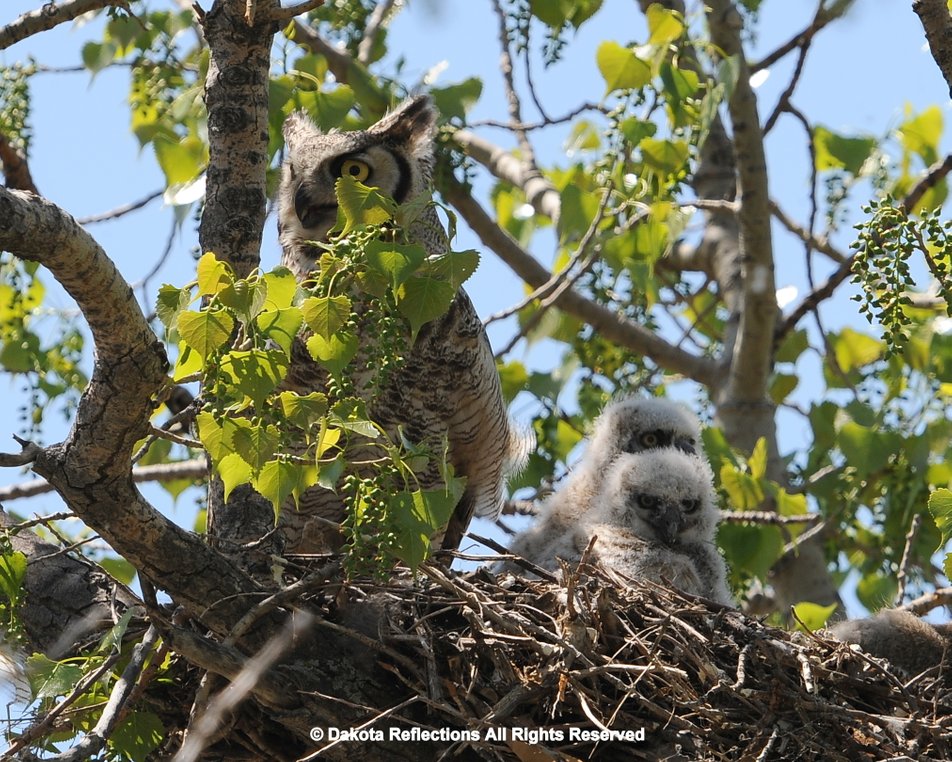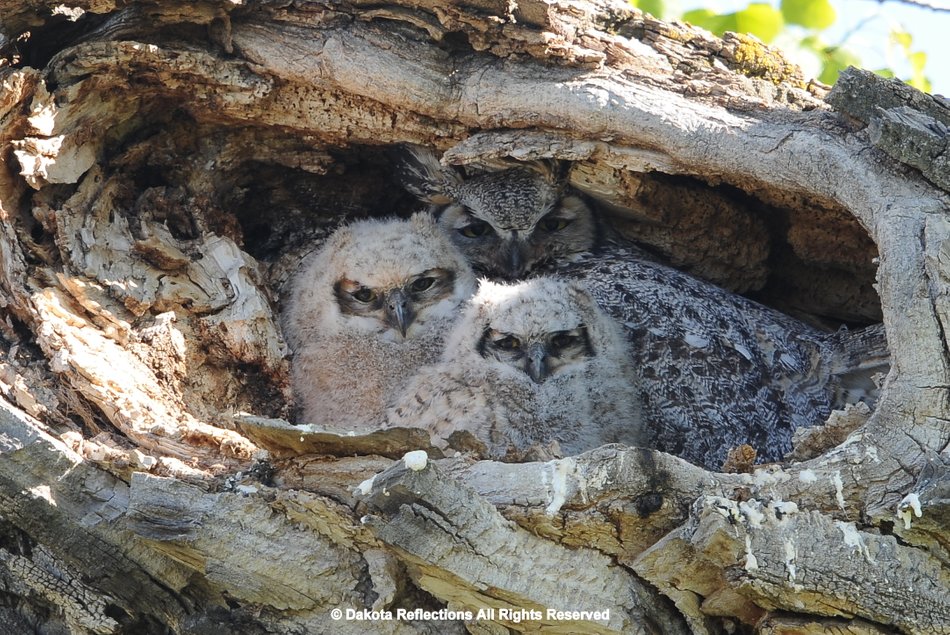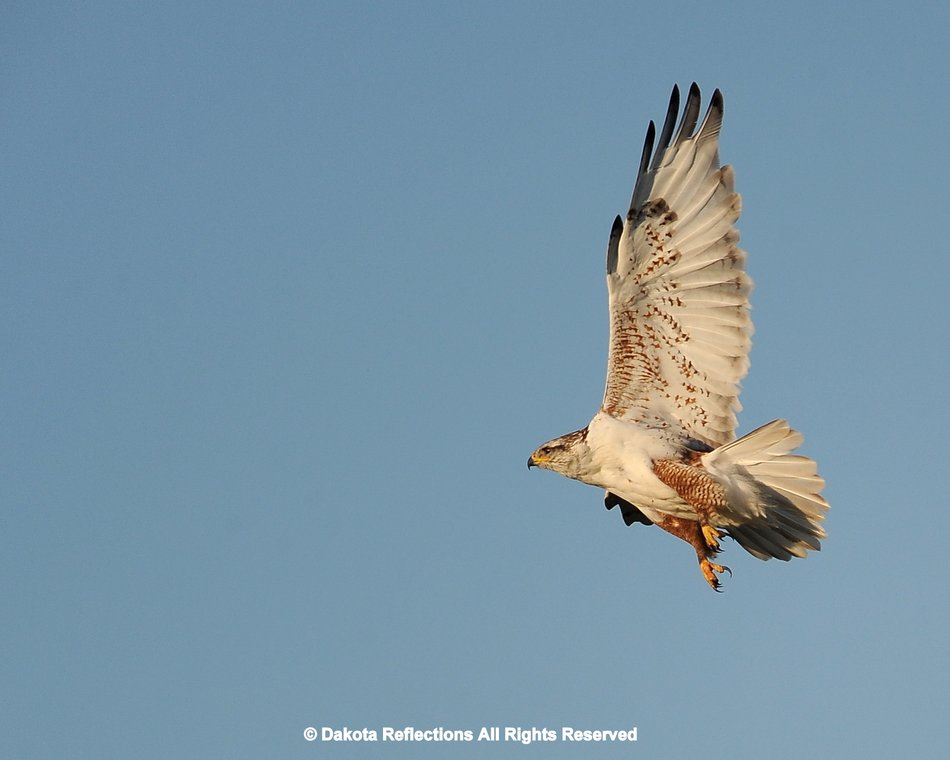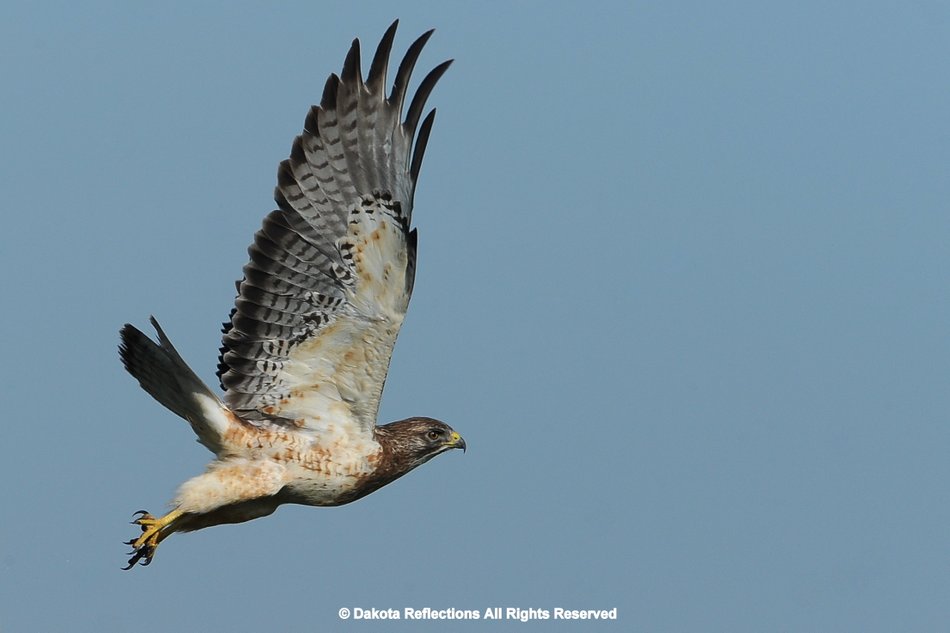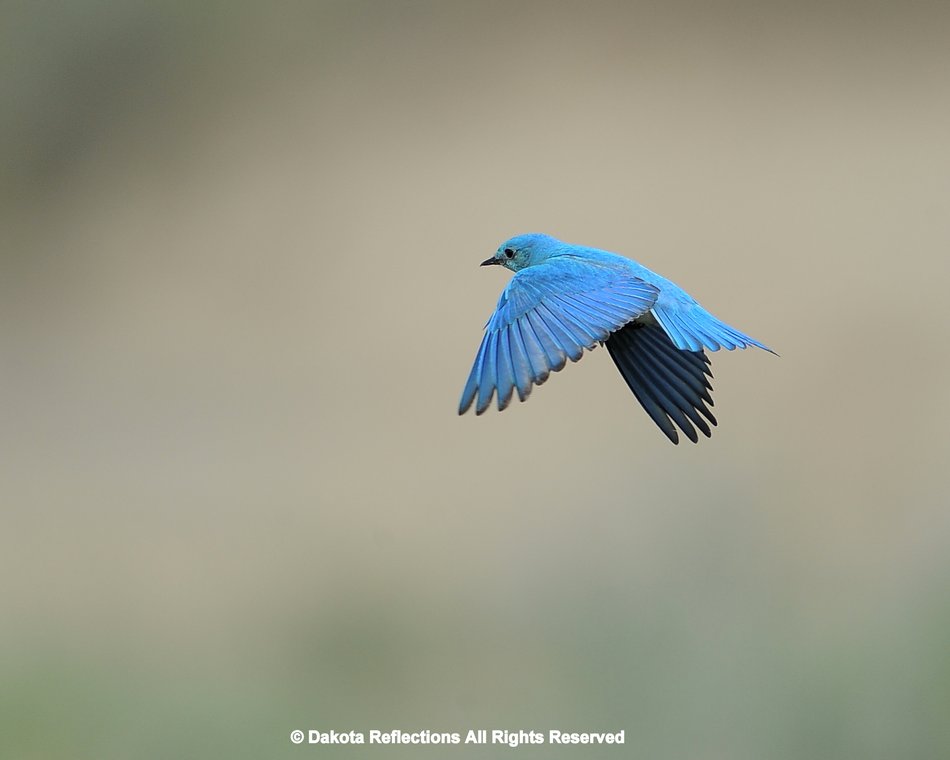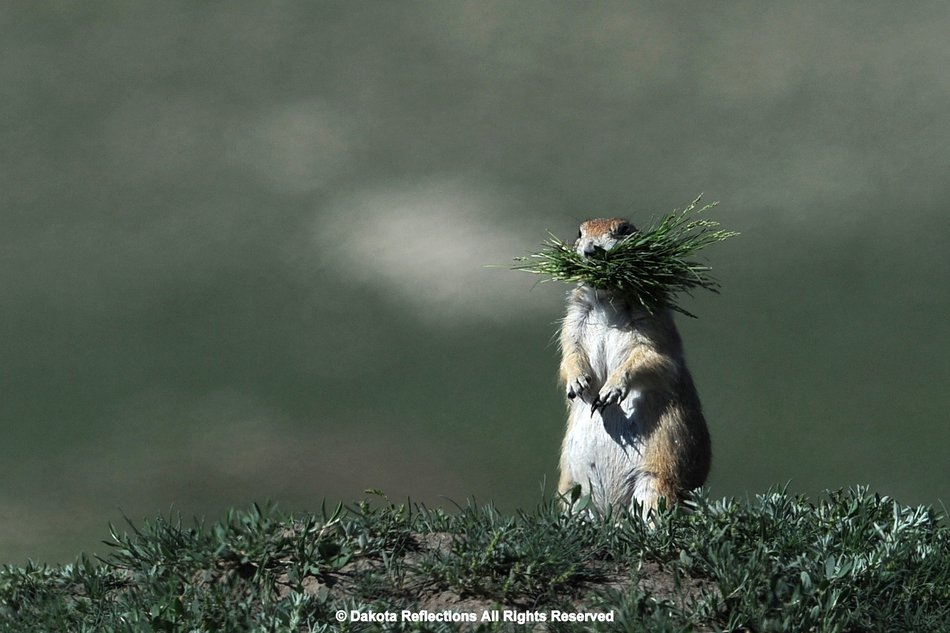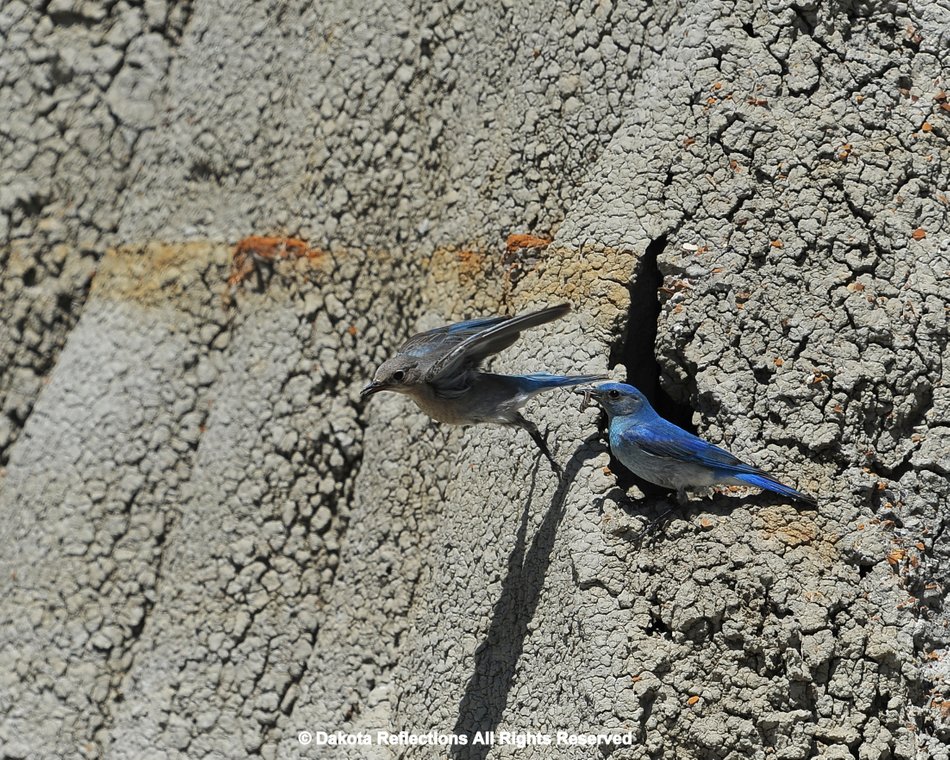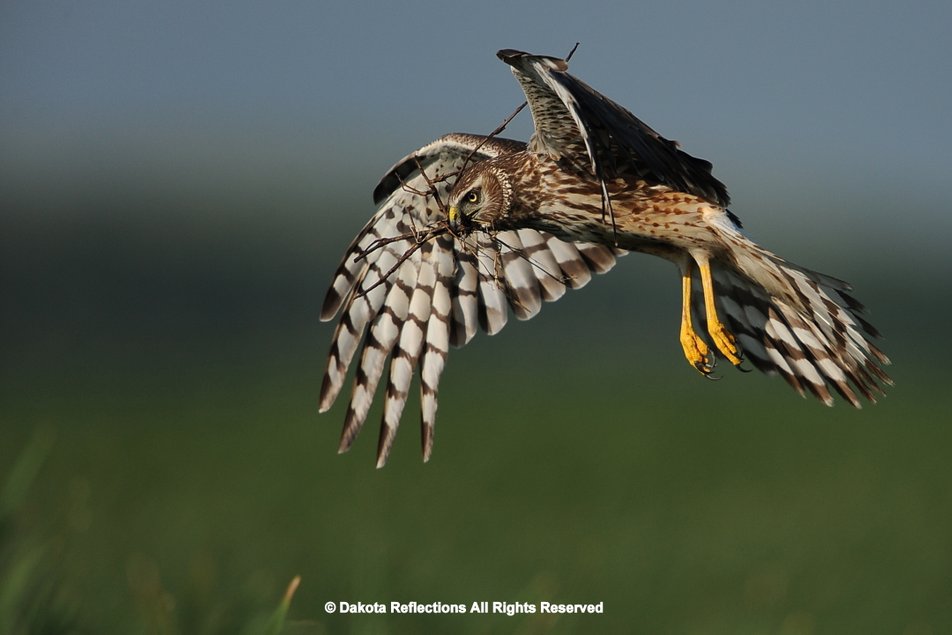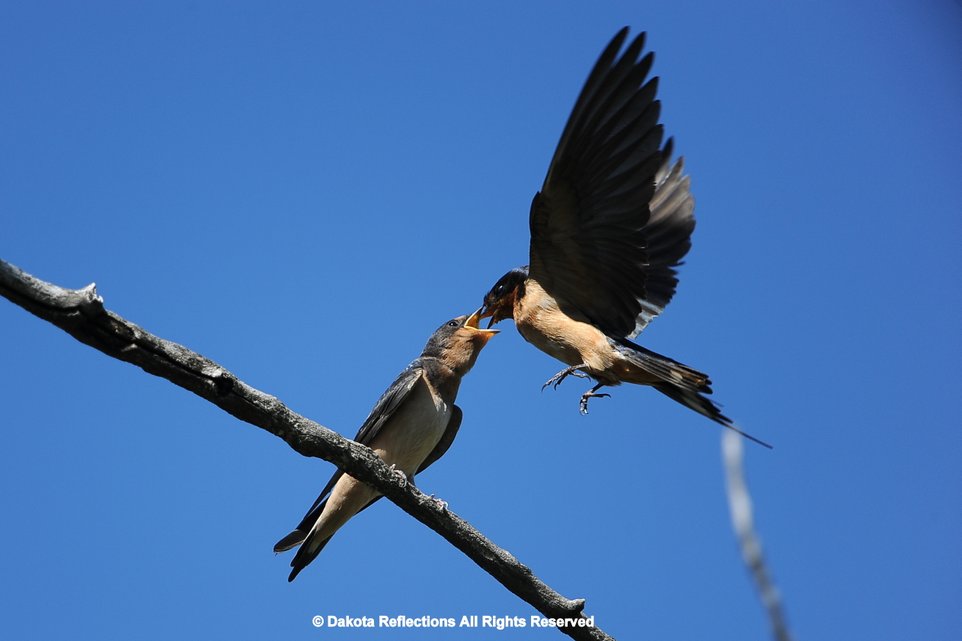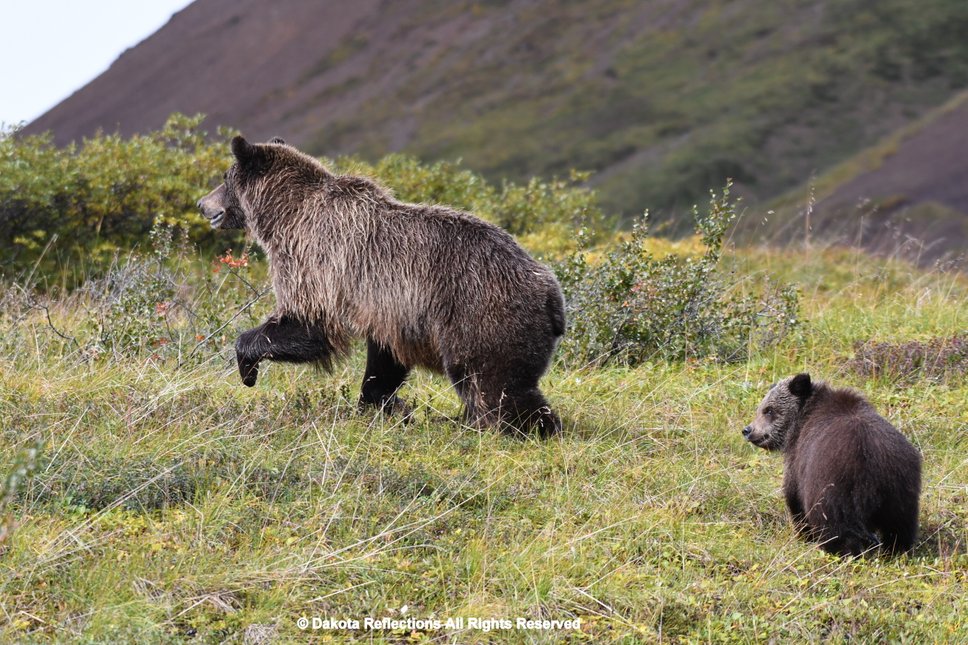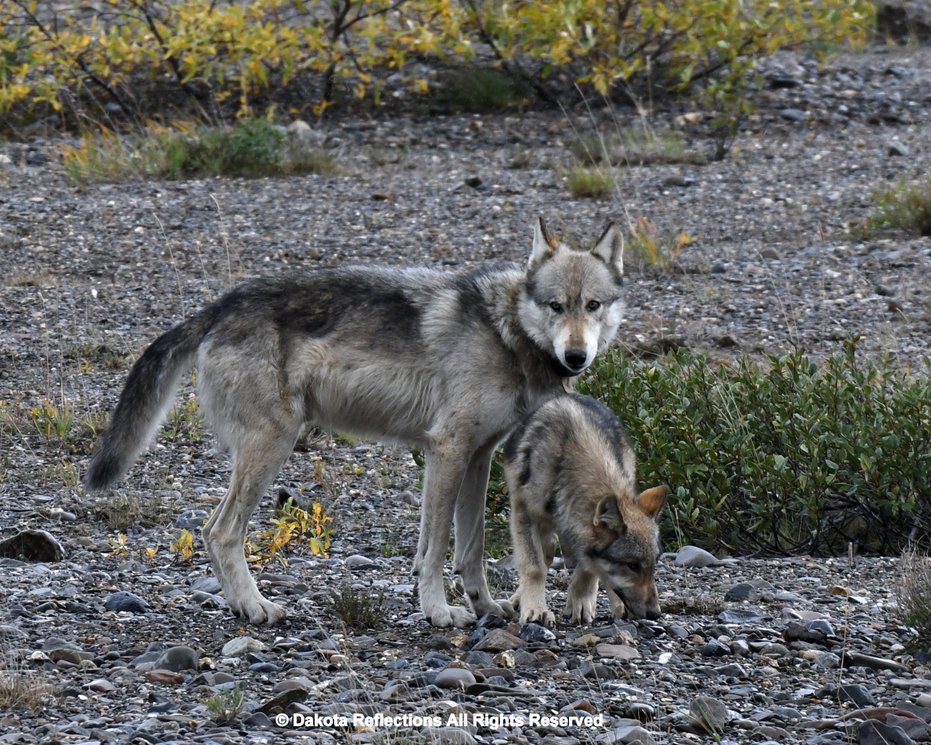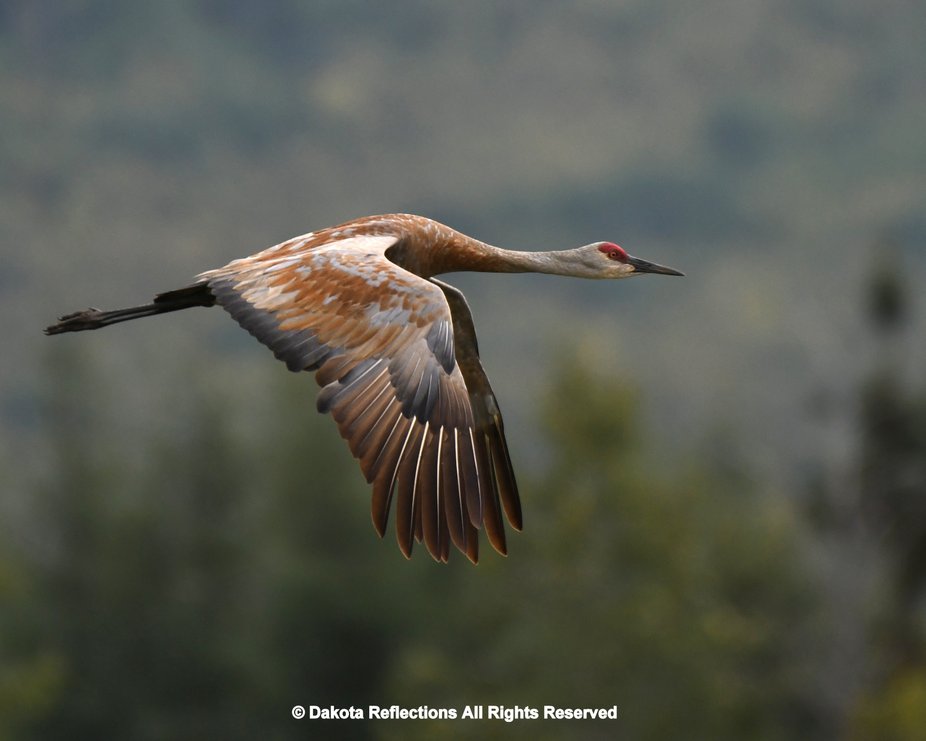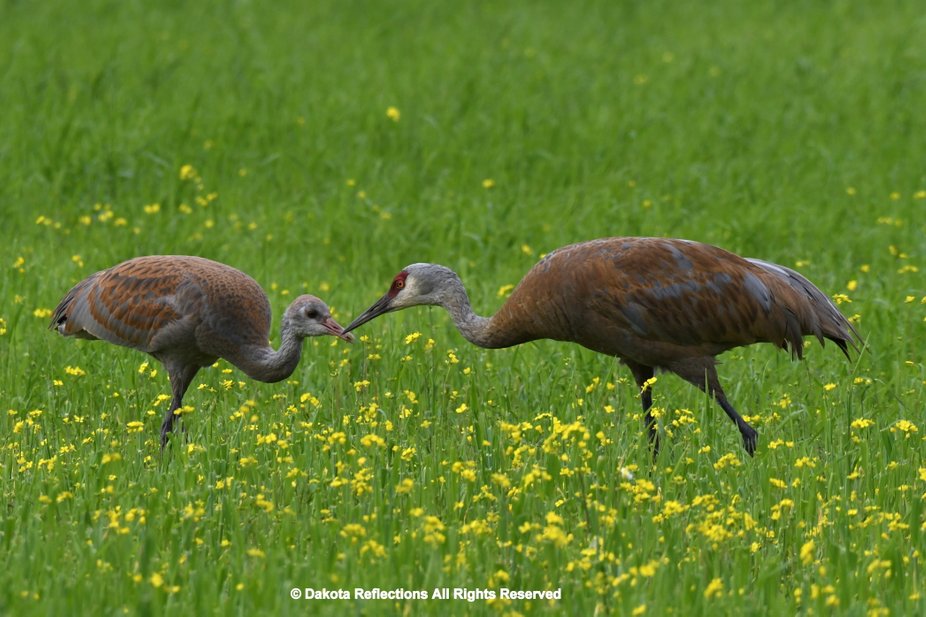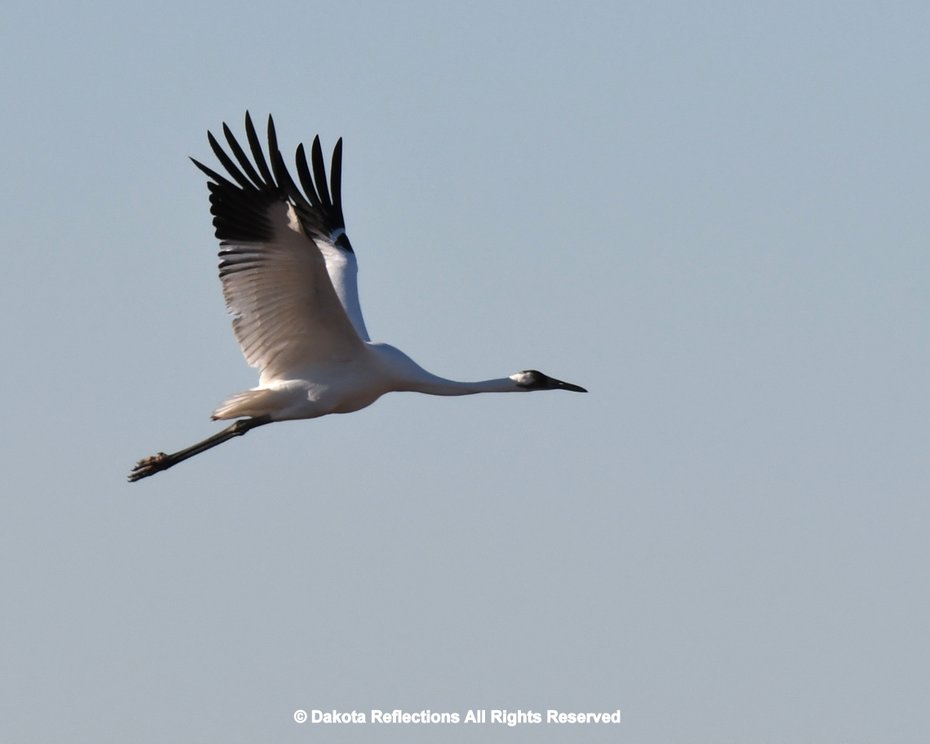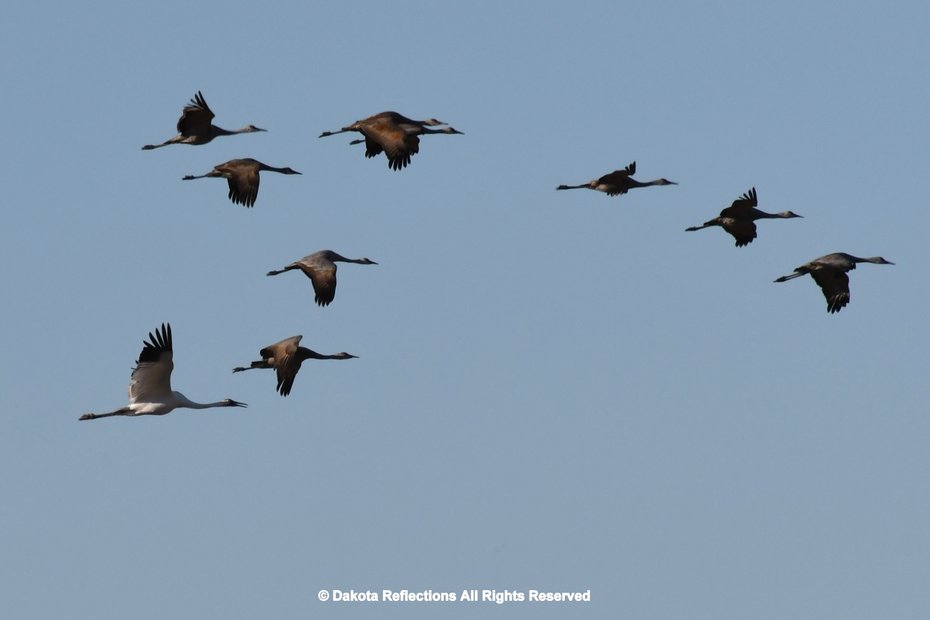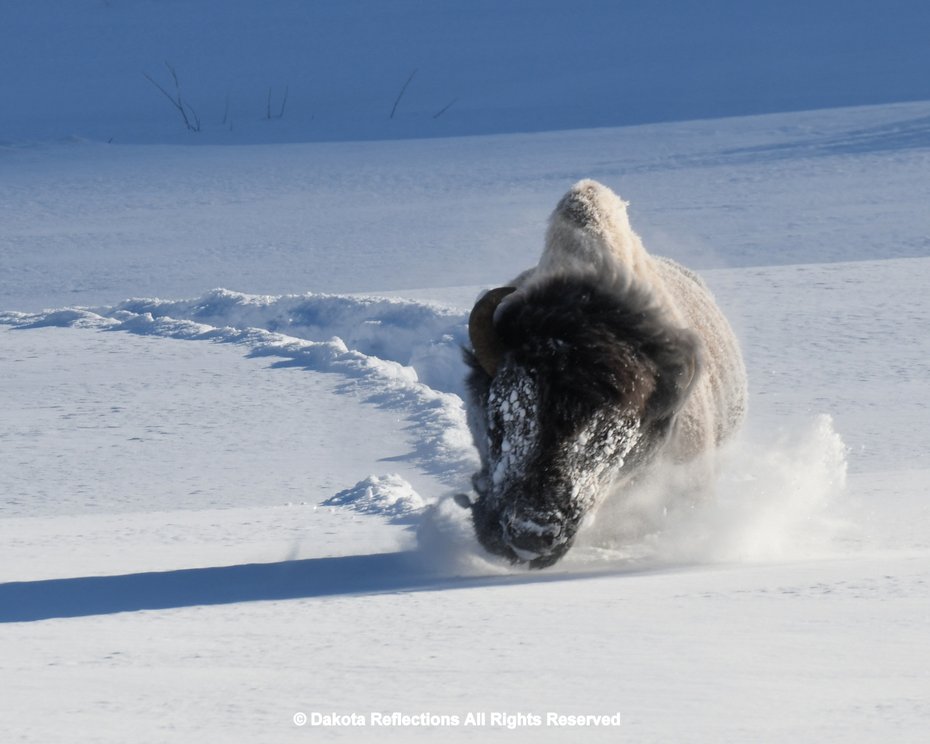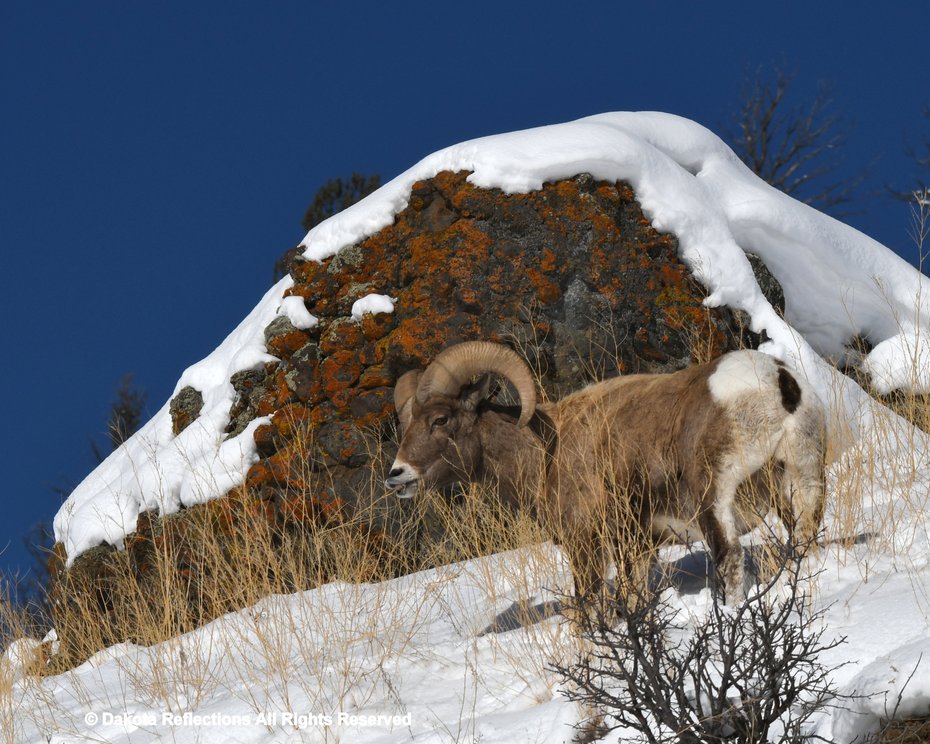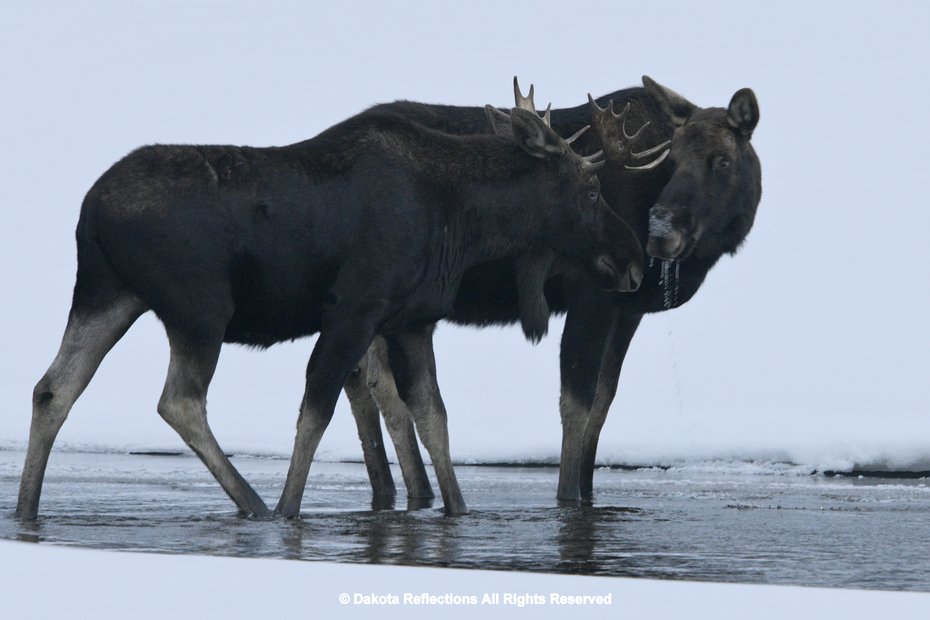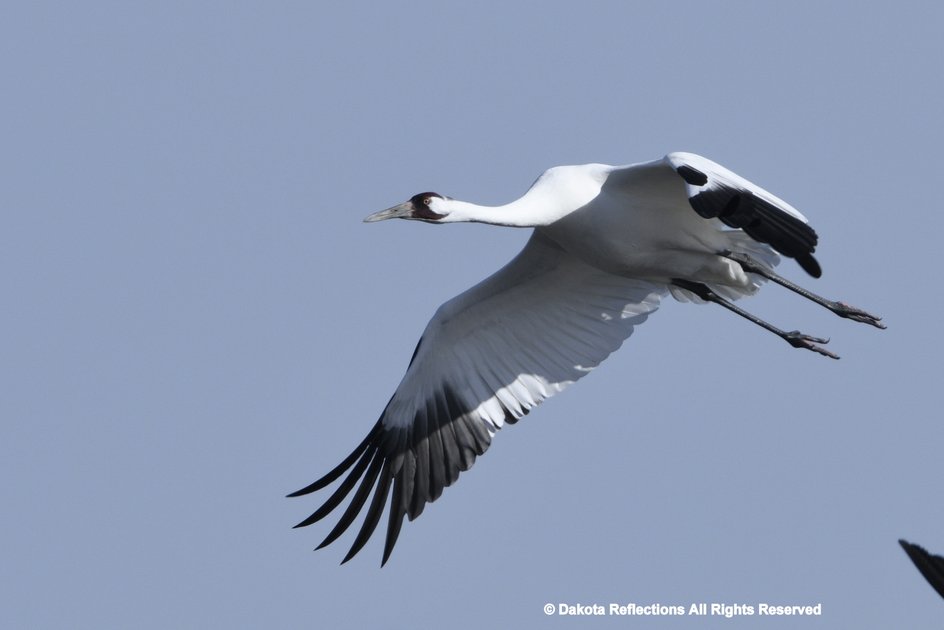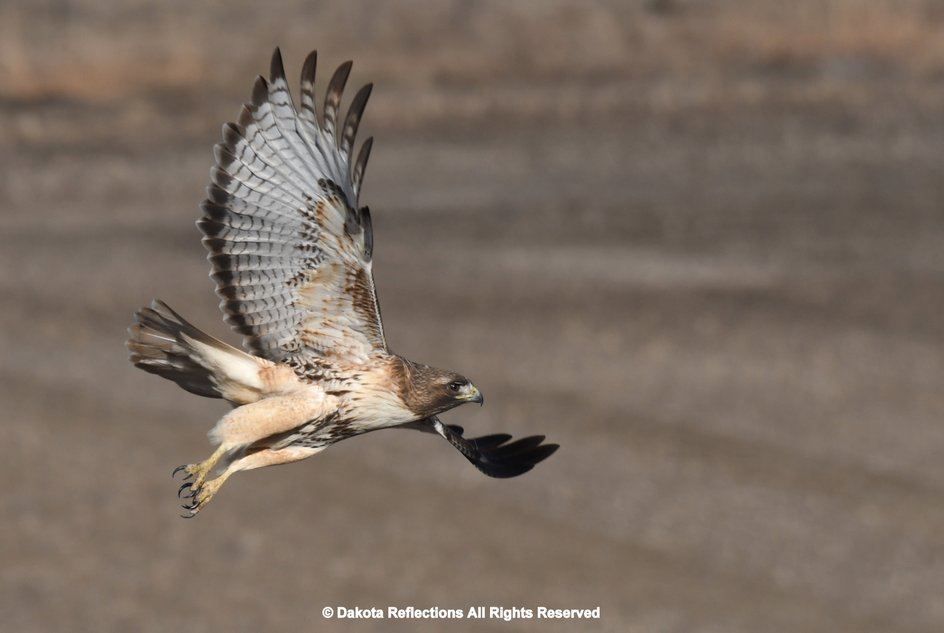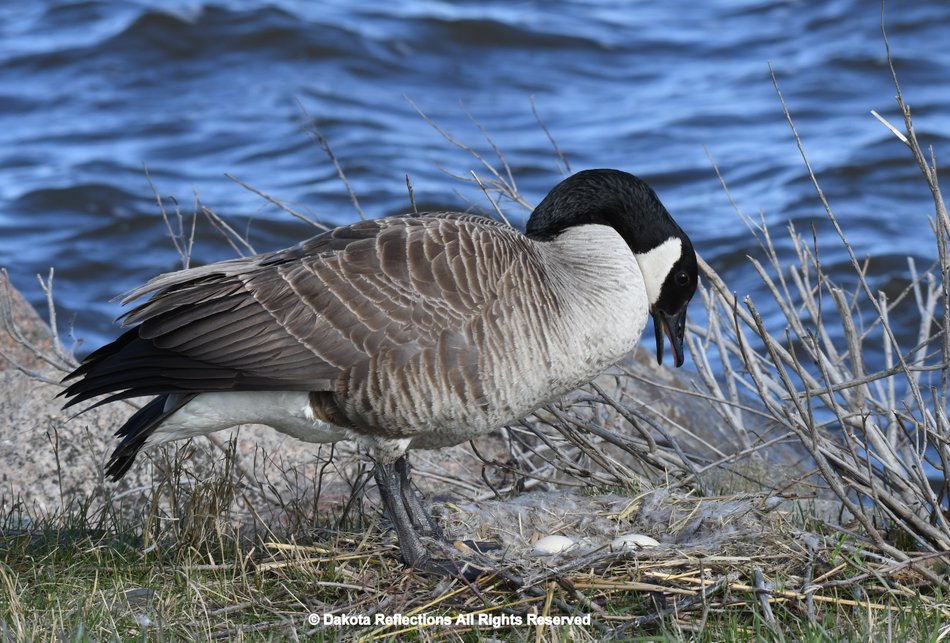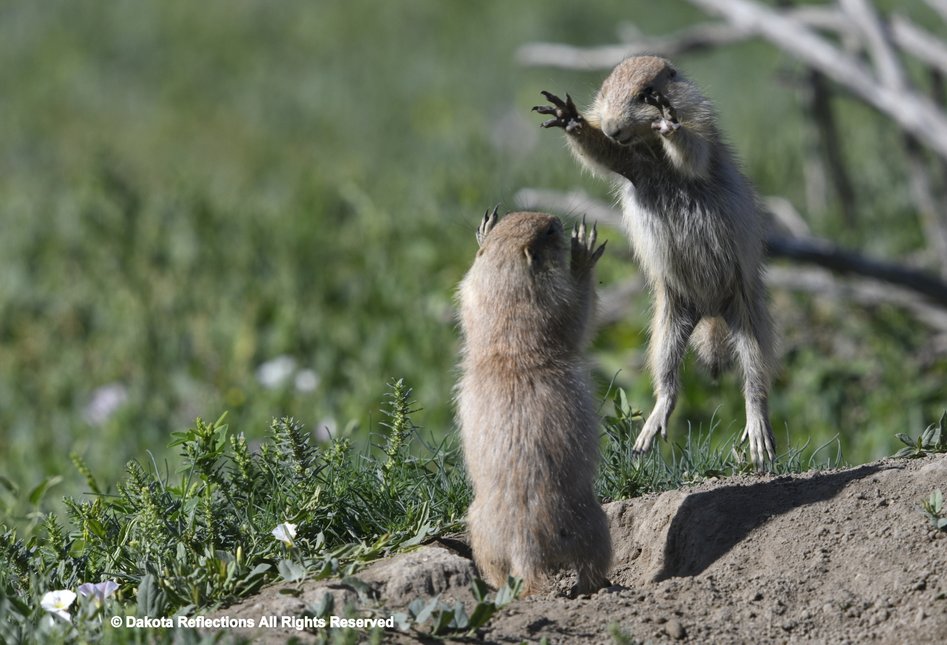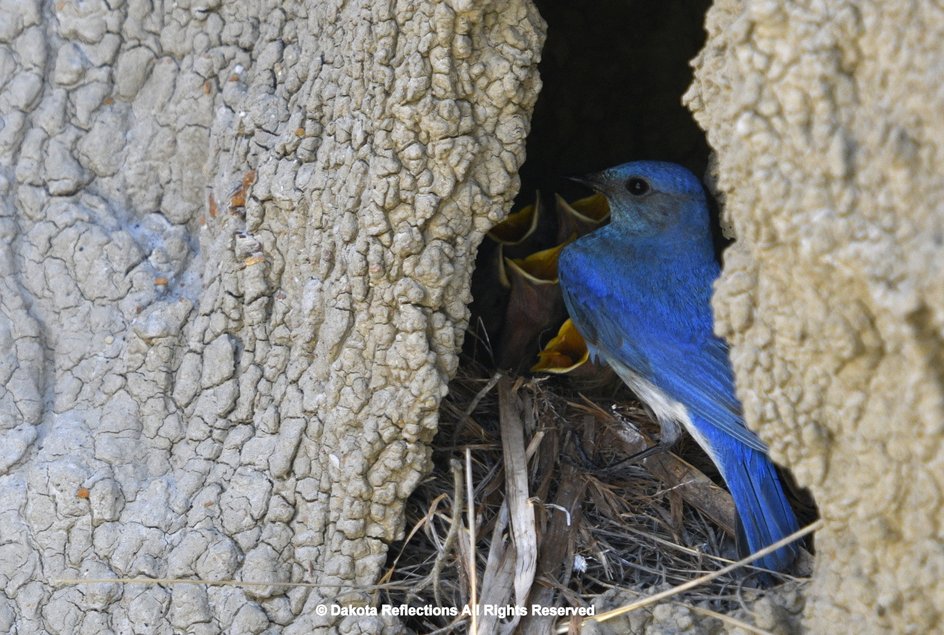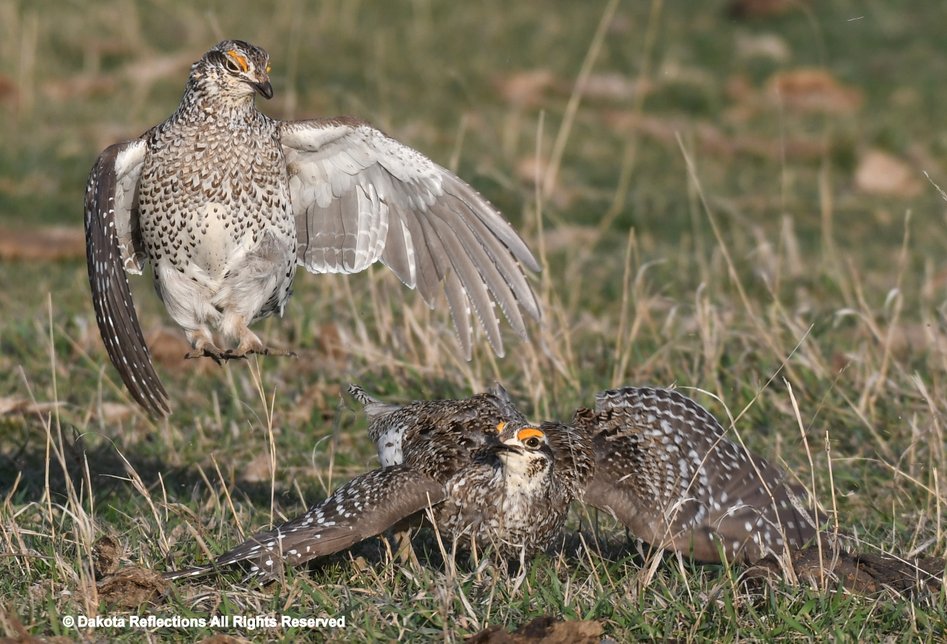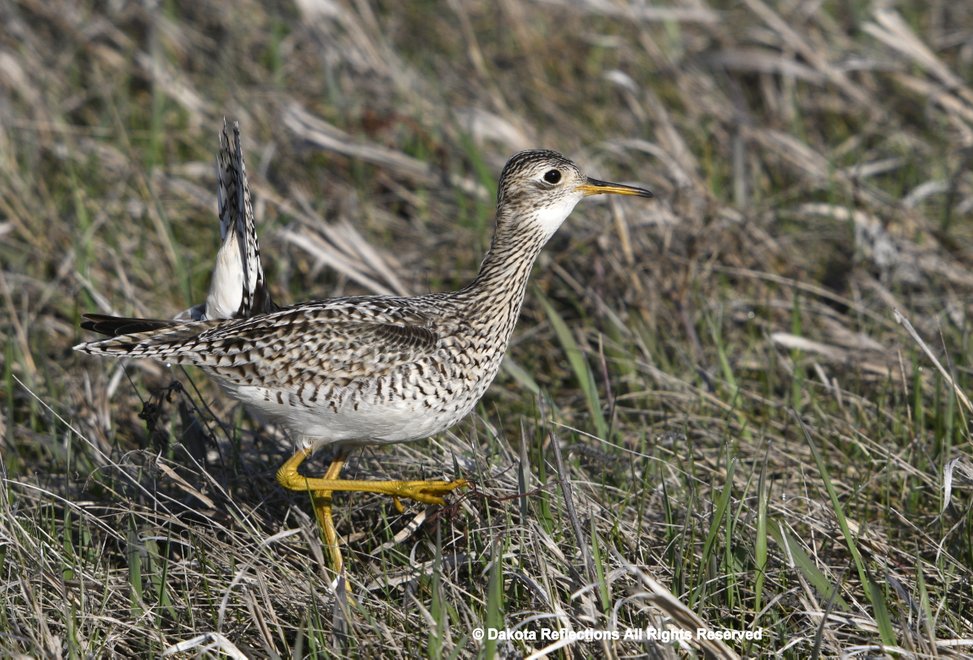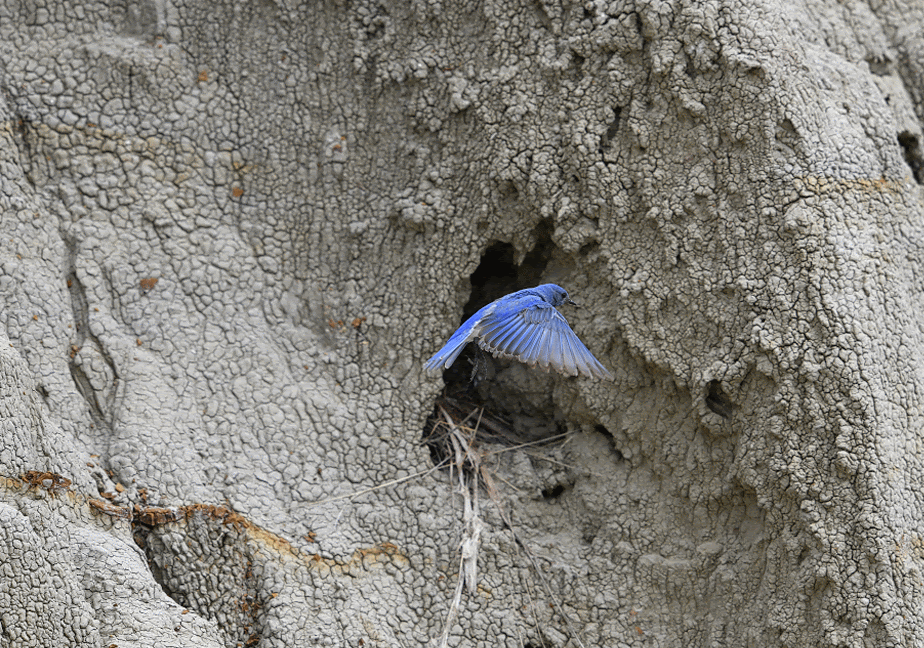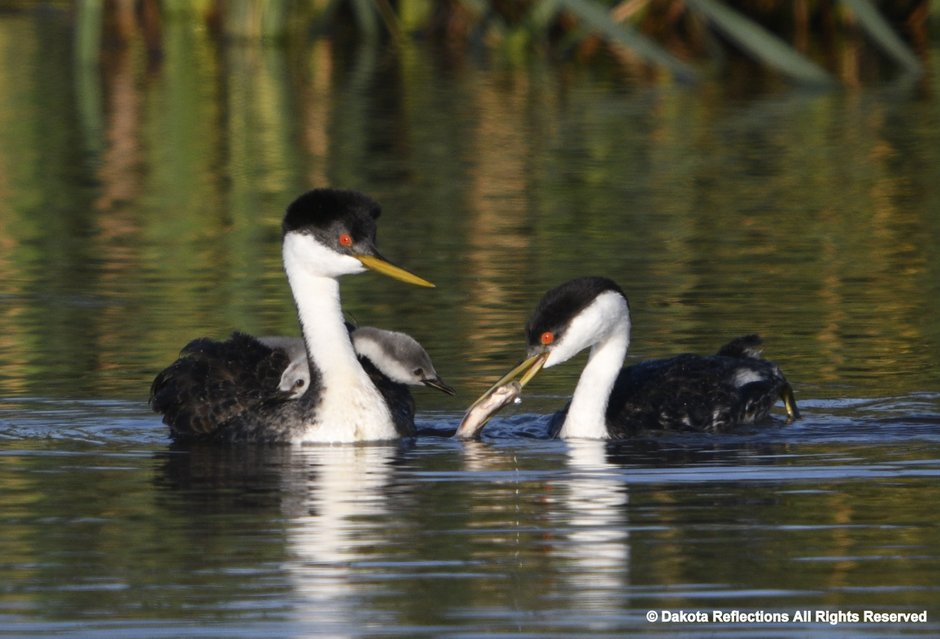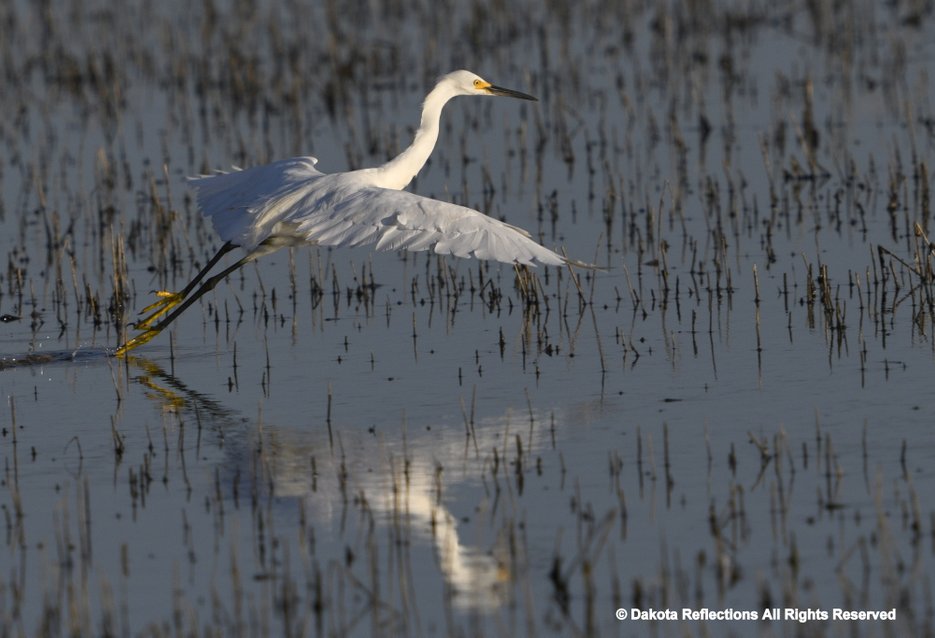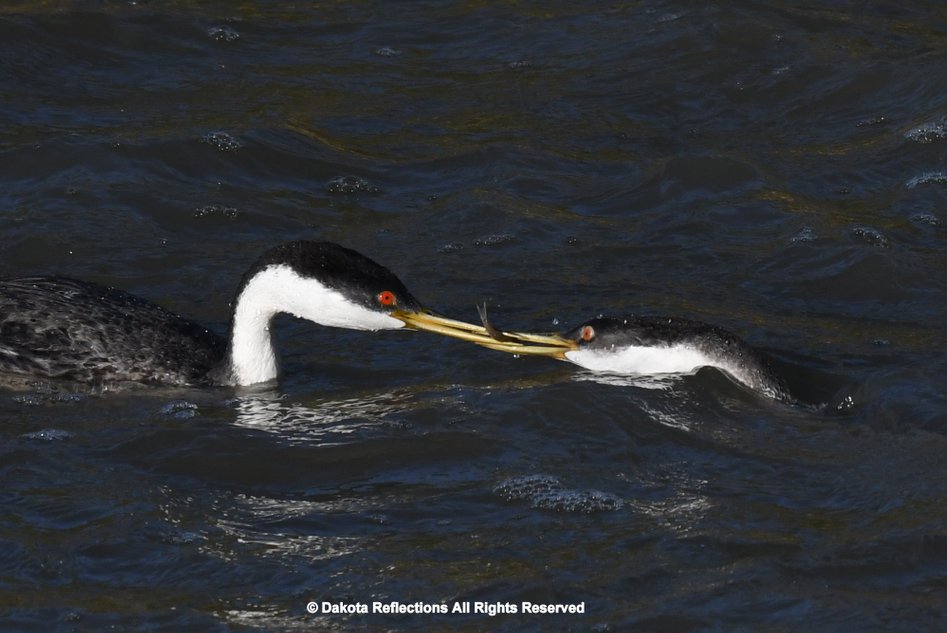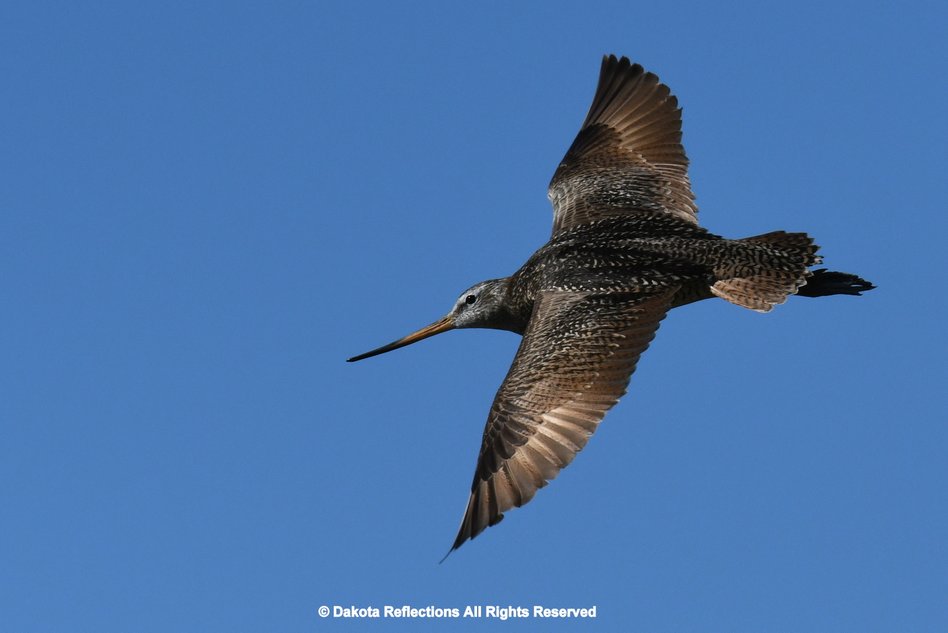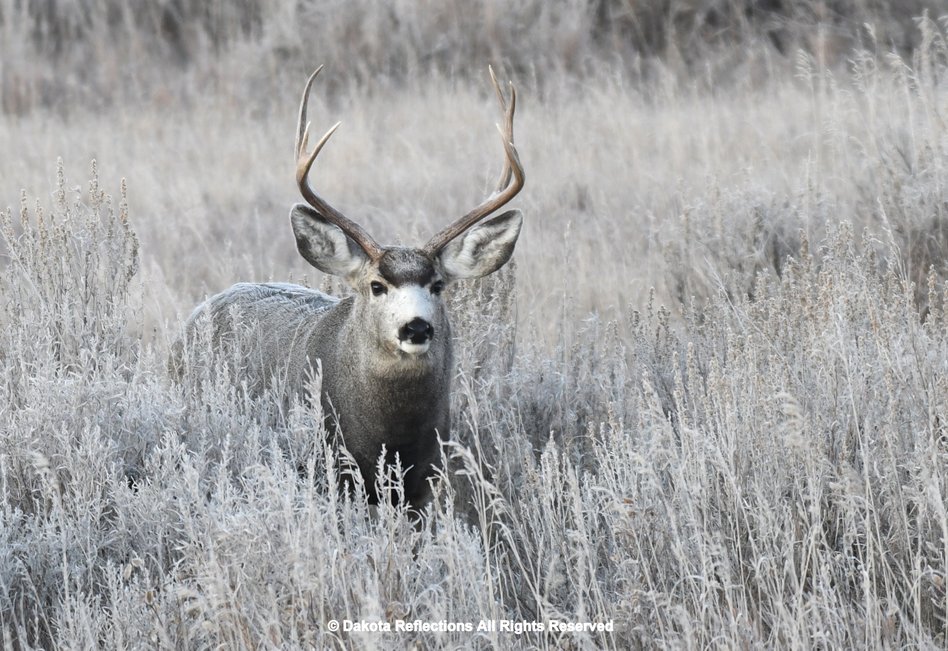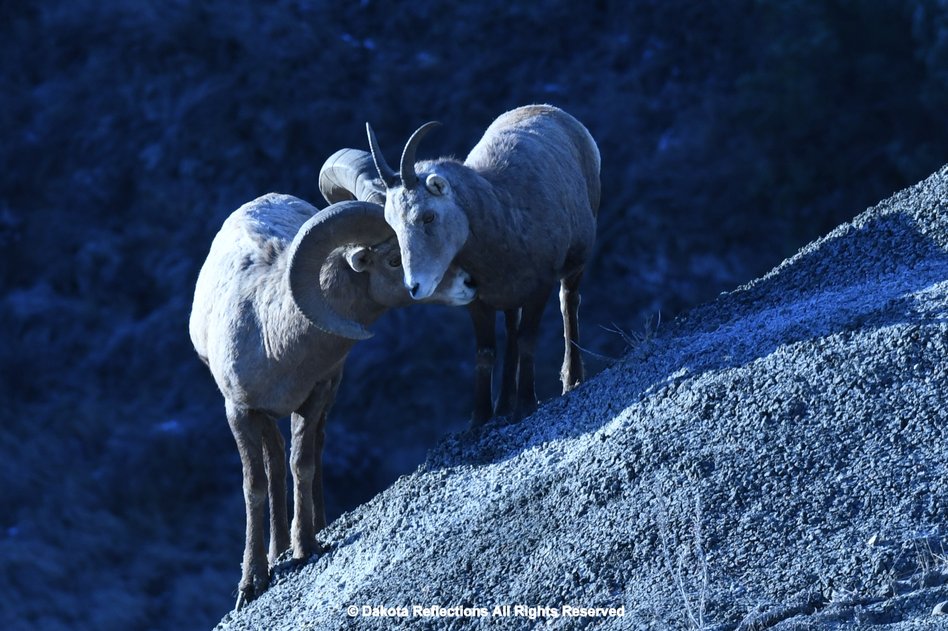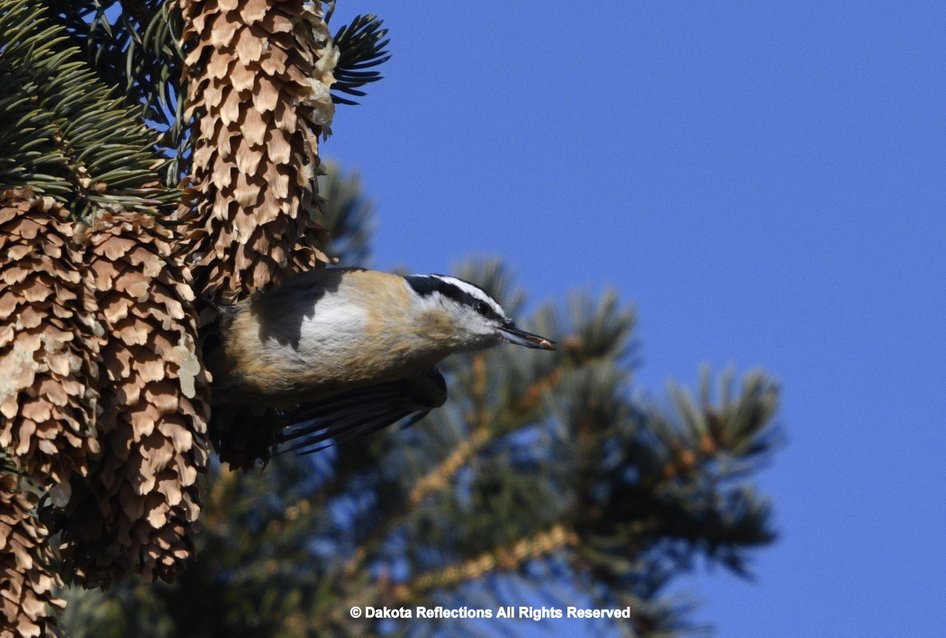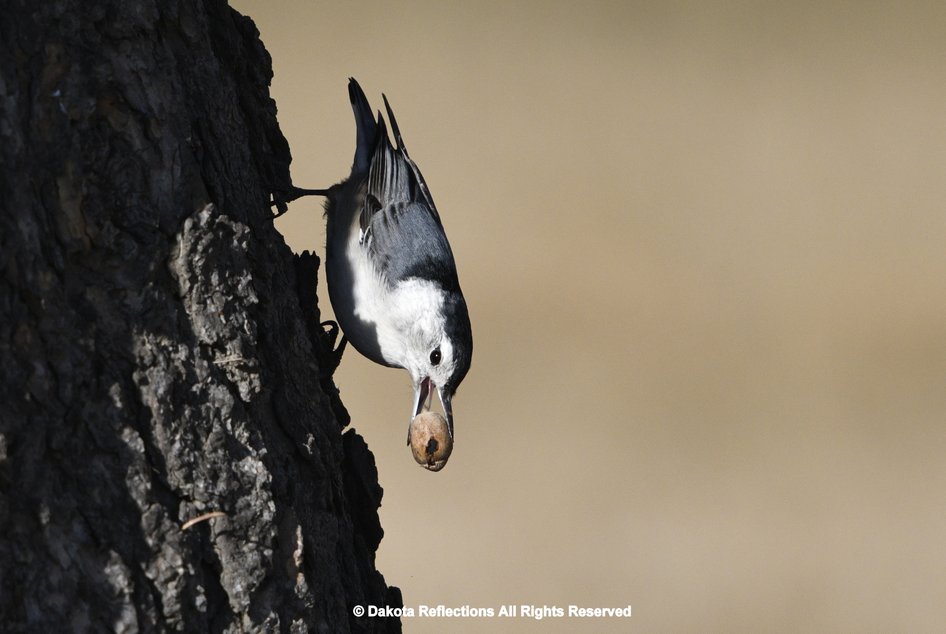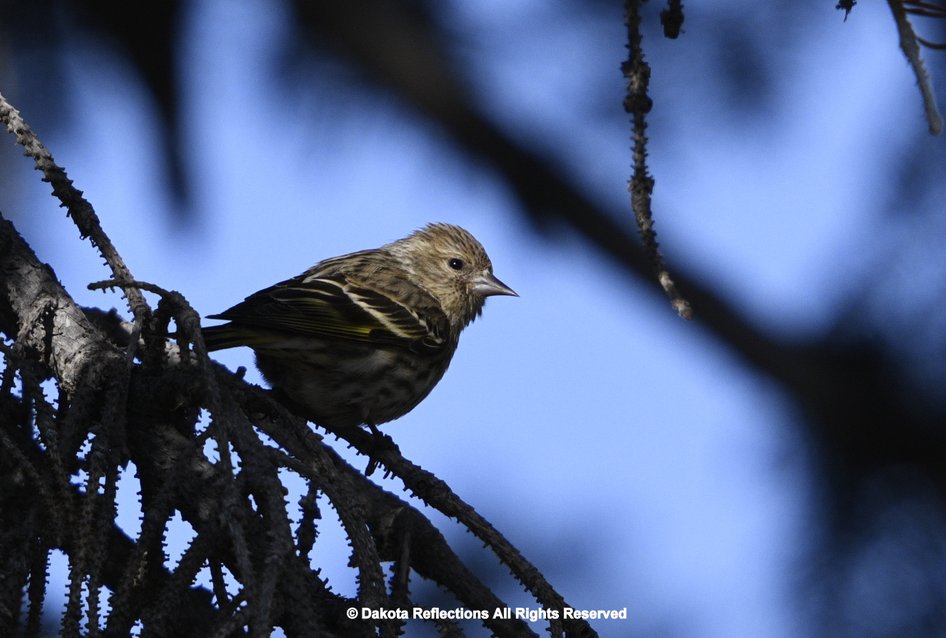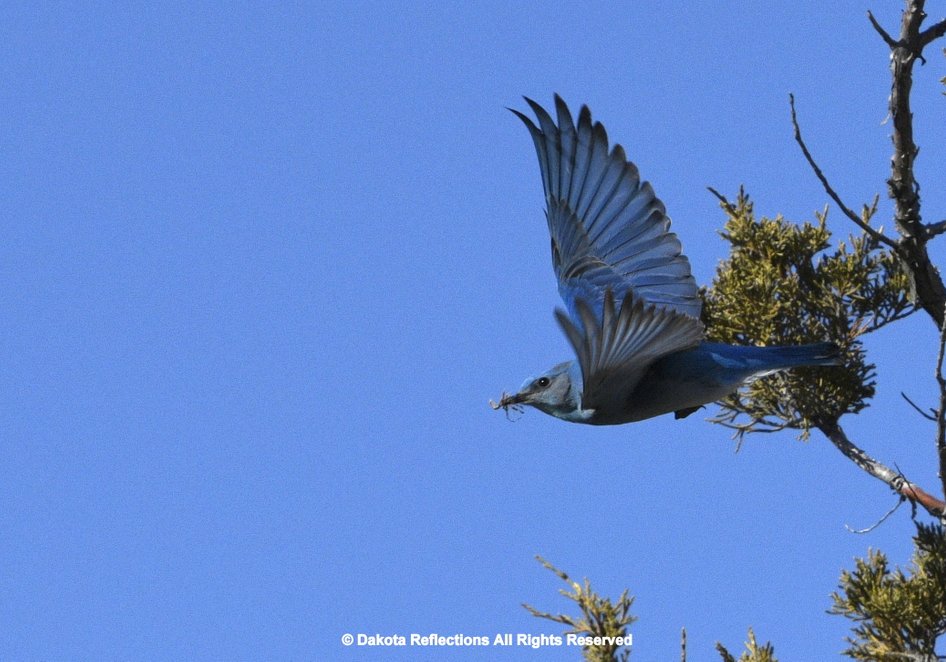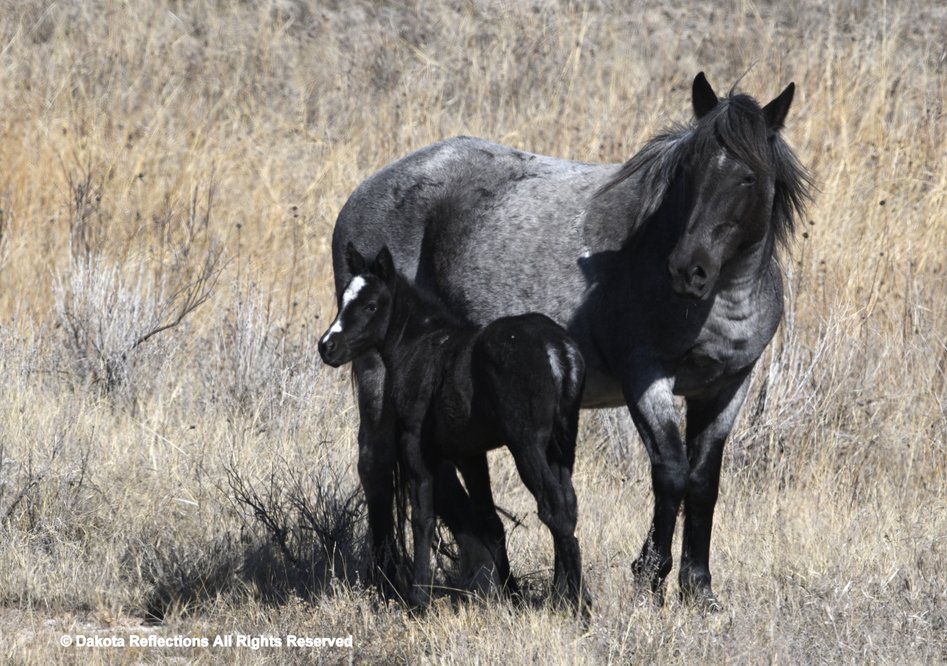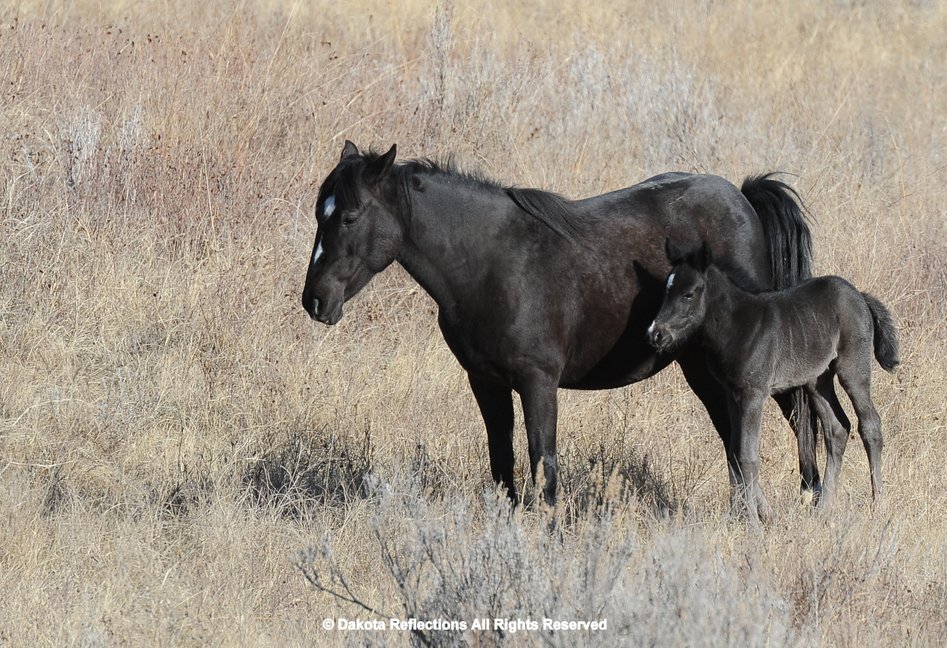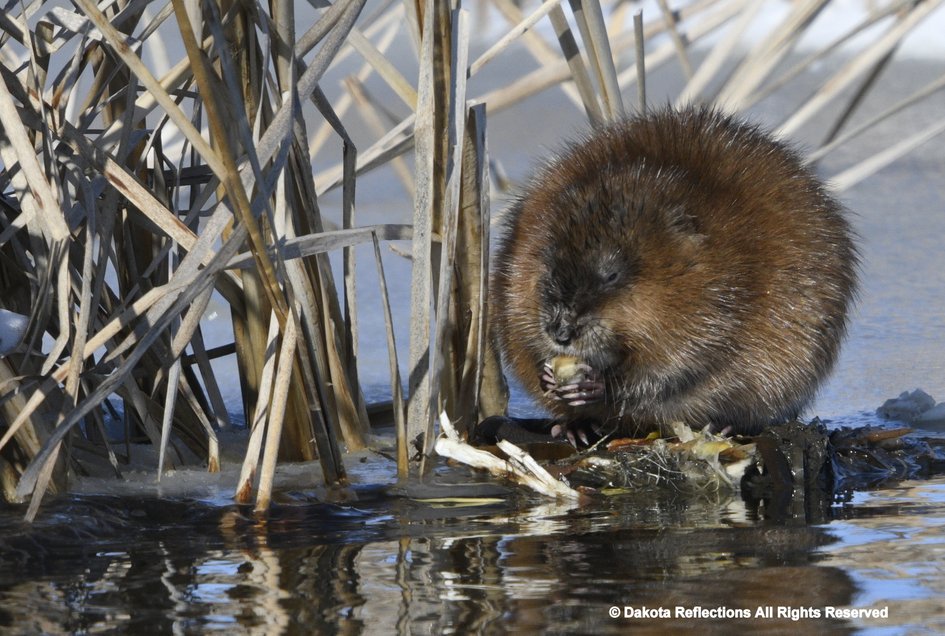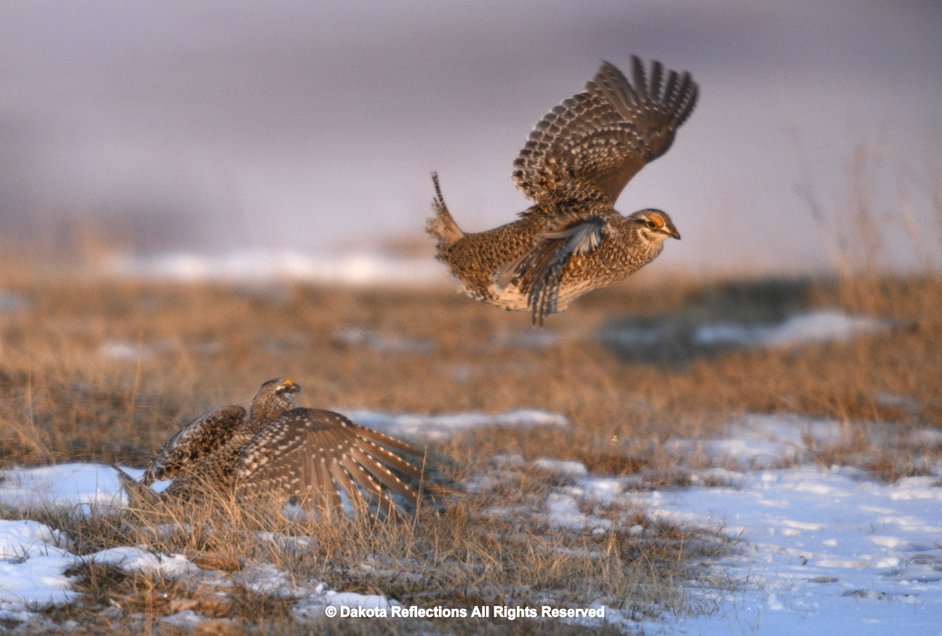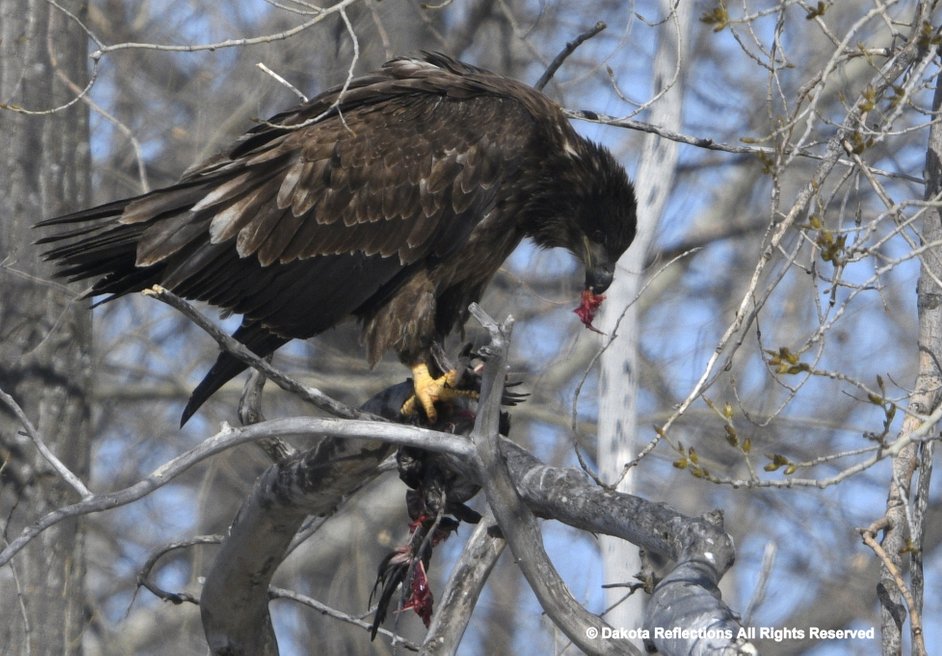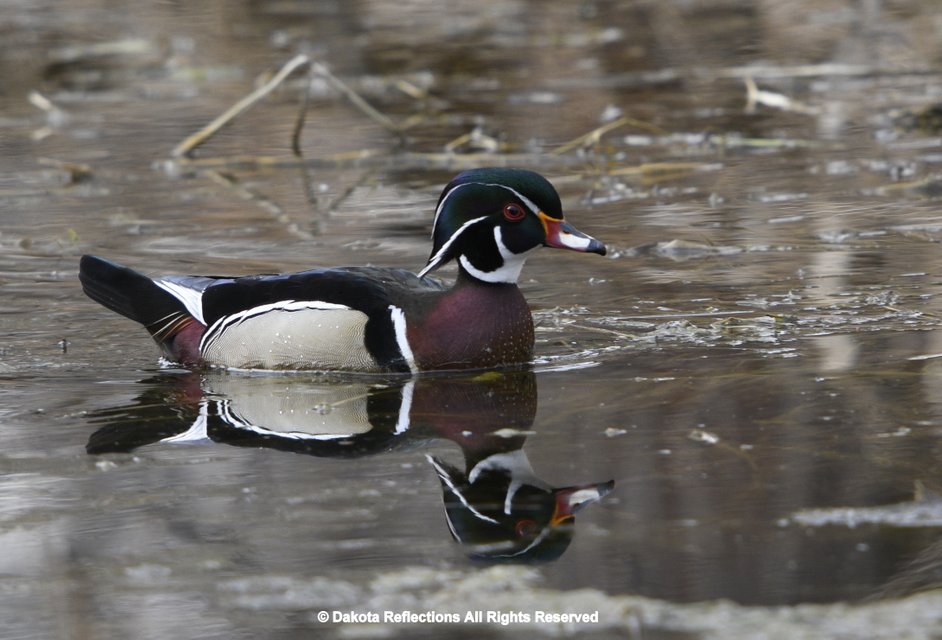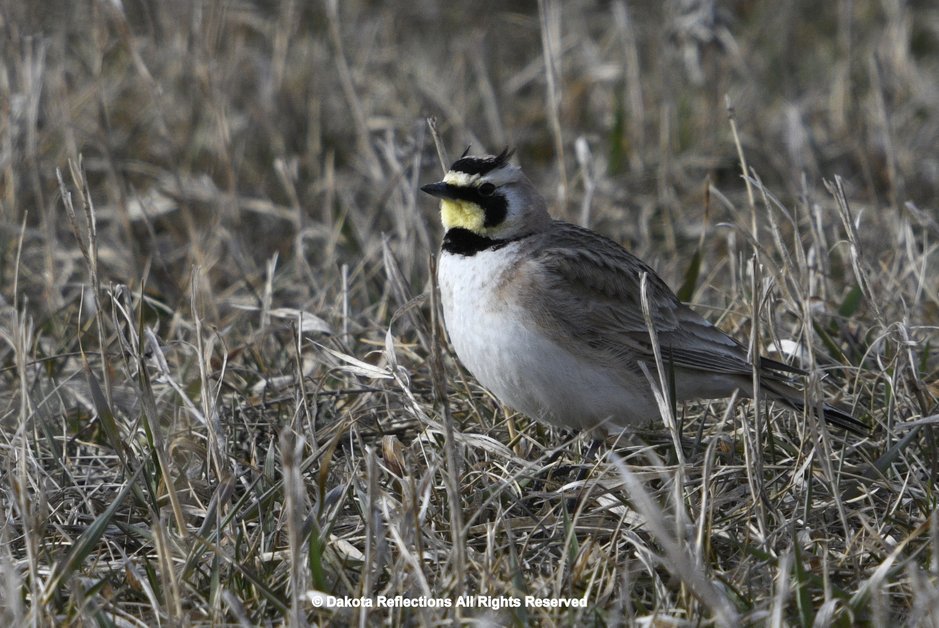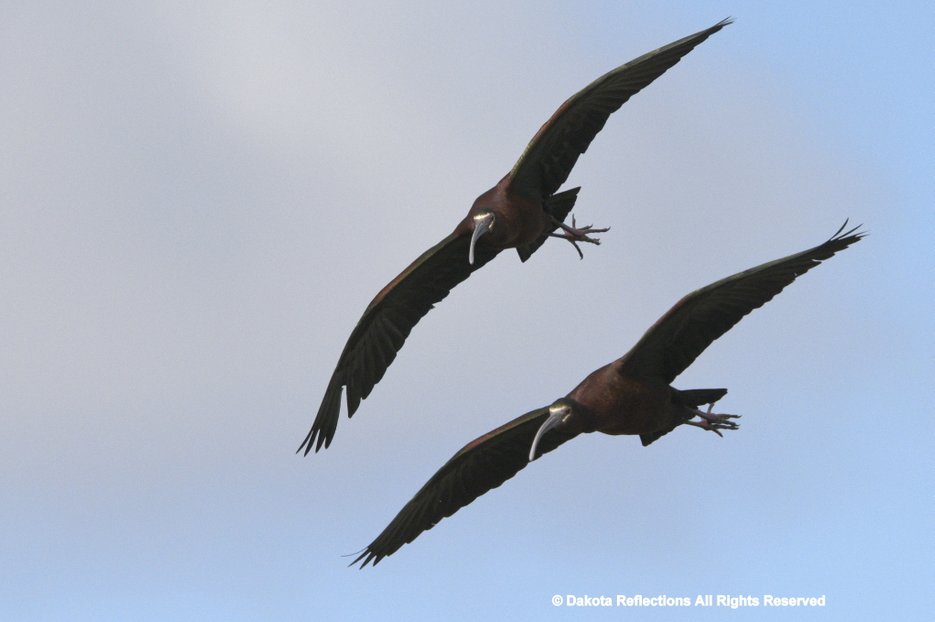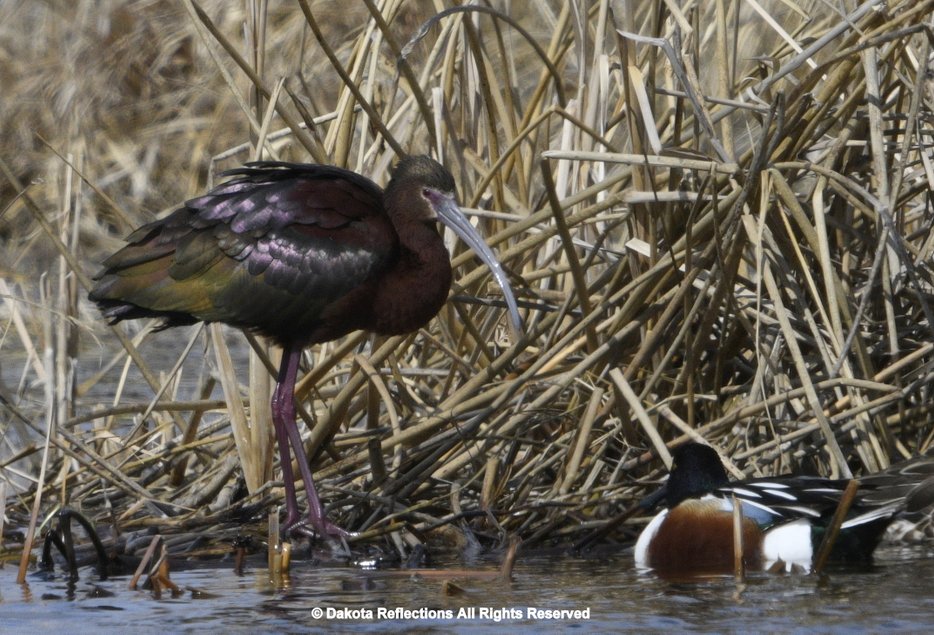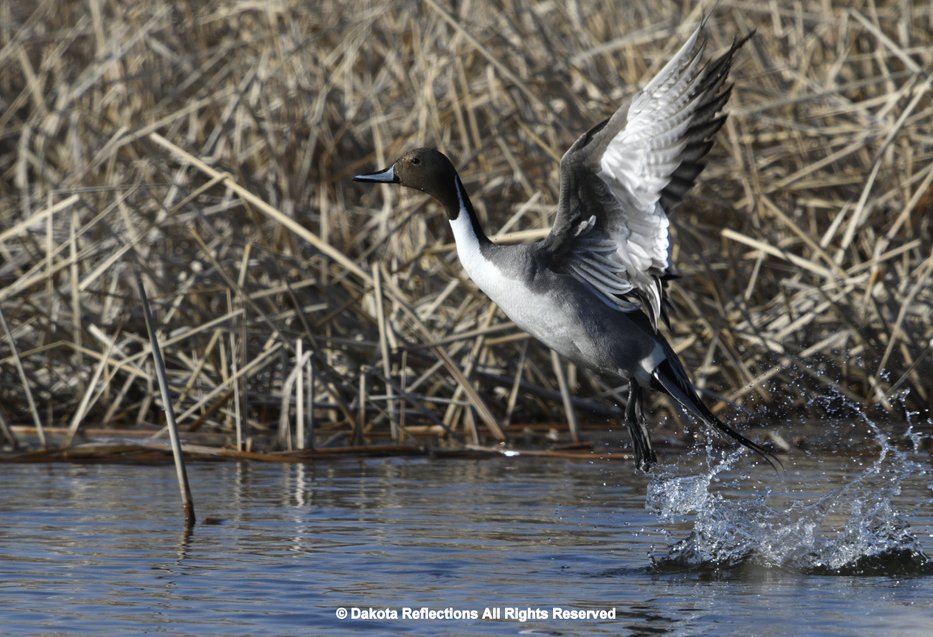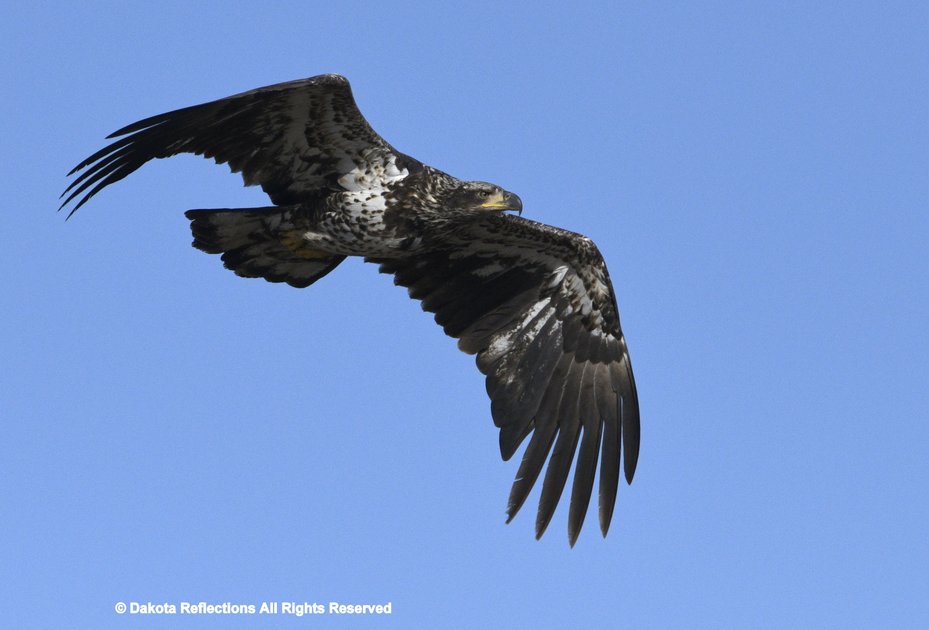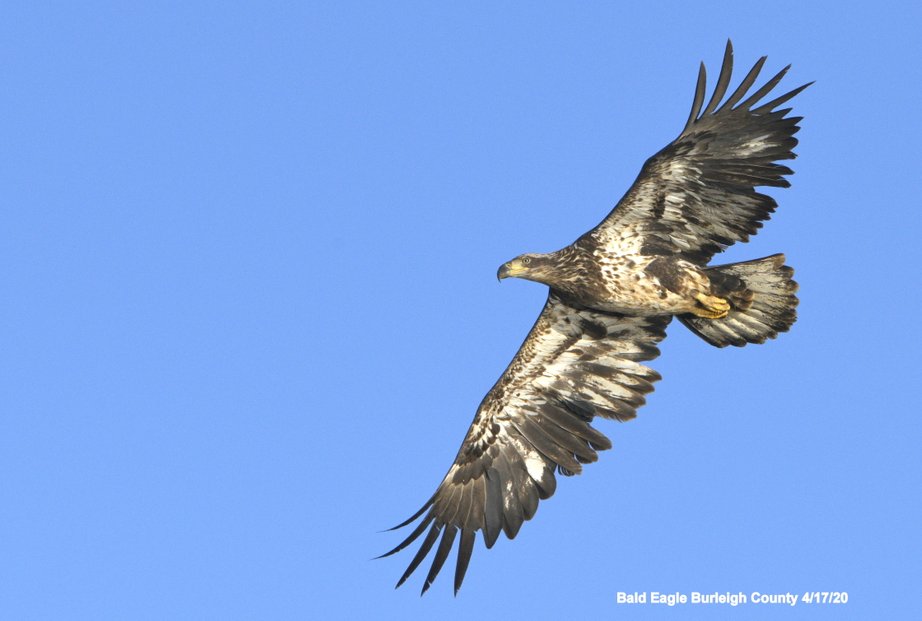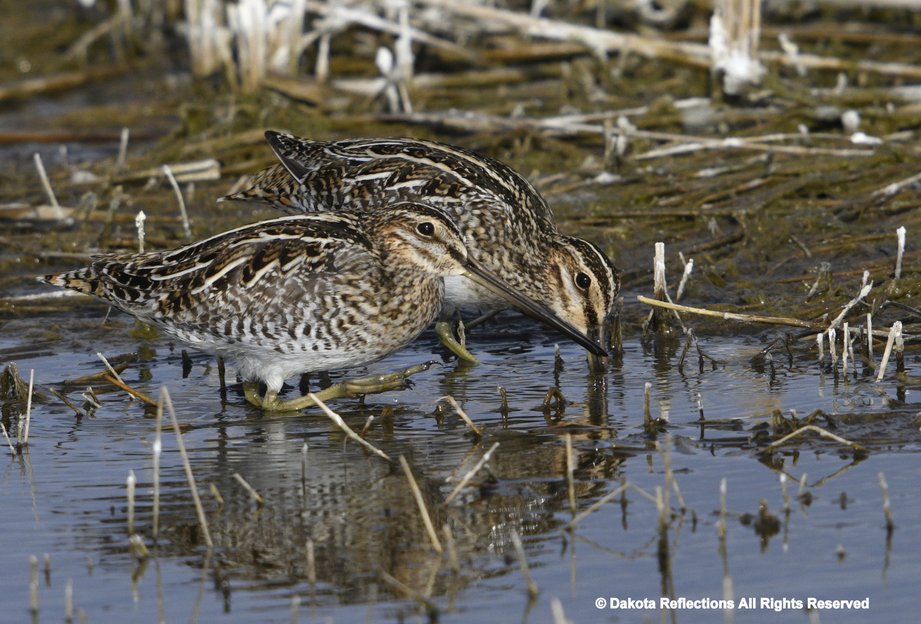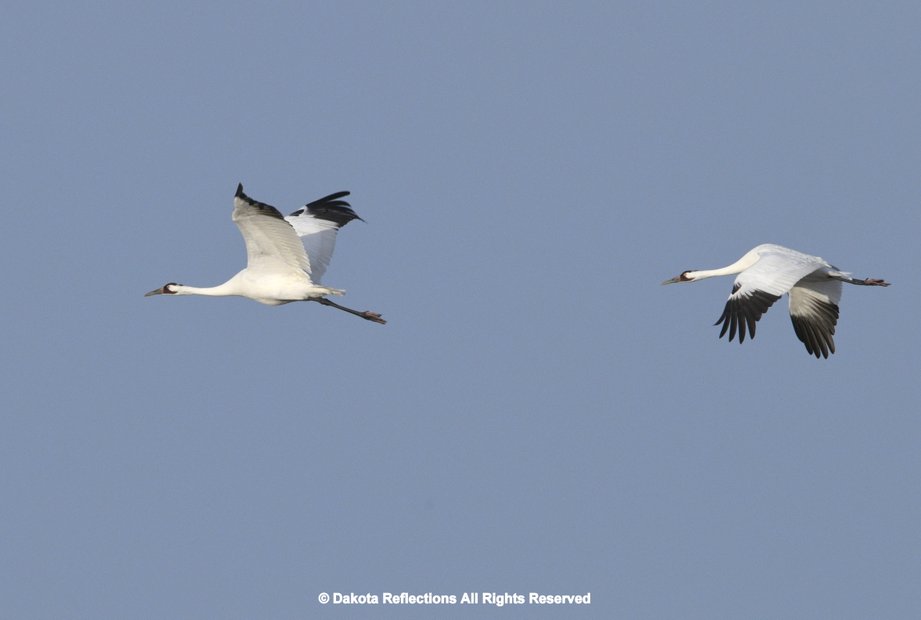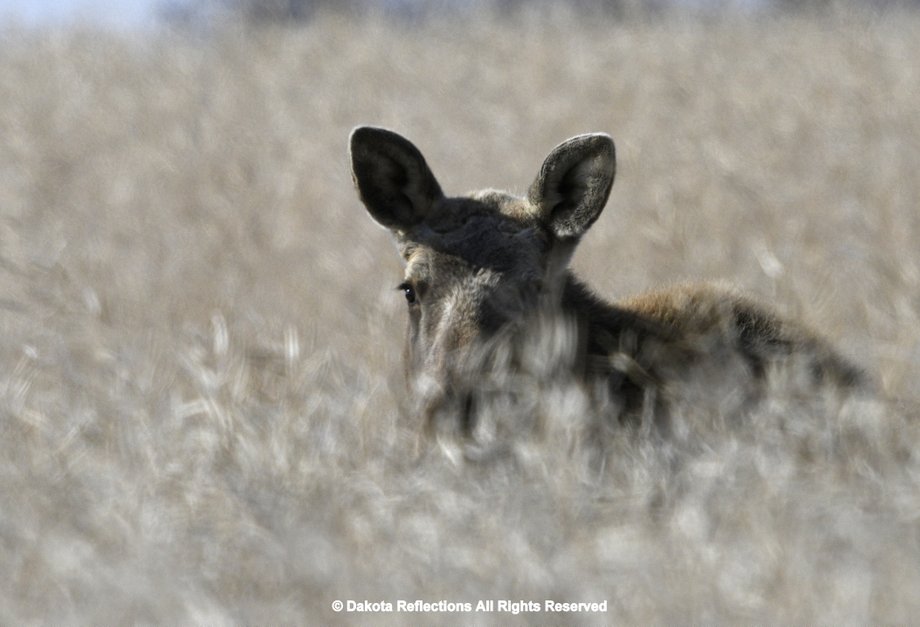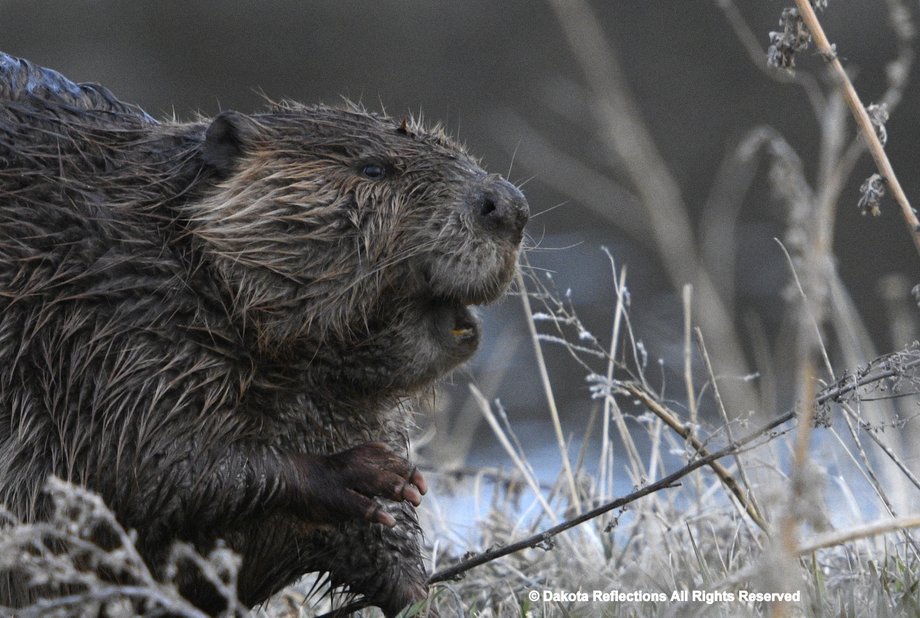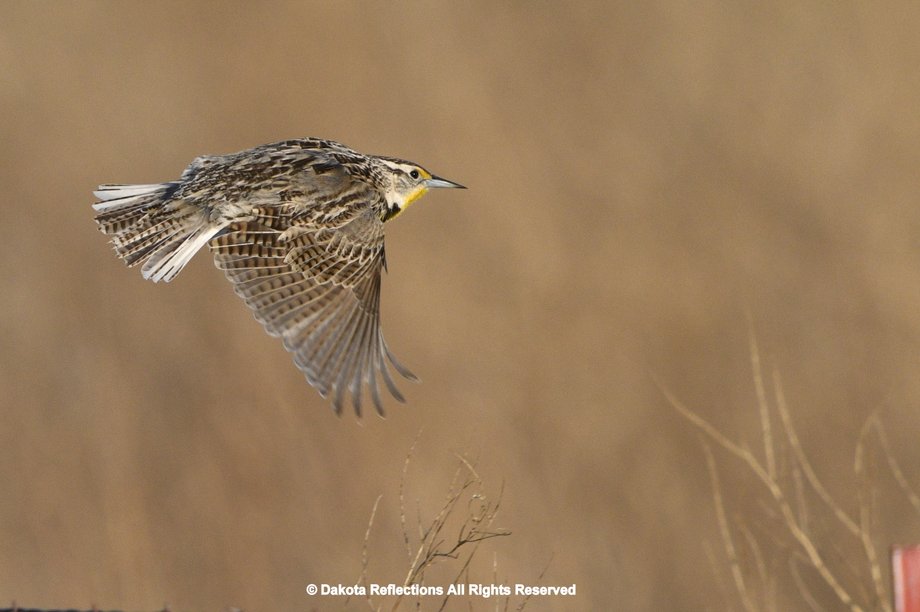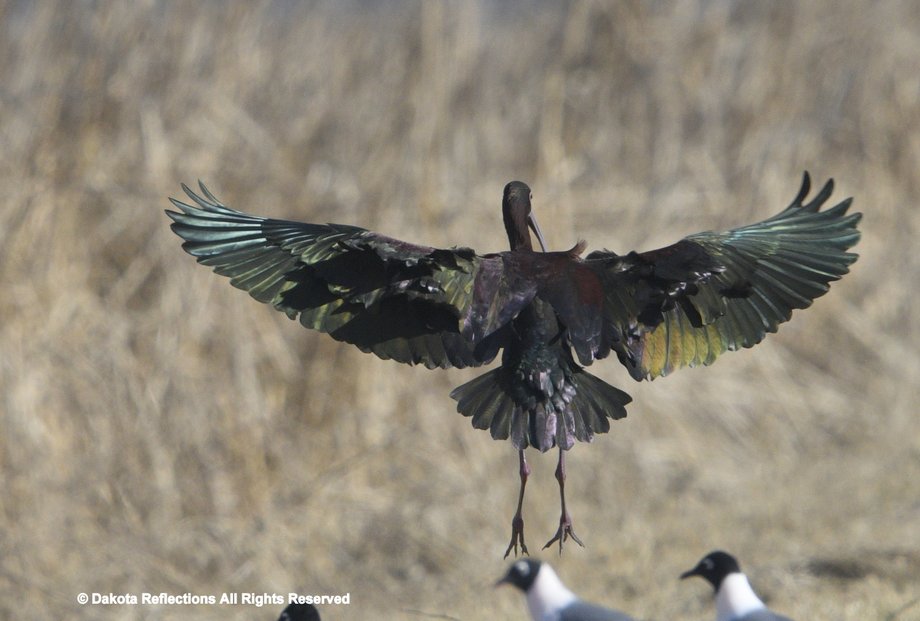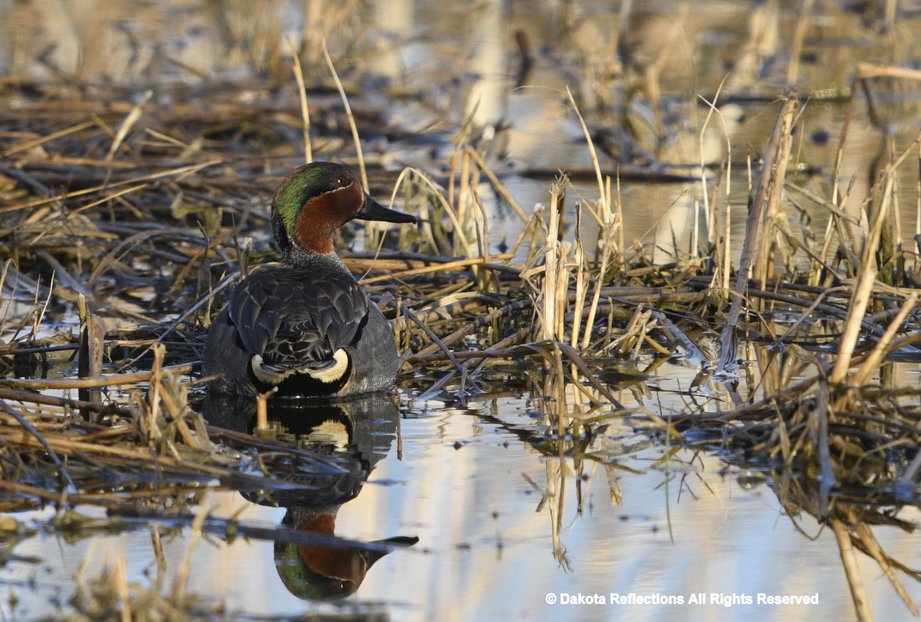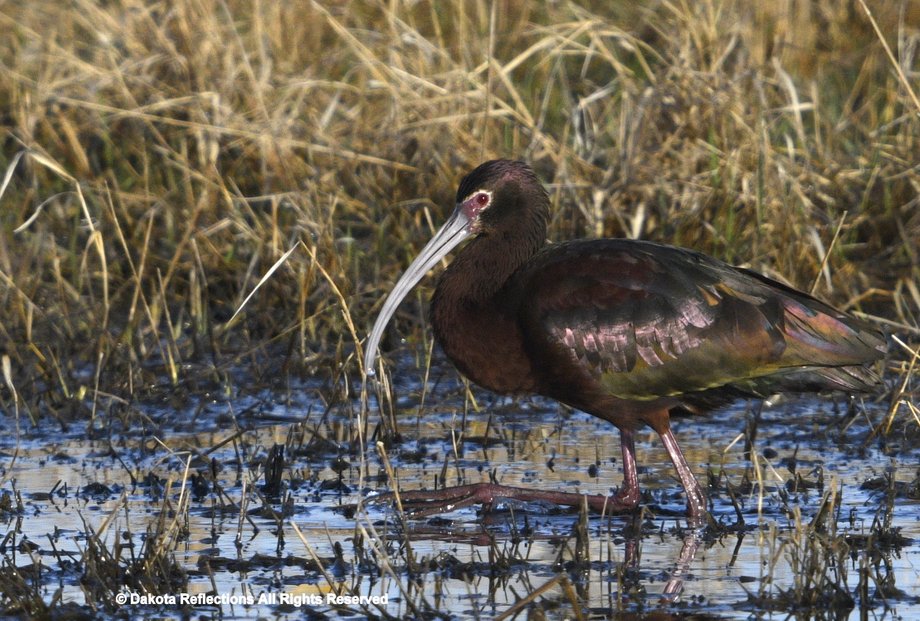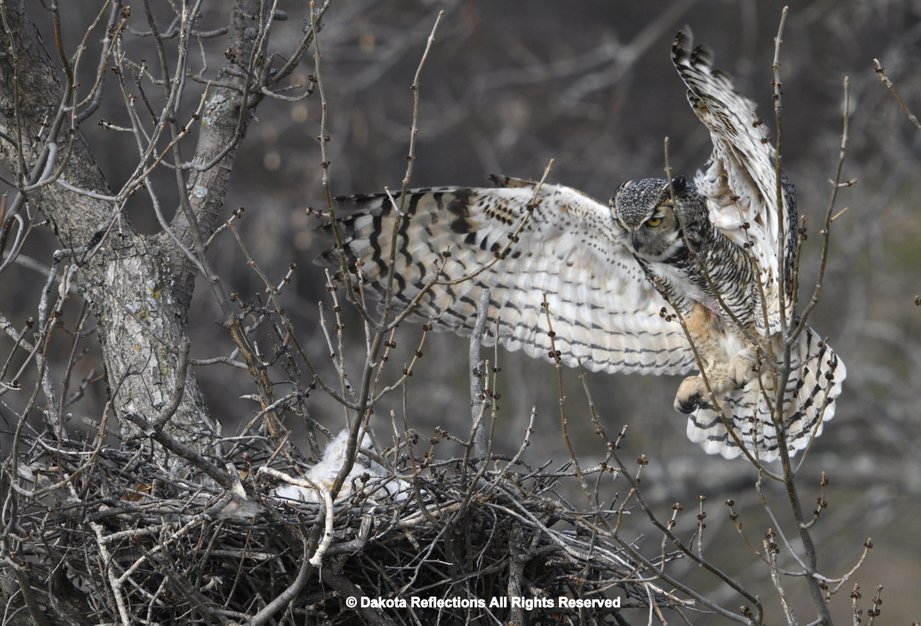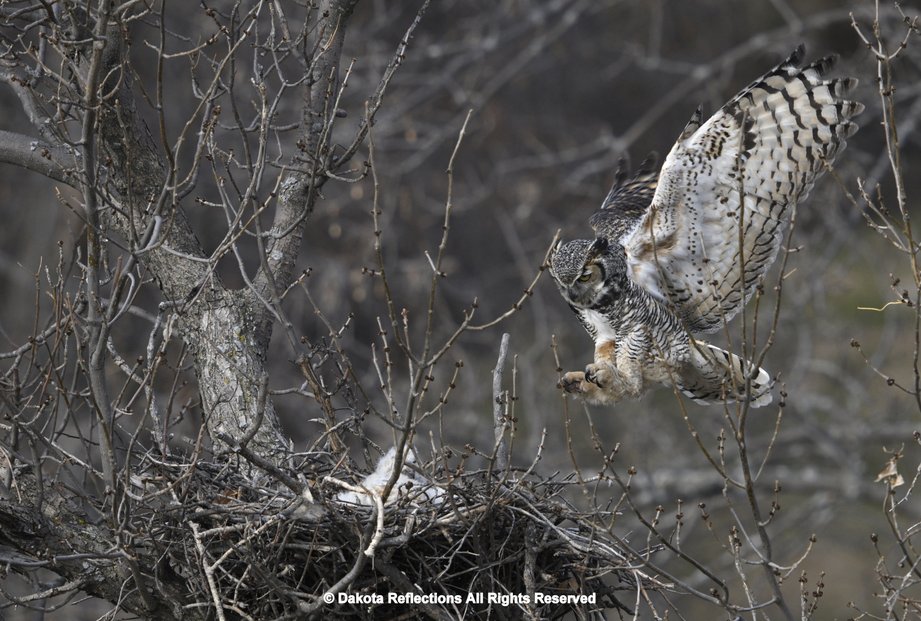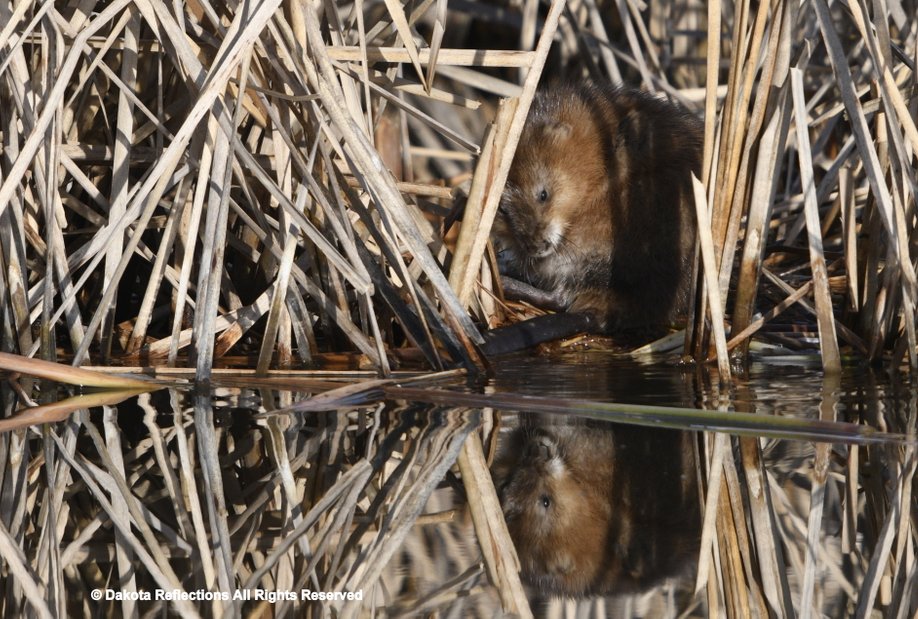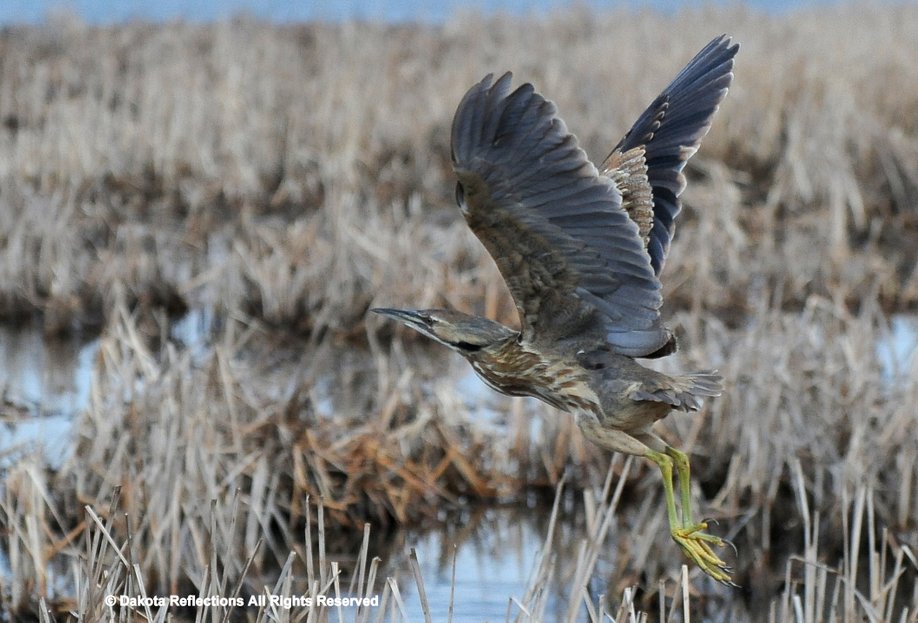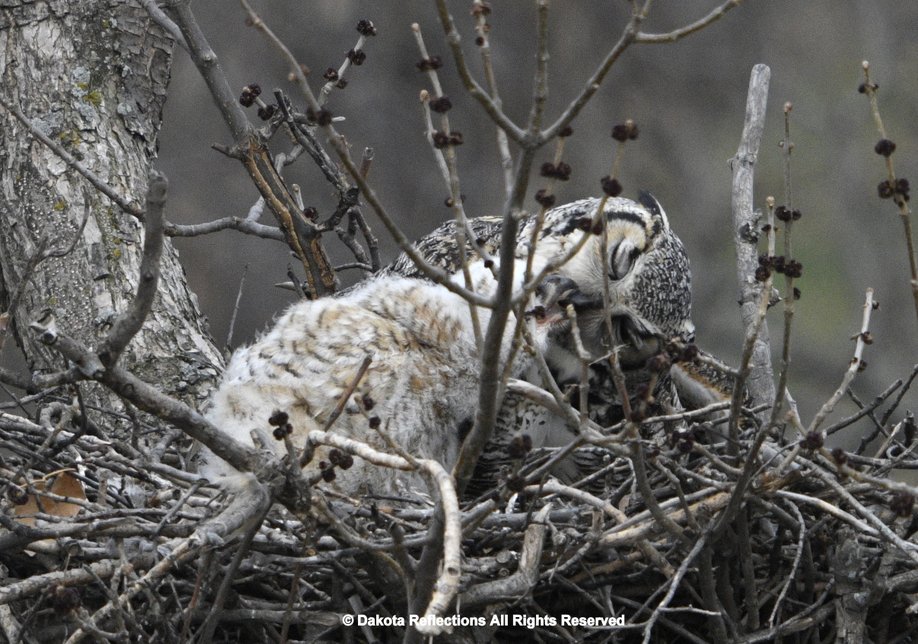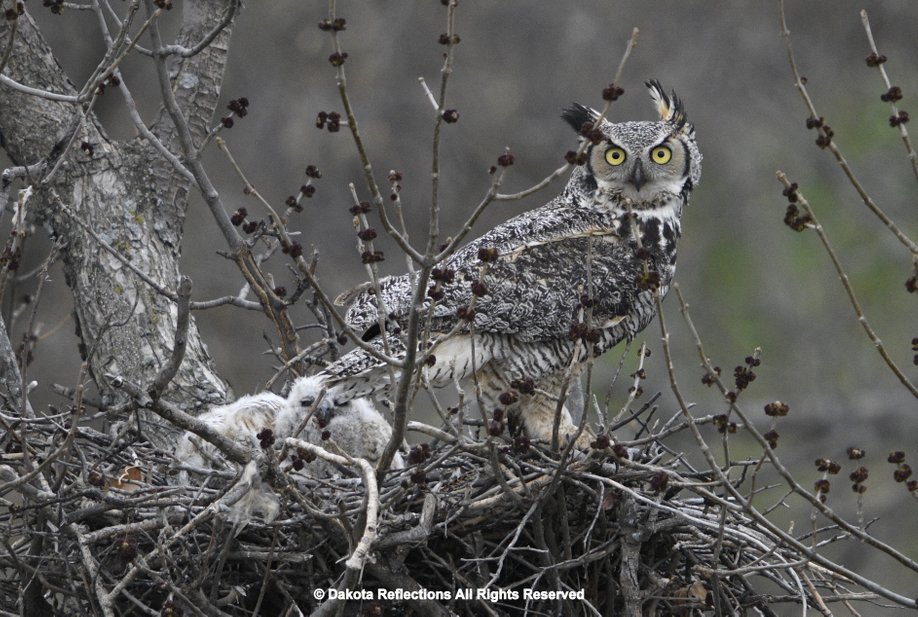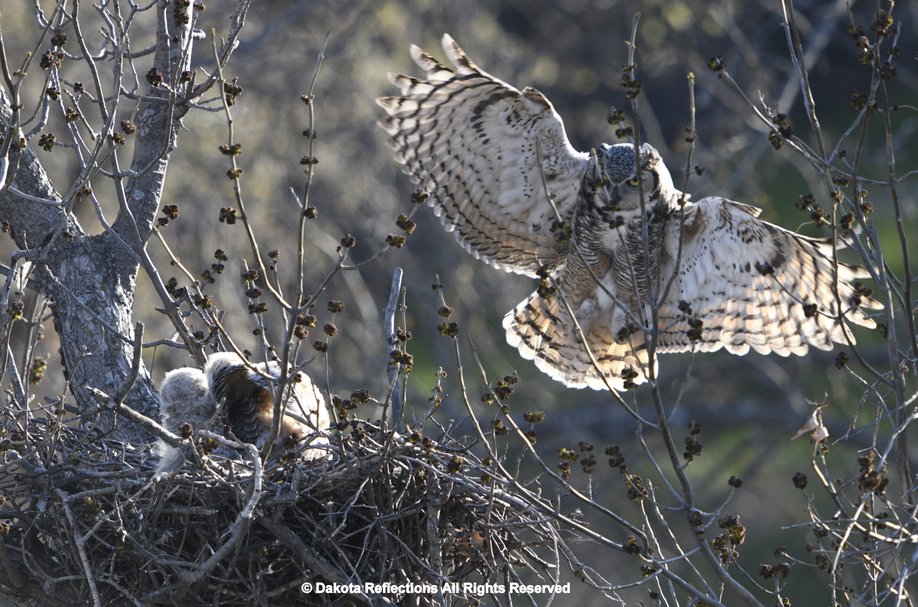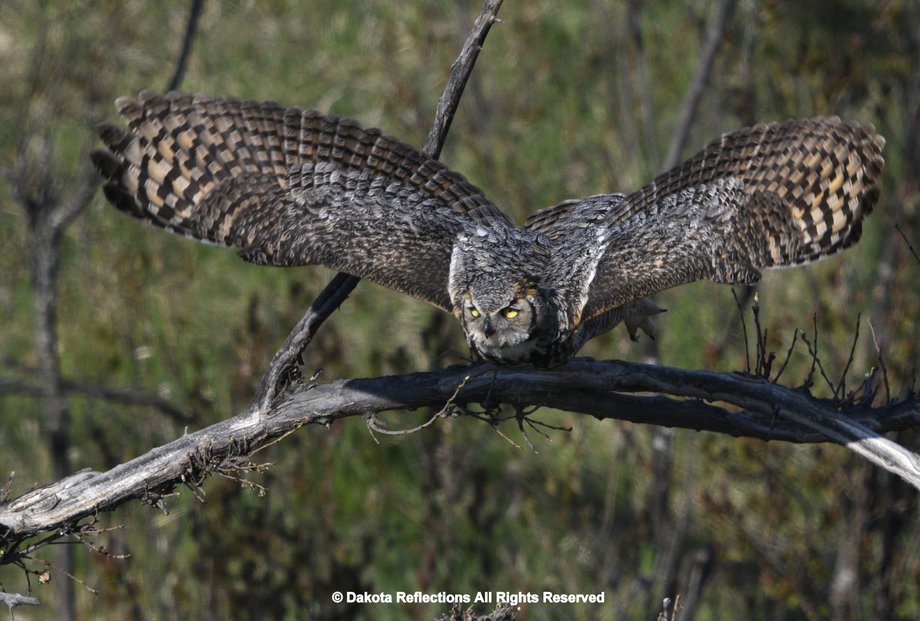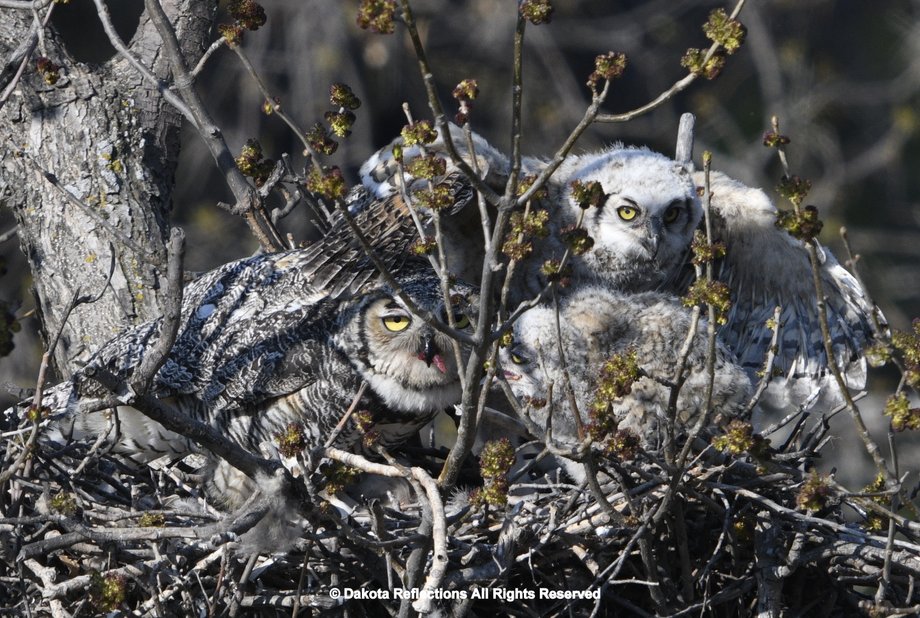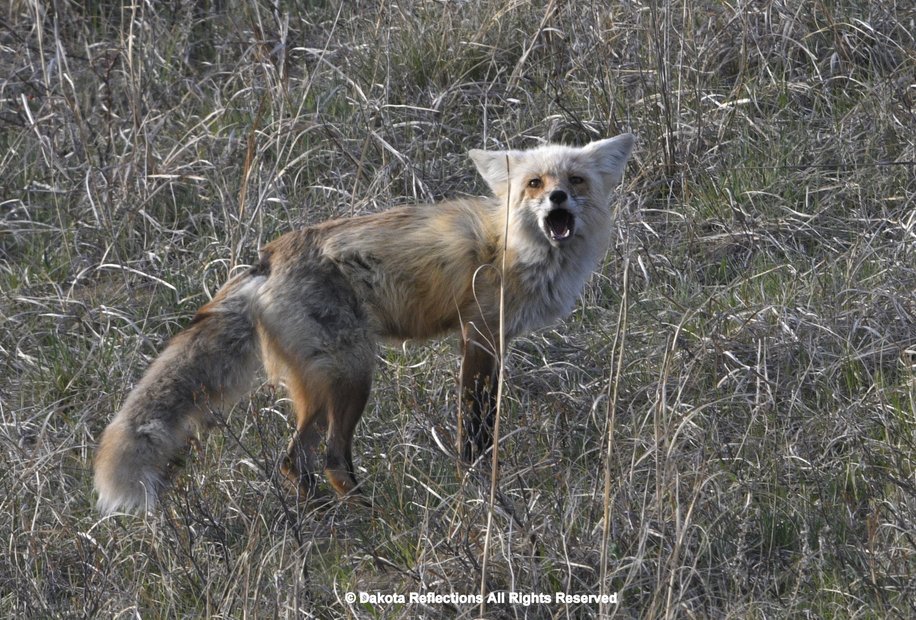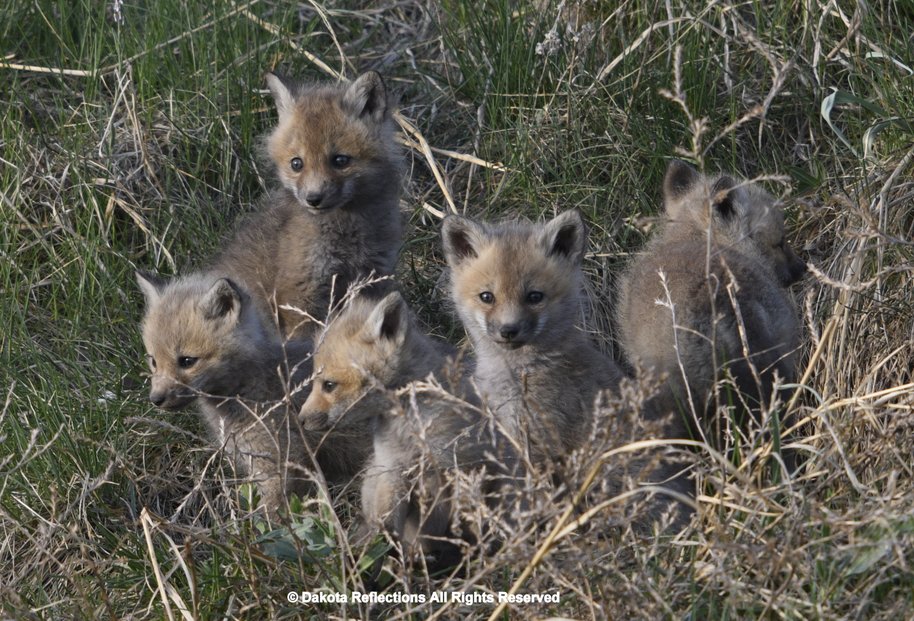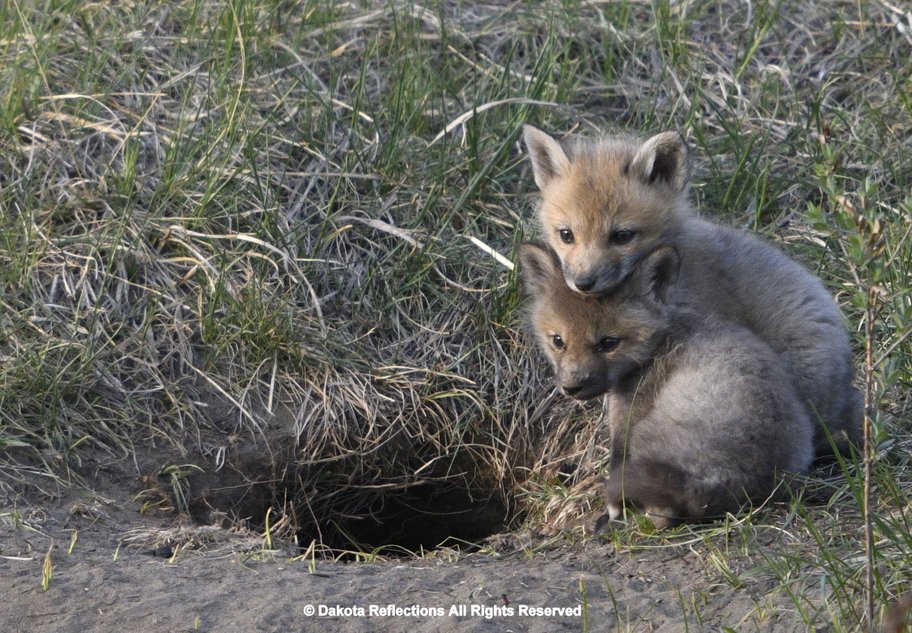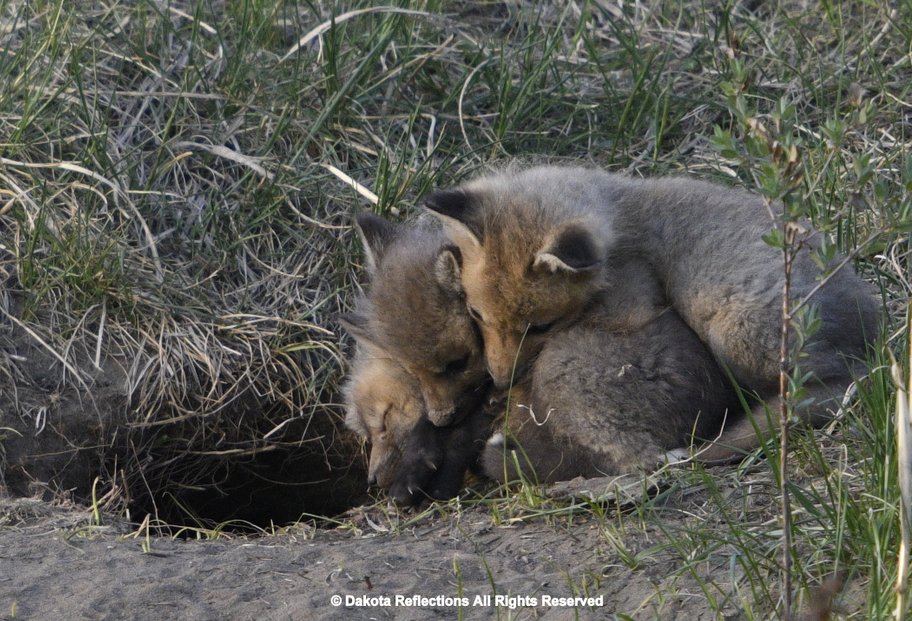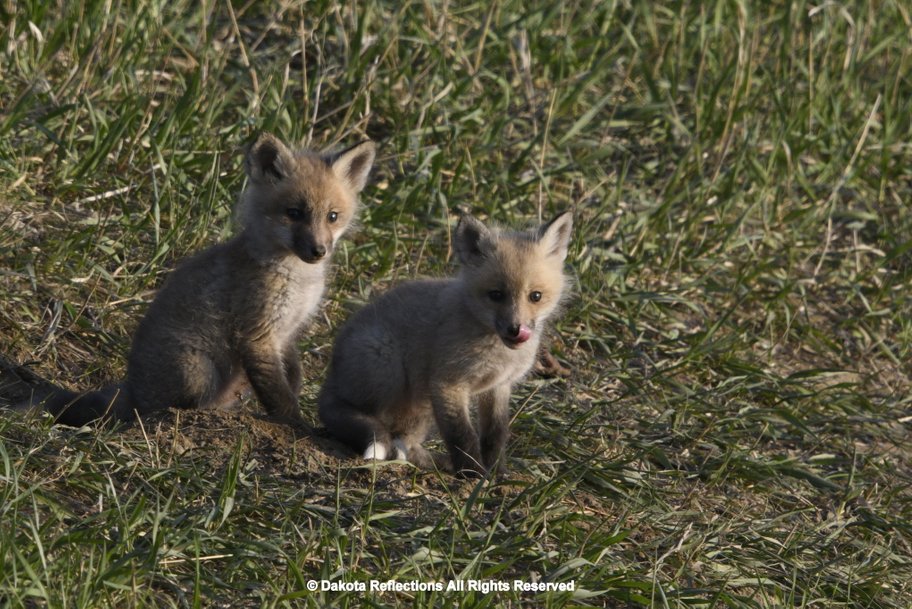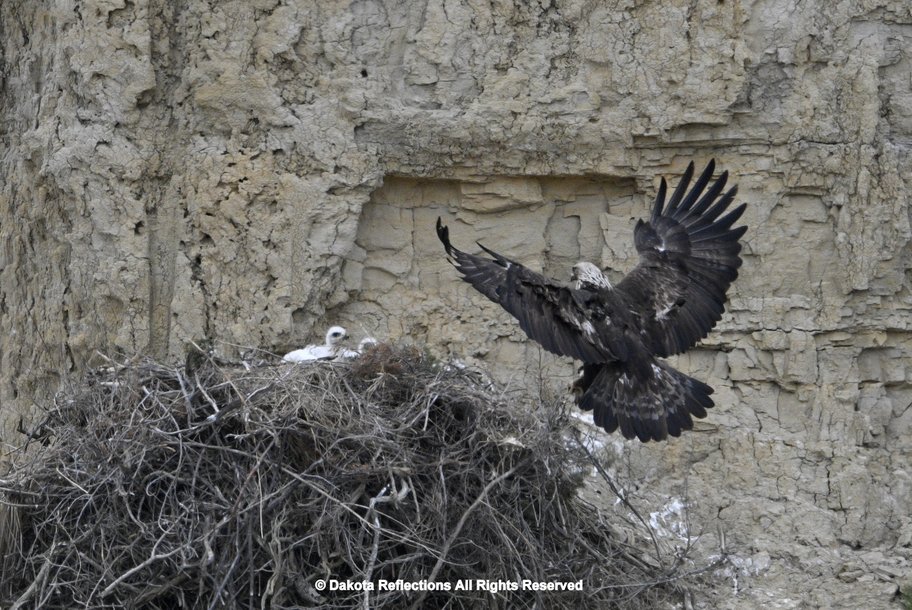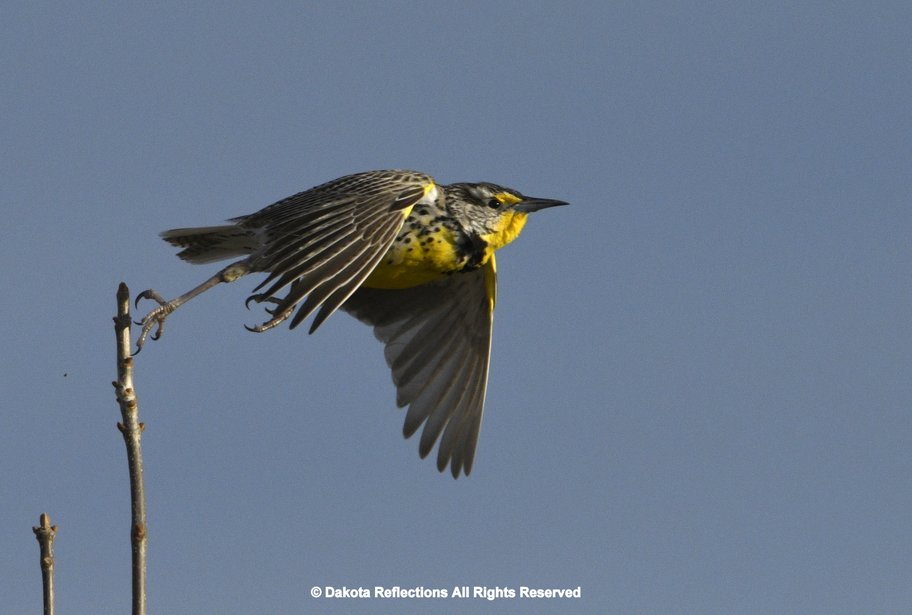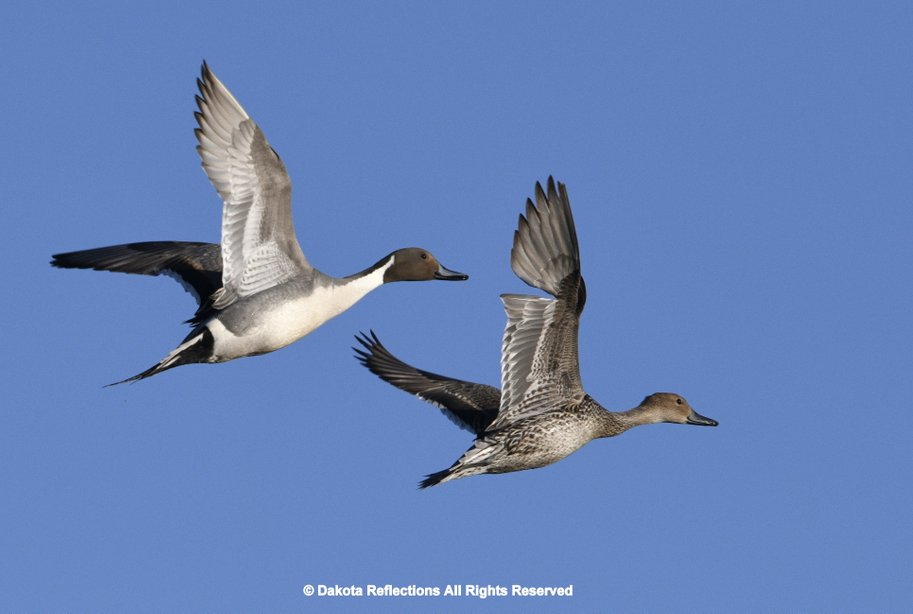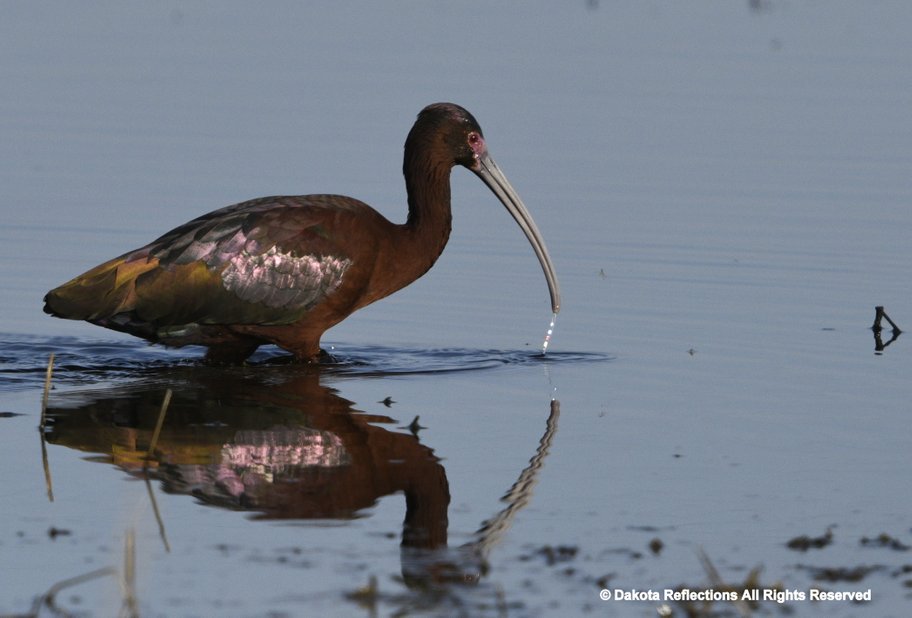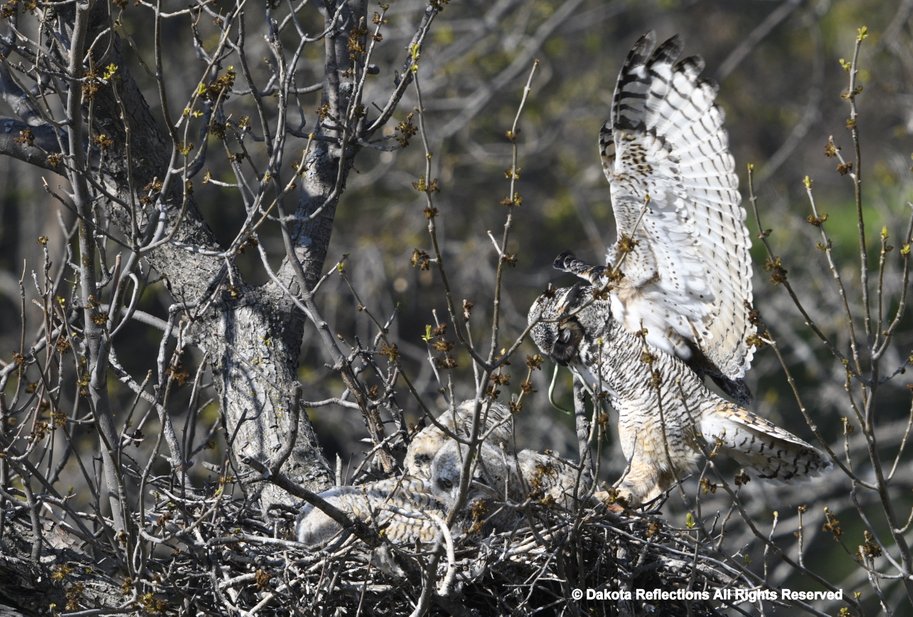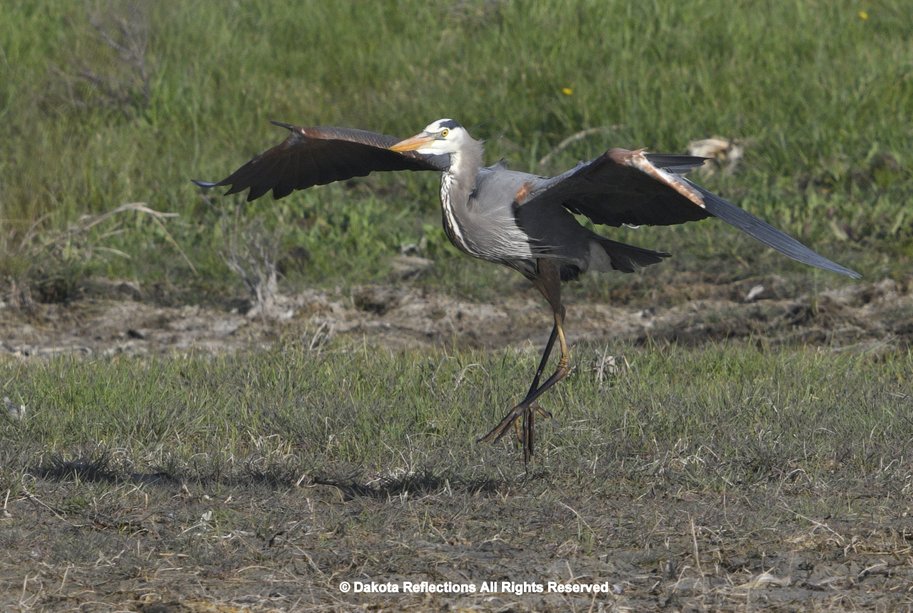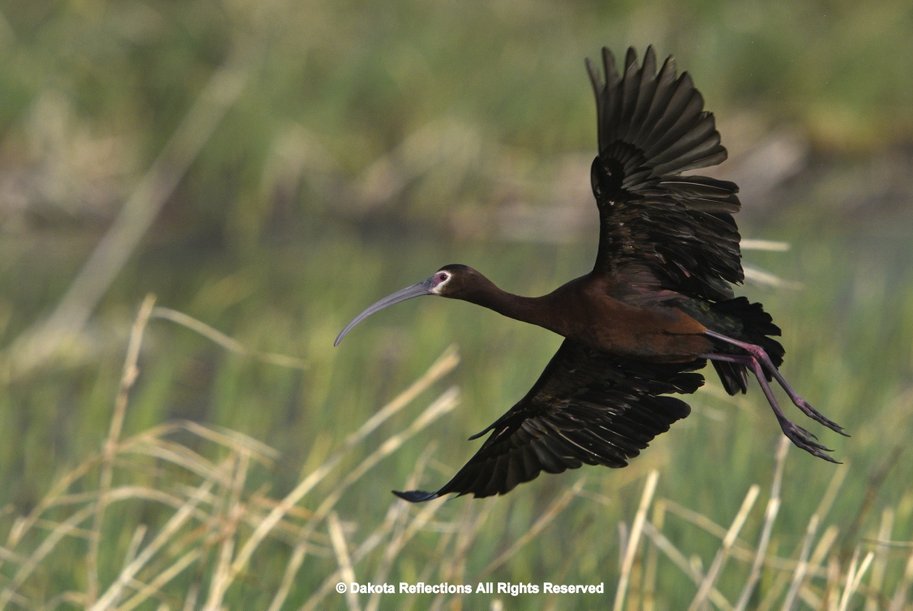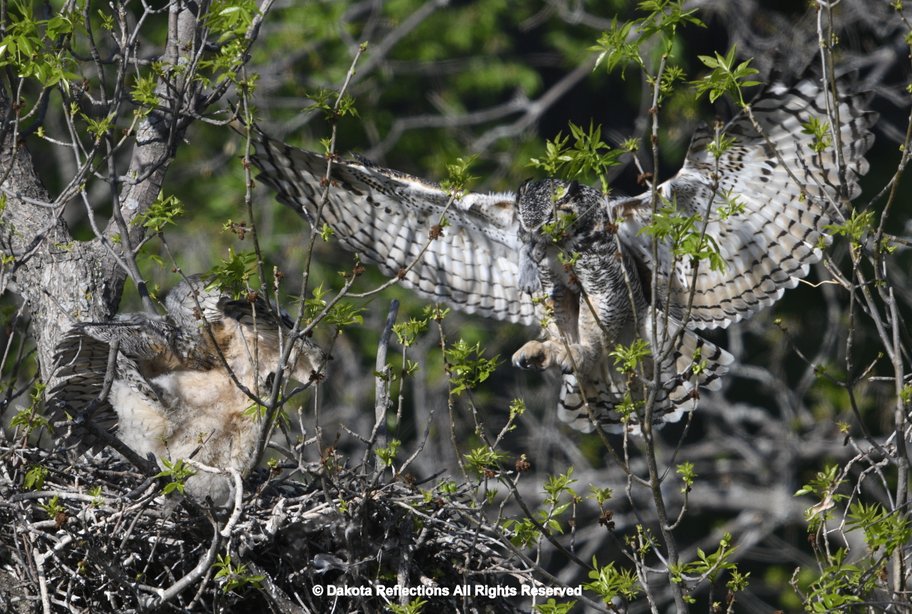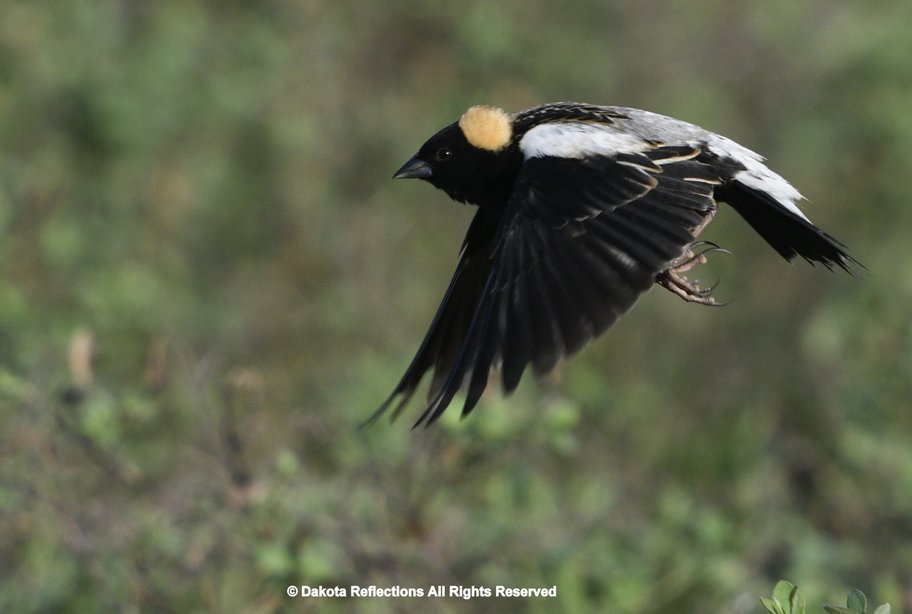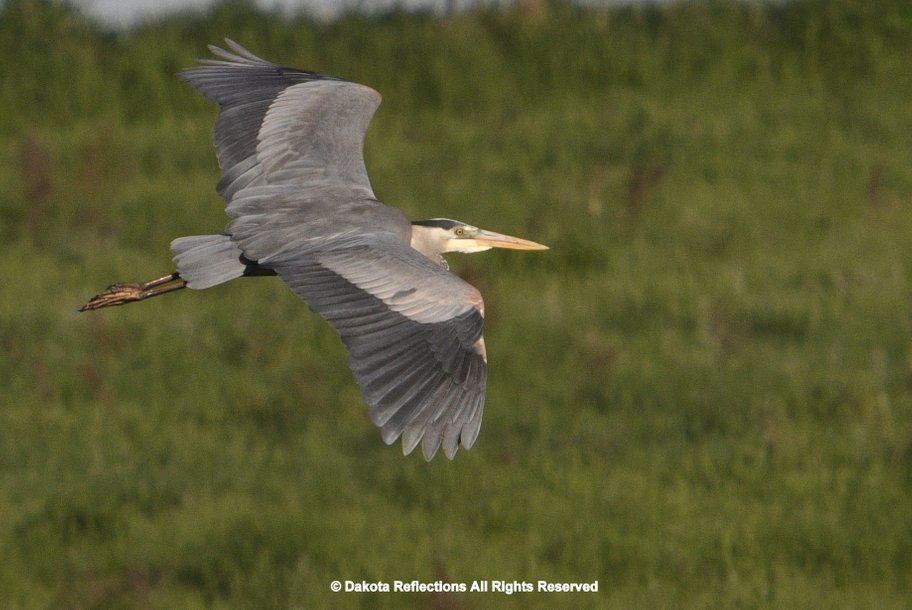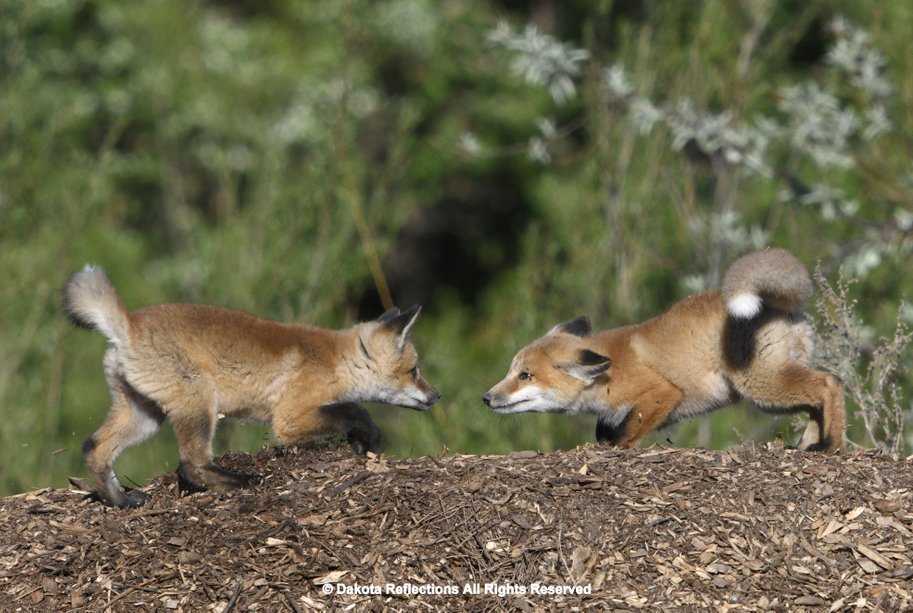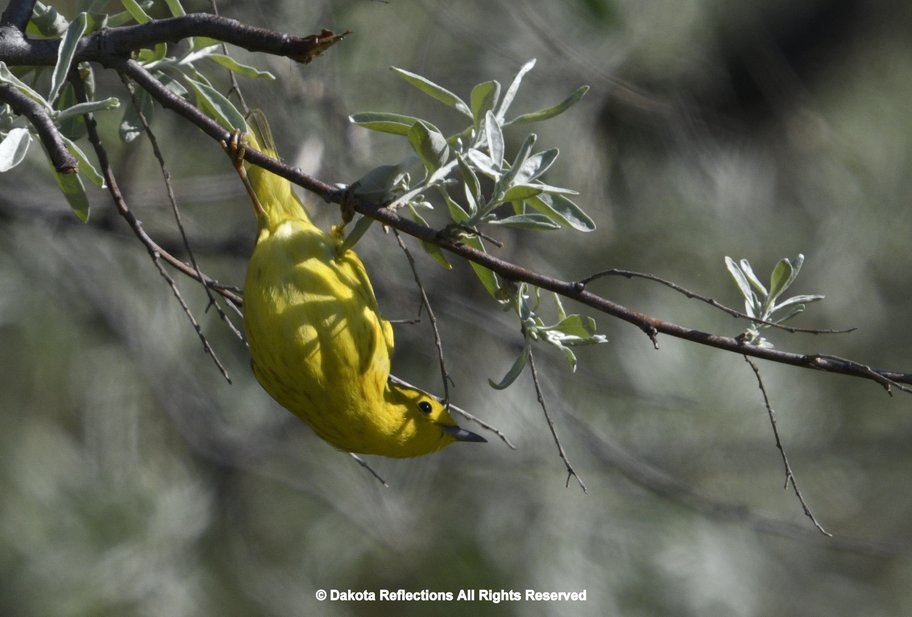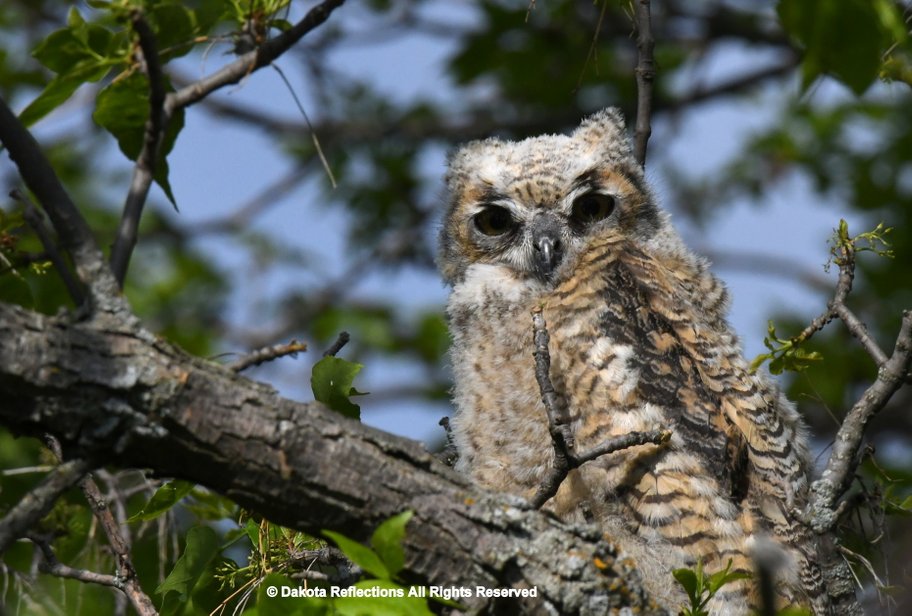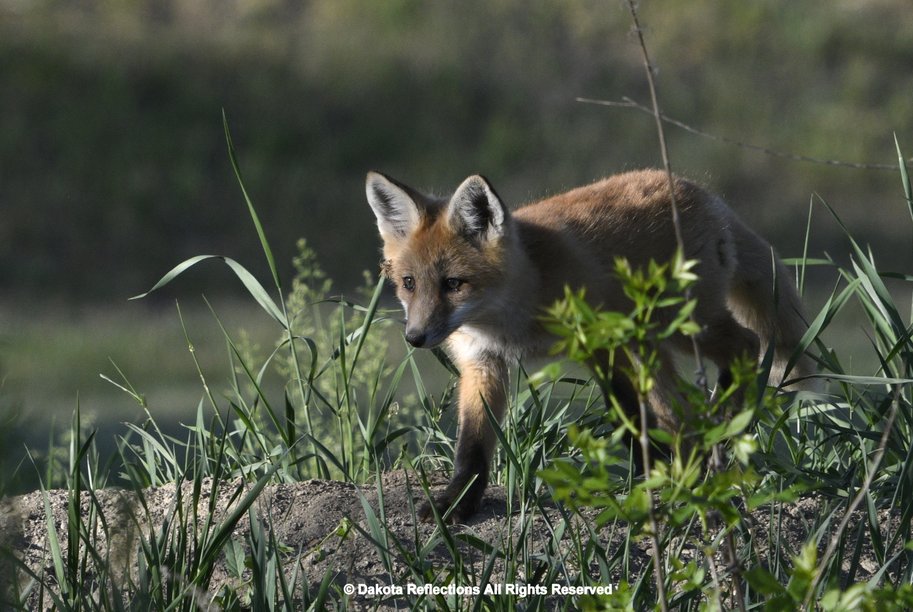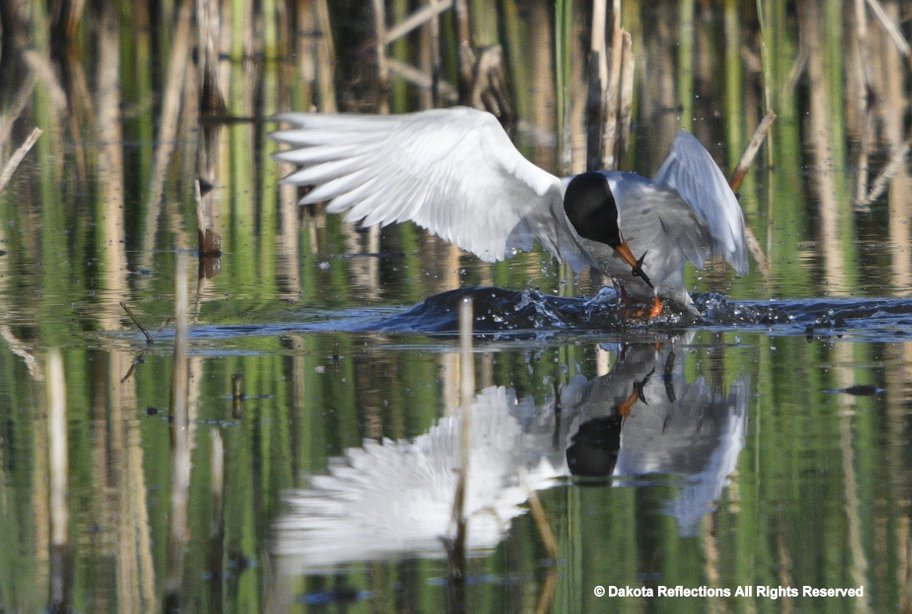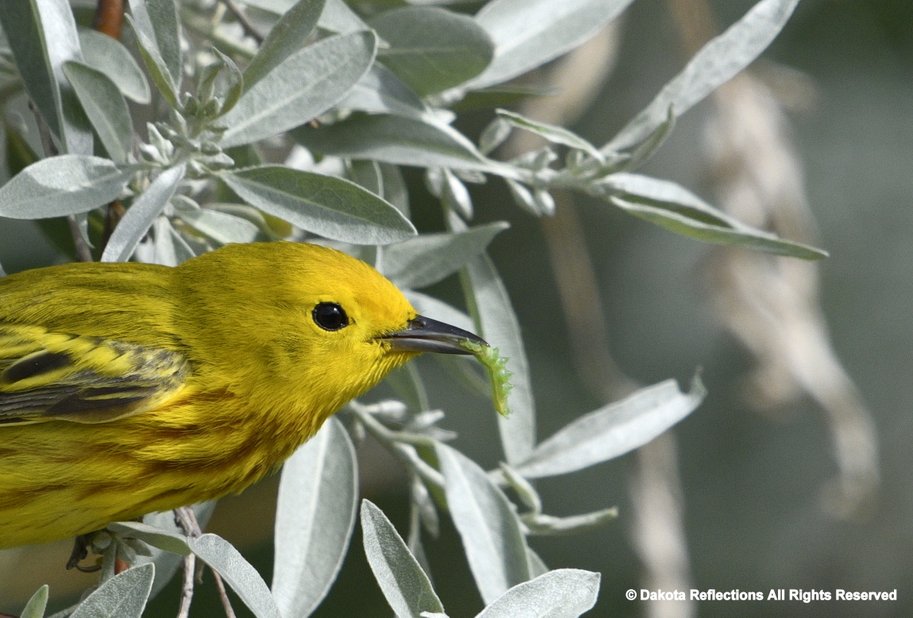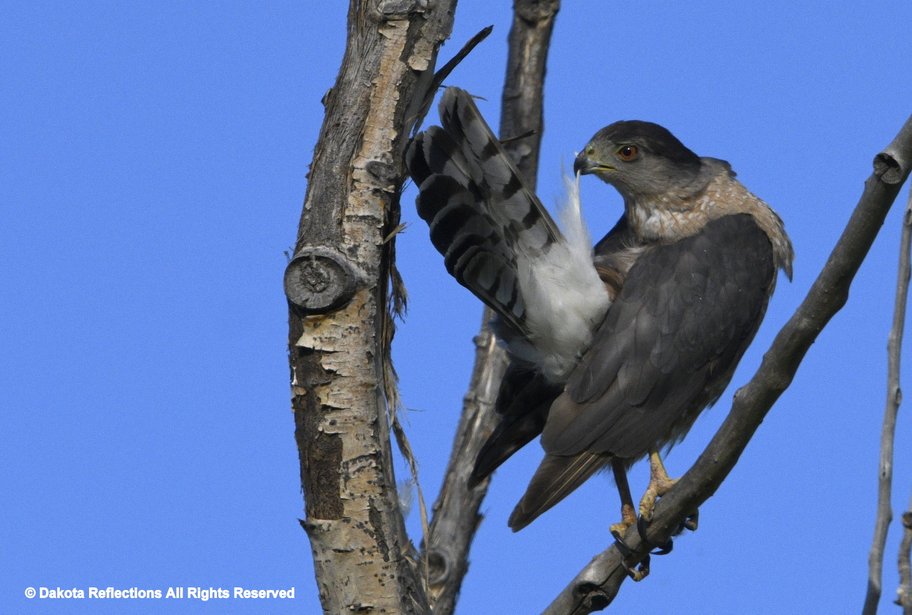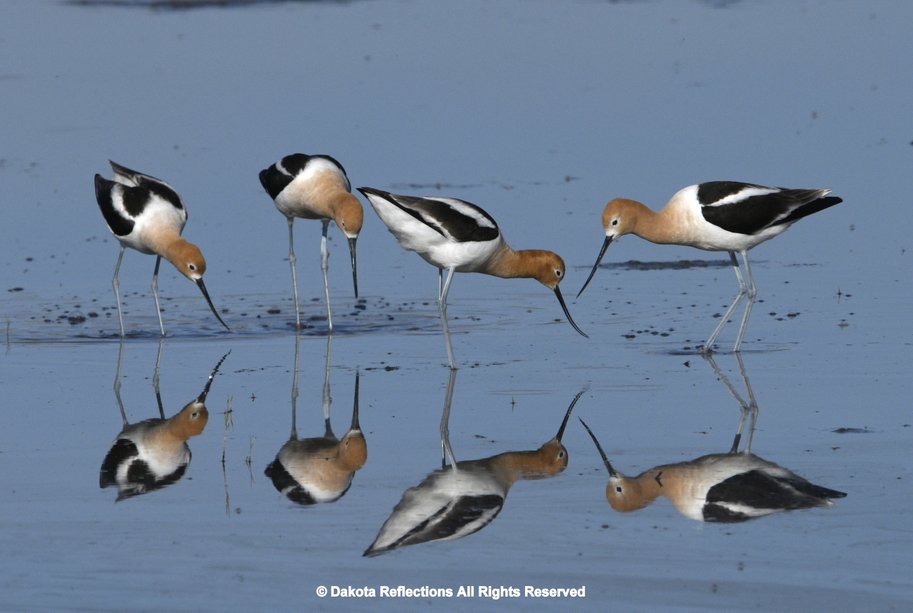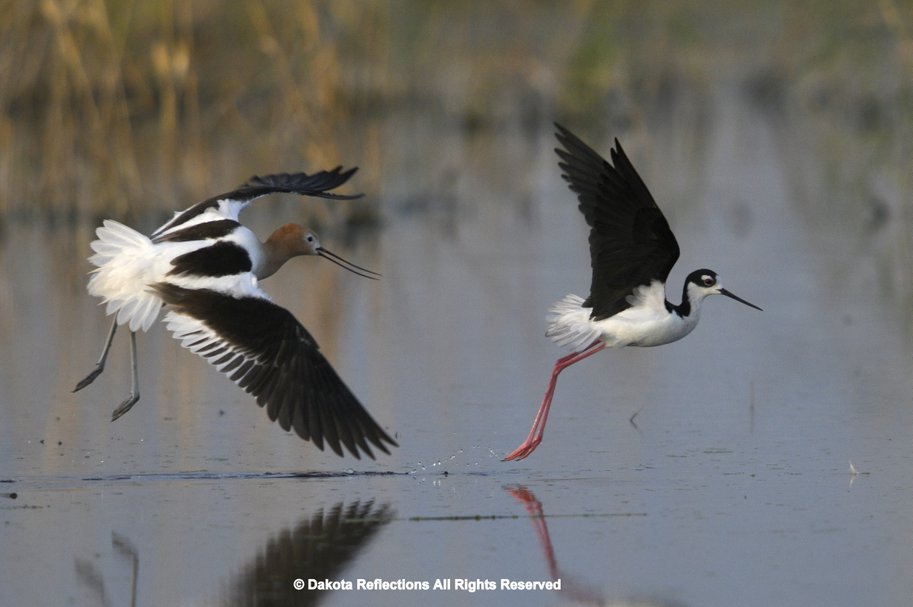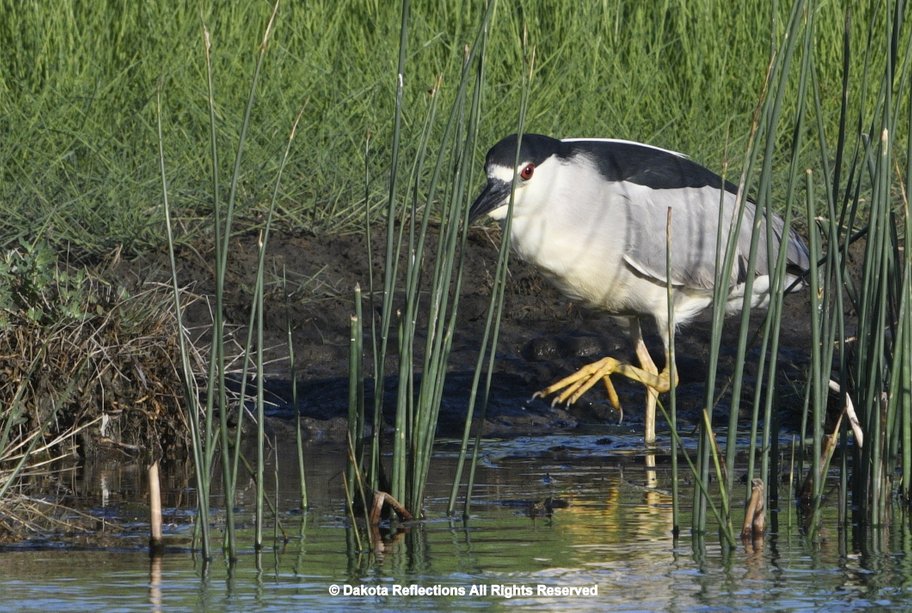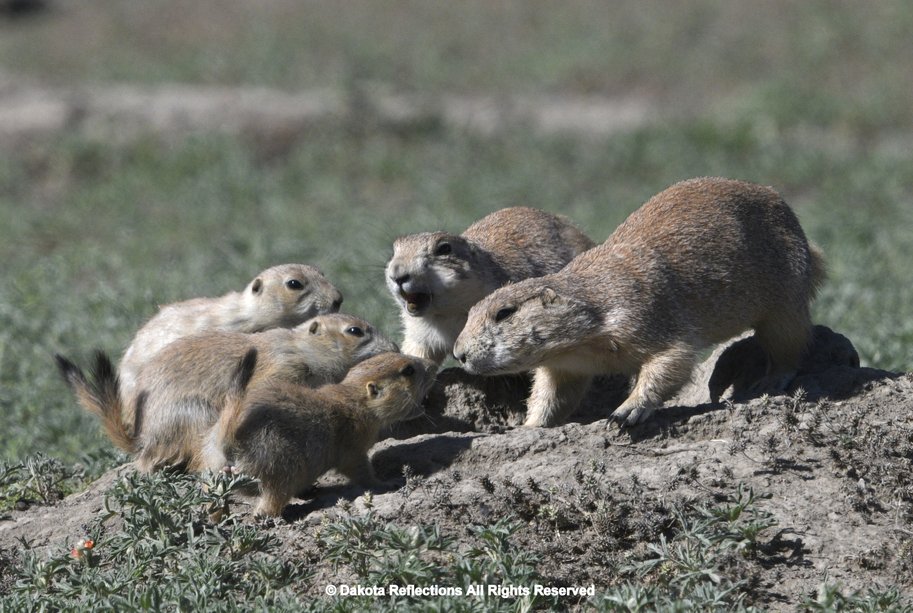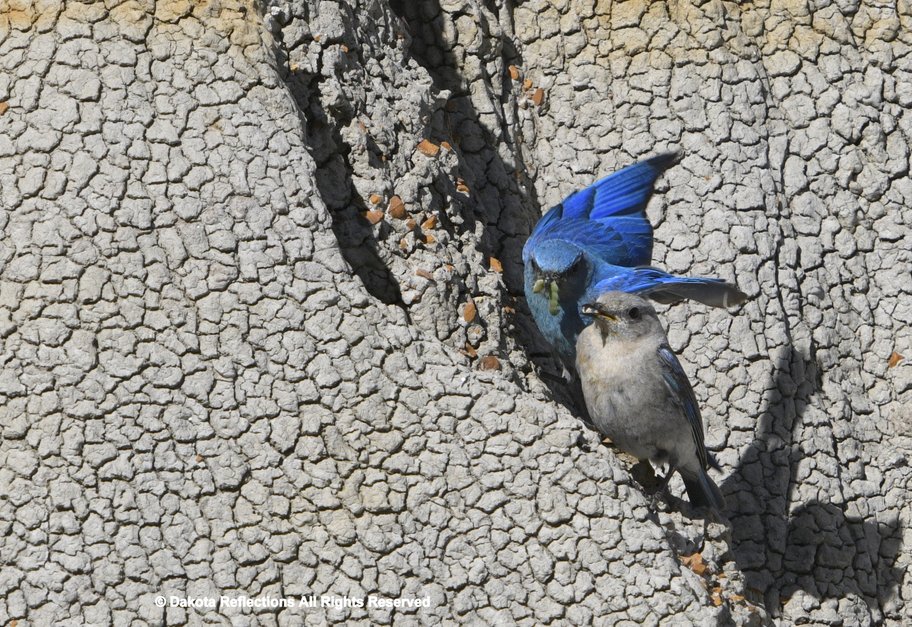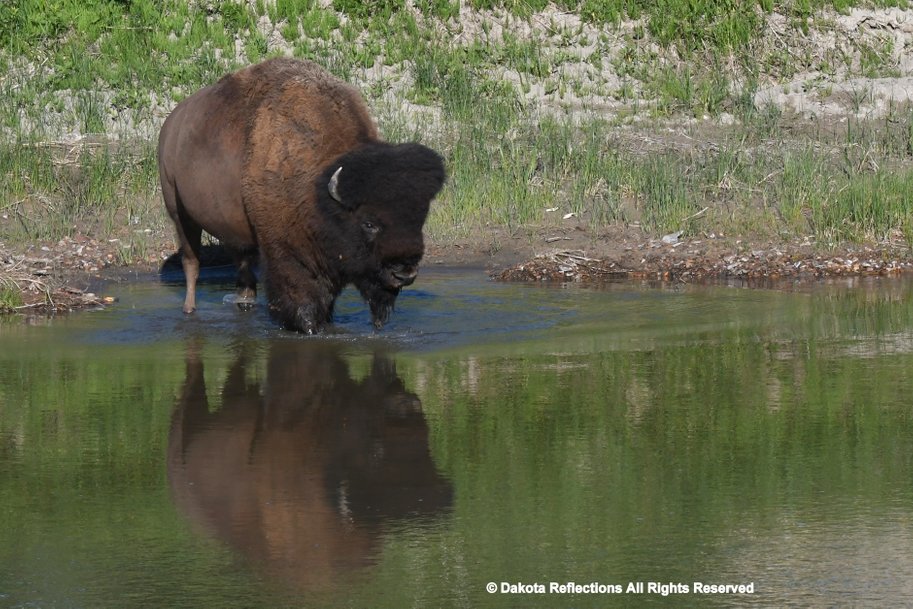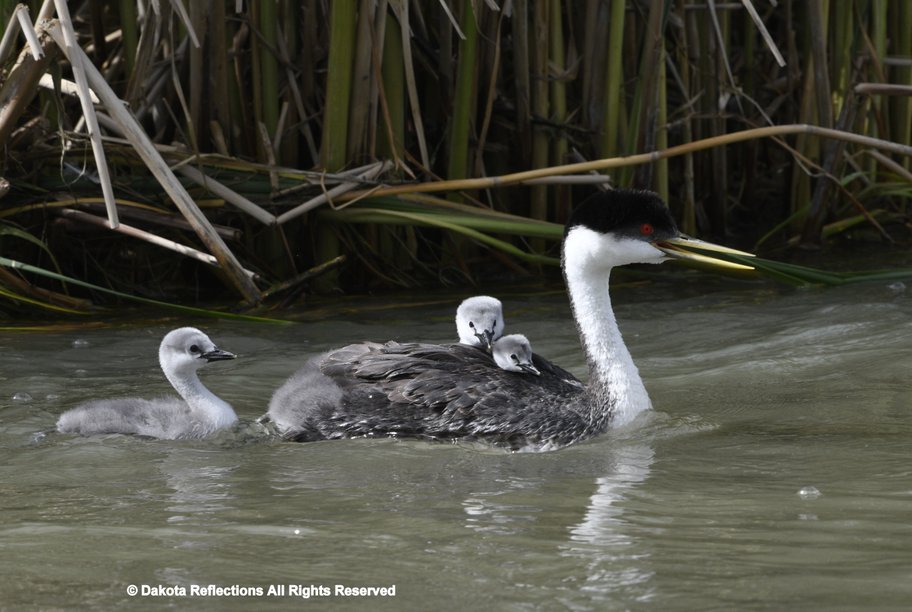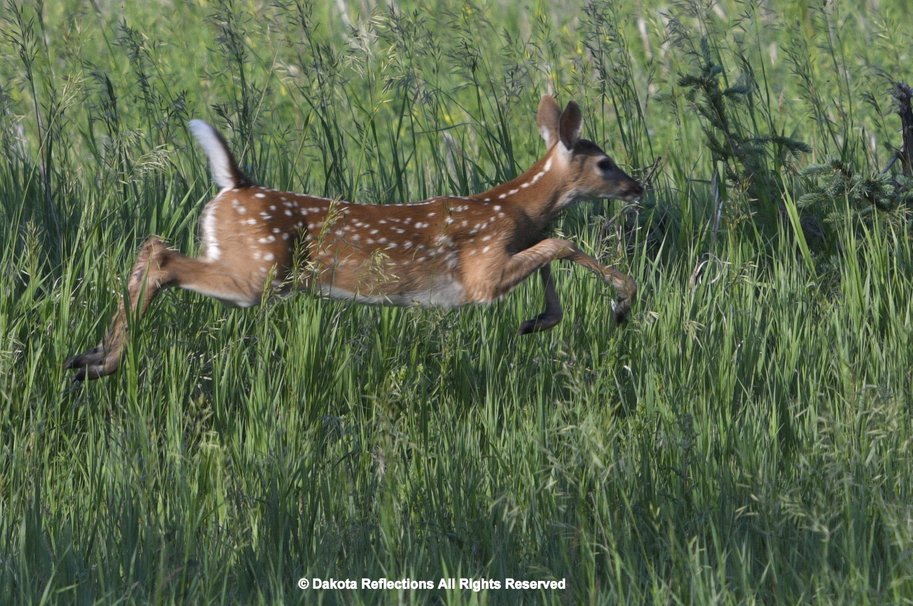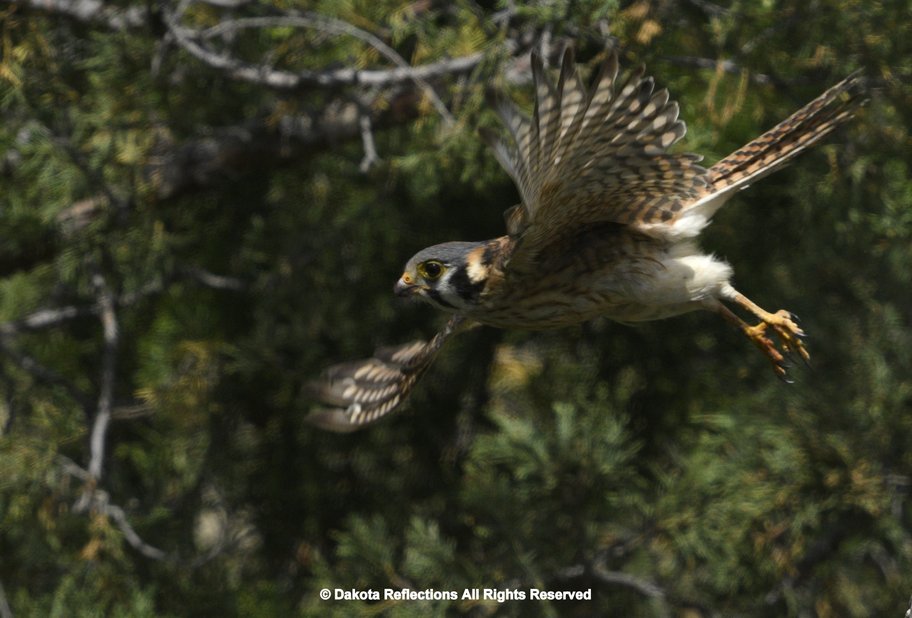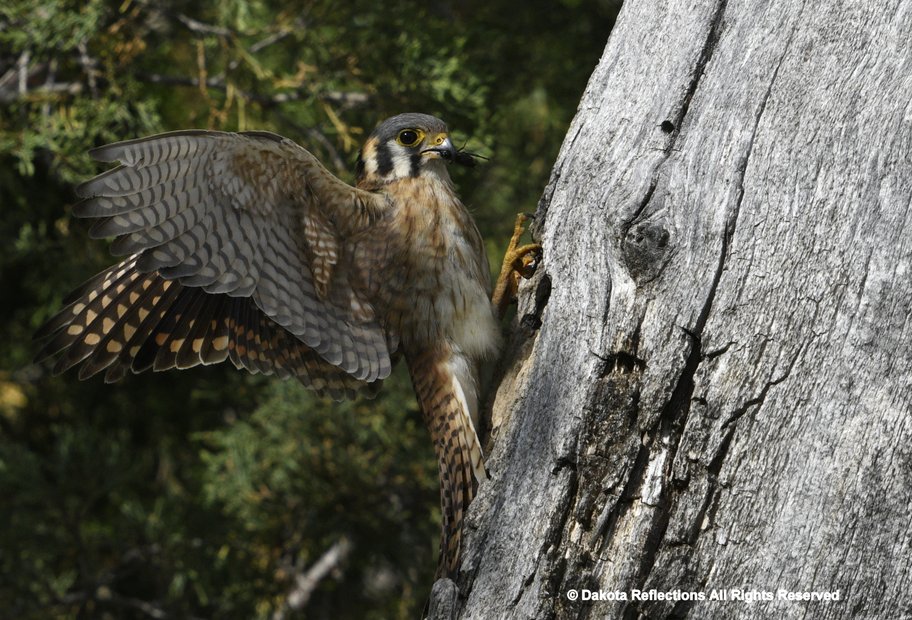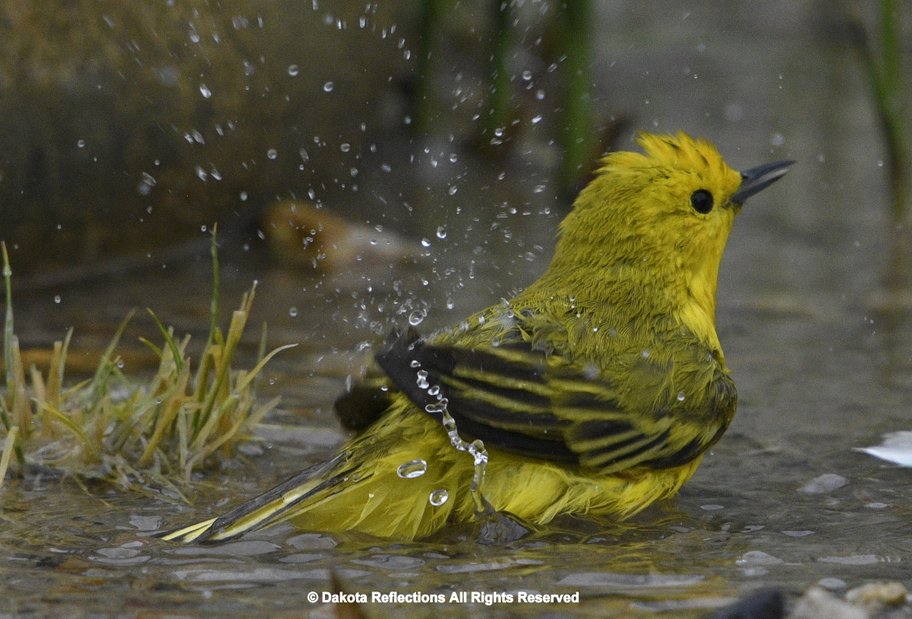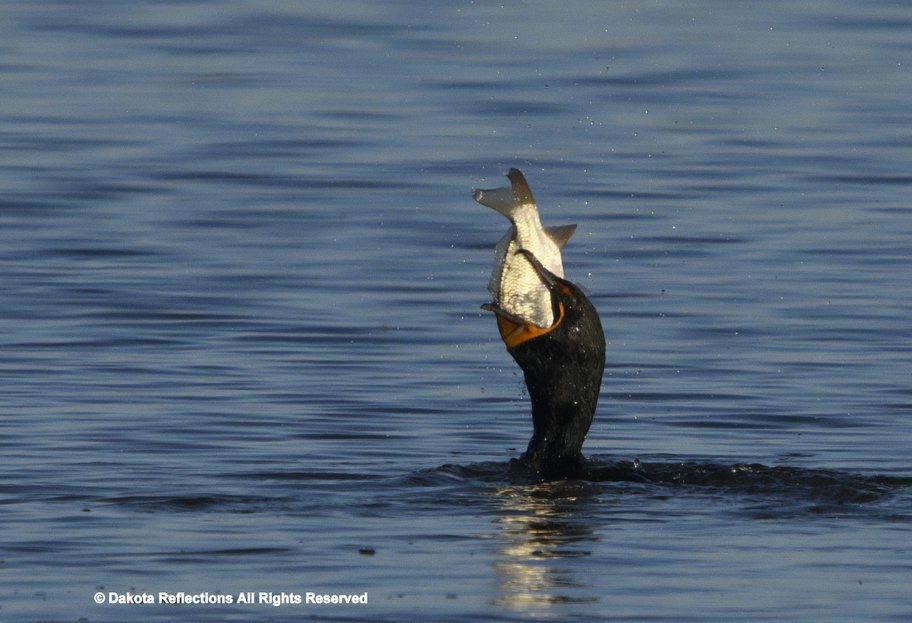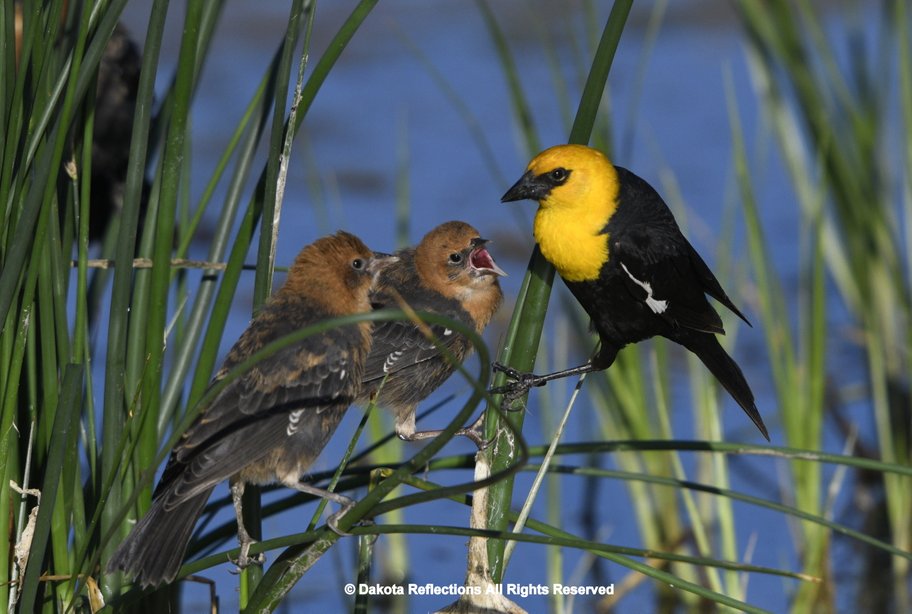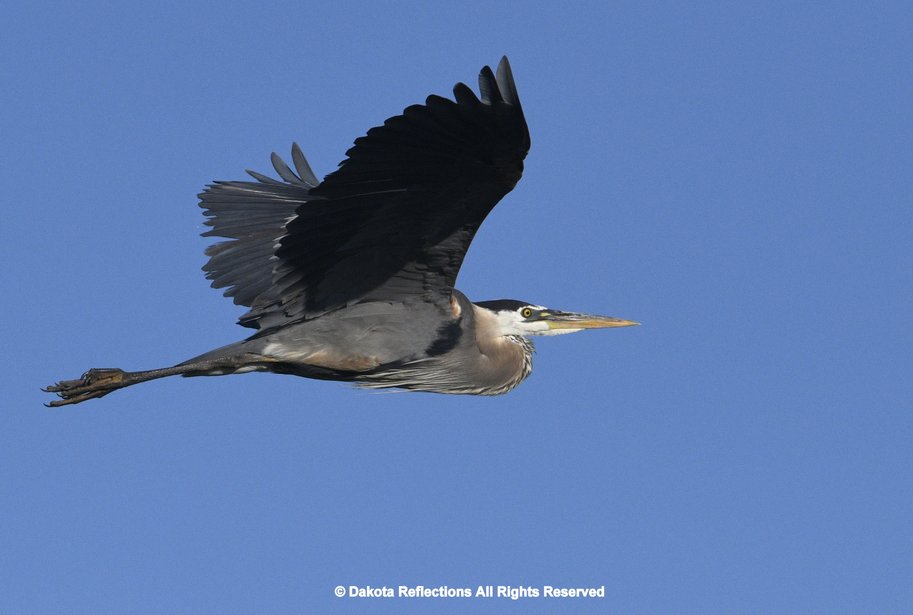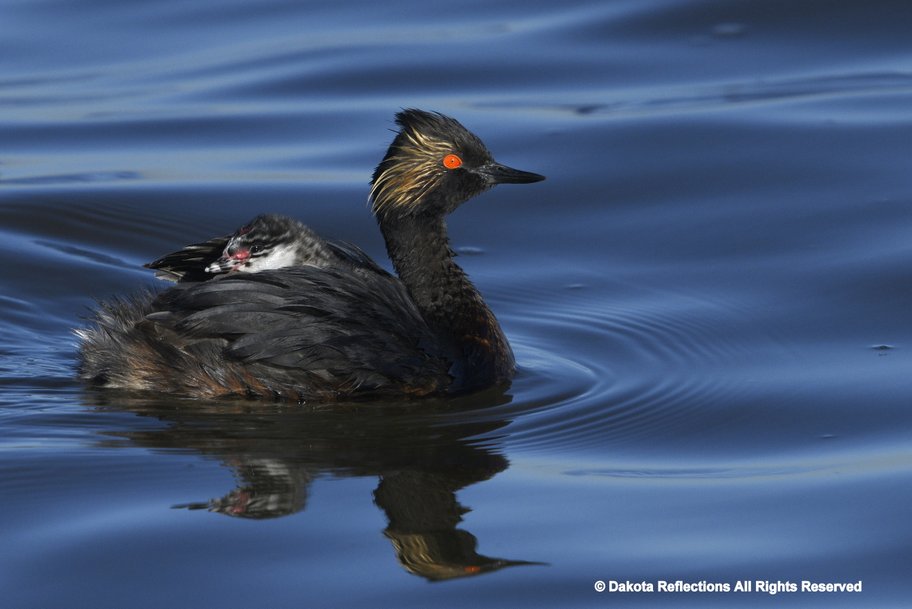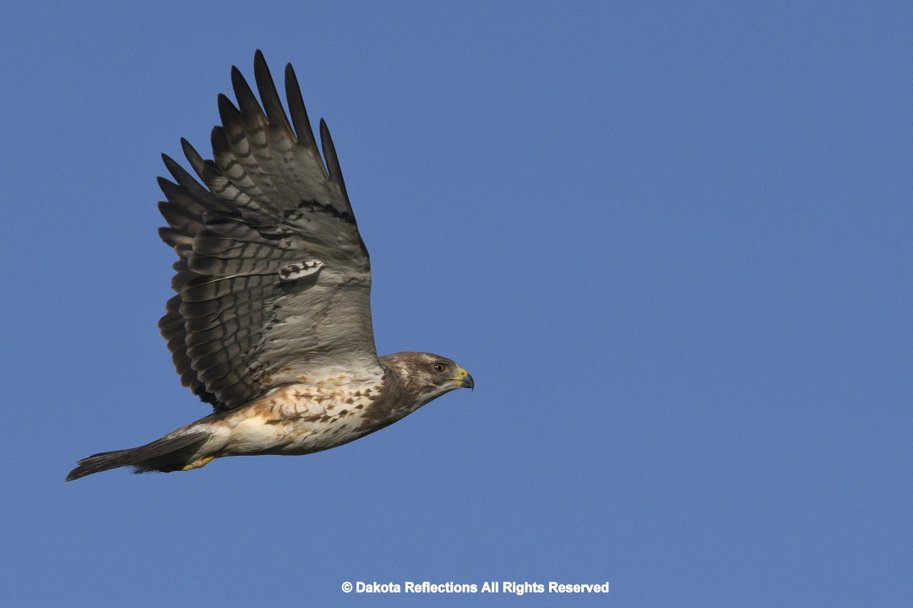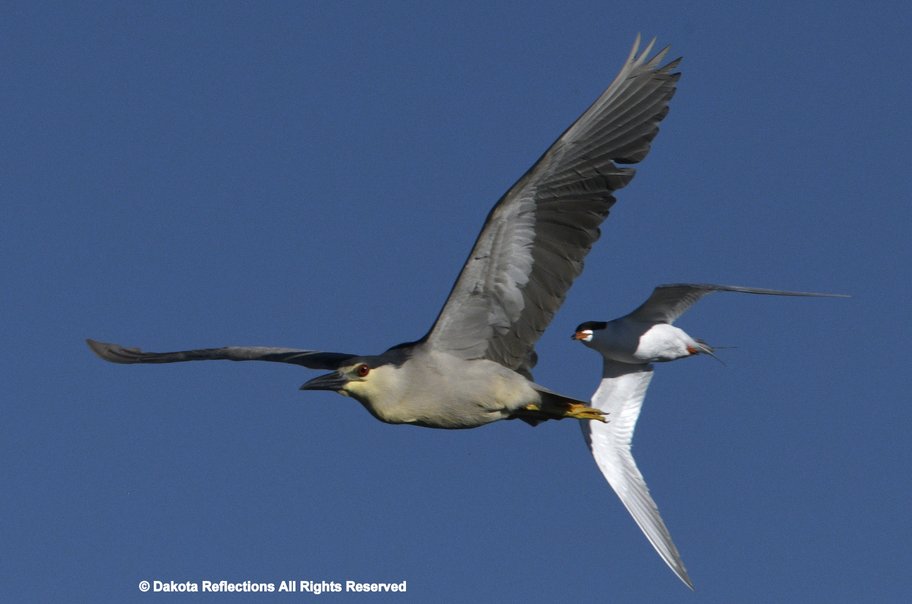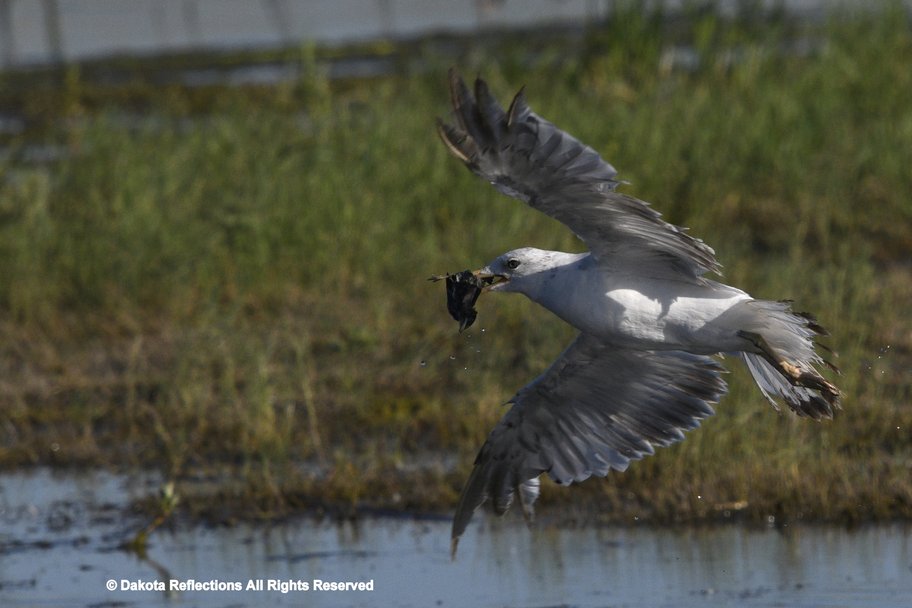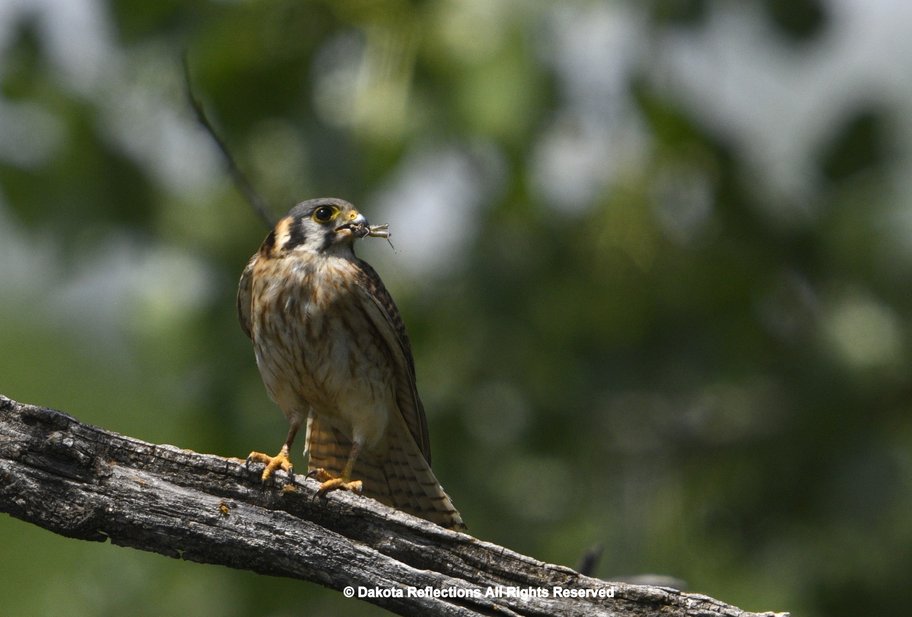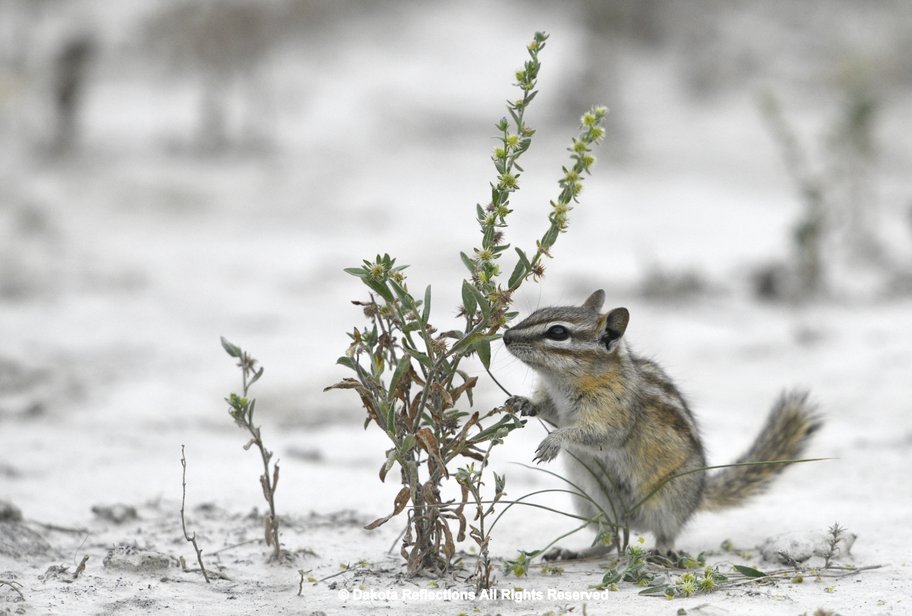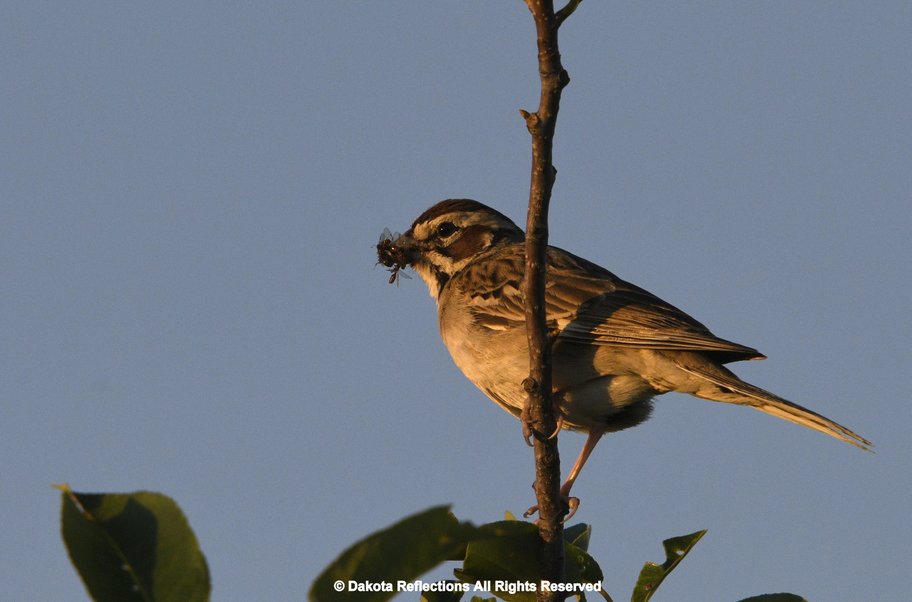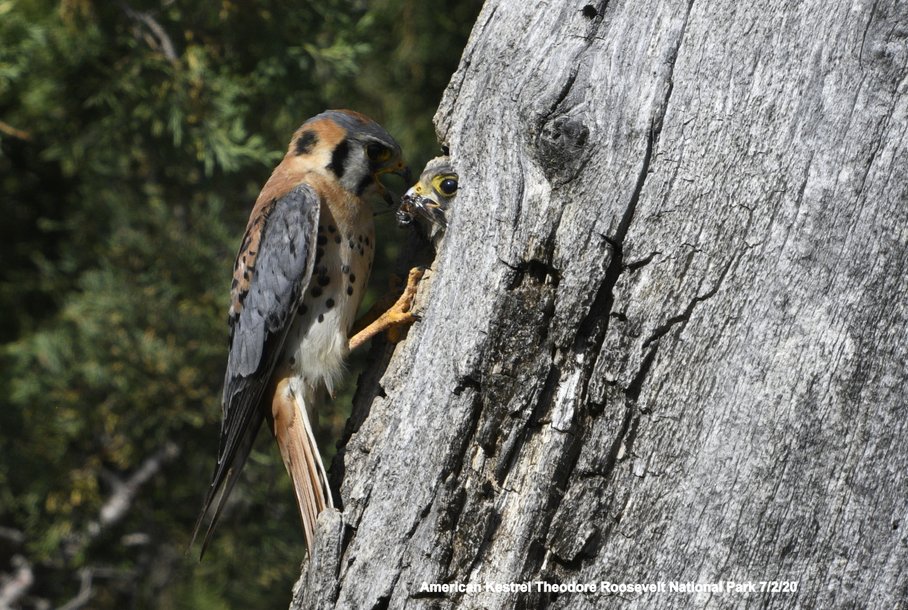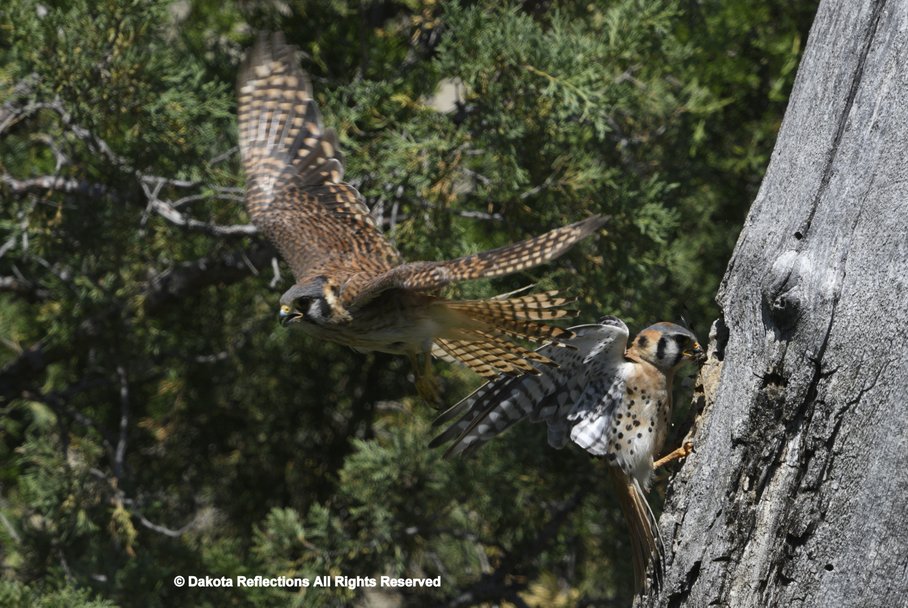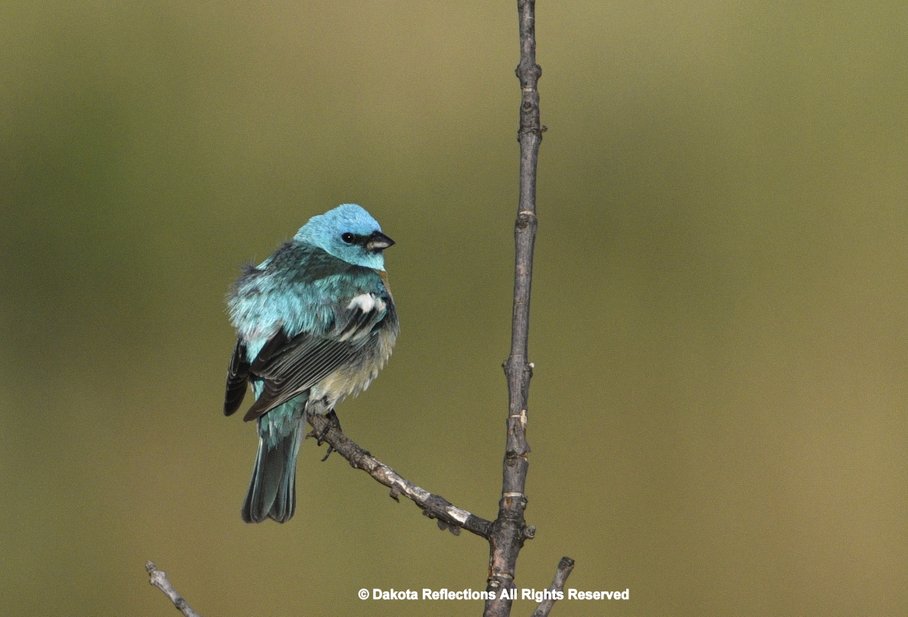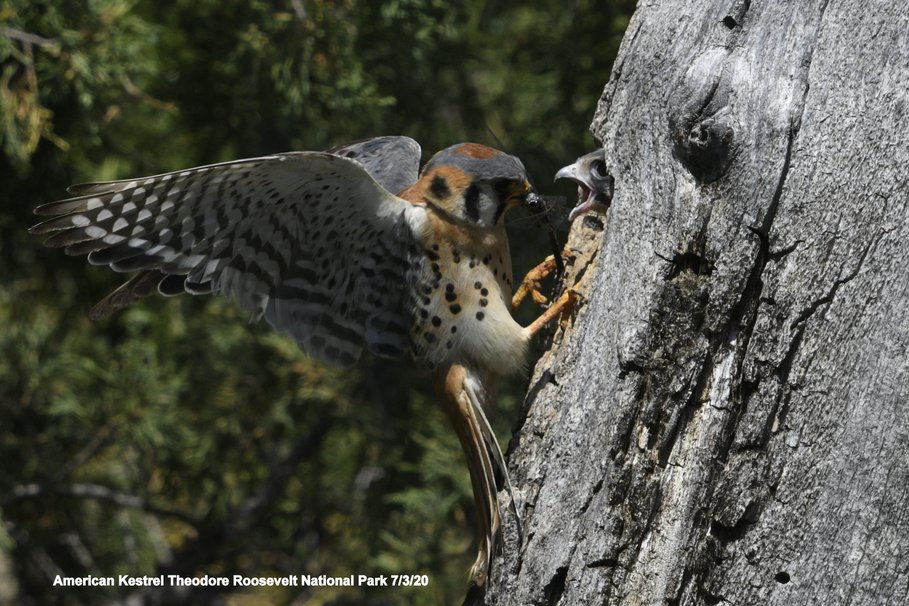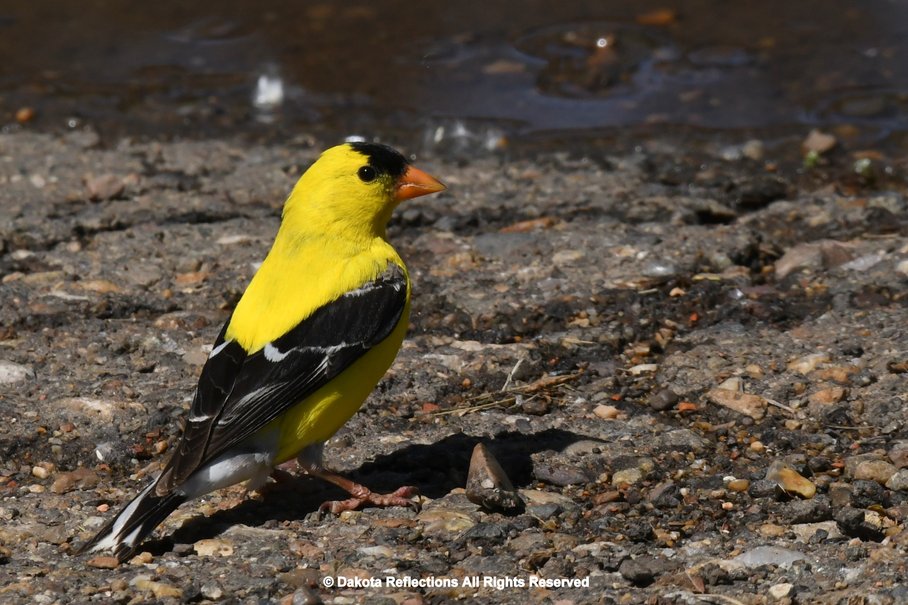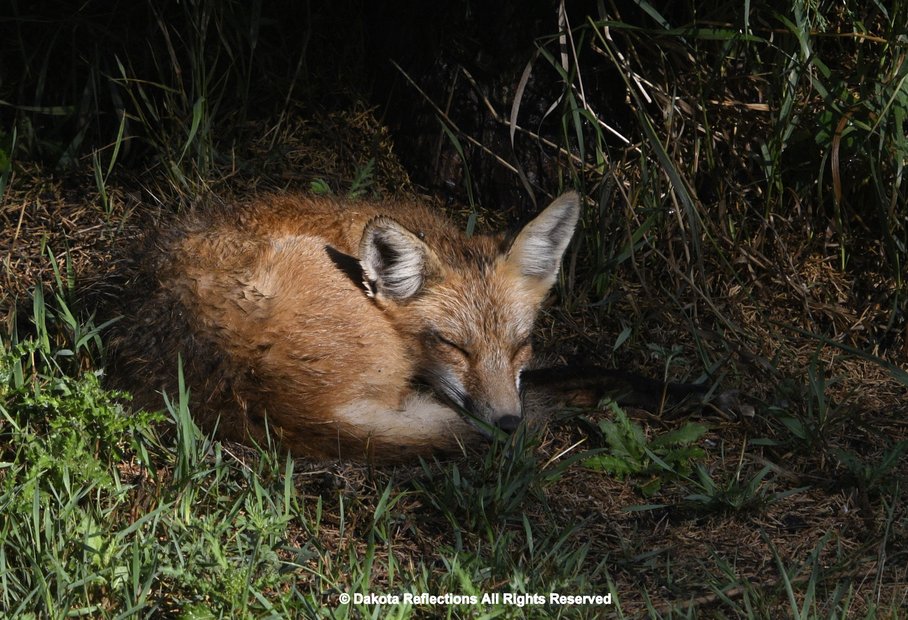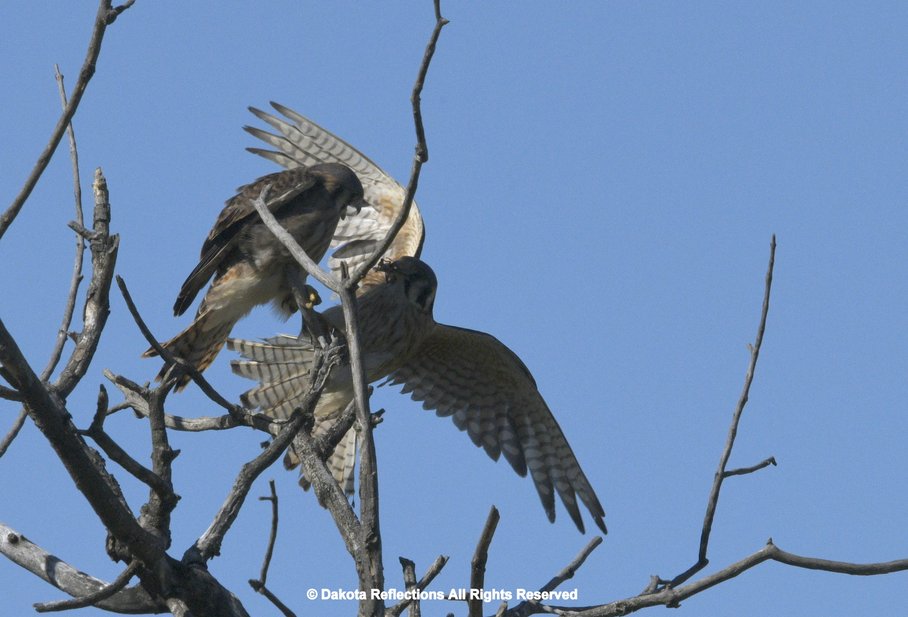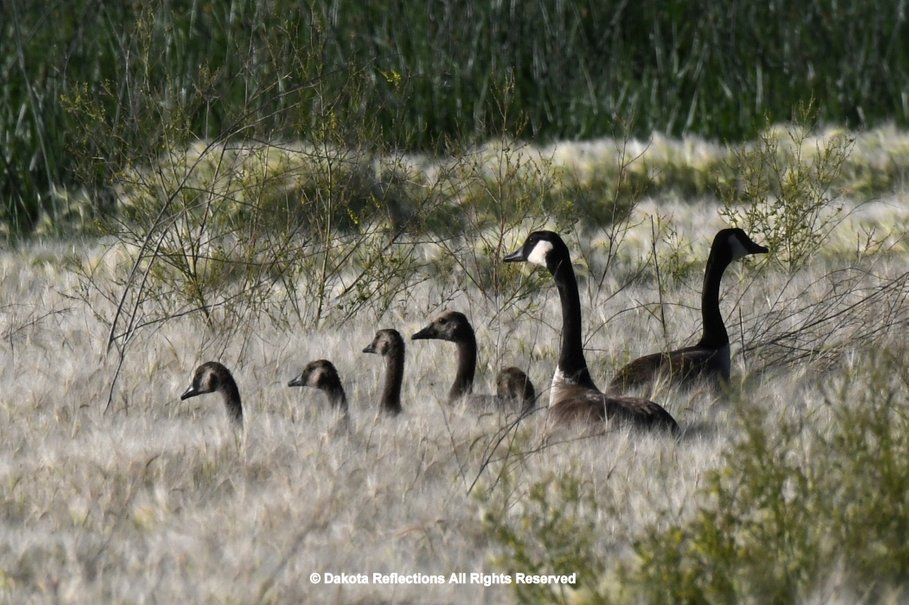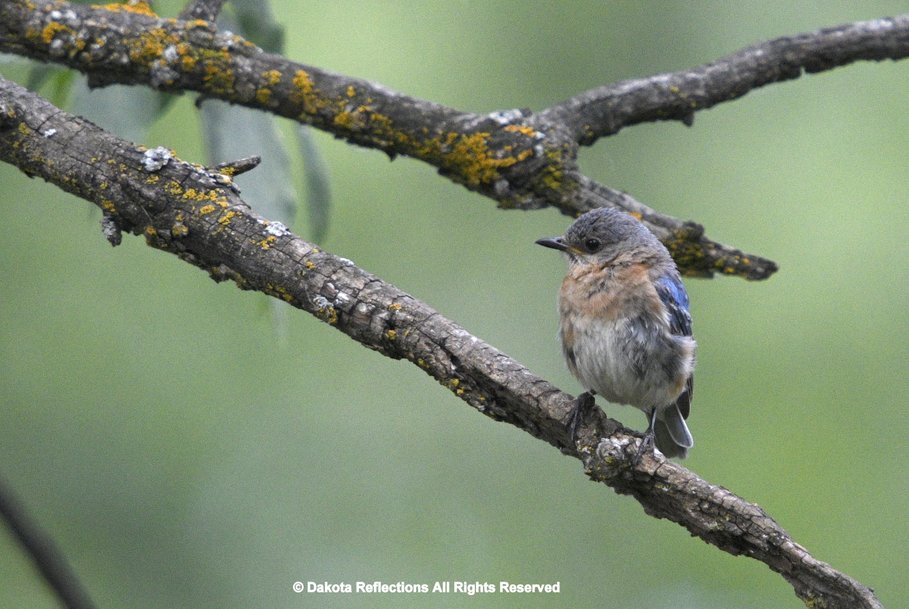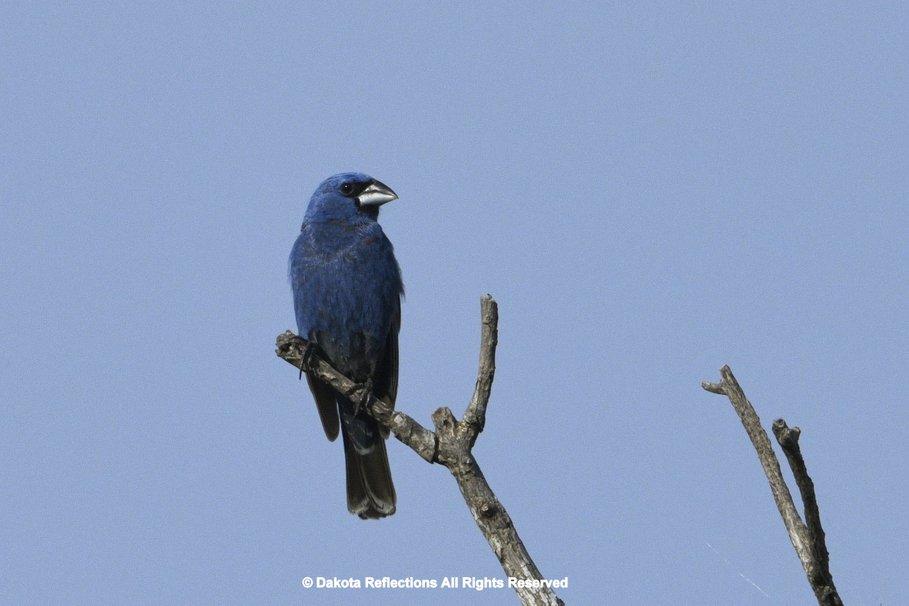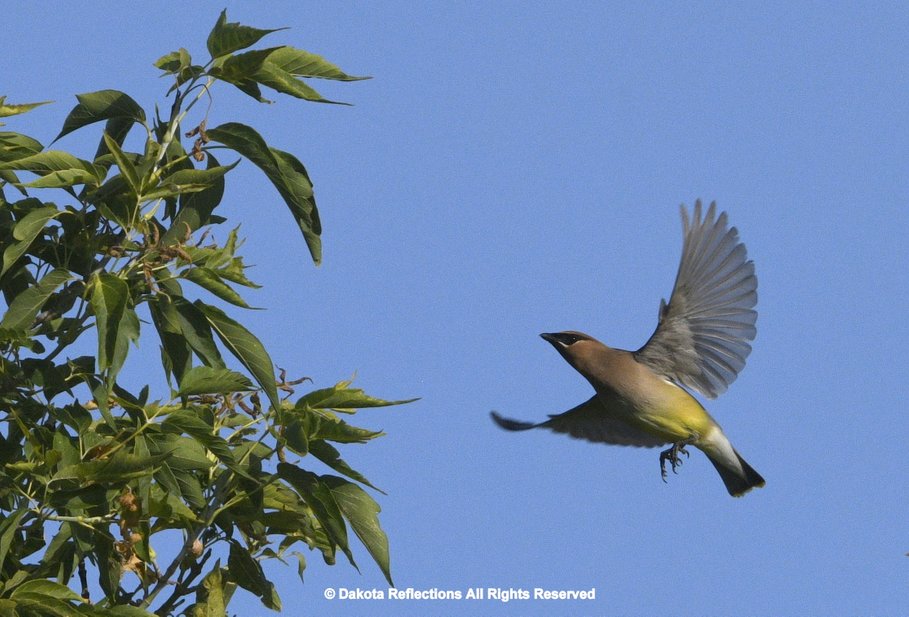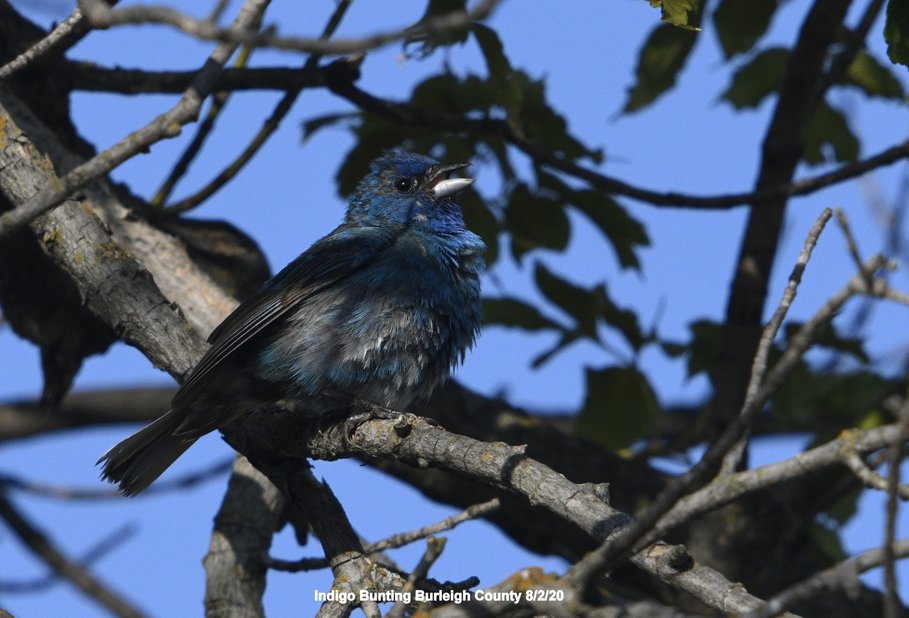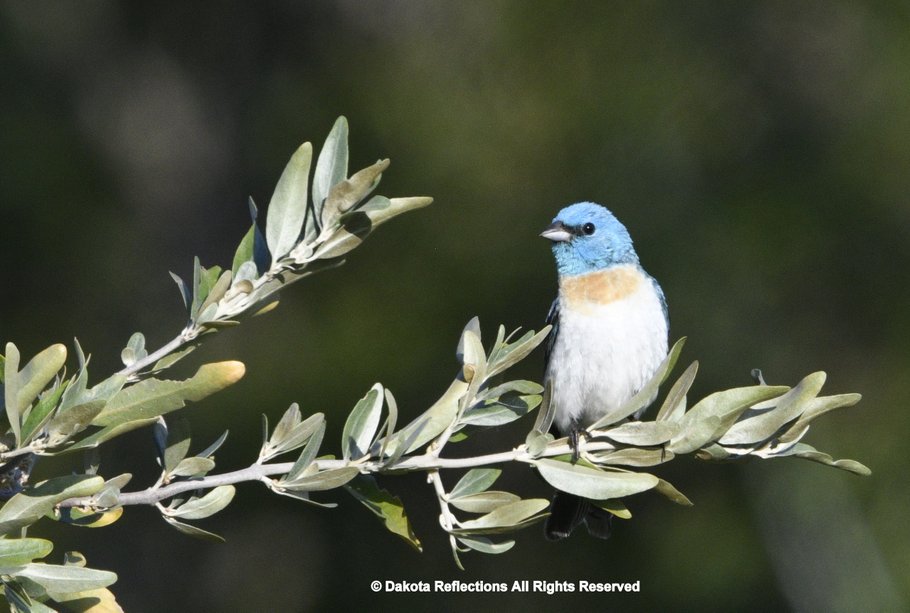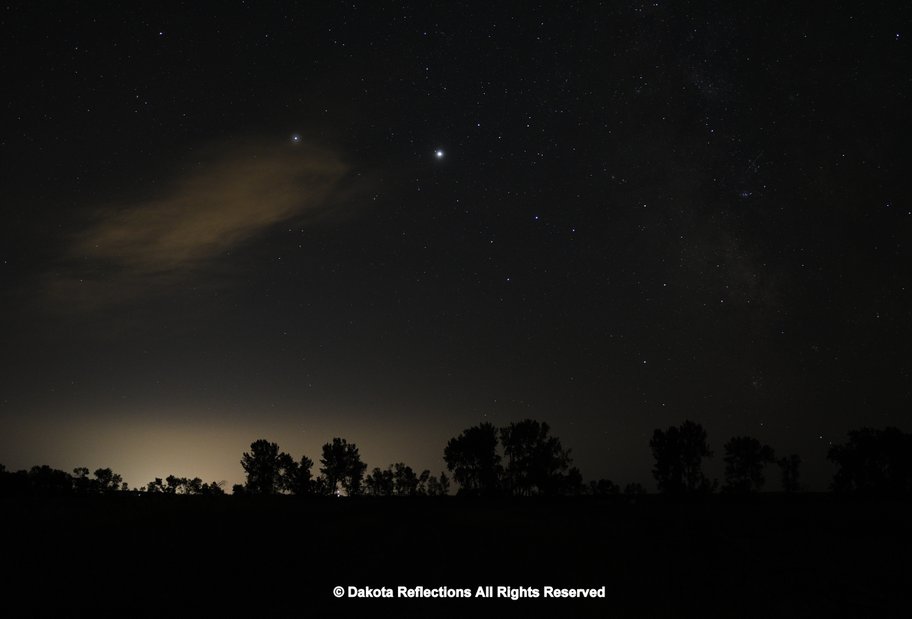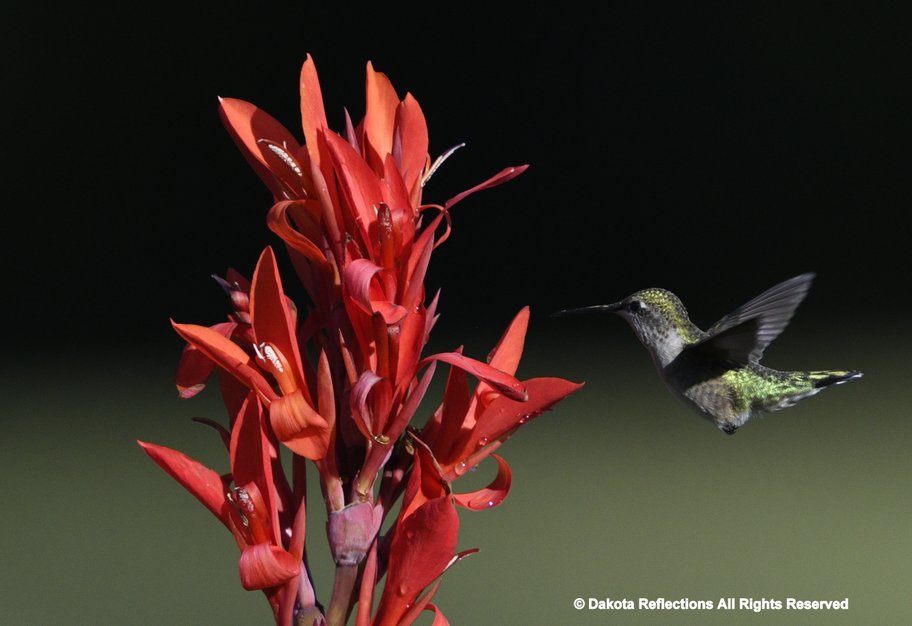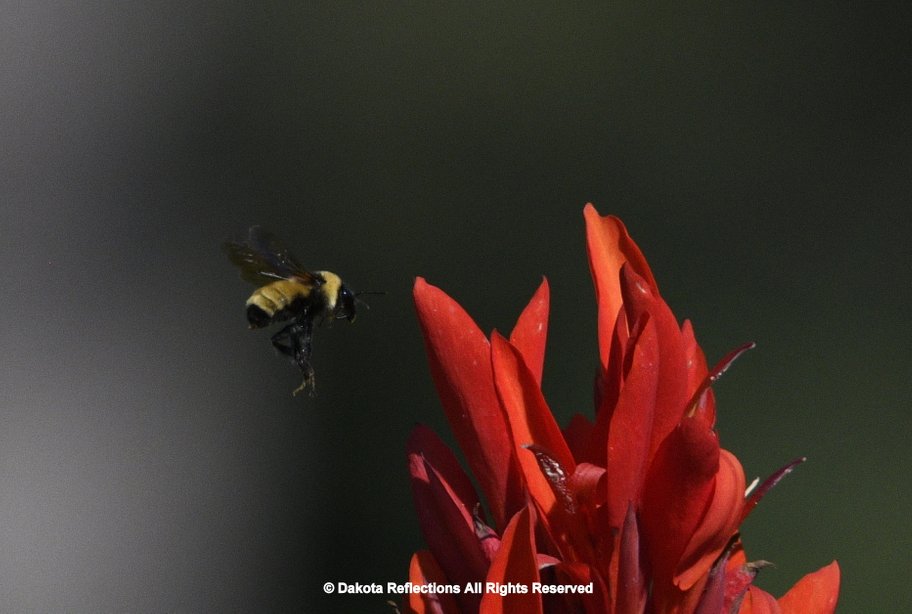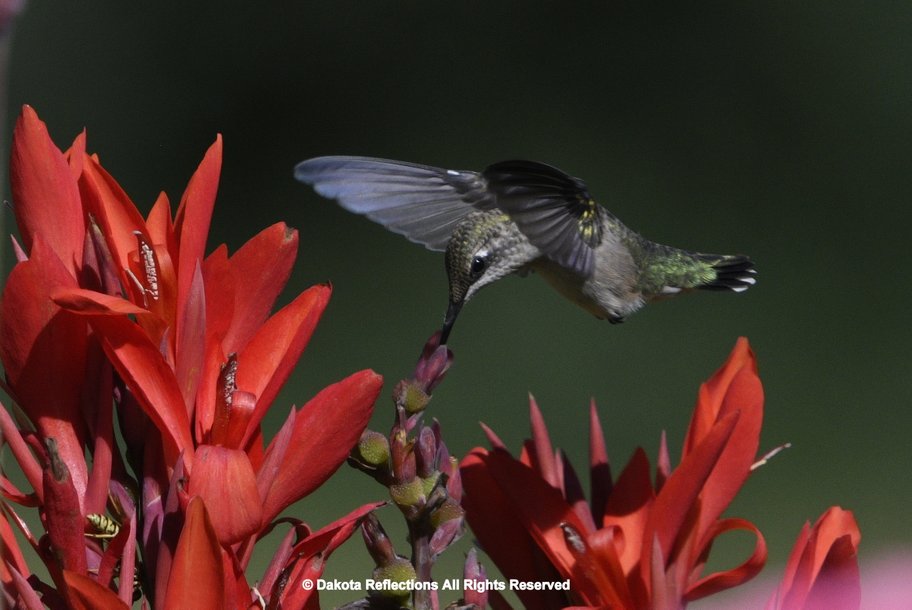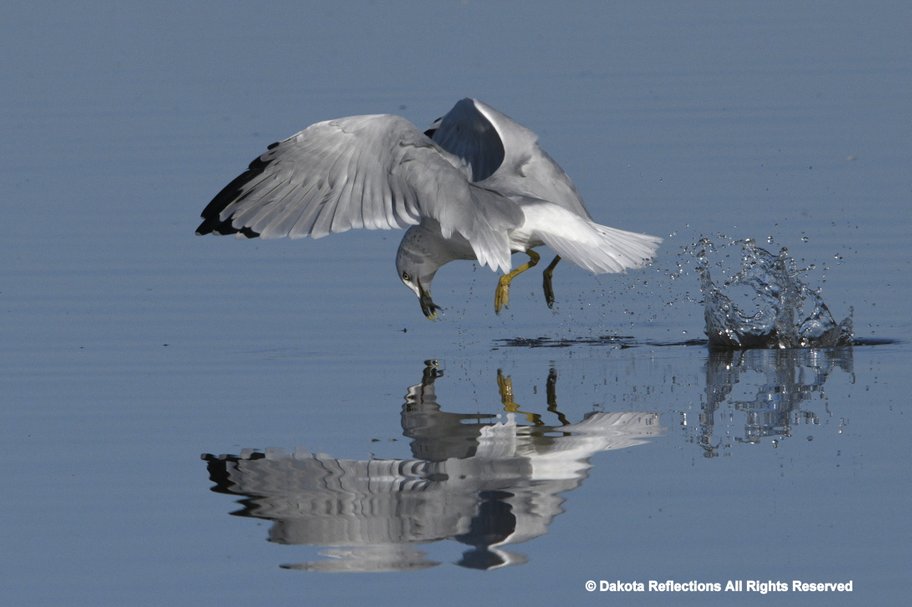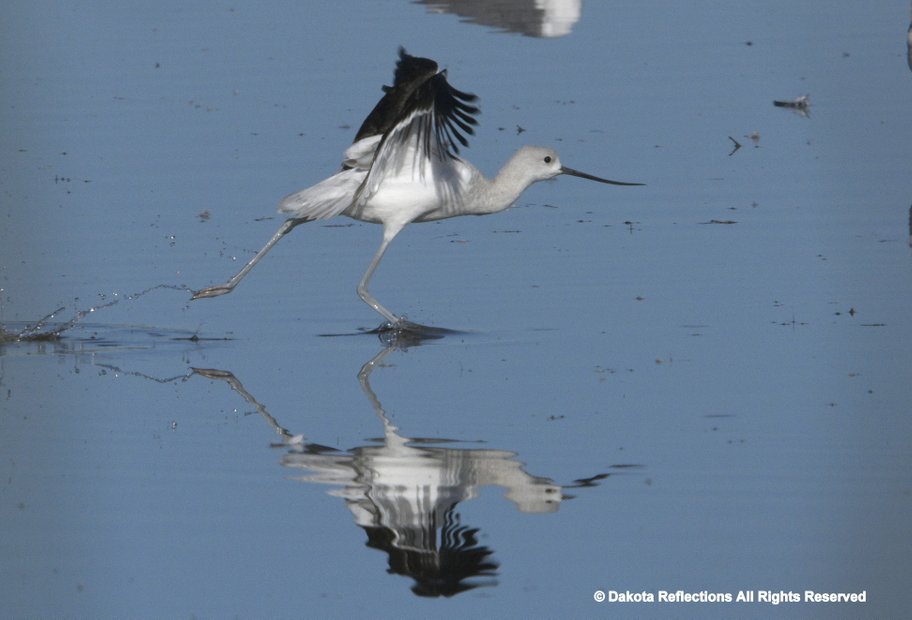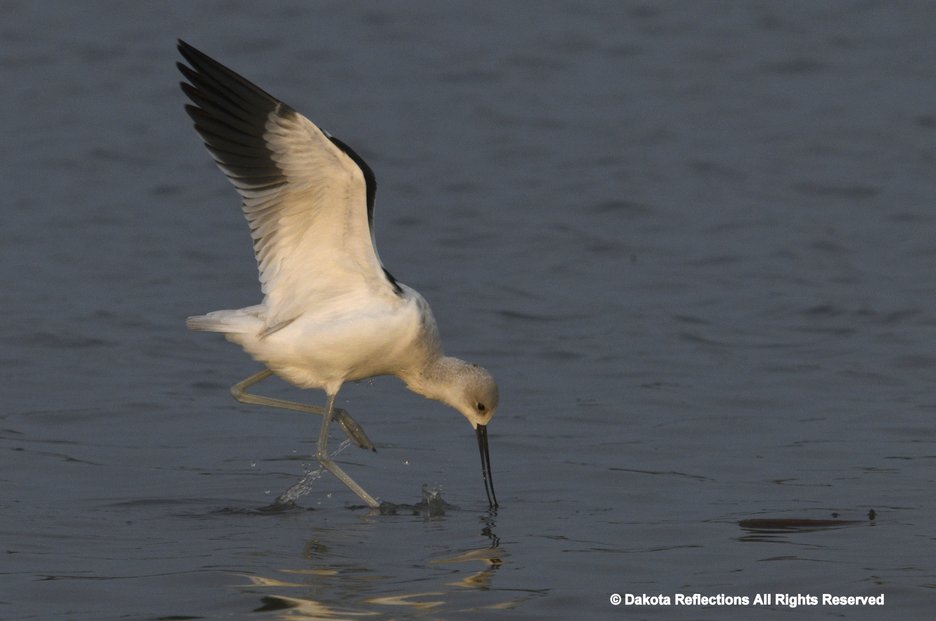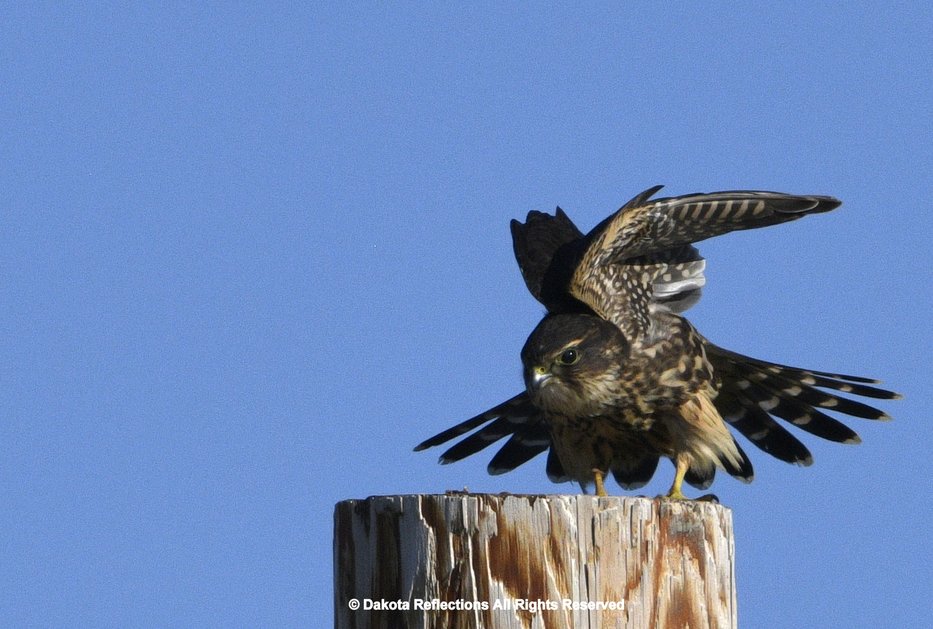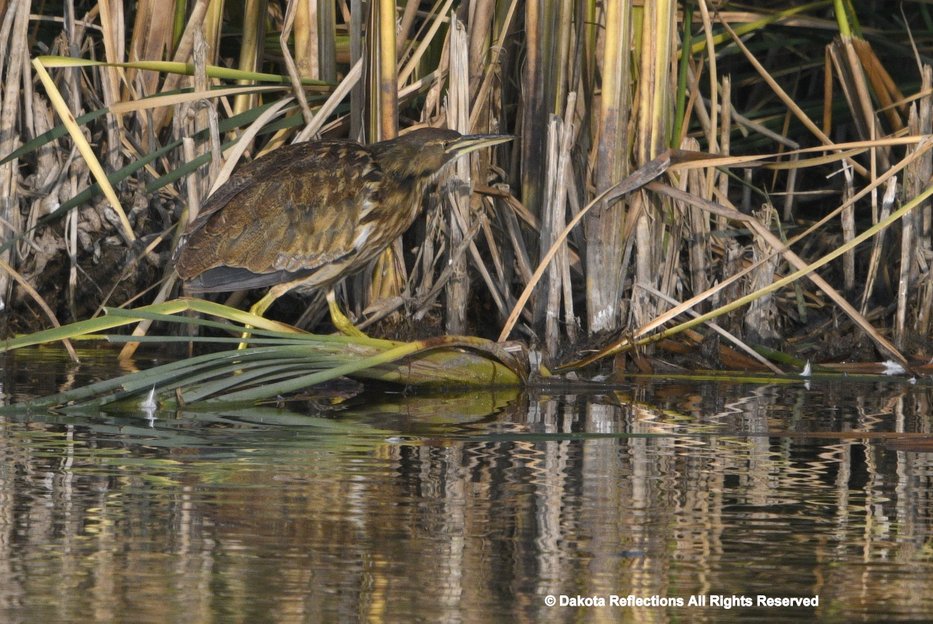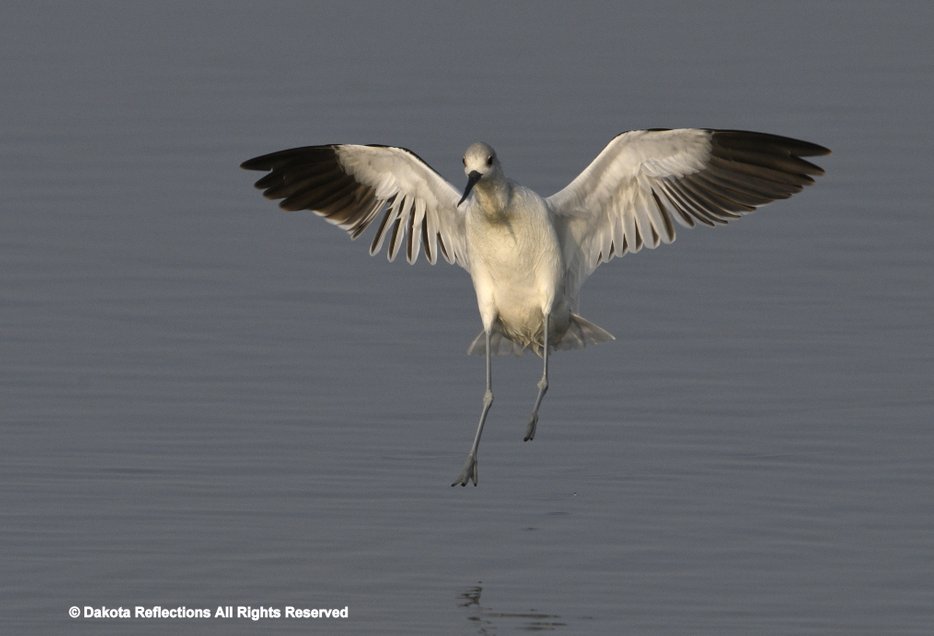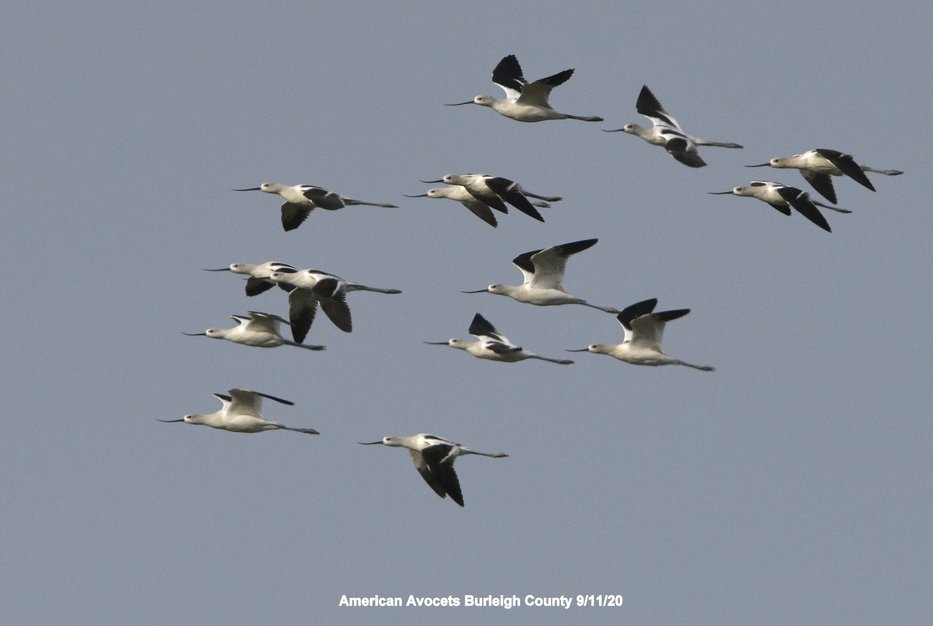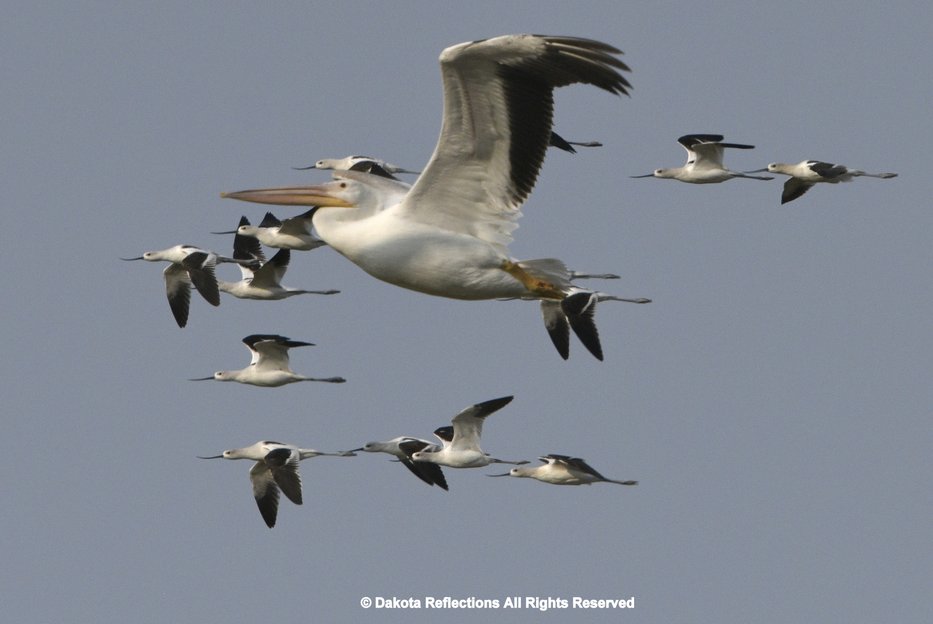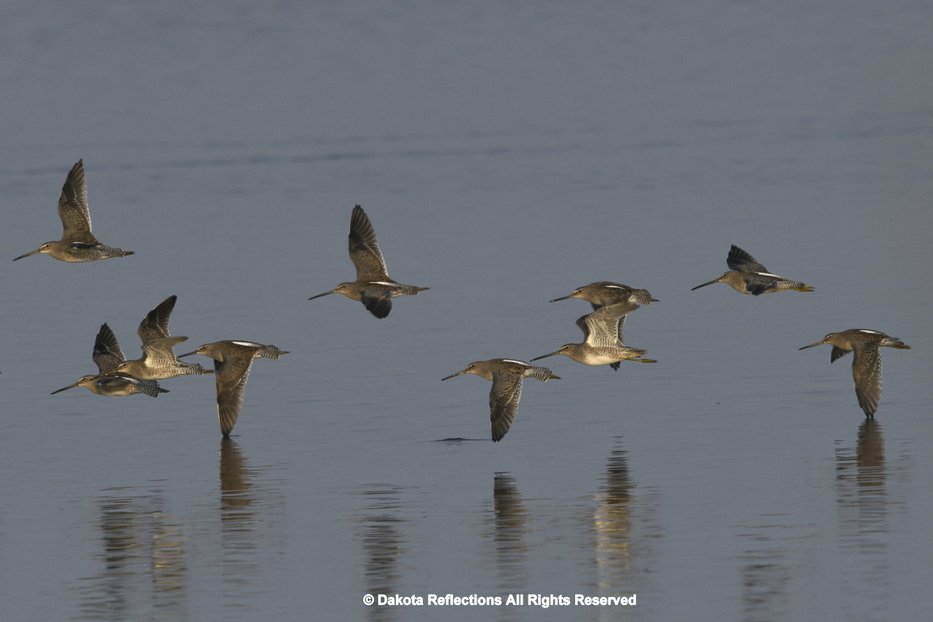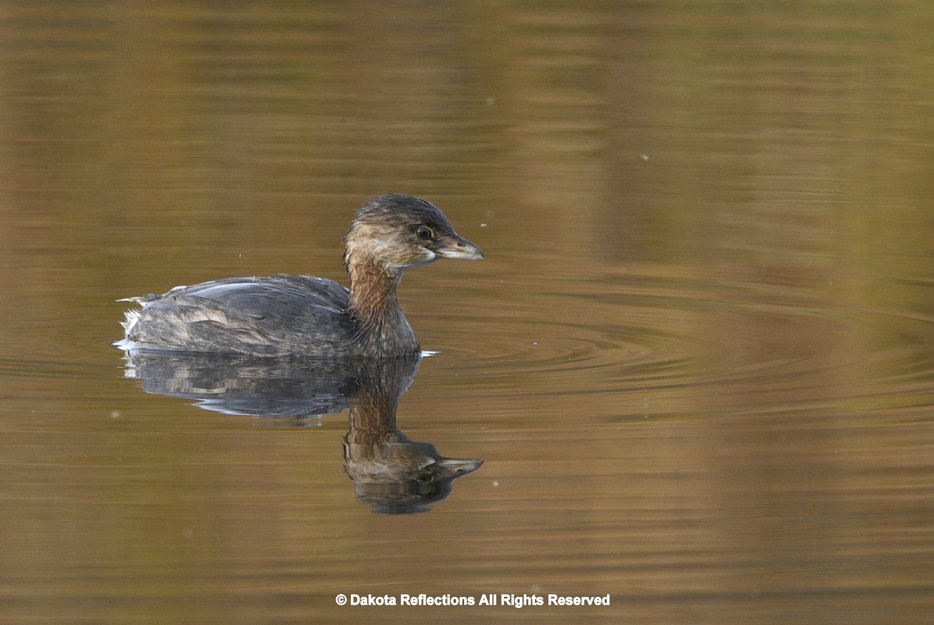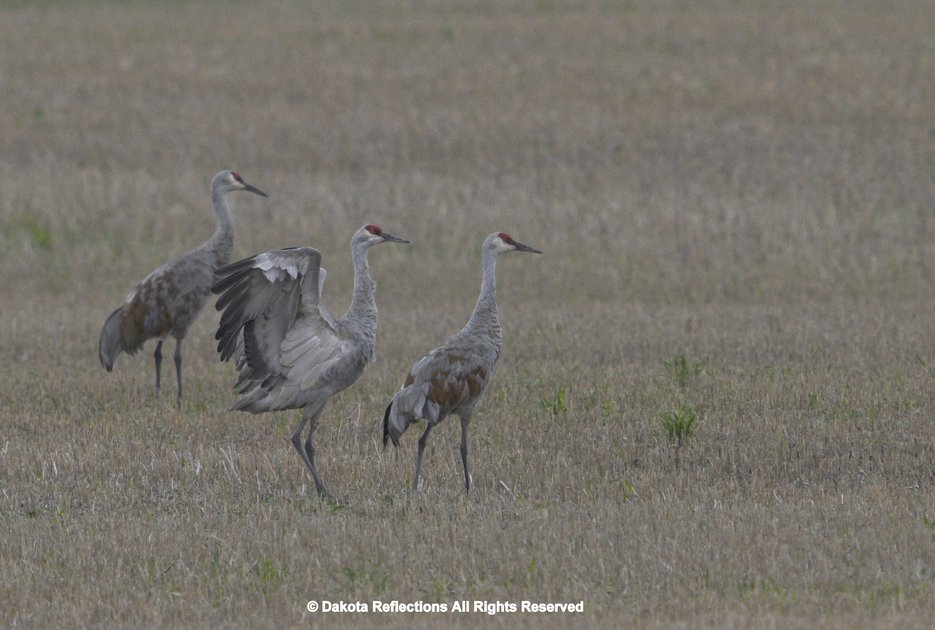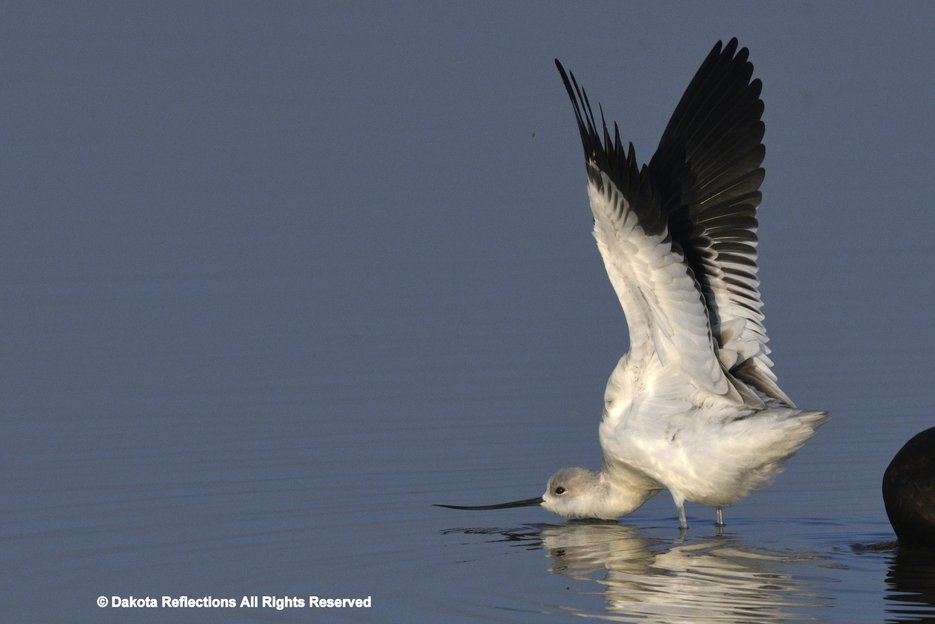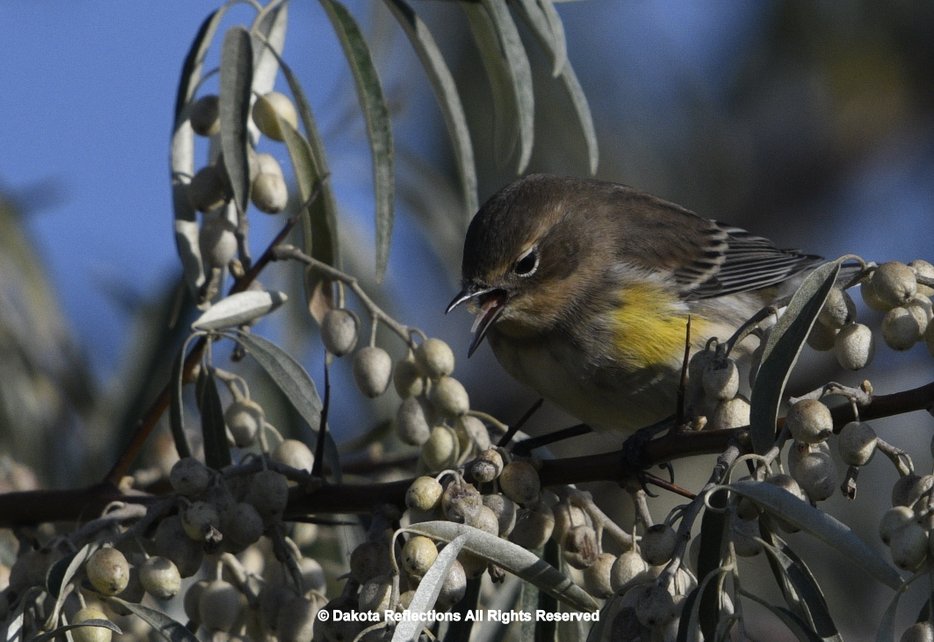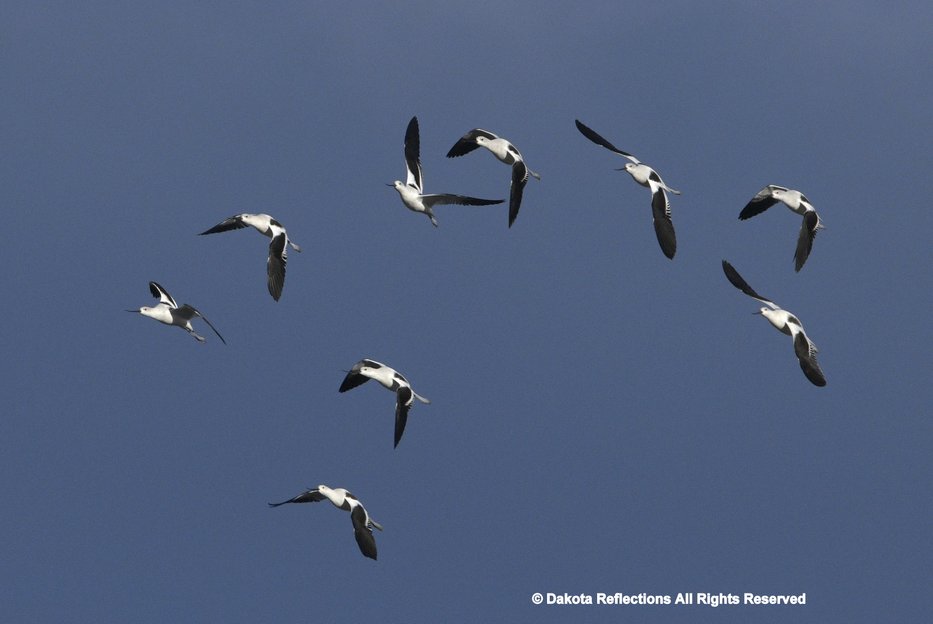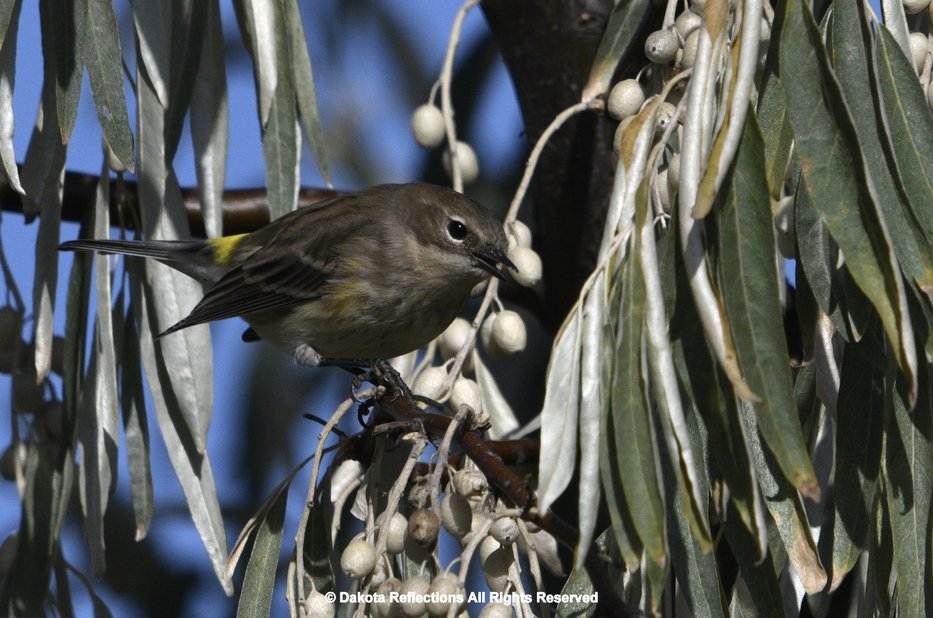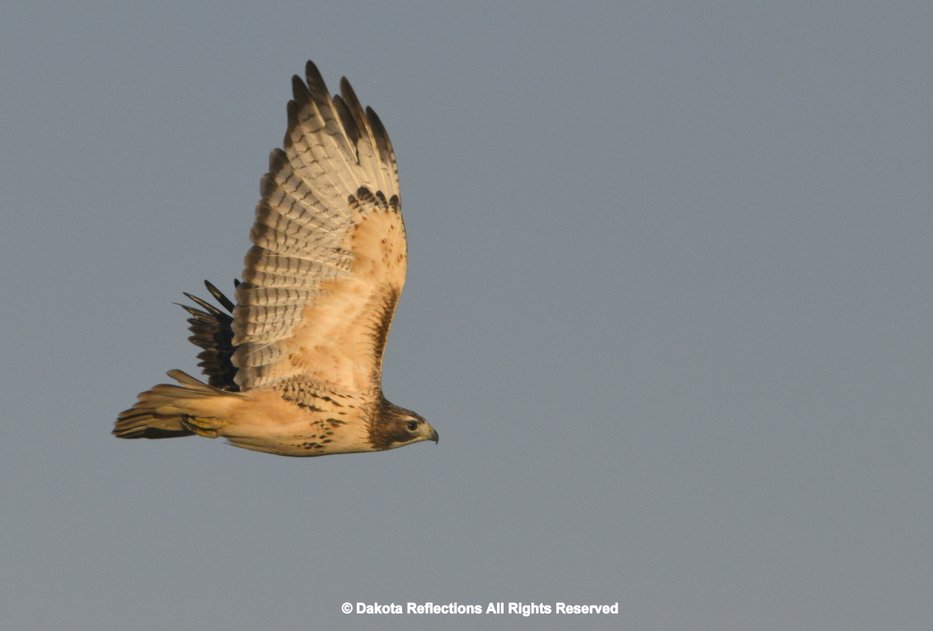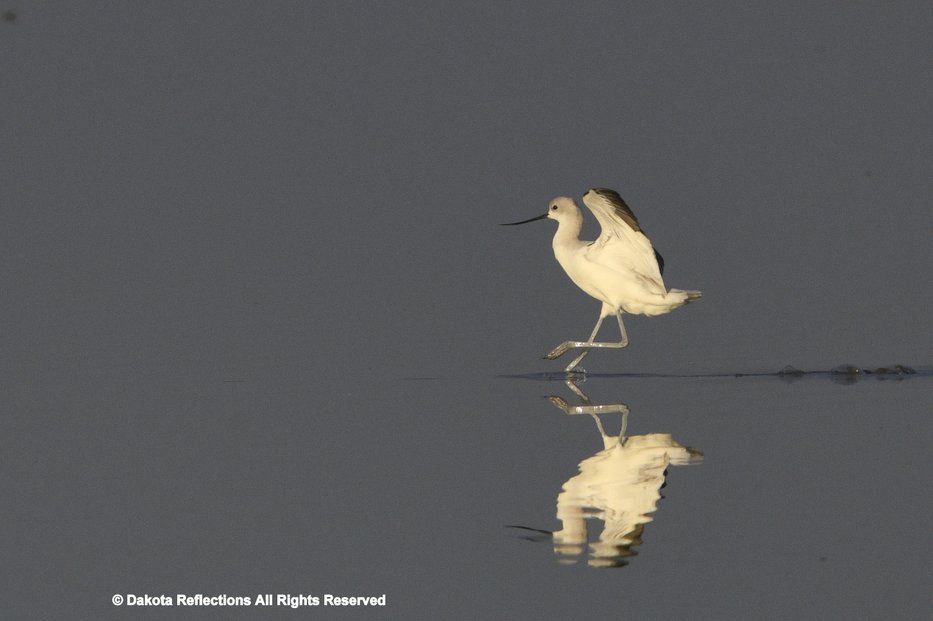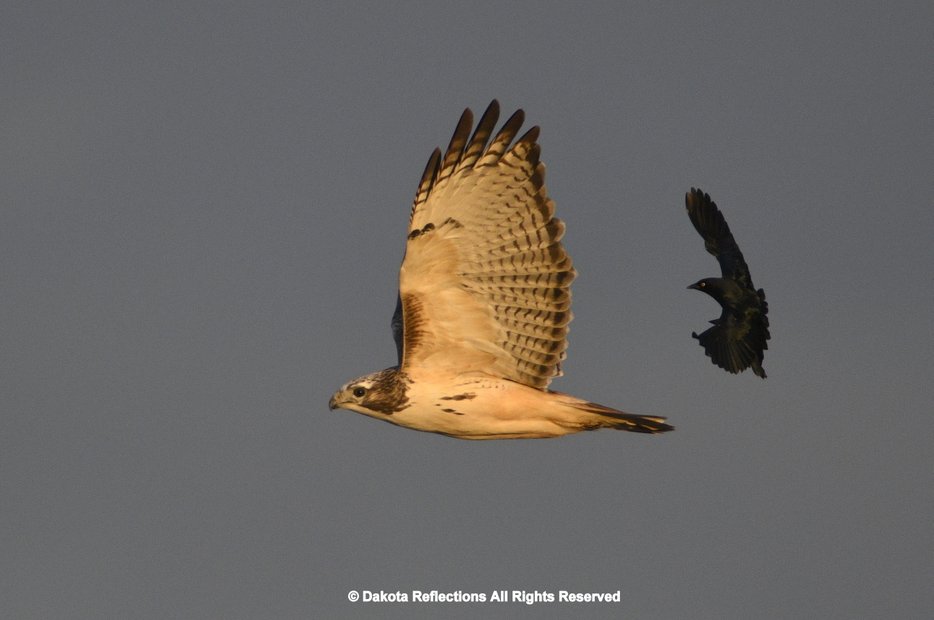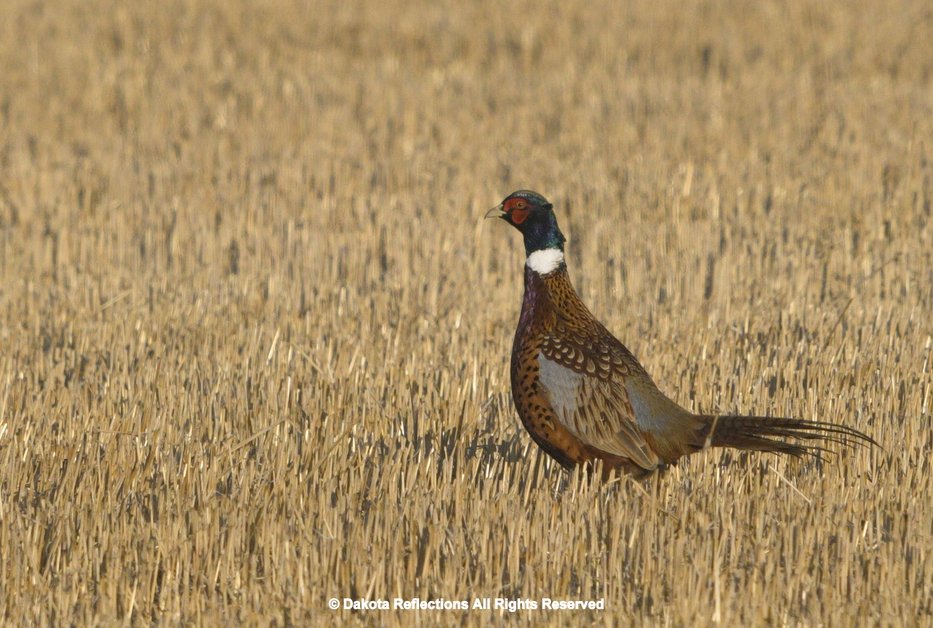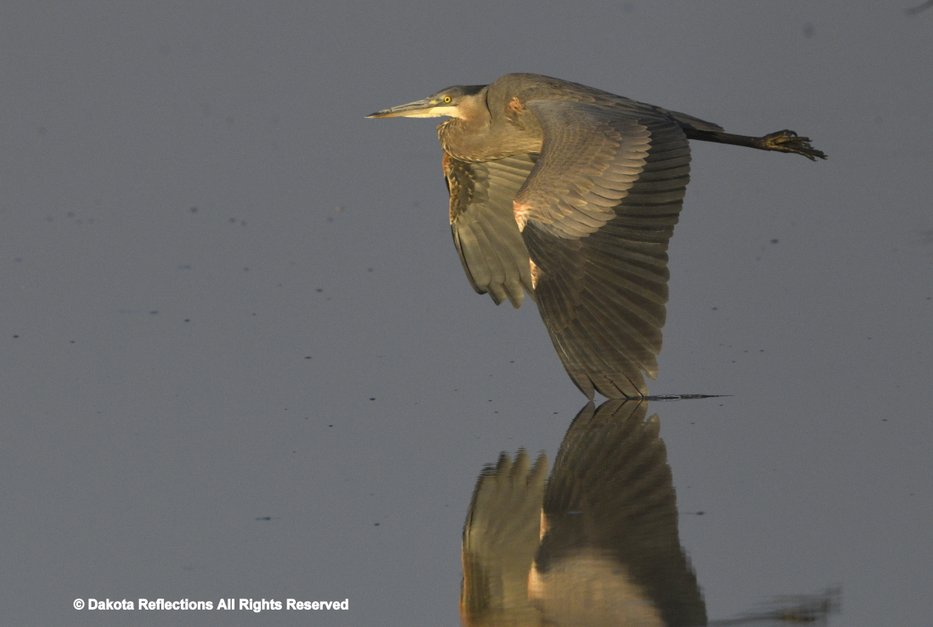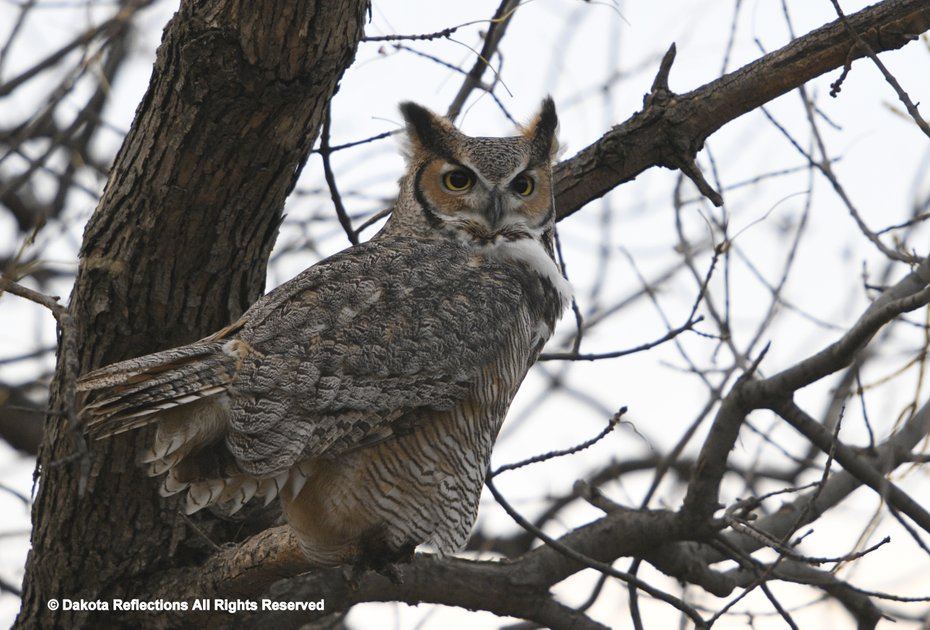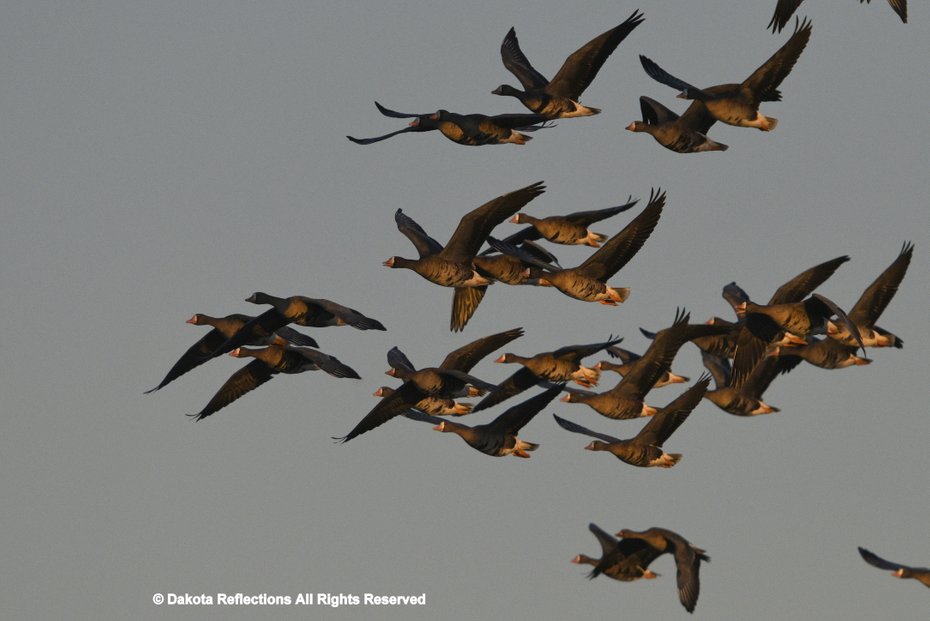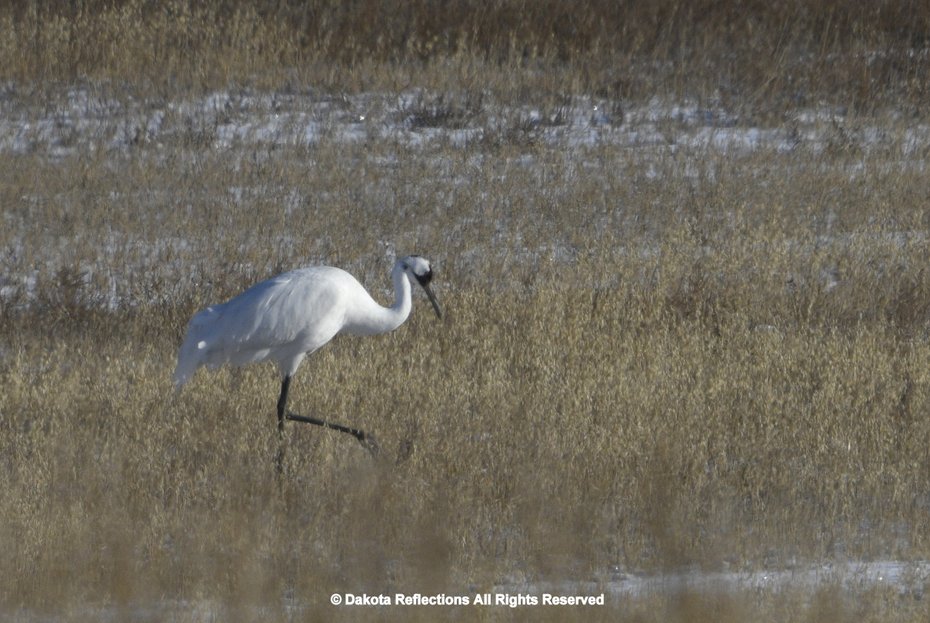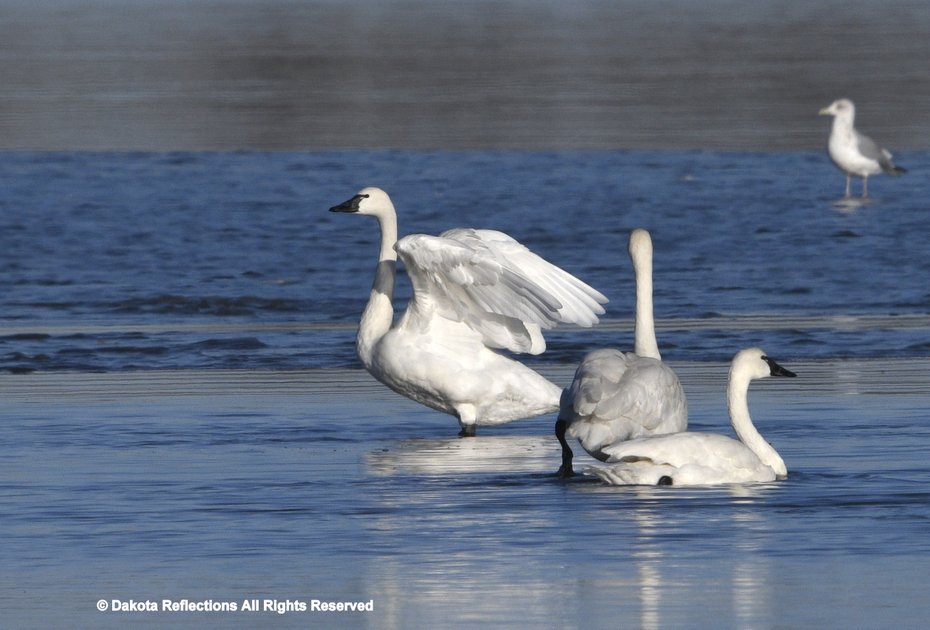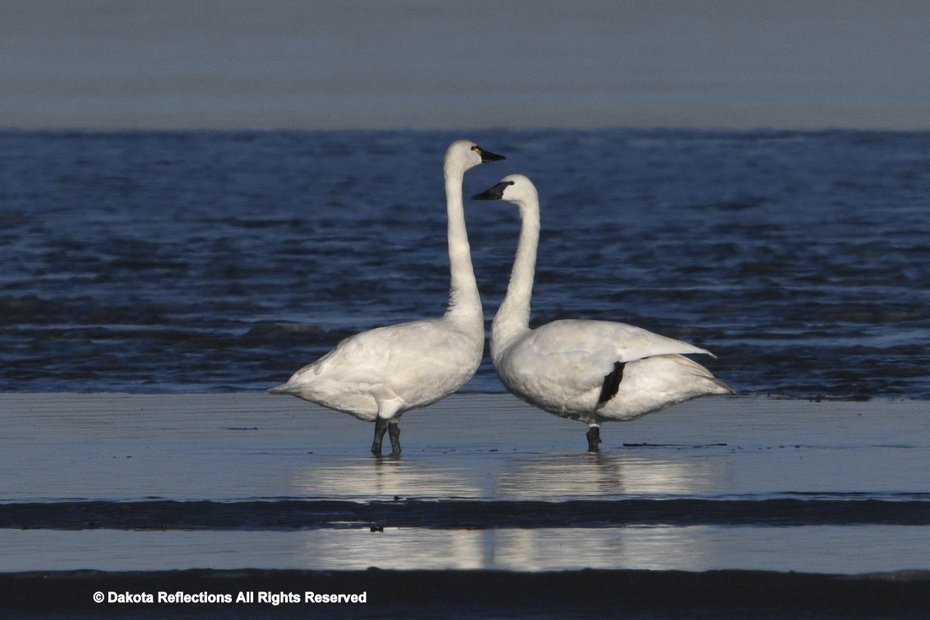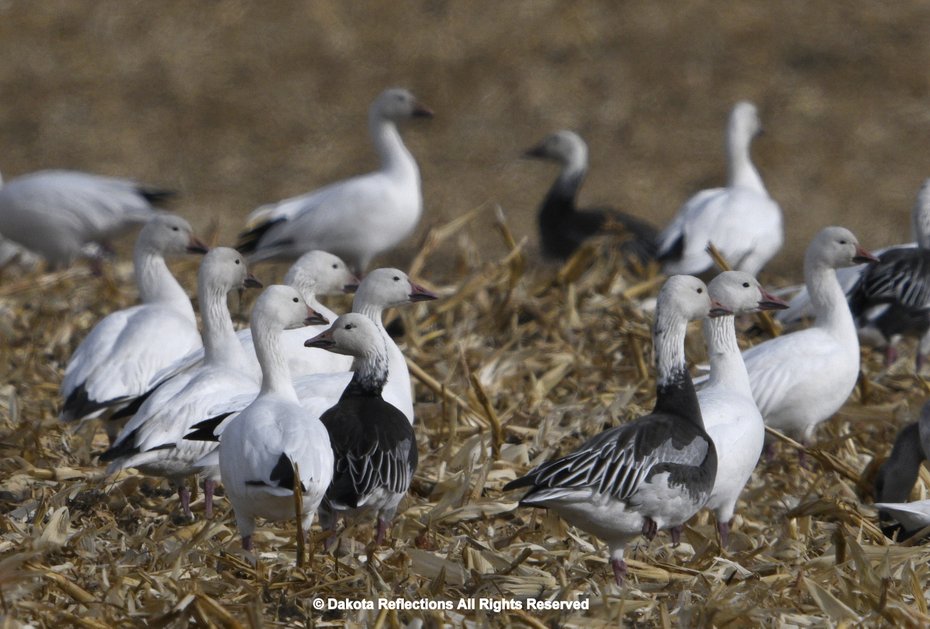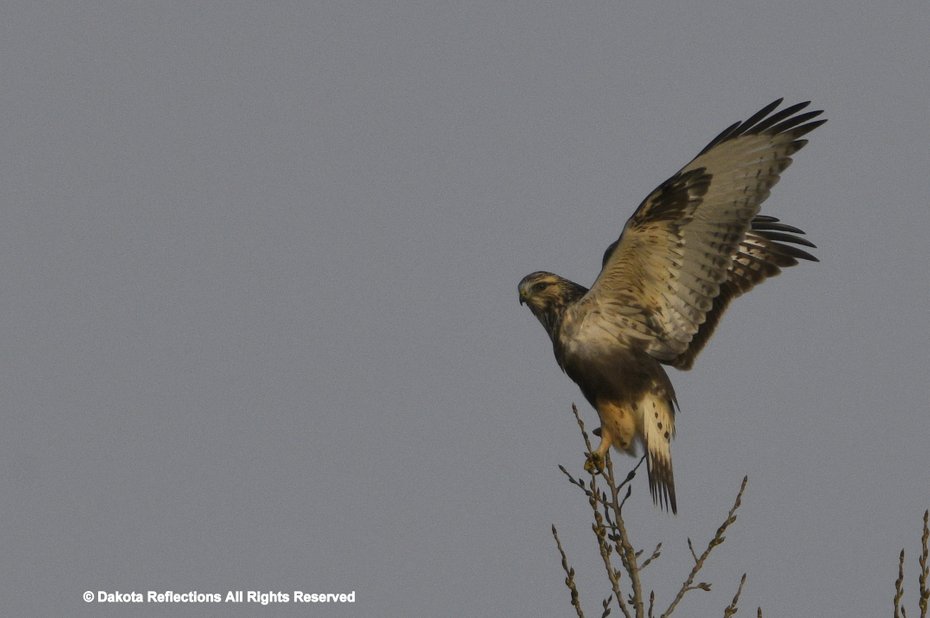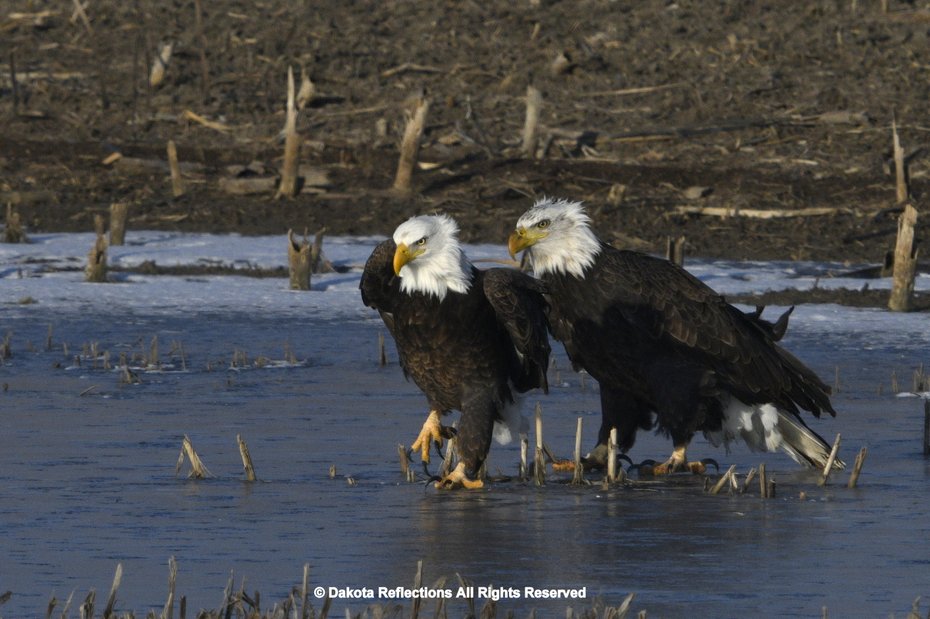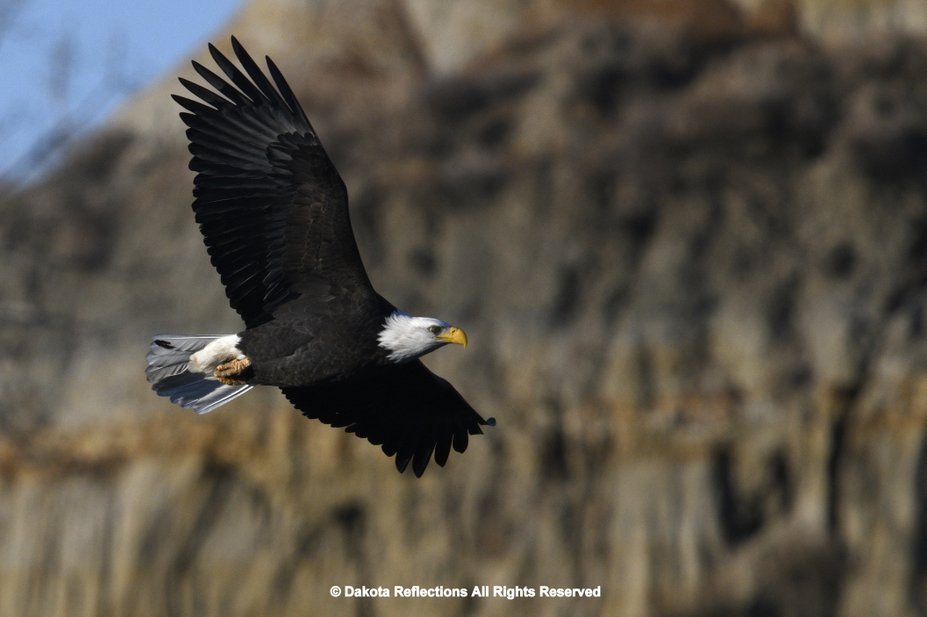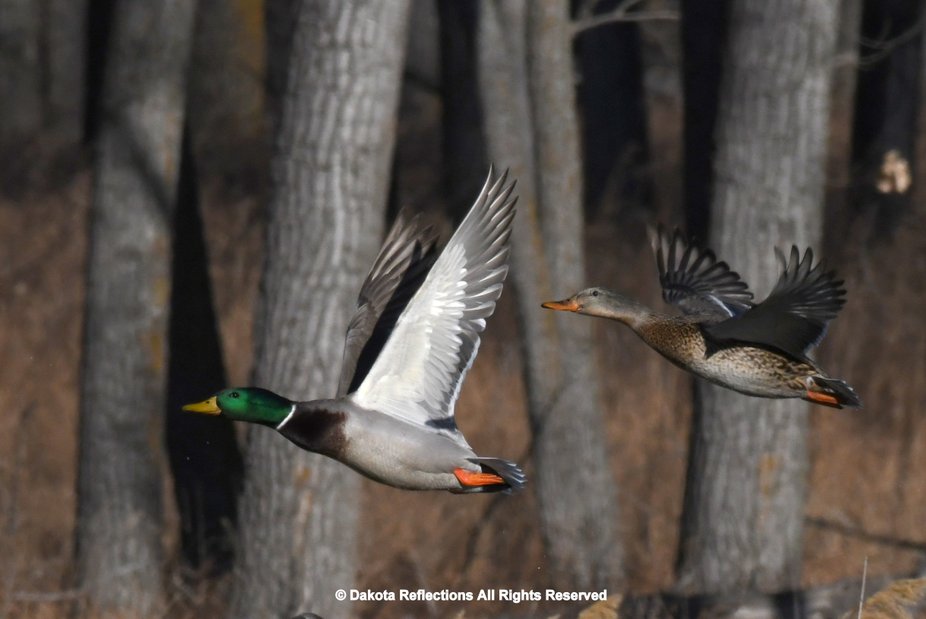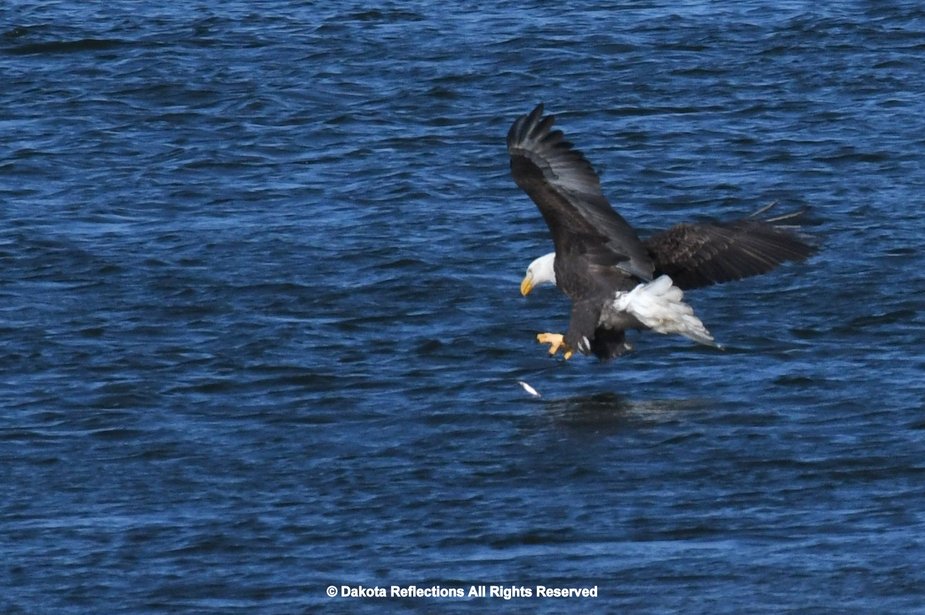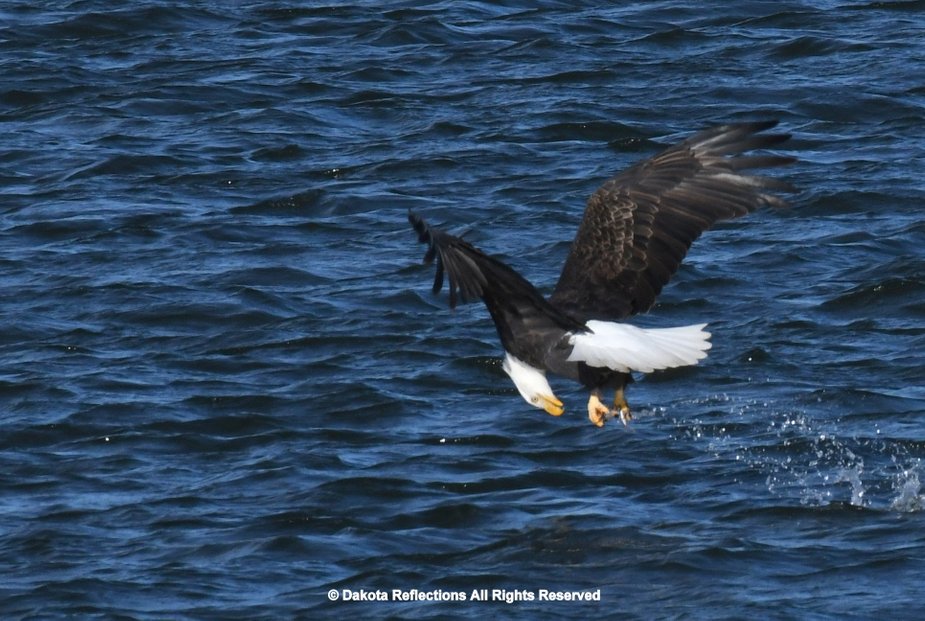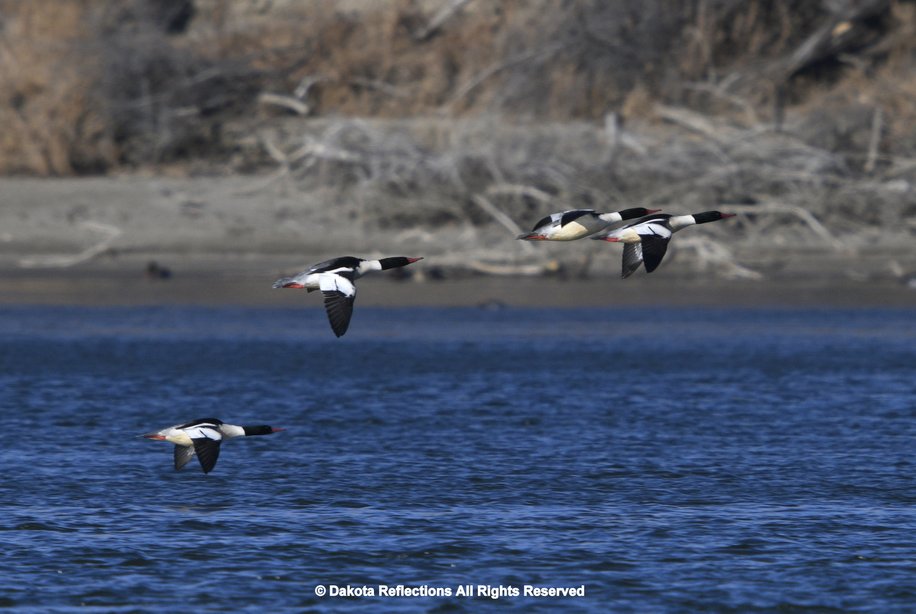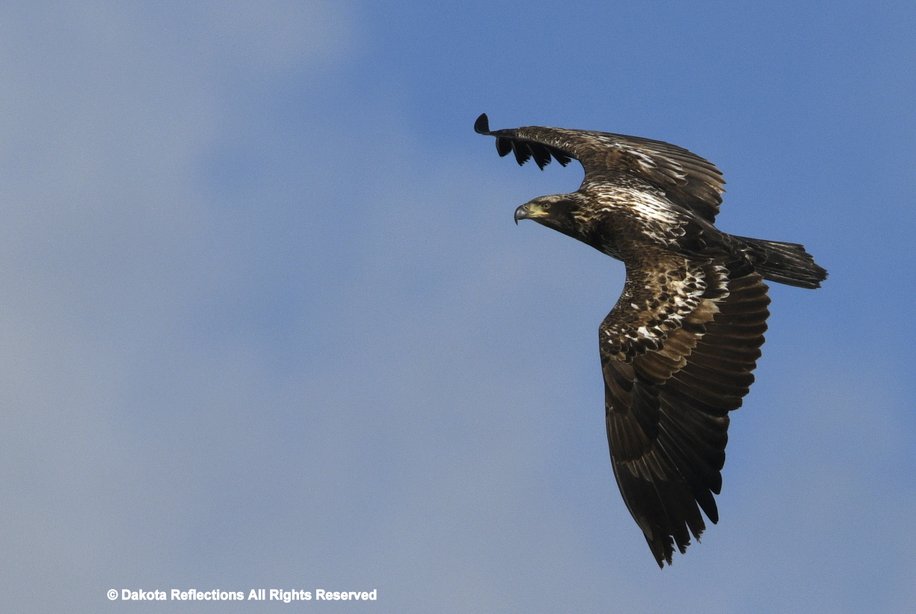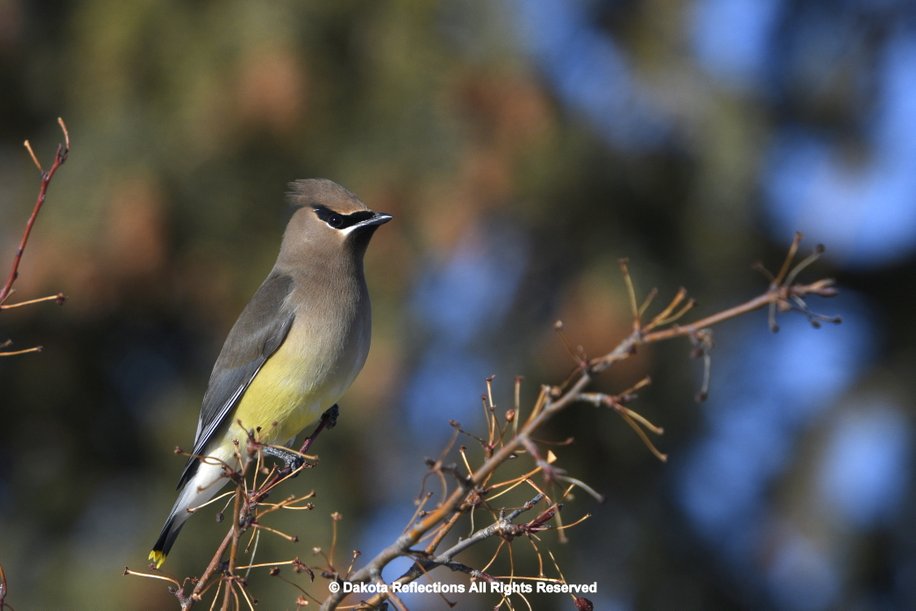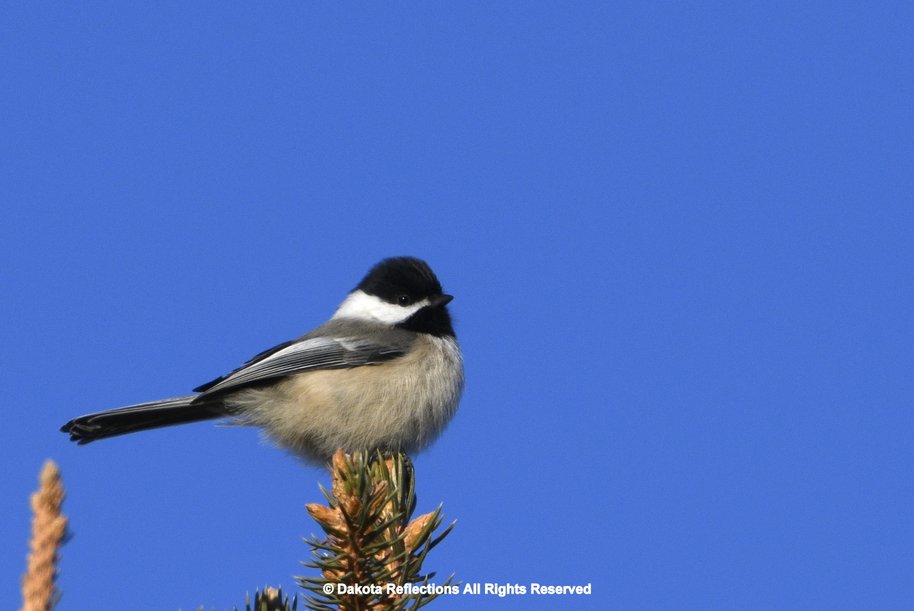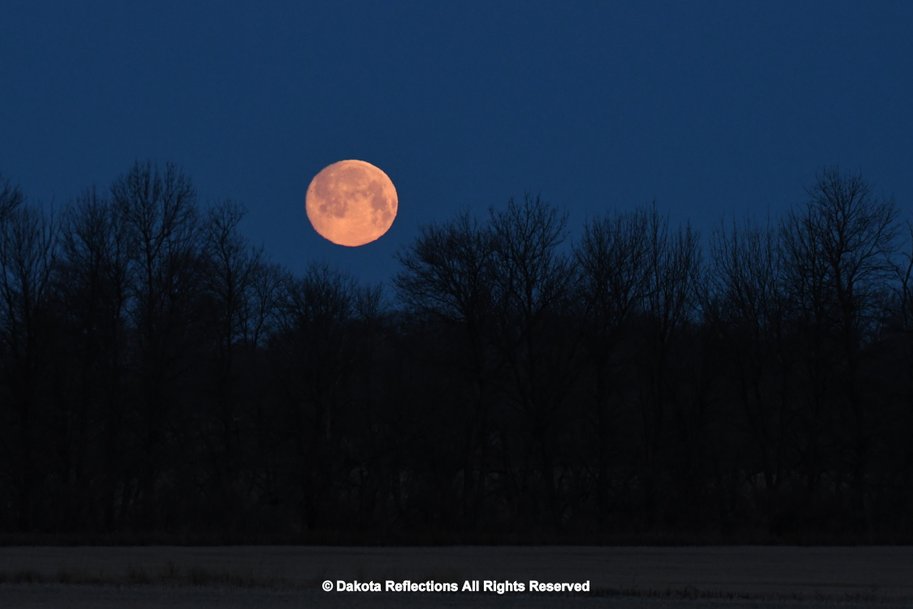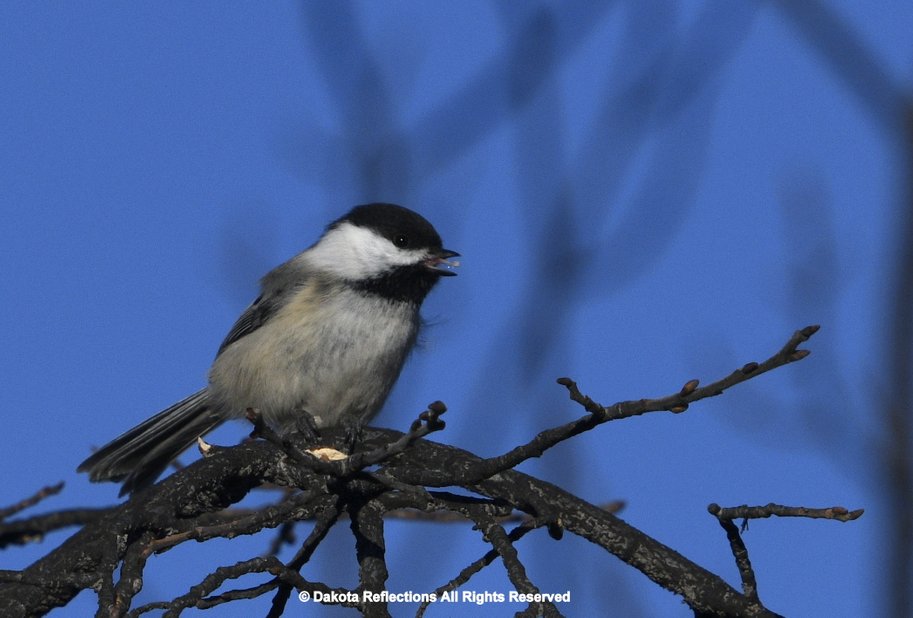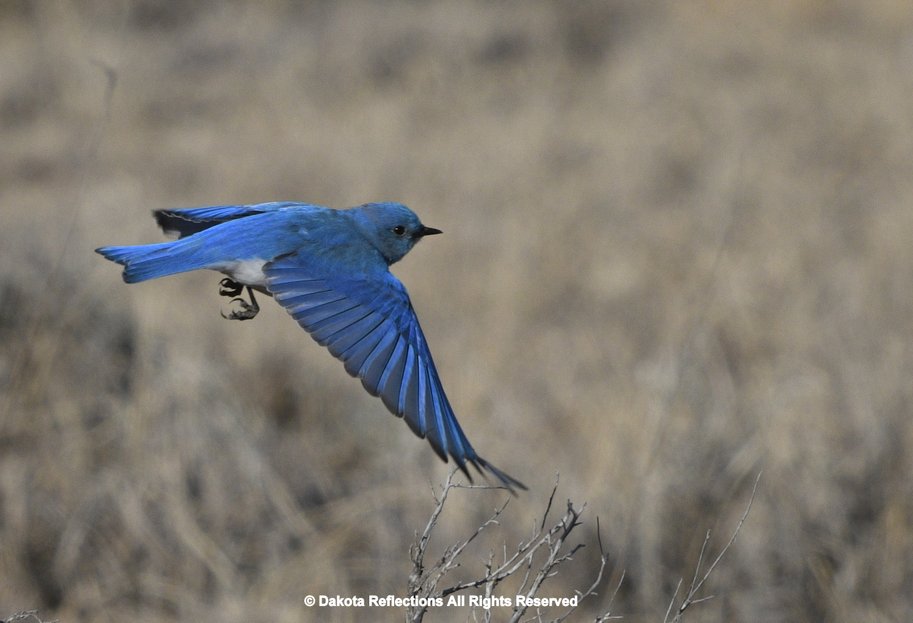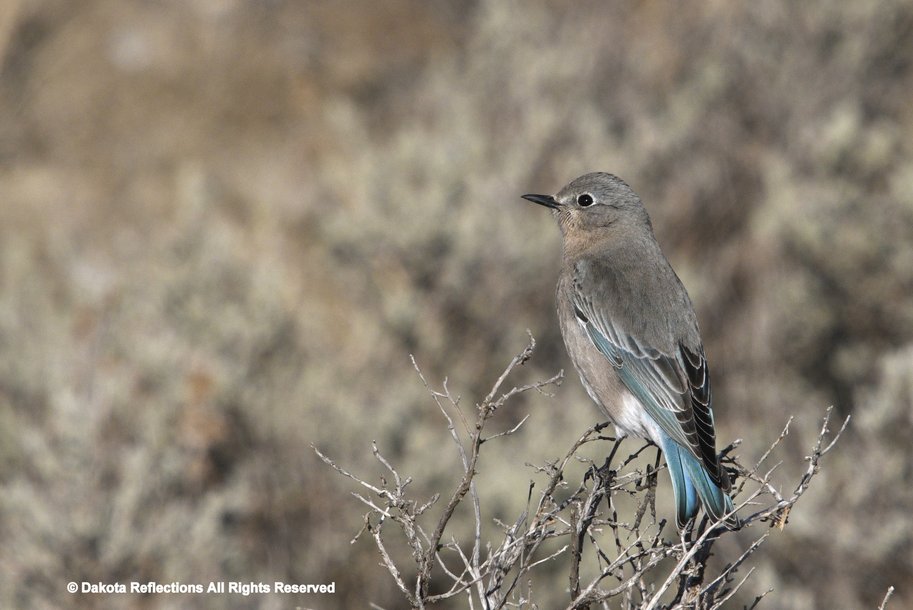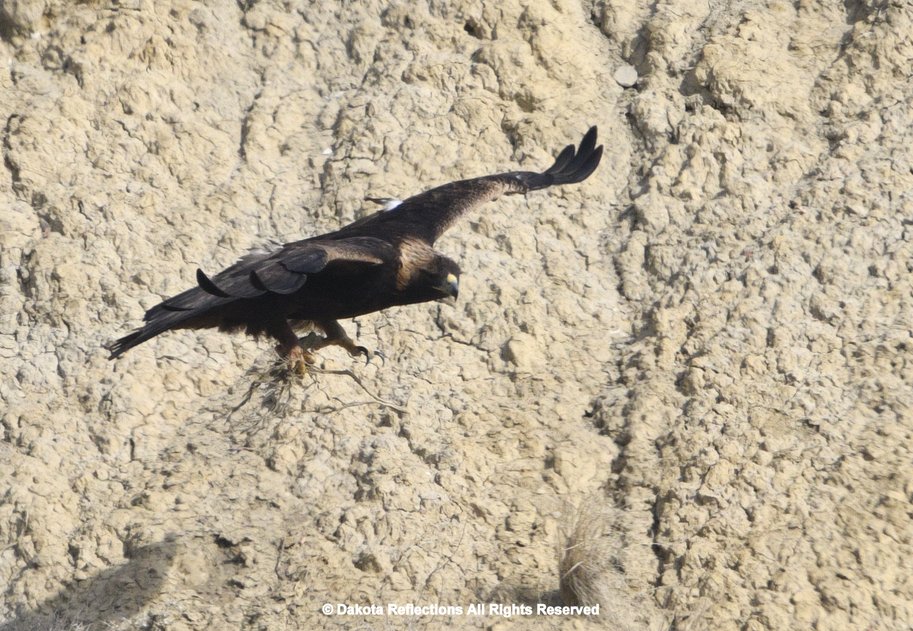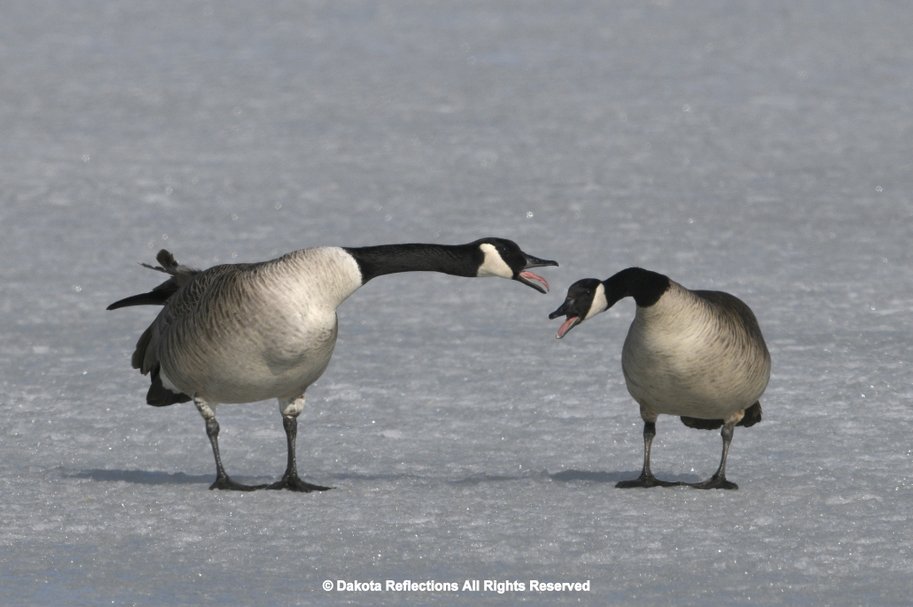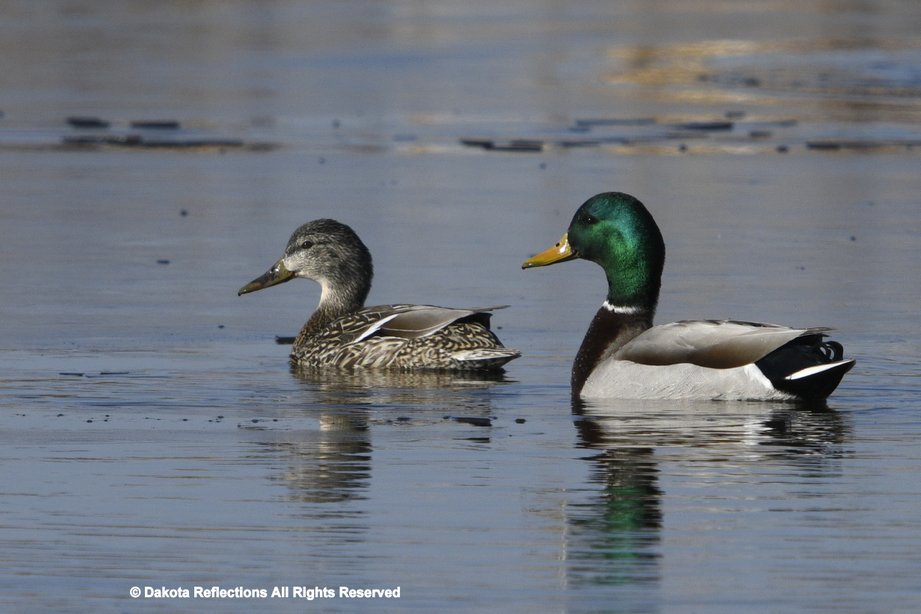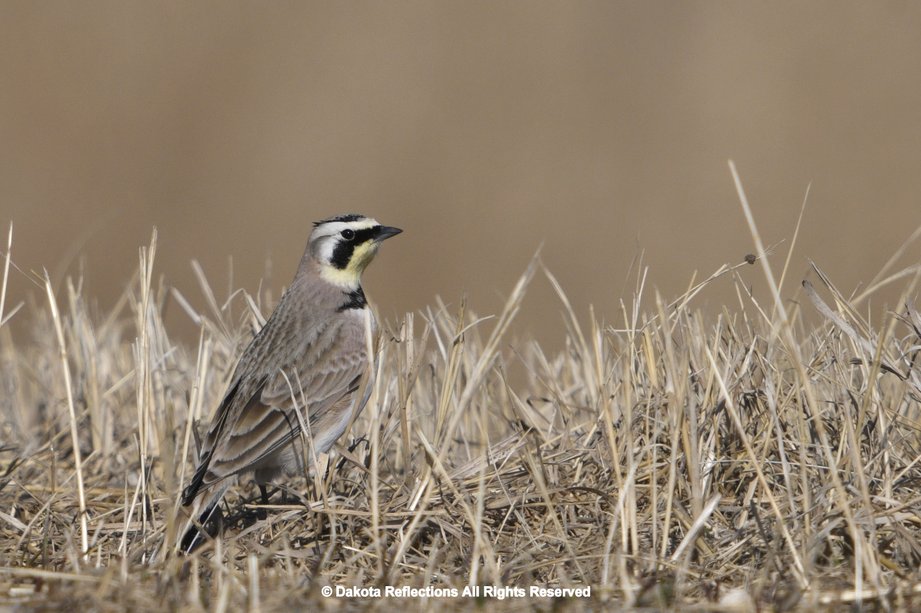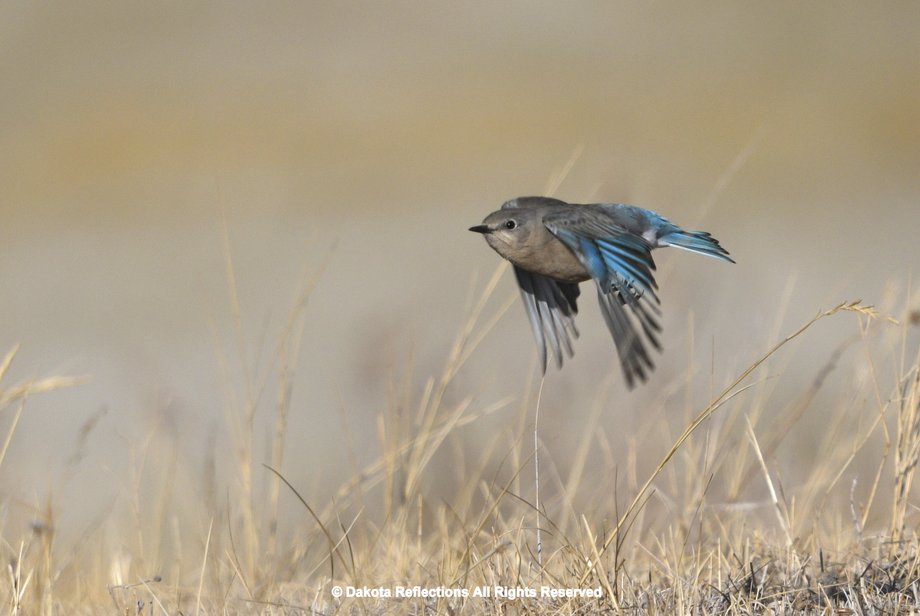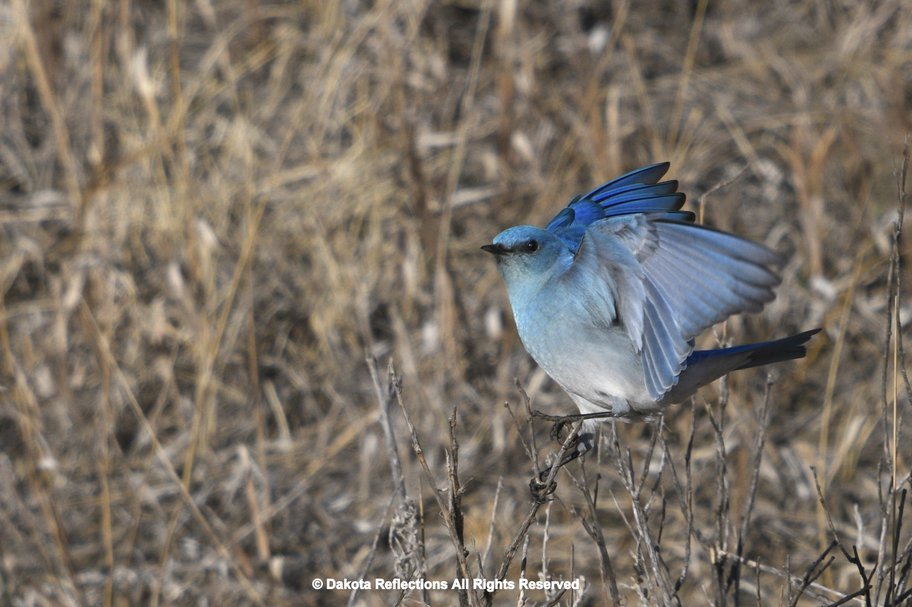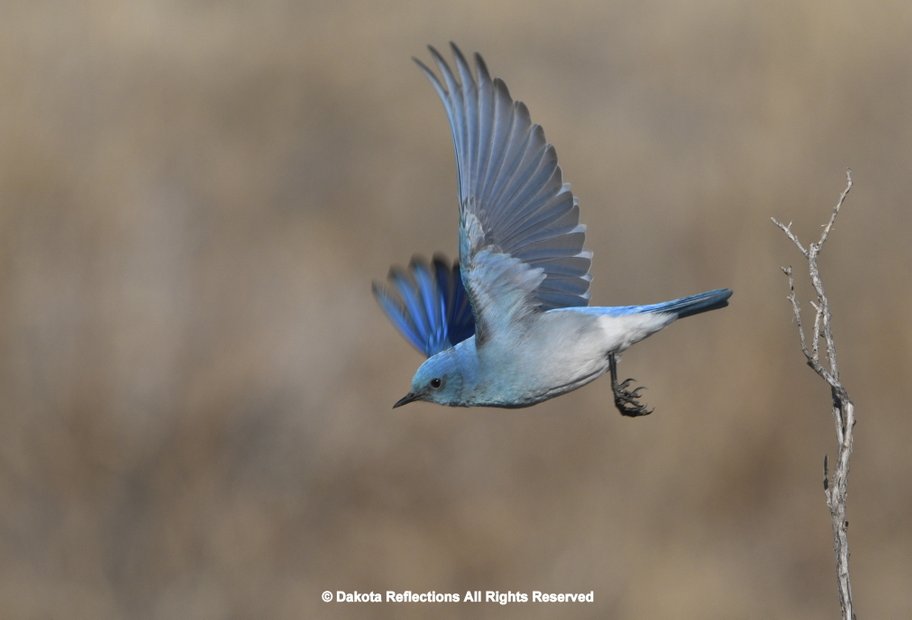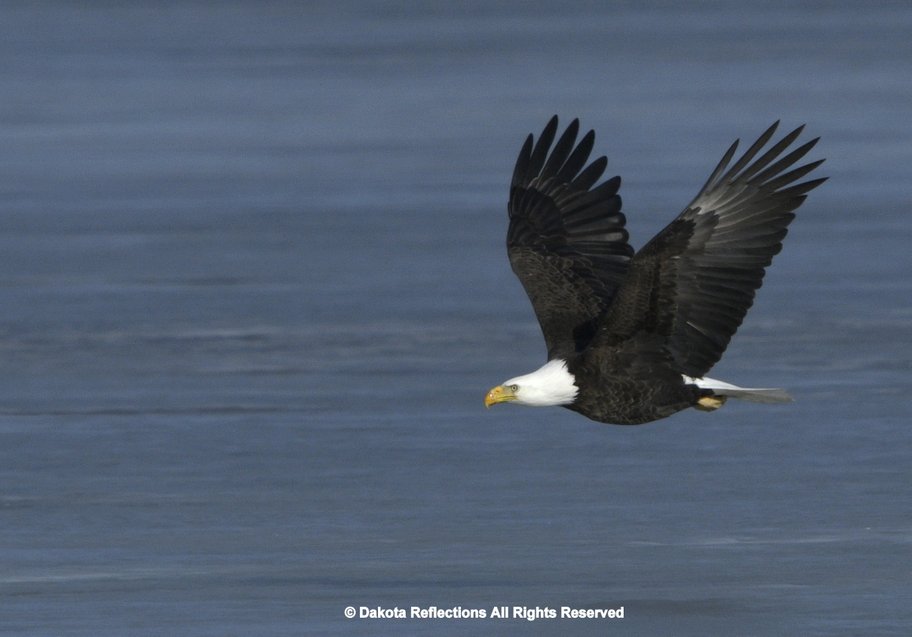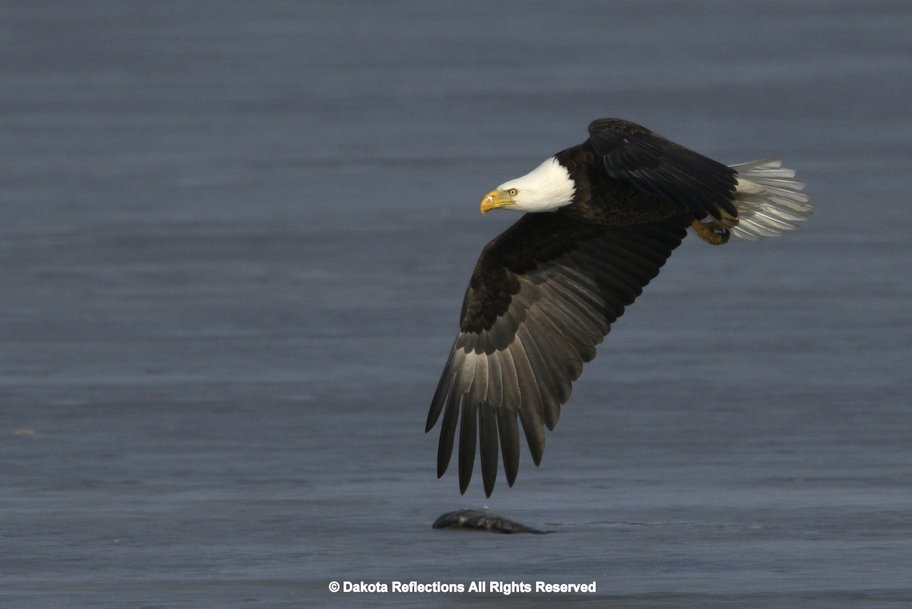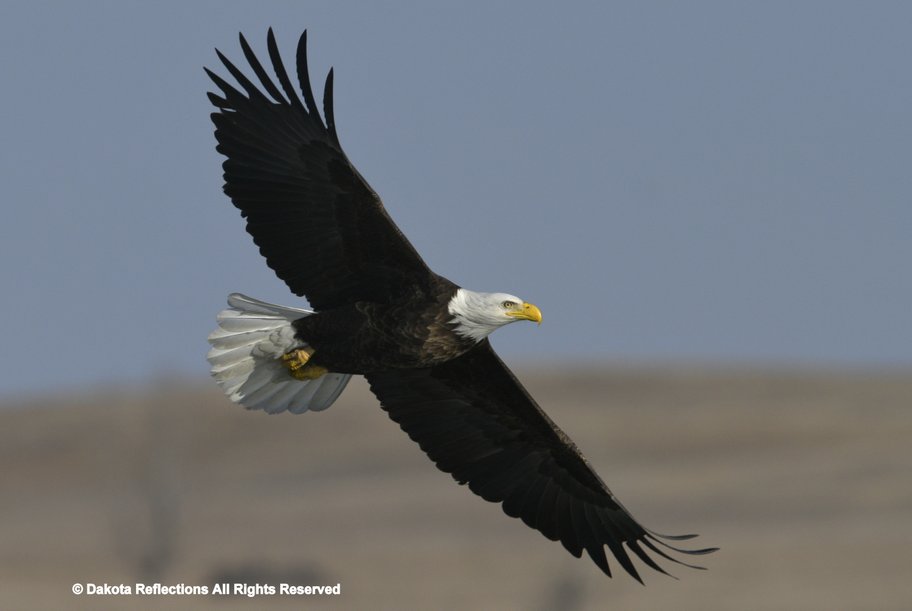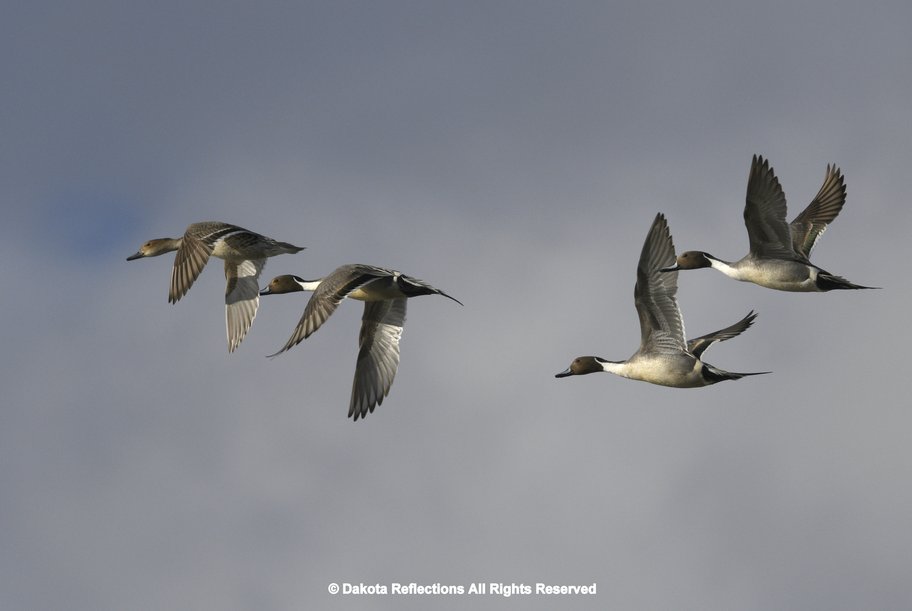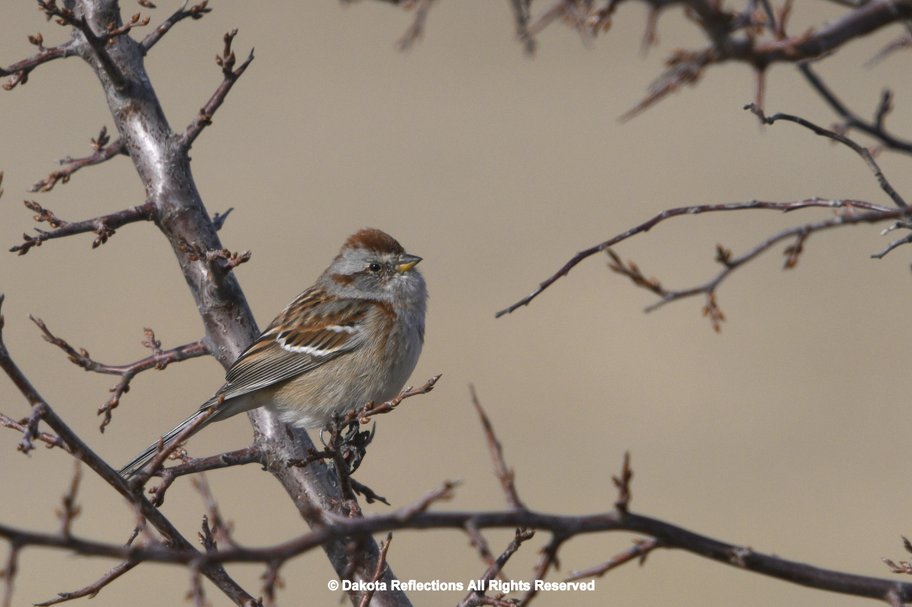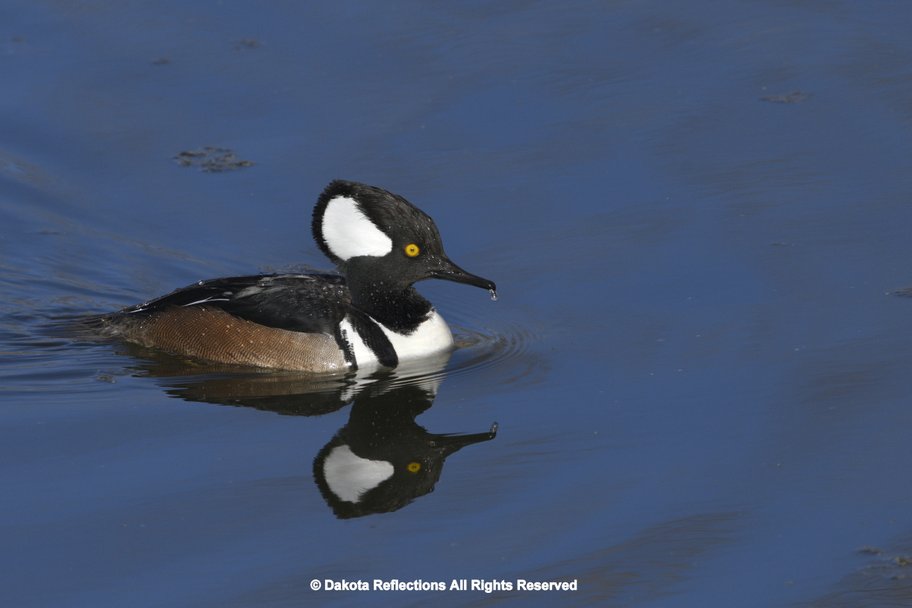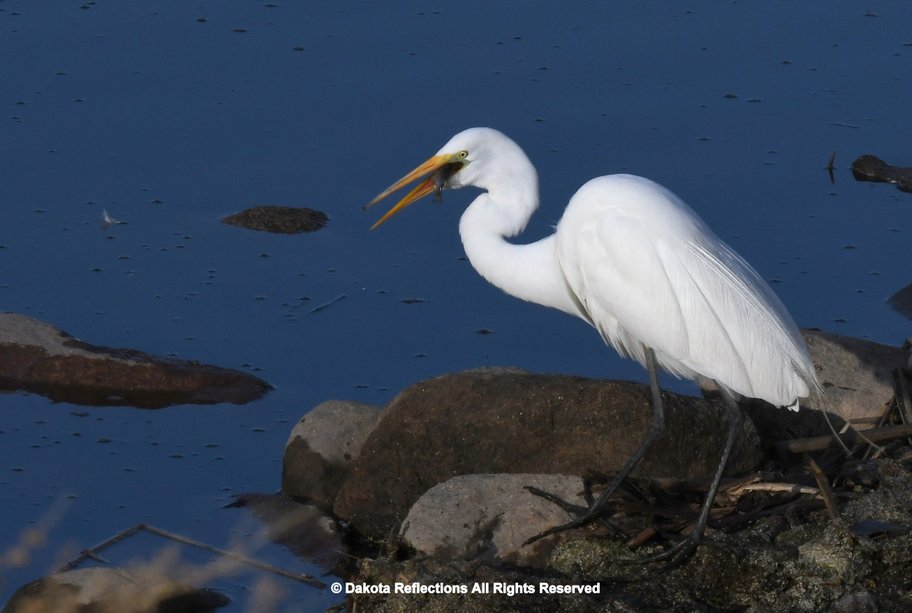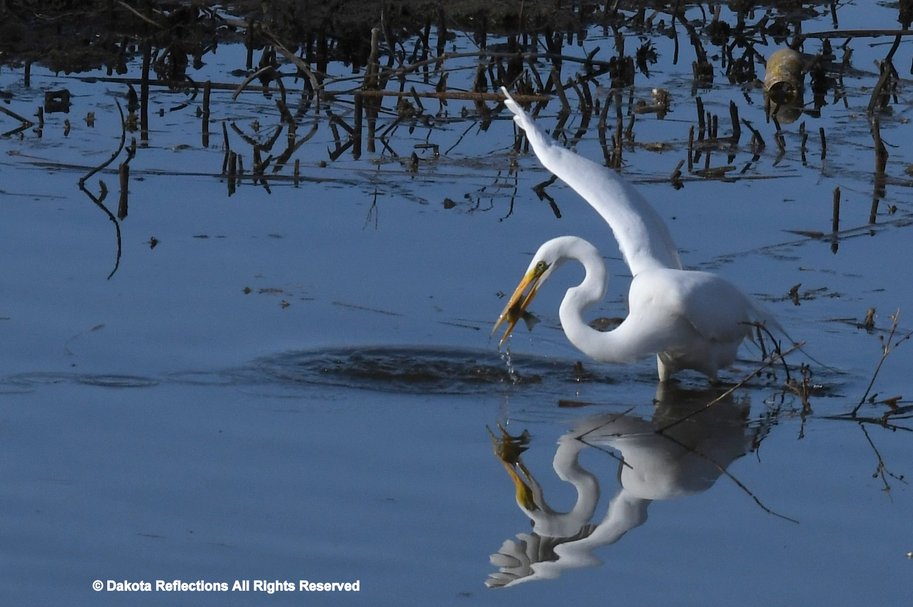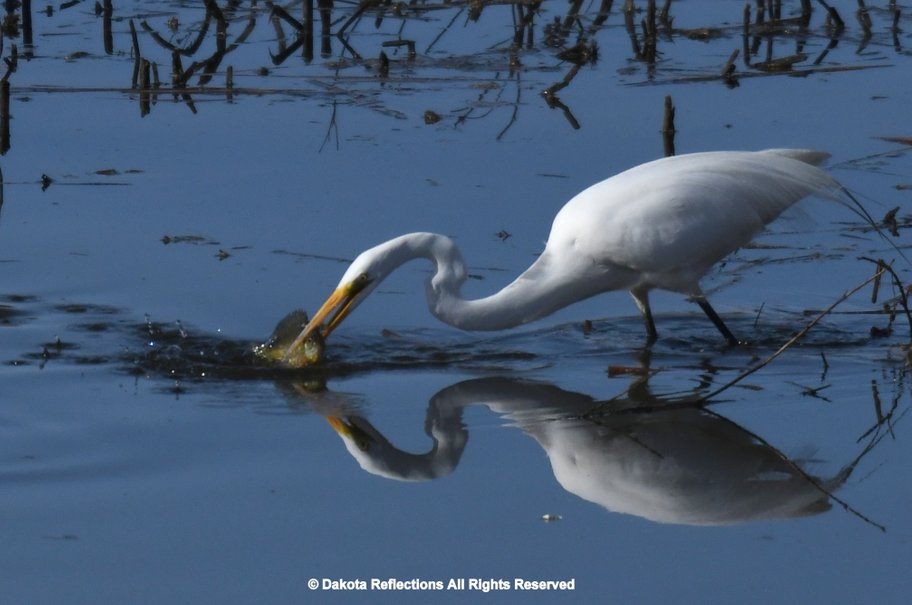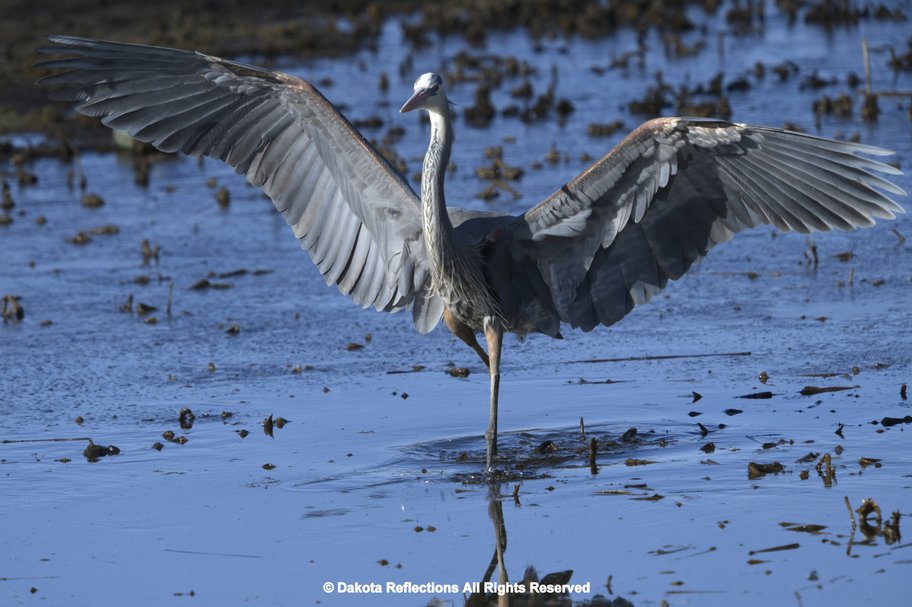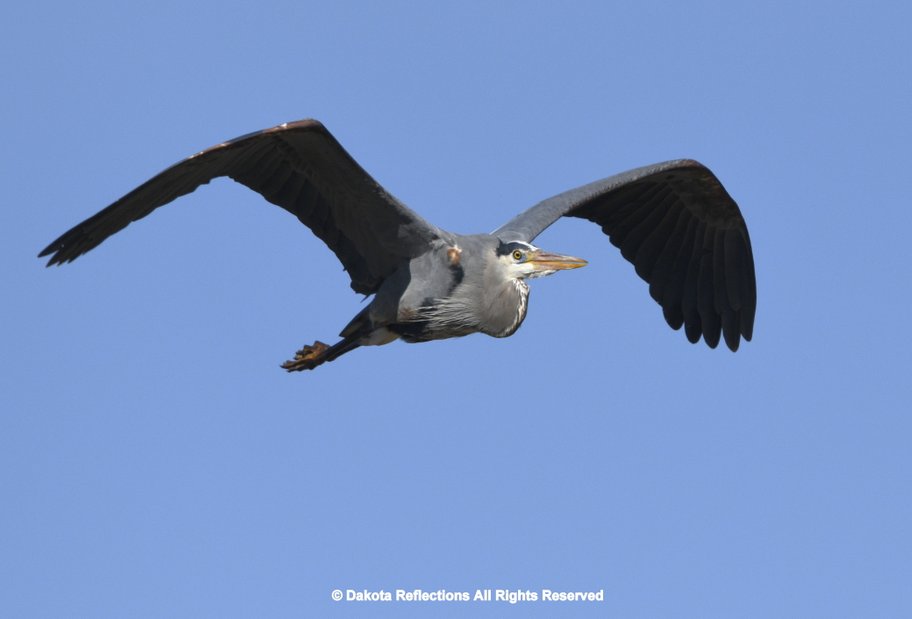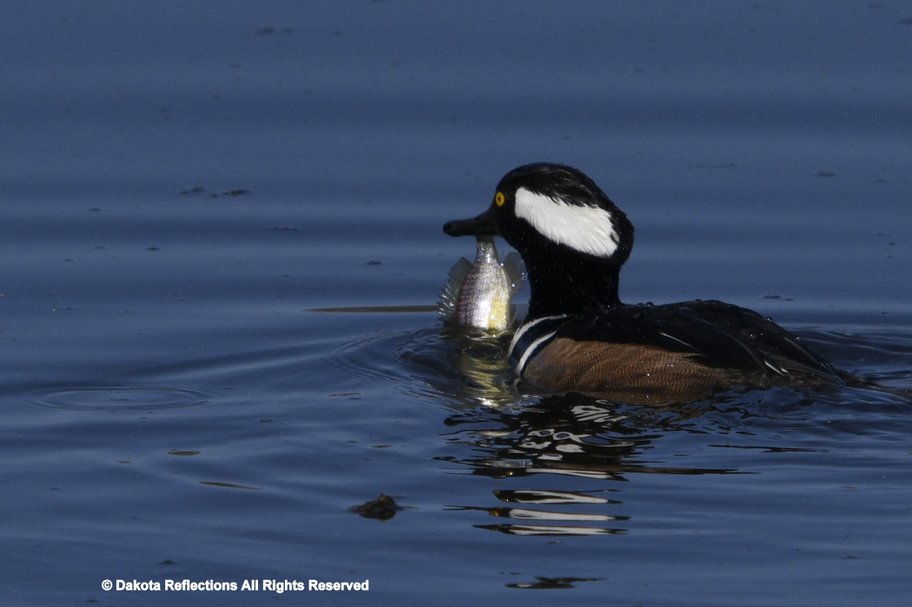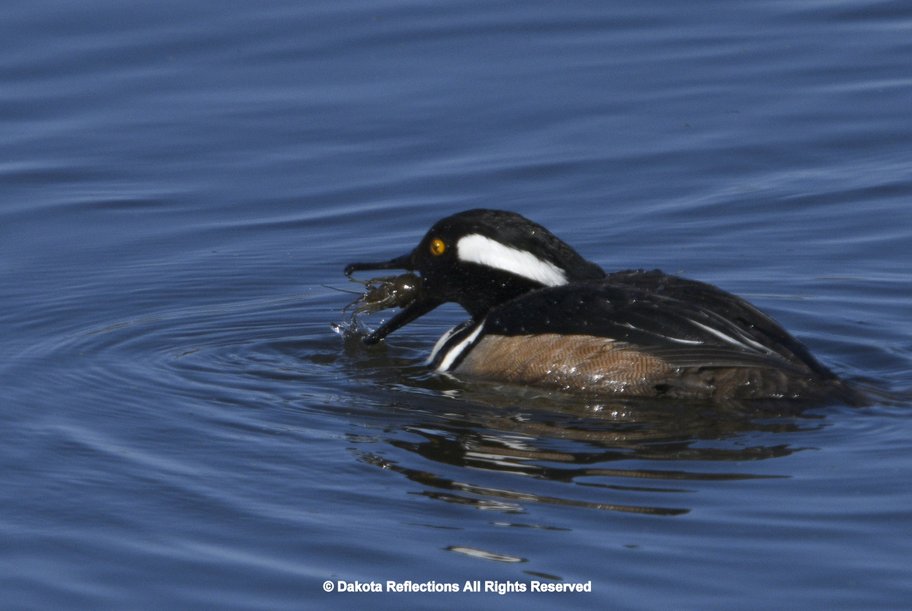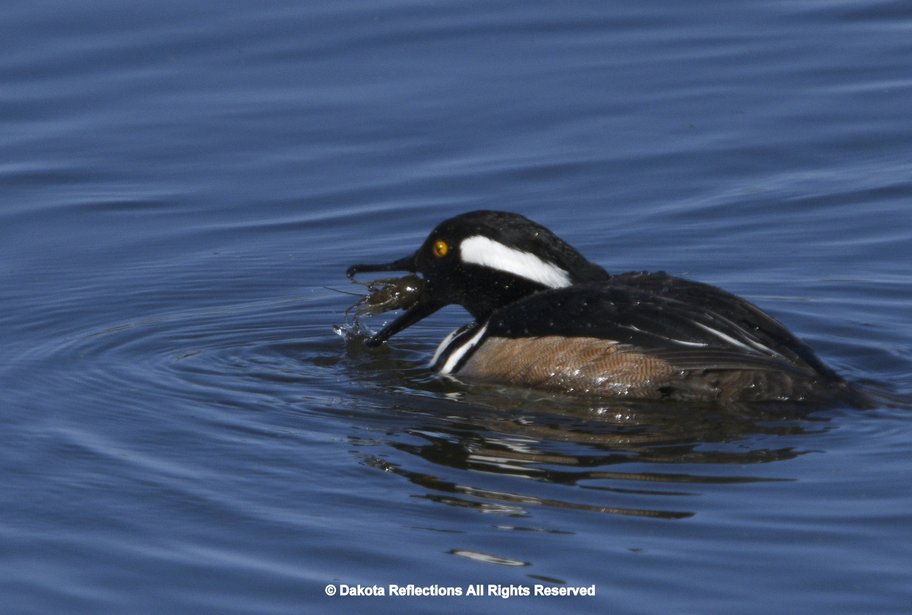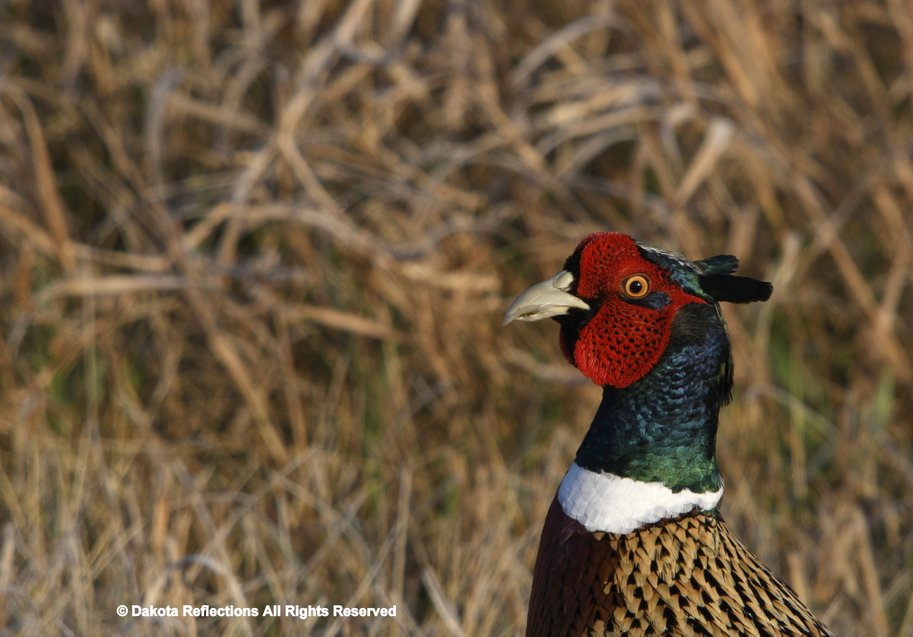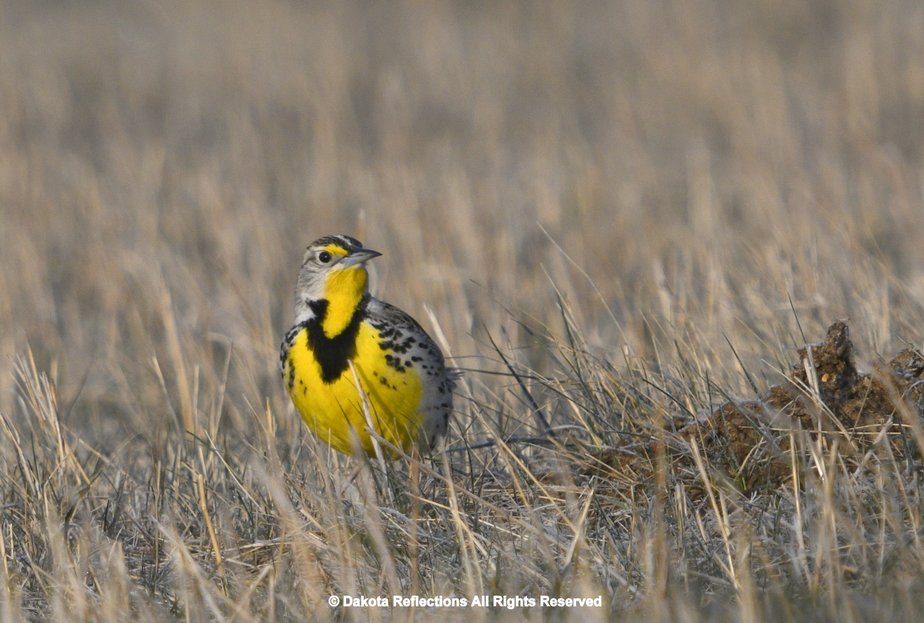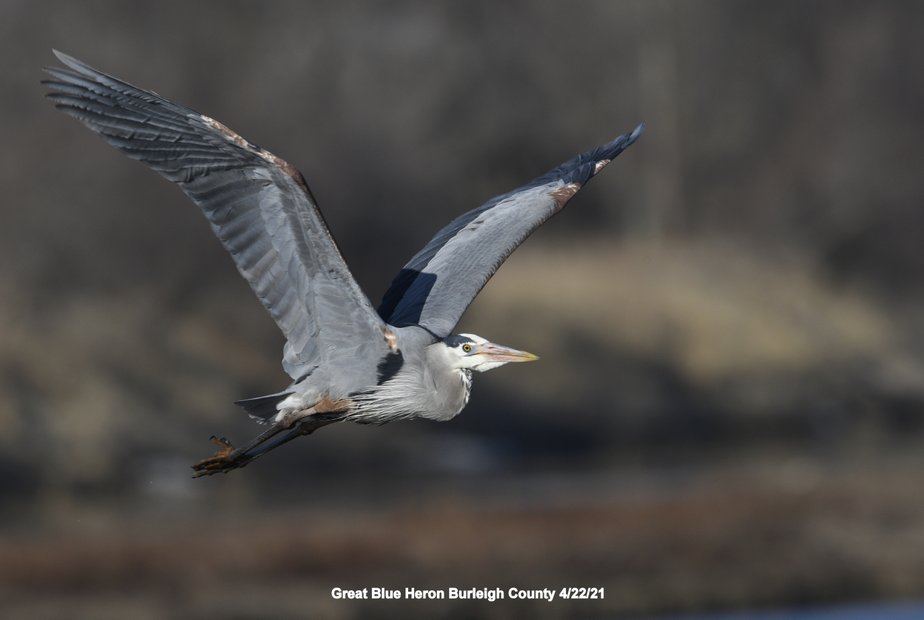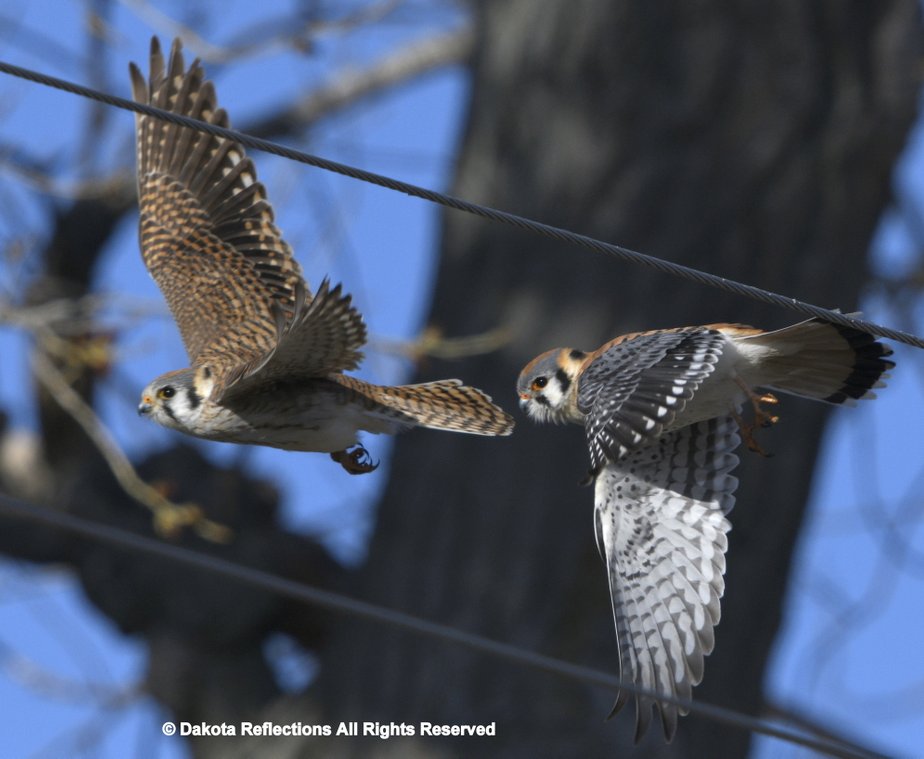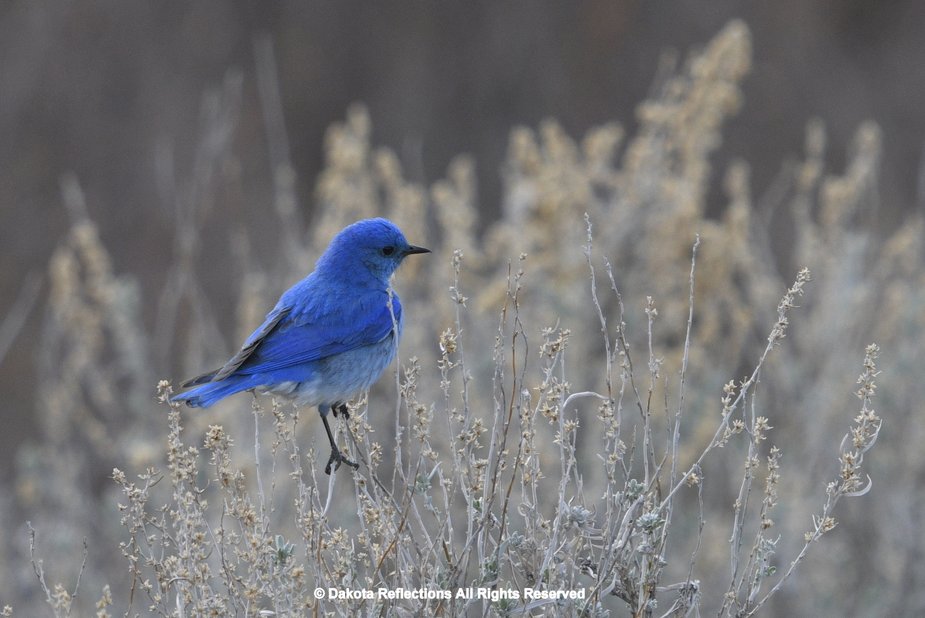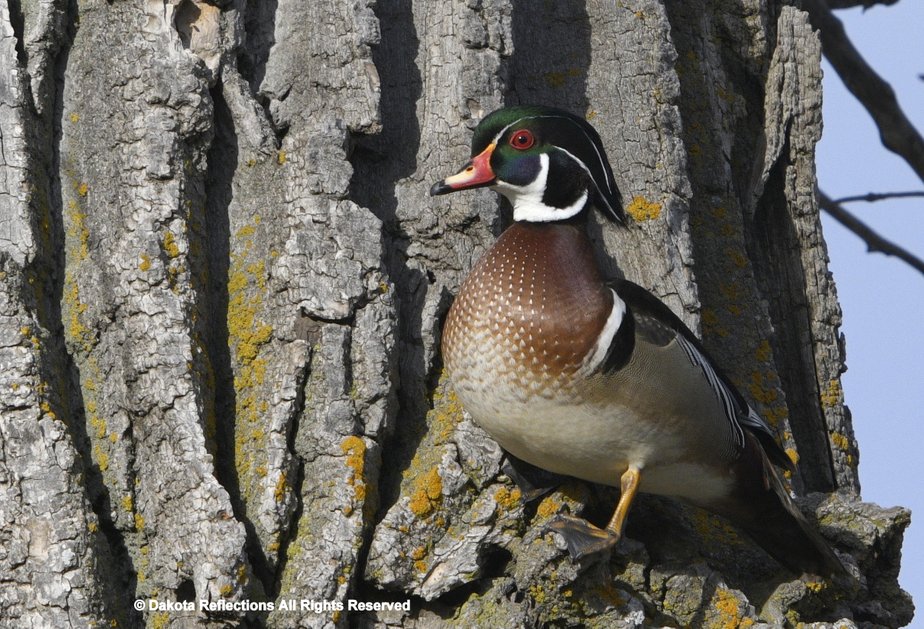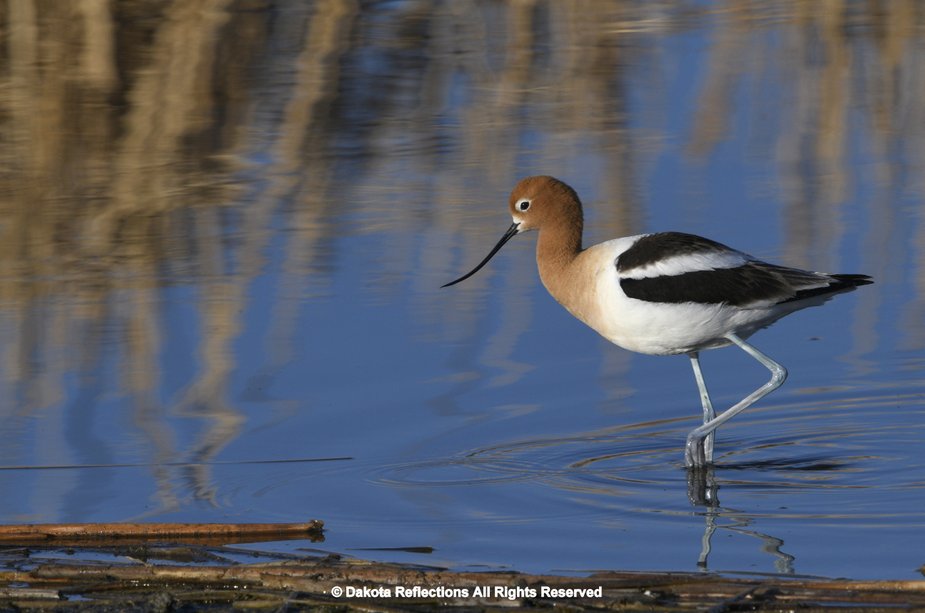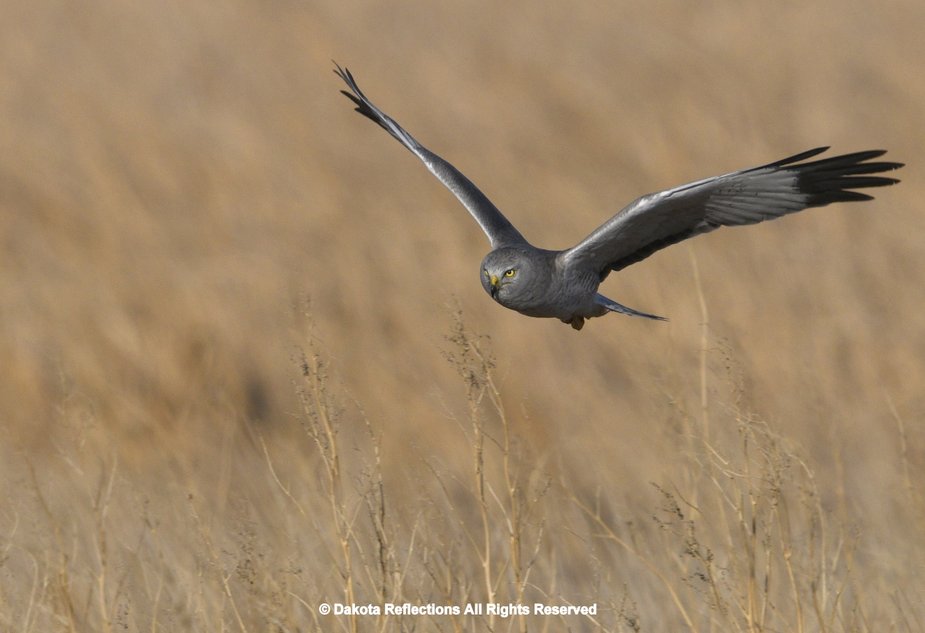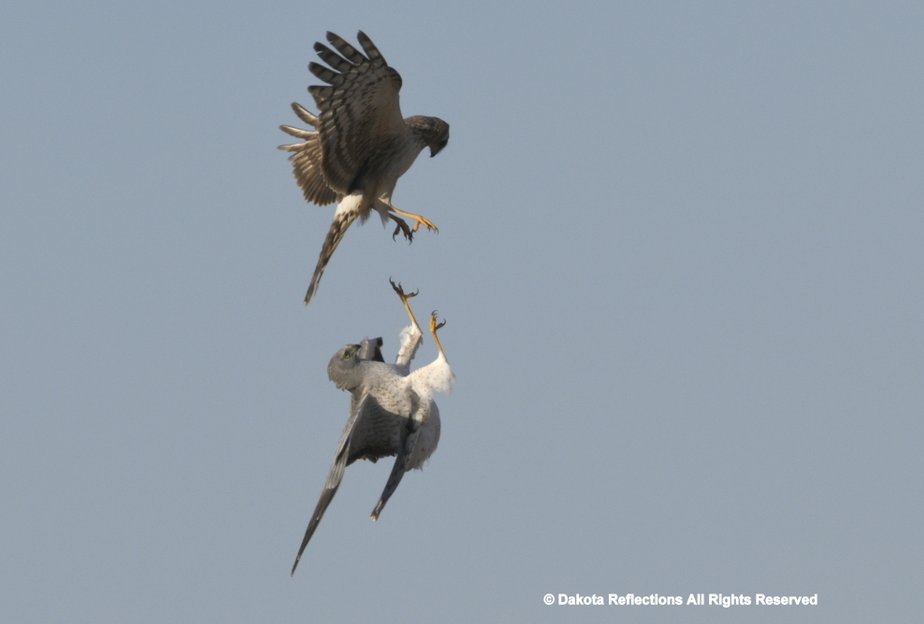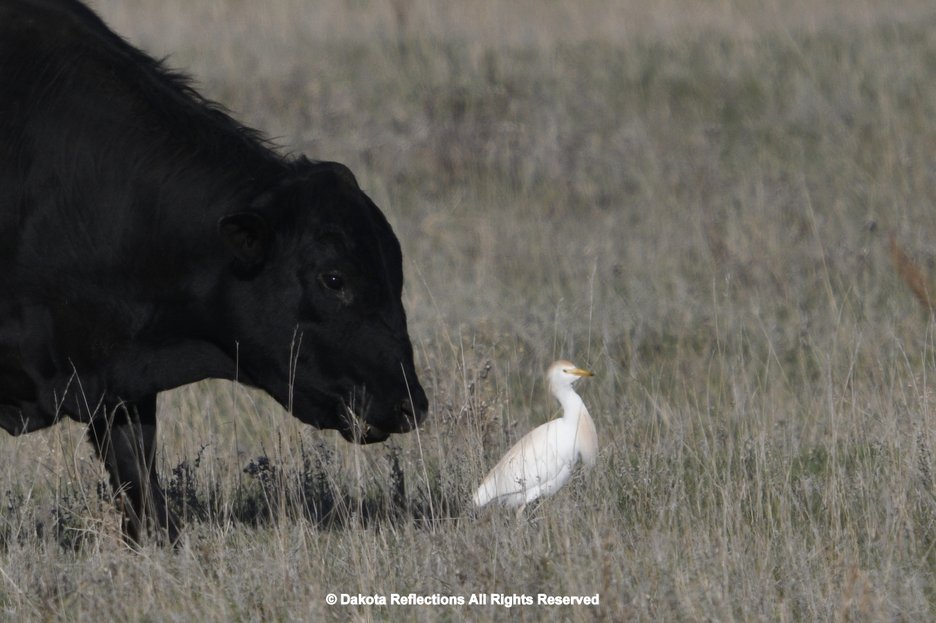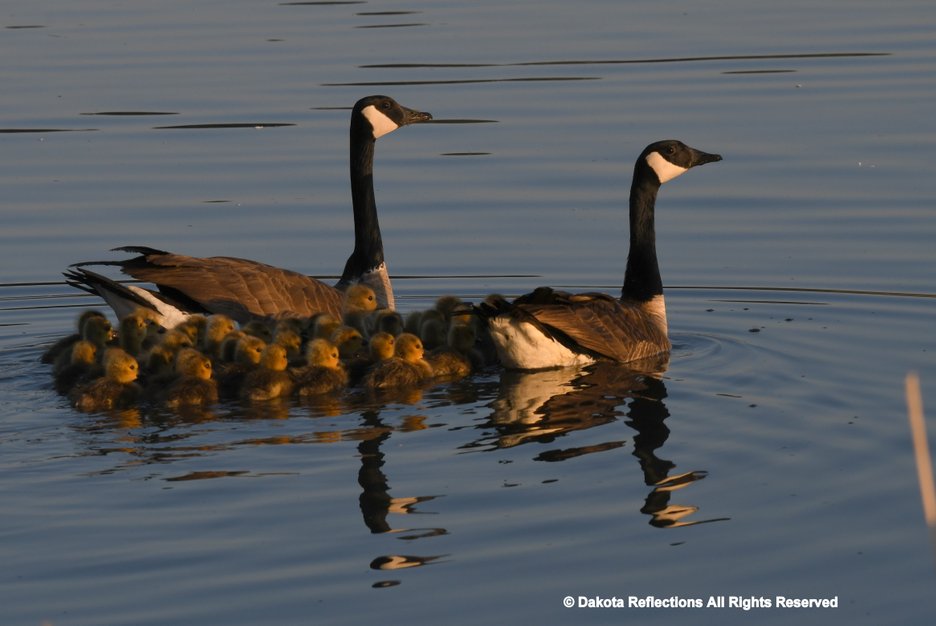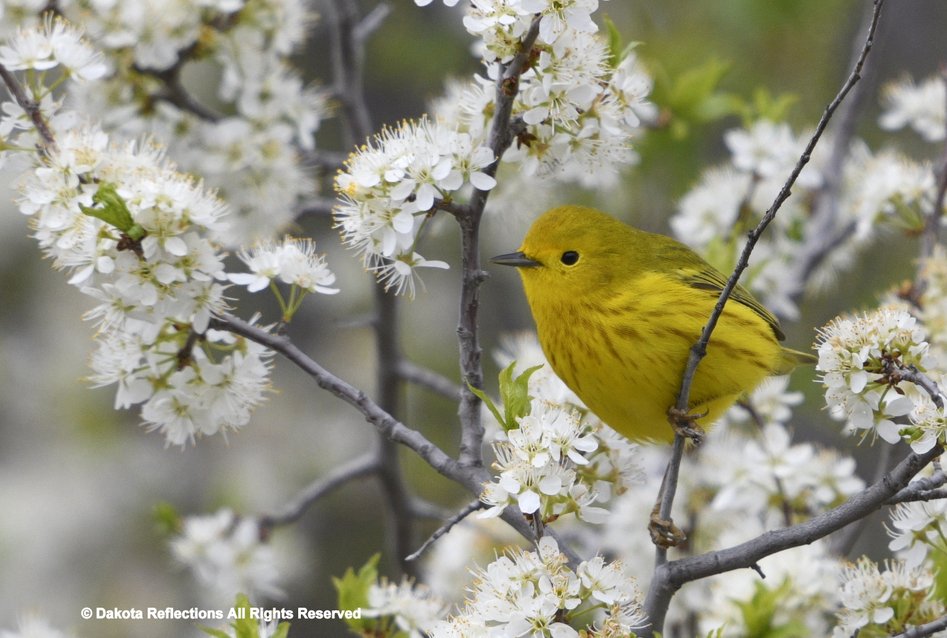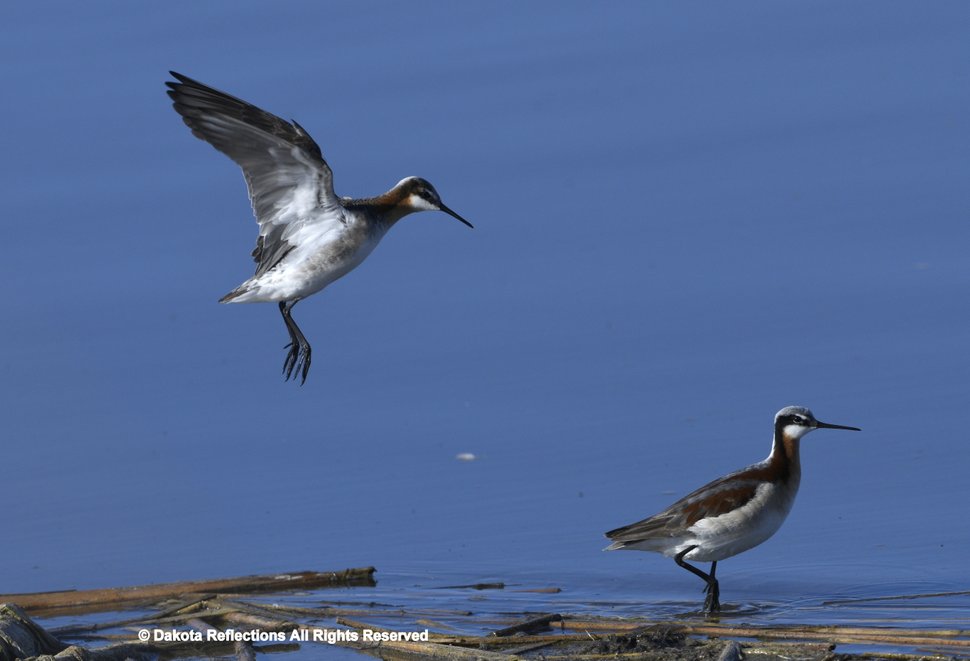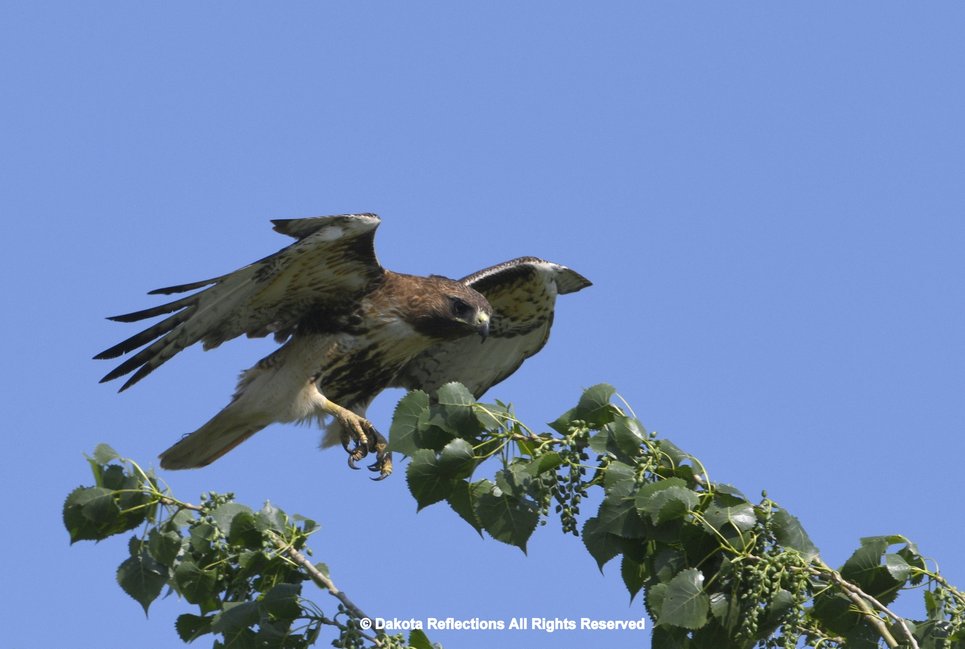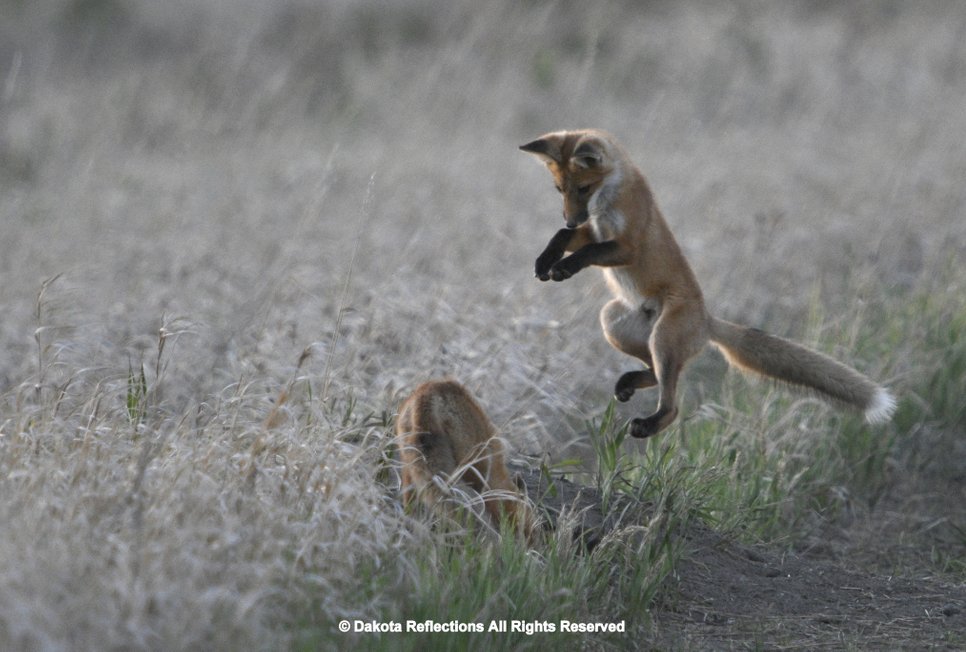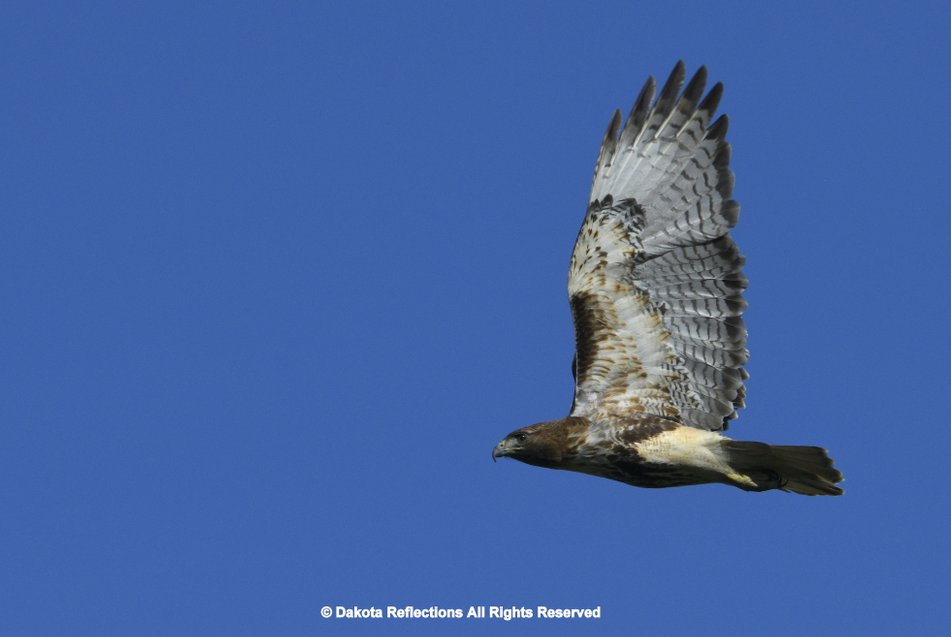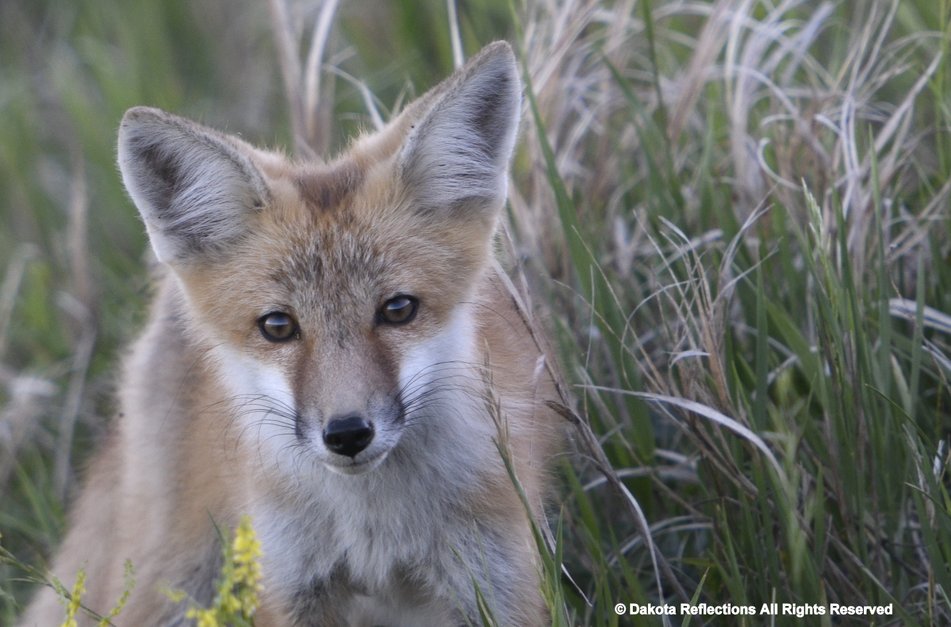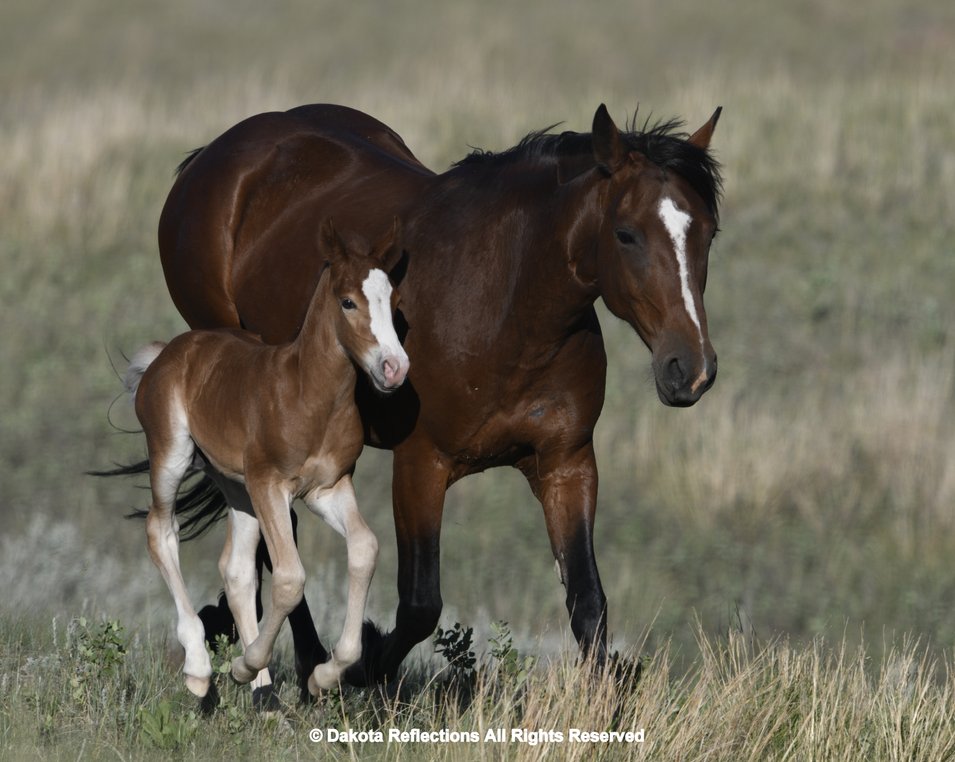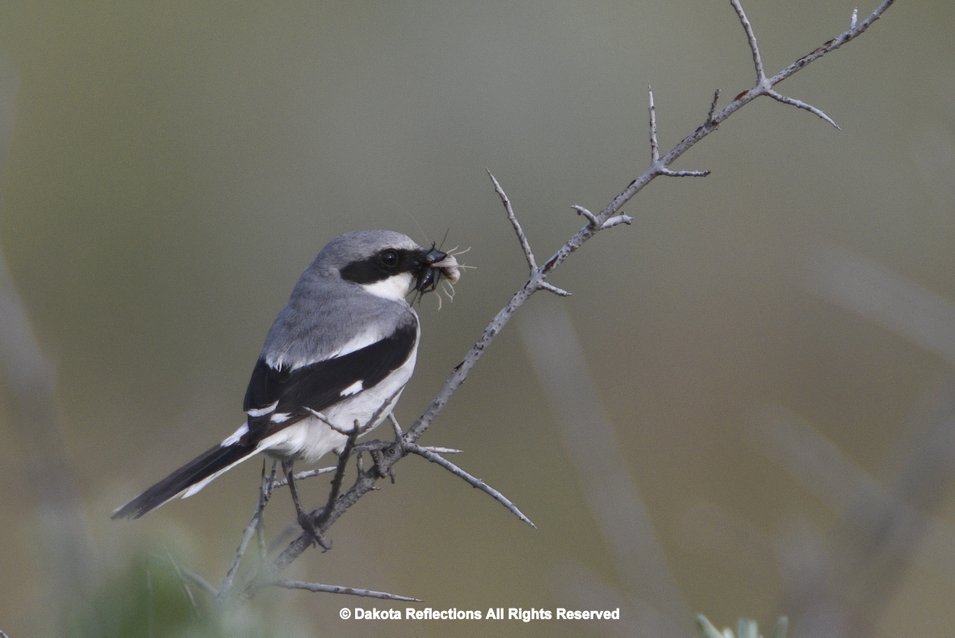Dakota Reflections
Gallery I
These are some of my favorite photographs. I try to take photographs that show animal relationships or activity. I especially love photographs of sibling relationships, family and parental, especially maternal love.
This red fox kit was one of three seen going in and out of the fox den in North Dakota. Their parents were feeding the babies pheasants and other birds for meals. This kit had fun playing with a feather.
May 8, 2016 Burleigh County, North Dakota
These red fox kits were photographed cuddling near their den in North Dakota. Baby foxes play much like puppies do.
May 15, 2016 Burleigh County, North Dakota
Bear #402 and One of Her Babies
This wonderful Brown Bear Mom had four cubs and kept very busy nursing and protecting them while trying to catch sockeye salmon to keep up her own nutrition. This photograph captures the loving bond between her and one of her four cubs.
Katmai National Park July 25, 2015
Bear #402 was one of 4 Brown Bear Moms over 10 years in Katmai National Park known to have 4 cubs in a litter.
https://www.nps.gov/katm/blogs/402-returns-with-four-cubs.htm
These are three out of the four cubs. You can see their tiny but very sharp claws.
Katmai National Park July 25, 2015
A few minutes later they were snuggling, keeping warm and sleeping after an exhaustive day of trying to stay alive, keeping close to their mother, nursing, playing and trying to learn skills to survive their harsh environment.
Katmai National Park July 25, 2015
Three of the four cubs can be seen nursing while one is hidden behind the tree branch.
Katmai National Park July 26, 2015
This photograph was taken a few seconds later showing that mom has raised her head to get a better view of her cubs and one of the cubs has moved on to a new location.
Katmai National Park July 26, 2015
This is why people go to Alaska to photograph brown bears catching salmon. Although pictures like this have been taken many times, they still are impressive. It rained everyday while we were there but good photography was still possible. I like this photograph because the bear's face can be seen along with teeth. Also, there is the possibility that the salmon got away (it did this time but many are caught and eaten).
Katmai National Park July 24, 2015
This sockeye salmon was not as fortunate!
Katmai National Park July 24, 2015
This is a brand new baby Antarctic fur seal, less than 1-hour old, bonding with mom. Mom has been busy. After the birth, mom defended her baby from male seals and aggressive skuas.
Fortuna Bay, South Georgia November 21, 2014
Leopard seals are huge, absolutely huge. They are also very curious. When the swim up to your small zodiac boat in Antarctic and come within 1 foot of the surface, just below you, it is an awesome and somewhat frightening experience.
Pleneau Bay, Antarctica November 30, 2014
This Gentoo penguin is showing determination to plow into the Southern Atlantic Ocean off Saunders Island of the Falkland Islands.
Saunders Island, Falkland Islands November 17, 2014
Baby elephant seals grow up to be 8000 pound beachmasters who are very territorial with other males. However, when 3-weeks-old they are very curious and affectionate.
Gold Harbor, South Georgia November 23, 2014
These roseatte spoonbills were snuggling with each other. When awake, these birds cross and clasp their bills together as they work to build their nest.
St. Augustine, Florida April 22, 2015
This osprey is bringing in fish for dinner. They often are seen flying while carrying partially eaten fish so a whole fish was nice to see. The fish is not impressed.
Blue Cypress Lake, Florida April 15, 2015
The little blue heron is one of my favorite birds. When the light is right, the blues and purples are fantastic.
Crooked Tree Wildlife Sanctuary, Belize April 5, 2014
This slaty flowerpiercer was photographed in Costa Rica. This bird has a sharp tapering bill which allows it to pierce flowers and feed on nectar, which the flowerpiercer was doing as the camera shutter was opened.
San Gerardo de Dota, Costa Rica March 29, 2015
This long-tailed silky flycatcher was also photographed in Costa Rica. This bird has a very long name which is used to describe an absolutely beautiful bird.
San Gerardo de Dota, Costa Rica March 28, 2015
This cheetah "Hasari" was photographed at the White Oak Conservation Center in Yulee, Florida. They run very, very fast and are hard to get in focus.
photographed April 9, 2011
As were were leaving Torres del Paine National Park in Chile, we were very lucky to find these Guanocos standing in front of the famous three towers, Los Torres. The Guanocos stood there for a few minutes and then moved on. Timing is everything.
photographed October 25, 2013
While everyone else was eating breakfast in Torres del Paine National Park in Chile, I was out looking for sunlight possibilities. The sky was heavily overcast. Fortunately, a little sliver of sunlight broke through the clouds, lighting up a small part of Cuerno Norte, a beautiful mountain.
photographed October 23, 2013
Getting photographs of mammals nursing is not easy but we were lucky to see this mom and baby nursing in Arusha National Park in Tanzania.
photographed October 31, 2007
This black caiman came right up to our canoe at Lake Sandoval in Peru, so close that you can see a fly above the caiman's right eye
photographed October 19, 2010
This is my favorite Arctic fox picture, looking right at me and showing sharp teeth. The fox was actually yawning and not mad at the time.
Hudson Bay, Manitoba, Canada November 10, 2011
I was about 15 yards away from this polar bear who decided to take a nap on the shores of the Hudson Bay, waiting for the water to freeze over before venturing out on the ice to hunt seals.
Hudson Bay, Manitoba, Canada November 8, 2011
" The Fighting Incas"
These Collared Incas were sparing over a hummingbird feeder in Ecuador. Hummingbirds often get into tussels with one bird claiming territory by a feeder and chasing others away. This usually occurs so quickly that the camera can not move quickly enough to focus on the hummingbirds in flight and capture the action. I was lucky to get them in my focus field and push the remote at the right time.
Guango Lodge, Eucador November 20, 2015
The long-tailed sylph was my favorite bird to see in Ecuador. I was amazed to see this bird fly around trees with the long tail trailing behind. The sylph was very difficult to photograph, rarely coming to the feeders and staying only briefly, often chased away by a chestnut-breasted coronet. I was fortunate to capture the long-tailed sylph with the back feathers spread apart.
Guango Lodge, Eucador November 19, 2015
Hawking is catching insects in mid-flight, as this female purple-throated woodstar is doing in Ecuador. Hummingbirds vary their diet to eat more than nectar. When your wings beat 80 times per second and your heart rate is 1250 beats per minute, you need some added protein. She may have caught this fly to bring home to her nestling babies. Female hummingbirds forage for insects more than males due to their childrearing responsibilities.
Tandayapa, Eucador November 14, 2015
A number of years ago, while in the Dakota Badlands, I walked around a small butte to see if there were photographic opportunities at sunset. To my surprise there were the remains of a bison with bones scattered by predators. Only bones and hide were remaining. I left the bones as I found them and returned several weeks later with the remains scattered over a wide area.
Theodore Roosevelt National Park July 19, 2008
Sharp-tailed grouse gather together in the spring where the males strut around while performing their mating dance, a wonderful spring event to see in the Dakotas. This photograph is the cover for the Dakota Reflections website.
Long Lake National Wildlife Refuge, North Dakota April 9, 2015
This young mule deer is leaping over a small gulley in the North Dakota badlands. They can have a bounding, jumping gait that looks like a kangaroo hopping.
Theodore Roosevelt National Park September 20, 2016
These mule deer fawns were photographed touching noses while resting with their mom in the North Dakota badlands.
Theodore Roosevelt National Park September 20, 2016
This western meadowlark saw the sharp-tailed grouse fighting at their lek and decided to join the combat.
Long Lake National Wildlife Refuge, North Dakota April 21, 2016
Snowy owls can be seen occassionally during the winter and early spring in North Dakota and are a good reason to venture into the rural during the bleak cold days.
Long Lake National Wildlife Refuge, North Dakota March 10, 2016
Badgers are common in North Dakota but I have rarely seen them, usually the badger quickly crosses the road ahead of me and disappears in the brush. The are more likely to be seen in prairie regions. When they move, they look like a walking rug because their body shape is so, so flat. They dig a den to rest during the day and rarely use the den twice, constantly on the move. Finding this badger out during the day was a treat.
Photograph taken in Theodore Roosevelt National Park September 20, 2016
Photographs added in 2017
I am So Happy to See You!
This red fox kit greated mom as she returned to the den in the evening while the other kits concentrated on nursing.
Is it My Turn?
These red fox kits asked their mom if they could have a turn at nursing.
Yes, It is Your Turn!
These red fox kits were able to join the others. The red fox mom is able to feed 8 babies at a time.
You Can't Catch Me!
These red fox kits enjoyed playing after nursing.
I was in southeast Wyoming on August 21, 2017 to witness nearly 2 minutes of total solar eclipse, the first one I have ever seen. The corona is visible, the area of plasma that surrounds the sun. The sun's corona is much hotter than the surface of the sun. When there is a flare in the corona, the results plasma may hit our earth, producing Northern lights.
Diamond Ring and Solar Flare! People first applauded eclipse totality and then gaspsed in amazement when the sun peaked over the moon. Darkness melted away into light. I was with several hundred strangers at a rest stop in southeastern Wyoming. We were there to just watch and appreciate a wonder of our world and solar system. A solar prominence is visible just to the right of the diamond ring and a smaller one at the 3 o'clock position.
Black-tailed prairie dogs are affectionate burrowing dwelling rodents once commonly seen in the grasslands and prairies of the Western United States. They lived in family groups and greet each other by a prairie dog kiss or nuzzle.
Theodore Roosevelt National Park May 19, 2017
This pronghorn mom (doe) with her two babies (fawns) were photographed in the Dakota Prairie National Grasslands running at 40 miles per hour. They can run up to 60 miles per hour. Fawns are able to outrun humans within a week of life and by several weeks can keep up with their parents!
Little Missouri National Grasslands June 3, 2017
This mule deer doe is nursing her fawn in Theodore Roosevelt National Park. Fawns nurse briefly just several times a day so witnessing and photographing this important event is not easy!
photographed September 29, 2017
This scissor-tailed flycatcher was photographed at Fossile Rim Wildlife Center in April 2017 when I attended the Conservation Centers for Species Survivial annual meeting in Glen Rose, Texas.
Lean on Me!
These great horned owlets were photographed in Burleigh County, North Dakota taking a nap when a yawn occurred!
photographed April 28, 2017
Open Wide!
This baby western kingbird was photographed being fed an insect by either mom or dad. The baby seemed to be quite exited!
Burleigh County June 23, 2017
More Likely Heard than Seen!
I am able to see American Bitterns a couple of days every year. They disguise well with their brown markings and blend into the reeds. This one was just on the edge, with sunlight and no wind, allowing a nice reflection.
Burleigh County July 26, 2017
This black-crowned night-heron has found a salamander for breakfast. If you look closely, the heron's eye is partially covered by the nictitating membrane which protects the eye but allows vision. Birds and reptiles use the membrane during activities that may have potential of eye injury, such as trying to subdue your breakfast.
photographed Burleigh County July 29, 2017
Great Escape!
This white-face ibis has found a frog for breakfast but the frog is making an escape. White-faced ibis initially do not appear to be very attractive, in dull light they just appear dark. However, in sunlight they have a metallic green color and are quite spectacular.
photographed Burleigh County July 23, 2017
This is a white-tailed deer leaping through the air. When deer run, they usually run away from me and all I get to see is their rear end, which doesn't make a noteworthy photograph. However, this deer decided to run along side my vehicle, allowing this photograph. They are extraordinarily graceful and seem to run and leap effortlessly. A wonder to behold!
photographed Burleigh County July 7, 2017
An American Bald Eagle is landing in trees next to a younger bald eagle. You can see the use of tail feathers to slow landing speed as the bald eagle selects a branch to land on. Photograph was obtained on November 7, 2017 at Long Lake National Wildlife Refuge in North Dakota.
This female snowy owl was photographed in rural Burleigh County on November 25, 2017. There had been one month of cold air with snow cover in southern Canada and this snowy owl had ventured south to find rodents to eat.
Photographs added in 2018
The porcupine was photographed in Theodore Roosevelt National Park in February 2018 having a meal of bark. Winter is a time of easier porcupine viewing as they don't have leaves to hide them.
Bull Elk in Winter
His massive antlers were still on in late February 2018 in Theodore Roosevelt National Park
Apex on an Apex
Coyotes are apex predators in the North Dakota Badlands. This coyote was resting on snow on the apex of a butte in late February 2018, surveying the coyote's kingdom.
Early Arrival
There was still snow on the ground during our long winter of 2017-18 when this red-tailed hawk was photographed in late March.
Late Departure
Late March 2018 found this rough-legged hawk still in North Dakota. Snow was still on the ground and the signal to return to the Arctic was not yet there.
Cute Raptor
Another early arrival to North Dakota was this American kestrel photographed in mid-April 2018 with snow still on the ground.
Hovering Beauty
American kestrels have the ability to hover in place as they search out prey, photograph was taken in April 2018
Difficult to Photograph
This female Northern harrier was photographed in central North Dakota in April 2018. Her undulating flight low to the ground makes photography difficult
Also difficult to photograph
Nesting and eating on the ground also are habits that make photographing this male Northern harrier difficult. I was hiking in the Badlands when I wandered into his territory and he decided to chase me off!
Northern Shovelers
Long Lake National Wildlife Refuge is a good place to see migrating water birds
Mates for Life
Coyotes mate for life and this couple was photographed in Theodore Roosevelt National Park in May of 2018
Lookout
Baby great horned owlets are protected in their nest by their parents. Great horned owls are the earliest nesting bird in North Dakota.
Cozy
Great horned owls will use a previous hawk nest for their or a tree hollow which this great horned owl found in the North Dakota Badlands
Rusty legs
Ferruginous hawks are names for the rust color of the leg feathers. This hawk was photographed in Kidder County in May 2018
"Hola" from Argentina!
Swainson's hawks travel from Argentina each spring to nest in the Northern plains and Southern Canada, photograph taken in late May 2018 at Long Lake National Wildlife Refuge
Hovering Badland's Beauty
The mountain bluebird is my favorite bird to photogaph in the North Dakota Badlands. This species is an early migrator with sitings reported as early as February in North Dakota
Quite a mouthfull
I think this black-tailed prairie dog photographed in Theodore Roosevelt National Park in June of 2018 was going to share with babies in the burrow.
Velvet Antlers
Early morning is a good time to try to see elk in Theodore Roosevelt National Park. Bull elk need to eat a lot to help their antlers grow up to an inch a day. The vascular velvet on the outside nourishes the growing antlers
More Food for Our Babies
This is a favorite photograph taken in June of 2018. The female mountain bluebird is flying out of the nest to find food while the male waits to take the insect in to the cavity nest to feed their babies
Building a Nest!
Northern harriers build their nests on the ground. This female (Mom) Northern harrier is bringing in nesting material to a hidden nest among reeds in a slough. Their owl-like head helps them hear their prey as they fly close to the ground.
Breakfast is served!
The baby barn swallow is receiving a bug for breakfast. The photograph was taken in July 2018 in Theodore Roosevelt National Park.
Thanks Mom!
The baby barn swallow is saying "Thank you!" after receiving a bug for breakfast. The photograph was taken in July 2018 in Theodore Roosevelt National Park.
That's My Mom!
This grizzly bear cub looked back as me as to say "no worries, I am with my mom." The photograph was taken in September 2018 in Denali National Park.
This was my favorite photograph from 2018!
Family!
My first photograph of wolves in the wild! This is an adult and baby wolf of the Tolkat pack of 2 adults and 5 young wolves born this spring. There are only 70 wolves in Denali compared to 350 grizzly bears, 1700 caribou and 1800 moose. I have been to Denali 4 times and this is the first time I have seen two wolves together. The lighting was bad and the wolves were some distance from me so this is the best I could do. Another amazing species able to survive extraordinarily harsh conditions! The photograph was taken in September 2018 in Denali National Park.
Sandhill Crane in Flight
This is my first OK Sandhill Crane flight photo. Sandhill cranes travel through North Dakota on their annual migrations north in the spring and south in the fall, but I never get good photos. They are noisy and I can see them in the distance, up in the sky or remotely feeding in a field. They are very savvy and see me coming and take off. In Alaska, it was different, I could get very close. The lighting was bad and I can take a better photo, so it is a good reason to go back.
Feeding Baby!
Sandhilll cranes raise 1 to 3 babies, they lay on the eggs for 1 month, babies take 2 months until they can fly and they stay with their parents up to 12 months. They are large birds, up to 4 feet tall, so it takes a lot of bugs and other food to help the babies grow. I was standing in a field of yellow flowers with my camera as these cranes approached within 20 yards. The adult on the right had just caught an insect and gave it to their baby on the left (which you can see in its bill). A really cool experience!
Whooping Crane in North Dakota!
I was planning to camp in the badlands in late October 2018 but work changed my plans. So I decided, instead, to go to Long Lake National Wildlife Refuge the day after attending the retirement party of a well-respected United States Fish and Wildlife Service biologist and found this whooping crane! Sometimes Plan B works out better than Plan A!
Traveling Companions!
Only 500 whooping cranes travel in the western flyway between Wood Buffalo National Park in Alberta and Aransas National Wildlife Refuge in Texas. Traveling with the hundreds of thousands of sandhill cranes means safety in numbers.
Whooping cranes are noticeably taller with 5 foot length compared to 4 feet for sandhill cranes.
Photographs added in 2019
Golden eagle, Yellowstone National Park, phootgraphed in January 2019. Golden eagles can live up to 20 to 25 years in the wild and up to 50 years in captivity.
Snow shower! American bison shaking off the snow accumulated from snow plowing for grass in deep snow in Yellowstone National Park!
Male big horned sheep photographed in Yellowstone National Park in January 2019. Males live 9 to 12 years and ewes can live 10 to 14 years in the wild.
The lighting was terrible early in the morning in Yellowstone National Park in February 2019 but two moose together, looking at each other, as they crossed the Lamer River, was a wonderful sight!
This is my favorite photograph from a 2 1/2 week trip to India in March 2019. The 3-month-old baby Asian elephant on the left chose to walk with the baby's 2- year-old brother. This Asian elephant family group included 9 individuals with two young babies, several older calves and 5 adults. For more photos, please see India page under the Asia tab.
Photo of the Month for March 2019
The Bengal Tiger is the national animal of India. We spent 7 days in Bandhavgarh National Park in India and saw multiple tigers on only two days. The tigers blend in very well in the jungle and are hard to find.
The greater one-horned rhinoceros or Indian rhino has recovered from 366 in 1966 to over 2000 currently in Kaziranga National Park in northeast India. These wonderful animals were seen repeatedly on our trip to Kaziranga.
The white-throated kingfisher was the most frequently seen of the 4 kingfishers that I photographed in India. This bird's brilliant blue color was fascinating! We also saw pied, common and stork-billed kingfishers.
Bar-headed geese fly over the Himalayan montain range on their migration from their summer nesting sites in Mongolia to their winter home in India. They fly over 27,000 feet high on their migration!
A couple of little green bee-eaters flying together!
They named in an appropriate fashion- they are green and they like to eat bees!
The grey mongoose was a highlight of the trip. As a child, I read the story "Rikki-Tikki-Tavi" in the 1894 The Jungle Book by Rudyard Kipling about the adventures of a young Indian mongoose and his struggles against two cobras.
We didn't see any King Cobras but we did see these large Indian Rock Pythons!
Smooth-coated otters were photographed participating in one of their favorite gams- play fighting!
Thanks to a tip from a fellow bird photographer, I was able to photograph this rare Whooping Crane in flight- about 30 miles from Bismarck, North Dakota in April 2019
Photo of the Month for April 2019
Red-tailed Hawk photographed in Morton County, North Dakota in April 2019!
Talking to Her Babies before They are Born!
There is emerging evidence that baby chicks can hear their parents while still in the egg! Canada Geese are fierce protectors of their nest and babies. This photograph was taken at Long Lake National Wildlife Refuge from my car. Mom may have been saying "Don't worry babies, I won't let him come close." I stayed away and used a telephoto lens to capture the conversation.
https://www.allaboutbirds.org/baby-birds-learn-calls-from-their-mothers-while-still-in-the-egg/
Photo of the Month for May 2019
Female Mountain Bluebirds are the nest builders.
Males sometimes enact a kind of symbolic nest-building—miming the act of bringing nesting material to the cavity, but actually carrying nothing, or else dropping their burdens en route. The female builds the insulated nest by herself, usually working hardest in the early morning. She entirely fills the cavity floor with coarse, dry grass stems and other vegetation, hollowing out a cup just large enough to allow her to cover her eggs snugly, with a maximum interior diameter of about 2 inches. The cup is usually greater than 2 inches deep, and placed as far as possible from the entrance hole. Cavity size determines the nest’s exact external dimensions. The female lines the cup with finer plant material, such as fine grass stems and narrow strips of soft bark, and also in some cases with wool or feathers. The whole process can take several days to more than a week. Mountain Bluebirds often reuse nest cavities within and between breeding seasons, and accumulating nesting material can pile up to the level of the entrance hole.
https://www.allaboutbirds.org/guide/Mountain_Bluebird/lifehistory
Photo of the Day for May 26, 2019
Time to go Fishing!
Mom Osprey, on the nest, was being vocal and perhaps giving instructions to Dad Osprey sitting on the branch. These ospreys were photogragh just before Lamar Valley in Yellowstone National Park
Photo of the Day for May 27, 2019
Peek a Boo Black Bear!
Black Bears are the most numerous members of the bear family in North America, and are found from the Pacific to the Atlantic coast. There are an estimated 500-600 black bears inhabiting Yellowstone National Park.
https://yellowstone.net/wildlife/black-bears
Photo of the Day for May 28, 2019
What a Wonderful Mom!
I was over 100 yards away from this Grizzly Bear Mom nursing her two cubs in Yellowstone National Park. Grizzly Bear Moms will nurse her cubs for over 2 years, all the time protecting them from other bears.
Photo of the Day for May 29, 2019
New Life!
This one-day old baby Sandhill Crane baby (colt) was staying close to mom. Sandhill Crane colts are born ready to move and are able to walk with their parents while their parents search for food. The colts stay warm by sleeping in mom's feathers
Photo of the Day for May 30, 2019
Stay Away from My Babies!
The most special time in my wonderful trip to Yellowstone National Park in the Spring of 2019 was to witness and photograph Sandhill Crane parents and their 2 babies (colts) in the first 4 days of the babies' lives. On day 4, the last day I was in Yellowstone, an Amercian Bison made the unfortunate decision to approach the babies in a slough. One of the parents walked right up to the Bison, calling loudly and suddenly flapped open its wings. The Bison was startled and jumped away. A 9-pound Sandhill Crane versus as 2000-pound Bison and the Sandhill Crane Mom won!
Photo of the Day for June 2, 2019 and Photo of the Month for June 2019
I am not sure how this ended as the Badgers went over a hill. The badger on the right appeared to be larger but with tail down while the badger on the left had tail up. The badger on the left may have been defending its territory.
Anyway, no way I will ever see this again.
Yellowstone National Park
Photo of the Day May 31, 2019
Give Me Five!
These young Black-tailed Prairie Dogs were photographed in Theodore Roosevelt National Park as they playfully tussled. The one on the right was leaping into the air! Black-tailed Prairie Dogs have an average of 3 to 5 babies each year. The babies stay underground for 7 weeks after birth. They open their eyes at 30 days of age. These babies have emerged from the ground and are no longer totally dependent on their parents. They are able to feed on the nearby vegetation. They also like to play!
Photo of the Day for June 22, 2019
Present and Future!
This baby Killdeer was photographed at Long Lake National Wildlife Refuge.
The young are precocial, starting to walk within the first days of their life. After they hatch, both parents lead them out of the nest, generally to a feeding territory with dense vegetation under which the chicks can hide when a predator is near. The chicks are raised by both parents, likely because of the high failure rate of nests and the need for both parents to be present to successfully raise the young. When the young are below two weeks of age, the attending adult spends little time feeding; foraging time increases as the chicks grow. One parent at a time broods the chicks, and does so frequently until they are two days old. The young are brooded during rain until about 15 days after hatching and during night for about 18 days after hatching.
https://en.wikipedia.org/wiki/Killdeer
Photo of the Day for July 18, 2019 and for the Month of July 2019
Five Babies to Feed!
This Mountain Bluebird Dad was photographed in Theodore Roosevelt National Park with five babies, one of whom shows its triangular-shaped tongue. Mom and especially Dad were busy feeding the babies. Mom was more cautious and would survey the surroundings before flying to the nest. Dad, however, quickly brought insects to the nest. These are my first photographs of Mountain Bluebird babies.
Photo of the Day June 23, 2019
Singing to His Babies!
Combat Dancing!
The sharp-tailed grouse is a medium-sized prairie grouse. It is also known as the sharptail, and is known as fire grouse or fire bird by Native American Indians due to their reliance on brush fires to keep their habitat open. The Sharp-Tailed Grouse is the provincial bird of Saskatchewan. The sharp-tailed grouse is a lekking bird species. These birds display in open areas known as leks with other males, anywhere from a single male to upwards of 20 will occupy one lek (averaging 8-12). A lek is defined as an assembly area where animals carry on display and courtship behavior. During the spring, male sharp-tailed grouse attend these leks from March through July with peak attendance in late April, early May. These dates do fluctuate from year to year based on the weather. Johnsgard observed weather delayed lekking of up to two weeks by sharp-tailed grouse in North Dakota. The males display on the lek by stamping their feet rapidly, about 20 times per second, and rattle their tail feathers while turning in circles or dancing forward. Purple neck sacs are inflated and deflated during display. The males use "cooing" calls also to attract and compete for females. The females select the most dominant one or two males in the center of the lek, mate, and then leave to nest and raise the young in solitary from the male.
https://en.wikipedia.org/wiki/Sharp-tailed_grouse
Photo of the Day for April 24, 2019
Trying to Get Her Attention!
This is my first photograph of an Upland Sandpiper on the ground. I don't often seen them and when I do, it is usually on a post. This male was calling to a female and displaying his feathers!
Upland sandpipers forage in fields, picking up food by sight. They are frequently sighted on fence posts and even telephone poles. When an "uppy" alights, it holds its wings up for a few seconds. They are constantly scanning the horizon for intruders. The upland sandpiper's diet includes grasshoppers, crickets, weevils, beetles, moths, ants, flies, bugs, centipedes, millipedes, spiders, snails and earthworms. It also eats some grains and seeds. The upland sandpiper is a large sandpiper, closely related to the curlews. They breed from eastern Alaska south east of the Rocky Mountains through Montana to northern Oklahoma and then northeast to Pennsylvania, New England and extreme southern Quebec and Ontario. There are also local breeding populations in northeast Oregon and west central Idaho. They winter in northeastern Argentina, Uruguay and southern Brazil.
https://en.wikipedia.org/wiki/Upland_sandpiper
Photo of the Day for May 12, 2019
Hovering!
Mountain Bluebirds are my favorite birds of the North Dakota Badlands and the subject of my first children's book on birds "Seven Reasons to Love Mountain Bluebirds." One of the seven reasons is the ability to hover. You can see the Mountain Bluebird Dad flare his tail feathers and beat his wings forward which allow him to hover. For more photos of Mountain Bluebirds, please see Dakota Region tab and Mountain Bluebird page.
There are several birds in the Northern Plains with the ability to hover- American Kestrels are champion hoverers and Rough-legged hawks can be seen hovering in the winter as they come down from Canada. The American Kestrel's ability to hover has been analyzed more than the Mountain Bluebird's "Their bodies are shaped such that with outstretched wings, kestrels automatically glide forward. This forward movement is cancelled out by rapid wing beats. The downstroke is oriented slightly forwards, like it’s banking before a landing, which pushes the kestrel back in order to negate the forward movement. Hovering without any wind is a lot harder to control, however, and requires a bit of a balancing act. When the kestrel loses its balance, it will often slip forward before regaining control and hovering again. Kestrels will often slip about three times before either moving on or circling around to try again, depending on the possibility of finding prey."
http://blogs.bu.edu/bioaerial2012/2012/12/08/2655/
Photo of the Day for June 30, 2019
May I see the Children's Menu?
Proud Papa on the right had caugh a fish but it was too large for his babies to eat. After several attempts, he dropped it in the water for mom to eat.
When tending their young, Western grebe parents use different types of vocalization to communicate. Ticking is one of the two and is used as an alarm signal. Parents carry their newly hatched young on their backs, and when the parents make ticking sound, this is used as a signal for their chicks to hide their heads beneath the back of their parents and be silent. If chicks are greater than 4 weeks of age, they respond to the ticking by swimming or diving away on their own. When making a ticking sound, the callers do not open their mouths, so it is hard to distinguish who is the maker of the sound. The parent who carries the chicks tend to make the ticking sound more often than those that do not, and both of male and female parents are equally likely to tick. Another vocalization noise is clucking, and this signals for food. When a parent clucks, the young respond to it by poking their head out of their parent back where they are on to receive food. This bird dives for carp, herring, mollusks, crabs, and amphibians, such as salamanders. It often peers below the water before diving. Recent observations suggest that the grebe dives at the bottom of the lake. Some smaller fish are impaled much like herons, with the bill, but others are grasped. Most are swallowed underwater, but some are brought to the surface, pinched, and swallowed.
https://en.wikipedia.org/wiki/Western_grebe
Photo of the Day for August 8, 2019
Breakfast in Bed!
The Western Grebe Mom on the left had three babies. The bed for the babies was Mom's back, a floating bed that can move toward food. Every other time that I had seen Dad feeding the babies, fish was on the menu. In fact, only fish was on the menu. Sometimes it was a medium size fish but often it was a menu.
Apparently, dragonflies are also on the menu. Dad on the right had found a large dragonfly. After several attempts, one of the babies was able to grasp the dragonfly and have a wonderful breakfast.
For additional photographs, please see the Water birds page in the Dakota Region tab.
Photo of the Day for August 14, 2019
Not a Common Visitor to North Dakota!
This Snowy Egret was photographed on August 20, 2019 in McKenzie Slough in Burleigh County, North Dakota.
Snowy egrets are permanent residents in most of South America and Central America. In the United States, they are often permanent residents along the Atlantic coast north to Virginia Beach, Virginia, along the Gulf Coast, and along the Pacific lowlands from central California southward. During the breeding season, snowy egrets wander north along the Atlantic flyway between the lower Chesapeake Bay and coastal Rhode Island, and up the Pacific Coast to northern California. Snowy egrets also breed in the lower Mississippi Valley westward into eastern Texas.
https://en.wikipedia.org/wiki/Snowy_egret
Photo of the Day for August 20, 2019
Mom is Coming Home!
What a beautiful and impressive bird! The Hyacinth Macaw is the tallest and heaviest flying parrot species. From the top of its head to the end of its tail, it measures over 3 feet in length. It has a massive beak which allows it to open very hard nuts. They nest in large cavities in mature trees and competition for nesting sites can be fierce. This mom was photographed returning to her nest. Dad was nearby and watching the nest carefully. They are a beautiful blue in color and have yellow around the eyes and by their mouth. A wonderful experience!
The Hyacinth Macaw, or hyacinthine macaw, is a parrot native to central and eastern South America. With a length (from the top of its head to the tip of its long-pointed tail) of about 100 cm (3.3 ft) it is longer than any other species of parrot. It is the largest macaw and the largest flying parrot species, though the flightless kakapo of New Zealand can outweigh it at up to 3.5 kg. While generally easily recognized, it could be confused with the smaller Lear's macaw. Habitat loss and the trapping of wild birds for the pet trade have taken a heavy toll on their population in the wild, so the species is classified as Vulnerable on the International Union for Conservation of Nature's Red List.
https://en.wikipedia.org/wiki/Hyacinth_macaw
Photo of the Day for September 4, 2019
Has anyone seen the Wicked Witch of the West?
Actually, this Black-striped Capuchin could care less about the Wizard of Oz. Although it appears to be a flying monkey, it was just jumping from tree to tree when I was able to snap this photograph. They are quite smart. They were the first non-ape primates in which tool usage was documented in the wild, as individuals have been seen cracking nuts by placing them on a stone "anvil" while hitting them with another large stone. Another hot day in the Brazilian Pantanal. Temperatures get to 105 to 115 in the afternoon but we are here to photograph so out we go!
Photo of the Day for September 5, 2019
The Sunbittern is a medium-sized wading bird found in Central and South America. When wading, this bird has rather subdued colors; when flying- something else! I watched this bird for quite some time when it suddenly flew about 40 feet and landed on the other side of a small pond. As it flew, we saw the colors explode from its wings- a beautiful combination of reds, golds, blacks and whites with some pink feathers as well in an almost a quilt like pattern. Absolutely breathtaking to watch and photograph!!
Photo of the Day for September 6, 2019
What a Cat!
From 20 yards away, I watched this impressive 18-month-old female Jaguar for over 1 hour from the safety of a boat in the Cuiabá River in Brazil yesterday, under a blazing sun in over 100 degrees. The jaguar was in the shade. We were dripping wet from sweat. Jaguars are the third largest cat in the world after tigers and lions. Jaguars can commonly weigh up 120 to 220 pounds but large males have weighed up to nearly 350 pounds. This jaguar was first resting in the shade before getting up for a short stroll. She then disappeared into the jungle. We spent two more days here in the southern Pantanal looking for more of these wonderful cats!
Photo of the Day September 8, 2019
An Endangered Family Gets a Meal while Baby asks for some Food!
The Giant River Otter lives in a few areas of South America, with only 5000 left after decades of poaching for their fur in the 1950s and 1960s and now habitat destruction. They have lost 80% of their historic range. They are enlisted as endangered. Giant River Otters are very social and they live in extended family groups which can be as large as 20 but more commonly around 8. They build dens to live in. Yesterday, I watched a family group have breakfast after catching fish. Several of the babies cried to be fed and they were given caught fish to eat by their parents. It was wonderful to see their interaction and how they care for each other!
Photo of the Day for September 9, 2019
Not an Easy Animal to Photograph!
The jaguar is often described as nocturnal, but is more specifically crepuscular (peak activity around dawn and dusk). Both sexes hunt, but males travel farther each day than females, befitting their larger territories. The jaguar may hunt during the day if game is available and is a relatively energetic feline, spending as much as 50–60 percent of its time active. The jaguar's elusive nature and the inaccessibility of much of its preferred habitat make it a difficult animal to sight, let alone study. It ranges across a variety of forested and open terrains, but its preferred habitat is tropical and subtropical moist broadleaf forest, swamps and wooded regions. The jaguar enjoys swimming and is largely a solitary, opportunistic, stalk-and-ambush predator at the top of the food chain. As a keystone species it plays an important role in stabilizing ecosystems and regulating prey populations.
https://en.wikipedia.org/wiki/Jaguar
Photo of the Day for September 10, 2019
The rufous-tailed jacamar is a near-passerine bird which breeds in the tropical New World in southern Mexico, Central America and South America as far south as southern Brazil and Ecuador. Like other jacamars they are elegant, brightly coloured birds with long bills and tails. The rufous-tailed jacamar is typically 25 centimetres (10 in) long with a 5 centimetres (2 in) long black bill. This bird is metallic green above, and the underparts are mainly orange, including the undertail, but there is a green breast band. Sexes differ in that the male has a white throat, and the female a buff throat; she also tends to have paler underparts. .This insectivore hunts from a perch, sitting with its bill tilted up, then flying out to catch flying insects. One commonly preyed upon insect is the social wasp Agelaia vicina. Further, the bird distinguishes between edible and unpalatable butterflies mainly according to body shape
https://en.wikipedia.org/wiki/Rufous-tailed_jacamar
Photo of the Day for September 19, 2019
The Western Grebe baby (not so small baby) on the right was being fed by mom on the left. The photograph was taken at Long Lake National Wildlife Refuge in North Dakota. For more Western Grebe photographs, please see Dakota Water Birds in the Dakota Region tab and see other photographs from Long Lake in the National Parks tab.
Photo of the Day for October 19, 2019
Northern Harriers are the most owl-like of hawks (though they’re not related to owls). They rely on hearing as well as vision to capture prey. The disk-shaped face looks and functions much like an owl’s, with stiff facial feathers helping to direct sound to the ears.
https://www.allaboutbirds.org/guide/Northern_Harrier/overview
Photo of the Day for June 6, 2019
This Marbled Godwit was kind enough to fly by at Long Lake National Wildlife Refuge. The godwit had flown to North Dakota from coastal Georgia to nest and breed at the Refuge.
Frosty the Mule Deer!
This Mule Deer was photographed in the North Unit of Theodore Roosevelt National Park on November 17, 2019 after an early morning heavy frost had coated grass and deer!
Bonds of Affection!
These Bighorn Sheep were photographed in the North Unit of Theodore Roosevelt National Park. It was during mating season and the ram was doing his best to treat his ewe with care!
Photo of the Day for November 17, 2019
Photographs added in 2020
Red-tail Hawk!
This Red-tailed Hawk was photographed in Treasure County, Montana in the valley of the Yellowstone River in January 2020 as I traveled to Yellowstone National Park!
Photo of the Day for January 18, 2020
Mom and daughter!
I snowshoed 100 yards in snow 3 feet deep to photograph this mom (cow) and baby (calf) in Yellowstone National Park! Female calves will stay with their moms for several years while male calves usually leave when about 1 1/2 years of age.
Photograph taken January 19, 2020
Little Cutie!
Actually not so little, this female calf is probably 1 1/2 years old when photographed in Yellowstone National Park. Moose calves grow quickly from their birth weight of around 35 pounds. They gain about 2 pounds a day and weigh 10 times their birth weight by 5 months of age. By 1 1/2 years, they can weigh 500 to 700 pounds.
https://www.thealaskalife.com/outdoors/nursing-moose-calves/
https://www.adfg.alaska.gov/static/education/wns/moose.pdf
https://www.livescience.com/27408-moose.html
Winter in Yellowstone National Park is a good time to see Bighorn Sheep. They come down from the high mountains with deep snow to find grass on steep slopes lower in the valleys.
Bighorn sheep have rubber-like hooves that help them walk on steep rock faces. They also use their hooves to clear snow from the ground. They may spend half of their day grazing on grass.
Black-capped Chickadee with a Seed!
This black-capped chickadee was photographed at the Mandan Cemetery in Morton County, North Dakota. They are cheerful and friendly!
Photo of the Day for March 13, 2020
Pine Siskin in Flight!
This pine siskin was photographed in flight at the Mandan Cemetery in Morton County, North Dakota.
Photo of the Day for March 17, 2020
Red-breasted Nuthatch probing for Breakfast!
This red-breasted nuthatch was photographed probing food at the Mandan Cemetery in Morton County, North Dakota. Please see more photos at Dakota Region- Songbirds
Photo of the Day for March 21, 2020
Red-breasted Nuthatch finding Breakfast!
This red-breasted nuthatch was photographed finding food at the Mandan Cemetery in Morton County, North Dakota. Please see more photos at Dakota Region- Songbirds
Photo of the Day for March 22, 2020
White-breasted Nuthatch with Breakfast!
This white-breasted nuthatch was photographed probing food at the Mandan Cemetery in Morton County, North Dakota. Please see more photos at Dakota Region- Songbirds
Photo of the Day for March 23, 2020
The white-breasted Nuthatch is difficult to photograph! This beautiful little white bird quickly scurries along trees before flying to another tree, rarely staying in place. The photograph was taken on March 23, 2020.
This pine siskin was photographed at the Mandan Cemetery in Morton County, North Dakota on March 23, 2020
White and Blues!
These snow geese were photographed in Burleigh County, North Dakota. The blue morph is from an autosomal dominant gene. Please see more photos at Dakota Region- Waterbirds
Photo taken March 23, 2020
Mountain Bluebird flying with Breakfast!
This male mountain bluebird was photographed flying with food in Theodore Roosevelt National Park in North Dakota. Please see more photos at Dakota Region- Mountain Bluebirds
Photo of the Day for March 28, 2020 and Photo of the Month March 2020
State bird in Flight!
Although still fairly common in the western 2/3 of North Dakota, the Western Meadowlark is much less common in the eastern 1/3 of the state compared to historical records. The species is showing a steady population decline.
Photograph taken in Theodore Roosevelt National Park on March 29, 2020
Spring Baby!
The most popular animal in Theodore Roosevelt National Park in western North Dakota is undoubtedly the feral (wild) horse. Horse lovers come from all over the United States to see the substantial population of 70 to 110 wild horses in the park. Feral horses are not a target species for me to photograph but I can't help but finding the spring babies and their devoted mothers absolutely irresistible!
Photograph taken in Theodore Roosevelt National Park on March 28, 2020
They look alike!
Mom and babe both have white splashes on their foreheads. These feral horses are one of three large populations in Nationals Parks: Theodore Roosevelt National Park; the famous Assateague Island ponies residing off the coast of Maryland and Virginia, and the Shackleford ponies of Cape Lookout National Seashore in North Carolina.
Photograph taken in Theodore Roosevelt National Park on March 28, 2020
Year-round Resident!
Golden eagles are year-round residents of Theodore Roosevelt National Park. Other year-round avian species include wild turkeys, black-capped chickadees, white-breasted nuthatches, and great-horned owls.
Photo of the day- March 29, 2020
Mallards
McKenzie Slough, Burleigh County, North Dakota
Photo of the day- March 30, 2020
Northern Shovelers
McKenzie Slough, Burleigh County, North Dakota
Photo of the Day- March 31, 2020
Muskrat
McKenzie Slough, Burleigh County, North Dakota
Photo of the Day- April 3, 2020
Northern Harrier
McKenzie Slough, Burleigh County, North Dakota
Photo of the day- April 4, 2020
Sharp-tailed Grouse
Morton County, North Dakota
April 4, 2020
Mallard
McKenzie Slough, Burleigh County, North Dakota
April 4, 2020
Mallard
McKenzie Slough, Burleigh County, North Dakota
April 4, 2020
Bald Eagle!
Burleigh County, North Dakota
April 5, 2020
Bald Eagle with lunch!
Burleigh County, North Dakota
Photo of the Day- April 5, 2020
Common Mergansers!
Long Lake National Wildlife Refuge, North Dakota
April 5, 2020
Lady leads the Way!
Northern Shovelers
McKenzie Slough, Burleigh County, North Dakota
Photo of the Day- April 7, 2020
Common Grackles
McKenzie Slough, Burleigh County, North Dakota
Photo of the Day- April 9, 2020
Wood Duck
Burleigh County, North Dakota
Photo of the Day- April 10, 2020
Horned Lark
Burleigh County, North Dakota
April 10, 2020
White-faced Ibis
McKenzie Slough, Burleigh County, North Dakota
Photo of the Day- April 12, 2020
White-faced Ibis
McKenzie Slough, Burleigh County, North Dakota
April 12, 2020
White-faced Ibis
McKenzie Slough, Burleigh County, North Dakota
April 12, 2020
Northern Pintail
Burleigh County, North Dakota
Photo of the day- April 15, 2020
Juvenile Bald Eagle
Burleigh County, North Dakota
Photo of the day- April 16, 2020
Look at that Tongue!
Wilson's Snipe
McKenzie Slough, Burleigh County, North Dakota
April 16, 2020
Bald Eagle!
Burleigh County, North Dakota
Photo of the Day- April 17, 2020
Wilson's Snipes
McKenzie Slough, Burleigh County, North Dakota
Photo of the Day- April 18, 2020
Whooping Cranes
Burleigh County, North Dakota
Photo of the Day- April 19, 2020
That is some tall grass!
Moose
Burleigh County, North Dakota
April 19, 2020
Like Water off a Duck's Back
Northern Shoveler
McKenzie Slough, Burleigh County, North Dakota
April 19, 2020
My First Decent Photo of a Beaver in North Dakota!
Beaver
McLean County, North Dakota
April 19, 2020
Western Meadowlark
Burleigh County, North Dakota
April 22, 2020
American Kestrel
Burleigh County, North Dakota
April 22, 2020
White-faced Ibis
McKenzie Slough, Burleigh County, North Dakota
Photo of the Day- April 22, 2020
White-faced Ibis
McKenzie Slough, Burleigh County, North Dakota
April 22, 2020
Green-winged Teal
McKenzie Slough, Burleigh County, North Dakota
April 24, 2020
Look at Those Colors!
Green, Purple, Orange, Yellow, Pink, Blue, Yellow-Green, Pink-Purple
White-face Ibis
McKenzie Slough, Burleigh County, North Dakota
April 24, 2020
Look at Those Colors!
Green, Blue, Purple, Yellow, Red, Pink, White, Black, Violet, Grey
Wood Ducks
Burleigh County, North Dakota
Photo of the Day- April 24, 2020
Beaver
McLean County, North Dakota
Photo of the Day- April 25, 2020
Great Horned Owls
Oliver County, North Dakota
April 26, 2020
Great Horned Owls
Oliver County, North Dakota
Photo of the Day- April 26, 2020
Morning Reflection!
Muskrat
McKenzie Slough, Burleigh County, North Dakota
April 27, 2020
American Bittern
McKenzie Slough, Burleigh County, North Dakota
Photo of the Day- April 28, 2020
Feeding Baby!
Great Horned Owls
Oliver County, North Dakota
Photo of the Day- April 29, 2020
White-faced Ibis
McKenzie Slough, Burleigh County, North Dakota
Photo of the Day- April 30, 2020
Their Horns are Tufts of Feathers blown by a Strong North Wind!
Great Horned Owls
Oliver County, North Dakota
Photo of the Day- May 1, 2020
Backlit Beauty!
Great Horned Owls
Oliver County, North Dakota
Photo of the Day- May 2, 2020
Morning Arrival!
Great Horned Owls
Oliver County, North Dakota
Photo of the Day- May 3, 2020
4.6 foot Wingspan!
Great Horned Owl
Oliver County, North Dakota
Photo of the Day- May 6, 2020
Family!
There is a lot happening in this photograph. Mom is feeding the smaller owlet a breakfast of Mallard duck. The larger owlet is practice flying. All three owls are in focus!
Great Horned Owls
Oliver County, North Dakota
May 6, 2020
Warning Bark!
Red Fox
Burleigh County, North Dakota
May 6, 2020
Three Amigos!
Red Fox Kits
Burleigh County, North Dakota
May 6, 2020
Cinco Amigos!
Red Fox Kits
Burleigh County, North Dakota
May 6, 2020
Best Buddies!
Red Fox Kits
Burleigh County, North Dakota
May 6, 2020
Guardians of the Den!
Red Fox Kits
Burleigh County, North Dakota
May 6, 2020
Keeping Warm!
Red Fox Kits
Burleigh County, North Dakota
Photo of the Day- May 6, 2020
Western Meadowlark
Burleigh County, North Dakota
Photo of the Day- May 7, 2020
I need to keep my Nose Clean so I can Smell Better!
Red Fox Kits
Burleigh County, North Dakota
Photo of the Day- May 8, 2020
Food Fight!
Red Fox Kits
Burleigh County, North Dakota
Photo of the Day- May 10, 2020
Golden Eagles
Theodore Roosevelt National Park, North Dakota
May 11, 2020
Take Off! One Toe still Touching the Branch!!
Western Meadowlark
Theodore Roosevelt National Park, North Dakota
Photo of the Day- May 12, 2020
Mom's Nap Time!
Red Fox
Burleigh County, North Dakota
Photo of the Day- May 14, 2020
Mates!
Northern Pintails
Burleigh County, North Dakota
May 14, 2020
Ruby Among the Diamonds!
Reflection from the Reflection
White-faced Ibis
Burleigh County, North Dakota
May 15, 2020
Green Racer Snake for Breakfast!
Great Horned Owls
Oliver County, North Dakota
Photo of the Day- May 15, 2020
All Stacked Up!
Red Fox Kits
Kidder County, North Dakota
Photo of the Day- May 17, 2020
Graceful Landing!
Great Blue Heron
McKenzie Slough, Burleigh County, North Dakota
Photo of the Day- May 19, 2020
American Avocet
McKenzie Slough, Burleigh County, North Dakota
Photo of the Day- May 21, 2020
White-faced Ibis
McKenzie Slough, Burleigh County, North Dakota
May 21, 2020
I am Getting So Big!
Red Fox Kit
Burleigh County, North Dakota
Photo of the Day- May 22, 2020
Mouse for Breakfast!
Great Horned Owls
Oliver County, North Dakota
Photo of the Day- May 23, 2020
Sibling Love
Great Horned Owls
Oliver County, North Dakota
Photo of the Day- May 26, 2020
Bobolink
Oliver County, North Dakota
Photo of the Day- May 27, 2020
Great Blue Heron
McKenzie Slough, Burleigh County, North Dakota
Photo of the Day- May 28, 2020
Do you want to Play?
Red Fox
Burleigh County, North Dakota
Photo of the Day- May 29, 2020
Takeoff!
Western Kingbird
Burleigh County, North Dakota
May 29, 2020
Yellow Warbler
Burleigh County, North Dakota
Photo of the Day- May 30, 2020
So long! It has been great watching you grow up over the past 5 weeks!
Fledged Owlet
Oliver County, North Dakota
Photo of the Day- May 31, 2020
Evening Light!
Red Fox
Burleigh County, North Dakota
Photo of the Day- June 2, 2020
Breakfast!
Common Tern
McKenzie Slough, Burleigh County, North Dakota
Photo of the Day- June 3, 2020
Yellow Warbler
Burleigh County, North Dakota
June 4, 2020
Cooper's Hawk
Burleigh County, North Dakota
June 4, 2020
That is the Spot!
Red Foxes
Burleigh County, North Dakota
Photo of the Day- June 4, 2020
American Avocets
McKenzie Slough, Burleigh County, North Dakota
June 5, 2020
American Avocet and Black-necked Stilt
McKenzie Slough, Burleigh County, North Dakota
Photo of the Day- June 5, 2020
Black-crowned Night-heron
McKenzie Slough, Burleigh County, North Dakota
Photo of the Day- June 7, 2020
Dad gives the Mouse to Mom!
American Kestrels
Theodore Roosevelt National Park, North Dakota
Photo of the Day- June 10, 2020
Family!
Black-tailed Prairie Dogs
Theodore Roosevelt National Park, North Dakota
June 10, 2020
Mom and Dad have Food for their Babies!
Mountain Bluebirds
Theodore Roosevelt National Park, North Dakota
June 10, 2020
Mom is coming to get the Mouse!
American Kestrels
Theodore Roosevelt National Park, North Dakota
Photo of the Day- June 11, 2020
American Bison Reflection
Theodore Roosevelt National Park, North Dakota
June 11, 2020
Leaving the Nest!
American Kestrel
Theodore Roosevelt National Park, North Dakota
Photo of the Day- June 12, 2020
Buddies!
Feral Horses
Theodore Roosevelt National Park, North Dakota
Photo of the Day- June 14, 2020
American Coots
McKenzie Slough, Burleigh County, North Dakota
Photo of the Day- June 17, 2020
I am Proud of My Three Babies!
Western Grebes
Long Lake National Wildlife Refuge, North Dakota
Photo of the Day- June 18, 2020
Leaping Spots!
White-tailed Deer Fawn
McKenzie Slough, Burleigh County, North Dakota
June 18, 2020
Leaving the Nest!
American Kestrel
Theodore Roosevelt National Park, North Dakota
June 20, 2020
Insect for her Babies!
American Kestrel
Theodore Roosevelt National Park, North Dakota
Photo of the Day- June 20, 2020
Taking a Bath!
Yellow Warbler
Theodore Roosevelt National Park, North Dakota
Photo of the Day- June 21, 2020
Double-crested Cormorant
McKenzie Slough, Burleigh County, North Dakota
Photo of the Day- June 23, 2020
Yellow-headed Blackbirds
McKenzie Slough, Burleigh County, North Dakota
June 23, 2020
Great Blue Heron
McKenzie Slough, Burleigh County, North Dakota
June 26, 2020
Eared Grebes
McKenzie Slough, Burleigh County, North Dakota
Photo of the Day- June 26, 2020
Swainson's Hawk
Kidder County, North Dakota
Photo of the Day- June 27, 2020
Black-crowned Night-heron and Common Tern
McKenzie Slough, Burleigh County, North Dakota
June 27, 2020
"Stay away from MY FISHING SPOT!!"
Humans are not the only ones to get upset when someone encroaches on a prime fishing spot. The common tern on the right was fishing with another common tern over a small pond in McKenzie Slough near Bismarck last Saturday. The black-crowned heron on the left flew over the pond and the chase was on! The smaller tern became upset and chased the larger night-heron off the pond! When it comes to birds, it is not always the larger bird who gets the last laugh. It is often the smaller, faster and more mobile bird that scares off the larger bird.
Scavenger!
Ring-billed Gull
McKenzie Slough, Burleigh County, North Dakota
June 27, 2020
Food for Babies!
American Kestrel
Theodore Roosevelt National Park, North Dakota
June 28, 2020
Least Chipmunk
Theodore Roosevelt National Park, North Dakota
Photo of the Day- June 28, 2020
Lots of Bugs for Babies!
Lark Sparrow
Theodore Roosevelt National Park, North Dakota
July 1, 2020
Dad found a Dragonfly for his Baby!
American Kestrels
Theodore Roosevelt National Park, North Dakota
July 2, 2020
Traffic Jam!
American Kestrels
Theodore Roosevelt National Park, North Dakota
July 2, 2020
Lazuli Bunting
Theodore Roosevelt National Park, North Dakota
Photo of the Day- July 2, 2020
The Lazuli Bunting is found in western states and this little guy was photographed in Theodore Roosevelt National Park, the eastern edge of its range in the United States. I don't see them around Bismarck. This beautiful bird is named after the deep blue semi-precious stone, lapis lazuli, which has been mined and turned into jewelry since early civilizations existed. Male Lazuli Buntings like to perch on the tops of trees and sing. One would think that they would be easily photographed but this bird has been a challenge for me.
Mom is Feeding her Baby!
American Kestrels
Theodore Roosevelt National Park, North Dakota
Photo of the Day- July 3, 2020
Dad is Feeding his Baby!
American Kestrels
Theodore Roosevelt National Park, North Dakota
July 3, 2020
American Goldfinch
Theodore Roosevelt National Park, North Dakota
Photo of the Day- July 4, 2020
Three Fawns!
White-tailed Deer Fawns
Burleigh County, North Dakota
Photo of the Day- July 5, 2020
Beautiful!
White-tailed Deer Fawn
Burleigh County, North Dakota
July 5, 2020
Morning Nap as the Sun Peaked through the Clouds!
Red Fox
Burleigh County, North Dakota
Photo of the Day- July 8, 2020
Stay Away from My Baby!
Black-necked Stilt and Ring-necked Pheasant
McKenzie Slough, Burleigh County, North Dakota
July 8, 2020
Beautiful Girl Flying!
Mountain Bluebird
Theodore Roosevelt National Park, North Dakota
July 11, 2020
Mom Feeding Daughter!
American Kestels
Theodore Roosevelt National Park, North Dakota
Photo of the Day- July 11, 2020
Heads above the Foxtails!
Canada Geese
Burleigh County, North Dakota
Photo of the Day July 12, 2020
Eastern Kingbird
Emmons County, North Dakota
Photo of the Day- July 16, 2020
Comet Neowise
Theodore Roosevelt National Park, North Dakota
Photo of the Day- July 18, 2020
Comet Neowise
Theodore Roosevelt National Park, North Dakota
July 18, 2020
Comet Neowise
Petrified Forest, Theodore Roosevelt National Park, North Dakota
Photo of the Day- July 24, 2020
Coyote
Theodore Roosevelt National Park, North Dakota
July 24, 2020
American Bison
Theodore Roosevelt National Park, North Dakota
Photo of the Day- July 25, 2020
Eastern Bluebird
General Sibley Park, Bismarck, North Dakota
Photo of the Day- July 27, 2020
Blue Grosbeak
Burleigh County, North Dakota
Photo of the Day- July 30, 2020
Cedar Waxwing
Burleigh County, North Dakota
Photo of the Day- July 31, 2020
Indigo Bunting
Burleigh County, North Dakota
Photo of the Day- August 2, 2020
White-tailed Deer
Burleigh County, North Dakota
August 2, 2020
Lazuli Bunting
Burleigh County, North Dakota
Photo of the Day- August 3, 2020
This photograph was taken on Saturday night, photo of the day for August 15, 2020. In the top center, the bright light is the planet Jupiter. To its left is the planet Saturn. The glow in the left lower area is from the lights of Bismarck. The asterism "The Teapot" is to the lower right of Jupiter and is composed of the brightest stars of the constellation Sagittarius. To the right of "The Teapot" is the Milky Way.
Southern Sky
Painted Woods Wildlife Management Area, McLean County
Photo of the Day- August 15, 2020
Ruby-throated Hummingbird
Mandan Agricultural Research Station, Morton County
Photo of the Day- August 16, 2020
Ruby-throated Hummingbird
Mandan Agricultural Research Station, Morton County
Photo of the Day- August 17, 2020
Golden Northern Bumble Bee
Mandan Agricultural Research Station, Morton County, North Dakota
Photo of the Day- August 22, 2020
Ruby-throated Hummingbird
Mandan Agricultural Research Station, Morton County
Photo of the Day- August 29, 2020
Ring-billed Gull
McKenzie Slough, Burleigh County, North Dakota
August 29, 2020
Swainson's Hawk
Burleigh County, North Dakota
Photo of the Day- September 1, 2020
Swainson's Hawk
Burleigh County, North Dakota
Photo of the Day- September 3, 2020
American Avocet
McKenzie Slough, Burleigh County, North Dakota
September 4, 2020
Great Blue Heron
McKenzie Slough, Burleigh County, North Dakota
September 4, 2020
Great Blue Heron
McKenzie Slough, Burleigh County, North Dakota
Photo of the Day- September 4, 2020
American Avocet
McKenzie Slough, Burleigh County, North Dakota
Photo of the Day- September 8, 2020
Great Blue Heron
McKenzie Slough, Burleigh County, North Dakota
Photo of the Day- September 9, 2020
Merlin
Fairview Cemetery, Burleigh County, North Dakota
Photo of the Day- September 10, 2020
American Bittern
McKenzie Slough, Burleigh County, North Dakota
September 11, 2020
American Avocet
McKenzie Slough, Burleigh County, North Dakota
September 11, 2020
American Avocets
McKenzie Slough, Burleigh County, North Dakota
September 11, 2020
American Avocets and American White Pelican
McKenzie Slough, Burleigh County, North Dakota
September 11, 2020
Long-billed Dowitchers
McKenzie Slough, Burleigh County, North Dakota
Photo of the Day- September 11, 2020
Red-tailed Hawk
Burleigh County, North Dakota
Photo of the Day- September 12, 2020
Belted Kingfisher
Oliver County, North Dakota
Photo of the Day- September 13, 2020
Pied-billed Grebe
Oliver County, North Dakota
Photo of the Day- September 16, 2020
Heading South!
Sandhill Cranes
Long Lake National Wildlife Refuge, North Dakota
Photo of the Day- September 17, 2020
American Avocet
McKenzie Slough, Burleigh County, North Dakota
September 21, 2020
Yellow-rumped Warbler
Fairview Cemetery, Burleigh County, North Dakota
Photo of the Day- September 21, 2020
American Avocets
McKenzie Slough, Burleigh County, North Dakota
Photo of the Day- September 29, 2020
Sandhill Cranes
McKenzie Slough, Burleigh County, North Dakota
Photo of the Day- September 30, 2020
Yellow-rumped Warbler
Fairview Cemetery, Burleigh County, North Dakota
Photo of the Day- October 4, 2020
Red-tailed Hawk
Burleigh County, North Dakota
Photo of the Day- October 5, 2020
American Avocet
McKenzie Slough, Burleigh County, North Dakota
October 6, 2020
Red-tailed Hawk and Common Grackle
McKenzie Slough, Burleigh County, North Dakota
Photo of the Day- October 6, 2020
Ring-necked Pheasant
McKenzie Slough, Burleigh County, North Dakota
Photo of the Day- October 8, 2020
American Bald Eagle
Burleigh County, North Dakota
Photo of the Day- October 10, 2020
Great Blue Heron
McKenzie Slough, Burleigh County, North Dakota
October 10, 2020
Great Horned Owl
Fairview Cemtery, Burleigh County, North Dakota
Photo of the Day- October 11, 2020
Great Horned Owl
Fairview Cemtery, Burleigh County, North Dakota
Photo of the Day- October 12, 2020
Greater White-fronted Geese
McKenzie Slough, Burleigh County, North Dakota
Photo of the Day- October 13, 2020
Whooping Crane
Burleigh County, North Dakota
Photo of the Day- October 26, 2020
Tundra Swans
Long Lake National Wildlife Refuge, North Dakota
Photo of the Day- November 3, 2020
Tundra Swans
Long Lake National Wildlife Refuge, North Dakota
November 3, 2020
Snow Geese
McLean County, North Dakota
Photo of the Day November 6, 2020
Rough-legged Hawk
Long Lake National Wildlife Refuge, North Dakota
November 6, 2020
Striding Forward and Still Together at the End of 2020!
For more photos, please see Dakota Raptors page in the Dakota Region tab
American Bald Eagles
Burleigh County, North Dakota
Photo of the Day- December 18, 2020
Photo of the Month December 2020
Photographs added in 2021
Going Fishing!
For more photos, please see Dakota Raptors page in the Dakota Region tab
American Bald Eagle
Missouri River, McLean County, North Dakota
Photo of the Day- January 5, 2021
Majestic!
For more photos, please see Dakota Raptors page in the Dakota Region tab
American Bald Eagle
Missouri River, McLean County, North Dakota
Photo of the Day- January 6, 2021
American Bald Eagle
Missouri River, McLean County, North Dakota
January 11, 2021
Together!
American Bald Eagles
Missouri River, McLean County, North Dakota
January 11, 2021
Together!
Mallards
Missouri River, McLean County, North Dakota
January 11, 2021
Not often seen in North Dakota in January!
Mallards
Missouri River, McLean County, North Dakota
Photo of the Day- January 11, 2021
Fish in Sight!
Bald Eagle
Missouri River, McLean County, North Dakota
January 16, 2021
Got It!
Bald Eagle
Missouri River, McLean County, North Dakota
January 16, 2021
Lunch!
Bald Eagle
Missouri River, McLean County, North Dakota
January 16, 2021
Play Date!
Bald Eagles
Missouri River, McLean County, North Dakota
January 16, 2021
Having Fun!
Bald Eagles
Missouri River, McLean County, North Dakota
Photo of the Day- January 16, 2021
Common Mergansers
Missouri River, McLean County, North Dakota
January 16, 2021
Elk
Theodore Roosevelt National Park, North Dakota
January 28, 2021
Porcupine
Theodore Roosevelt National Park, North Dakota
January 28, 2021
Red-tailed Hawk
Prairie County, Montana
Photo of the Day- January 28, 2021
Impressive!
Golden Eagle
Yellowstone National Park
Photo of the Day- January 29, 2021
National Symbol!
American Bald Eagle
Yellowstone National Park
Photo of the Day- January 30, 2021
Wall of Snow Beards!
American Bison
Yellowstone National Park
Photo of the Day- January 31, 2021
Pouncing for Mice!
Coyote
Yellowstone National Park
Photo of the Day- February 1, 2021
Wow!
Old Faithful
Yellowstone National Park
February 1, 2021
His Shadow on her Heart!
Trumpeter Swans
Yellowstone National Park
February 1, 2021
Together!
River Otters
Yellowstone National Park
February 2, 2021
Together!
Common Goldeneyes
Yellowstone National Park
February 2, 2021
Together!
Canada Geese
Treasurer County, Montana
February 4, 2021
Magestic!
Golden Eagle
Treasurer County, Montana
February 4, 2021
What a Beautiful Bird!
Cedar Waxwing
Burleigh County, North Dakota
February 22, 2021
Thirsty- Ice will Do!
Cedar Waxwing
Burleigh County, North Dakota
February 22, 2021
Look at that Tongue!
Cedar Waxwing
Burleigh County, North Dakota
February 22, 2021
A Cheerful Bird!
Black-capped Chickadee
Burleigh County, North Dakota
Photo of the Day- February 25, 2021
Reddish Moon!
Moonset
Burleigh County, North Dakota
Photo of the Day- February 26, 2021
Great Hornned Owl
Fairview Cemetery, Burleigh County, North Dakota
Photo of the Day- March 1, 2021
Tip of the Tongue!
Black-capped Chickadee
Hillside Park, Burleigh County, North Dakota
Photo of the Day- March 3, 2021
Hippity Hop!
White-breasted Nuthatch
Hillside Park, Burleigh County, North Dakota
March 3, 2021
My Buddies are Back!
Mountain Bluebird
Theodore Roosevelt National Park, North Dakota
Photo of the Day March 7, 2021
Mom is Back!
Mountain Bluebird
Theodore Roosevelt National Park, North Dakota
March 7, 2021
Nesting Material!
Golden Eagle
Theodore Roosevelt National Park, North Dakota
Photo of the Day- March 6, 2021
Majestic!
American Bald Eagle
Buleigh County, North Dakota
Photo of the Day- March 12, 2021
Be Alert!
Canada Geese
Long Lake National Wildlife Refuge, North Dakota
March 12, 2021
Beautiful Blue-green Head!
Mallards
Long Lake National Wildlife Refuge, North Dakota
March 13, 2021
Beautiful!
Horned Lark
Long Lake National Wildlife Refuge, North Dakota
March 13, 2021
Nesting Material!
Golden Eagle
Theodore Roosevelt National Park, North Dakota
Photo of the Day- March 18, 2021
Sky Blue!
Mountain Bluebird
Theodore Roosevelt National Park, North Dakota
March 18, 2021
Mom on the Move!
Mountain Bluebird
Theodore Roosevelt National Park, North Dakota
March 19, 2021
Keeping Balance!
Mountain Bluebird
Theodore Roosevelt National Park, North Dakota
March 19, 2021
Looking for Food!
Mountain Bluebird
Theodore Roosevelt National Park, North Dakota
Photo of the Day- March 19, 2021
American Bald Eagle
McKenzie Slough, Bureigh County, North Dakota
March 20, 2021
American Bald Eagle
McKenzie Slough, Bureigh County, North Dakota
Photo of the Day- March 20, 2021
American Bald Eagle
Long Lake National Wildlife Refuge, North Dakota
March 22, 2021
American Bald Eagle
Long Lake National Wildlife Refuge, North Dakota
March 22, 2021
Herring and Ring-billed Gulls
McKenzie Slough, Burleigh County, North Dakota
March 22, 2021
Wild Turkey
McKenzie Slough, Burleigh County, North Dakota
March 22, 2021
American Bald Eagle
Long Lake National Wildlife Refuge, North Dakota
March 25, 2021
Northern Pintails
Long Lake National Wildlife Refuge, North Dakota
March 25, 2021
American Bald Eagle
Long Lake National Wildlife Refuge, North Dakota
March 28, 2021
Snow Geese and Canada Geese
McKenzie Slough, Burleigh County, North Dakota
Photo of the Day- April 3, 2021
American Tree Sparrow
Long Lake National Wildlife Refuge, North Dakota
April 4, 2021
Hooded Merganser
Burleigh County, North Dakota
April 8, 2021
Breakfast!
Great Blue Heron
Burleigh County, North Dakota
April 8, 2021
Breakfast!
Great Egret
Burleigh County, North Dakota
April 8, 2021
Fishing Refletion!
Great Egret
Burleigh County, North Dakota
April 8, 2021
Got One!
Great Egret
Burleigh County, North Dakota
April 8, 2021
Breakfast Reflection!
Great Egret
Burleigh County, North Dakota
Photo of the Day- April 8, 2021
Water Skiing!
Mallard
Burleigh County, North Dakota
April 17, 2021
Six Foot Wingspan!
Great Blue Heron
Burleigh County, North Dakota
April 10, 2021
Graceful Flyer!
Great Blue Heron
Burleigh County, North Dakota
April 10, 2021
Big Breakfast!
Hooded Merganser
Burleigh County, North Dakota
April 10, 2021
Double-click here to add your own text.
The Gallery
These are some of my favorite photographs. I try to take photographs that show animal relationships or activity. I especially love photographs of sibling relationships, family and parental, especially maternal love.
This red fox kit was one of three seen going in and out of the fox den in North Dakota. Their parents were feeding the babies pheasants and other birds for meals. This kit had fun playing with a feather.
May 8, 2016 Burleigh County, North Dakota
These red fox kits were photographed cuddling near their den in North Dakota. Baby foxes play much like puppies do.
May 15, 2016 Burleigh County, North Dakota
Bear #402 and One of Her Babies
This wonderful Brown Bear Mom had four cubs and kept very busy nursing and protecting them while trying to catch sockeye salmon to keep up her own nutrition. This photograph captures the loving bond between her and one of her four cubs.
Katmai National Park July 25, 2015
Bear #402 was one of 4 Brown Bear Moms over 10 years in Katmai National Park known to have 4 cubs in a litter.
https://www.nps.gov/katm/blogs/402-returns-with-four-cubs.htm
These are three out of the four cubs. You can see their tiny but very sharp claws.
Katmai National Park July 25, 2015
A few minutes later they were snuggling, keeping warm and sleeping after an exhaustive day of trying to stay alive, keeping close to their mother, nursing, playing and trying to learn skills to survive their harsh environment.
Katmai National Park July 25, 2015
Three of the four cubs can be seen nursing while one is hidden behind the tree branch.
Katmai National Park July 26, 2015
This photograph was taken a few seconds later showing that mom has raised her head to get a better view of her cubs and one of the cubs has moved on to a new location.
Katmai National Park July 26, 2015
This is why people go to Alaska to photograph brown bears catching salmon. Although pictures like this have been taken many times, they still are impressive. It rained everyday while we were there but good photography was still possible. I like this photograph because the bear's face can be seen along with teeth. Also, there is the possibility that the salmon got away (it did this time but many are caught and eaten).
Katmai National Park July 24, 2015
This sockeye salmon was not as fortunate!
Katmai National Park July 24, 2015
This is a brand new baby Antarctic fur seal, less than 1-hour old, bonding with mom. Mom has been busy. After the birth, mom defended her baby from male seals and aggressive skuas.
Fortuna Bay, South Georgia November 21, 2014
Leopard seals are huge, absolutely huge. They are also very curious. When the swim up to your small zodiac boat in Antarctic and come within 1 foot of the surface, just below you, it is an awesome and somewhat frightening experience.
Pleneau Bay, Antarctica November 30, 2014
This Gentoo penguin is showing determination to plow into the Southern Atlantic Ocean off Saunders Island of the Falkland Islands.
Saunders Island, Falkland Islands November 17, 2014
Baby elephant seals grow up to be 8000 pound beachmasters who are very territorial with other males. However, when 3-weeks-old they are very curious and affectionate.
Gold Harbor, South Georgia November 23, 2014
These roseatte spoonbills were snuggling with each other. When awake, these birds cross and clasp their bills together as they work to build their nest.
St. Augustine, Florida April 22, 2015
This osprey is bringing in fish for dinner. They often are seen flying while carrying partially eaten fish so a whole fish was nice to see. The fish is not impressed.
Blue Cypress Lake, Florida April 15, 2015
The little blue heron is one of my favorite birds. When the light is right, the blues and purples are fantastic.
Crooked Tree Wildlife Sanctuary, Belize April 5, 2014
This slaty flowerpiercer was photographed in Costa Rica. This bird has a sharp tapering bill which allows it to pierce flowers and feed on nectar, which the flowerpiercer was doing as the camera shutter was opened.
San Gerardo de Dota, Costa Rica March 29, 2015
This long-tailed silky flycatcher was also photographed in Costa Rica. This bird has a very long name which is used to describe an absolutely beautiful bird.
San Gerardo de Dota, Costa Rica March 28, 2015
This cheetah "Hasari" was photographed at the White Oak Conservation Center in Yulee, Florida. They run very, very fast and are hard to get in focus.
photographed April 9, 2011
As were were leaving Torres del Paine National Park in Chile, we were very lucky to find these Guanocos standing in front of the famous three towers, Los Torres. The Guanocos stood there for a few minutes and then moved on. Timing is everything.
photographed October 25, 2013
While everyone else was eating breakfast in Torres del Paine National Park in Chile, I was out looking for sunlight possibilities. The sky was heavily overcast. Fortunately, a little sliver of sunlight broke through the clouds, lighting up a small part of Cuerno Norte, a beautiful mountain.
photographed October 23, 2013
Getting photographs of mammals nursing is not easy but we were lucky to see this mom and baby nursing in Arusha National Park in Tanzania.
photographed October 31, 2007
This black caiman came right up to our canoe at Lake Sandoval in Peru, so close that you can see a fly above the caiman's right eye
photographed October 19, 2010
This is my favorite Arctic fox picture, looking right at me and showing sharp teeth. The fox was actually yawning and not mad at the time.
Hudson Bay, Manitoba, Canada November 10, 2011
I was about 15 yards away from this polar bear who decided to take a nap on the shores of the Hudson Bay, waiting for the water to freeze over before venturing out on the ice to hunt seals.
Hudson Bay, Manitoba, Canada November 8, 2011
" The Fighting Incas"
These Collared Incas were sparing over a hummingbird feeder in Ecuador. Hummingbirds often get into tussels with one bird claiming territory by a feeder and chasing others away. This usually occurs so quickly that the camera can not move quickly enough to focus on the hummingbirds in flight and capture the action. I was lucky to get them in my focus field and push the remote at the right time.
Guango Lodge, Eucador November 20, 2015
The long-tailed sylph was my favorite bird to see in Ecuador. I was amazed to see this bird fly around trees with the long tail trailing behind. The sylph was very difficult to photograph, rarely coming to the feeders and staying only briefly, often chased away by a chestnut-breasted coronet. I was fortunate to capture the long-tailed sylph with the back feathers spread apart.
Guango Lodge, Eucador November 19, 2015
Hawking is catching insects in mid-flight, as this female purple-throated woodstar is doing in Ecuador. Hummingbirds vary their diet to eat more than nectar. When your wings beat 80 times per second and your heart rate is 1250 beats per minute, you need some added protein. She may have caught this fly to bring home to her nestling babies. Female hummingbirds forage for insects more than males due to their childrearing responsibilities.
Tandayapa, Eucador November 14, 2015
A number of years ago, while in the Dakota Badlands, I walked around a small butte to see if there were photographic opportunities at sunset. To my surprise there were the remains of a bison with bones scattered by predators. Only bones and hide were remaining. I left the bones as I found them and returned several weeks later with the remains scattered over a wide area.
Theodore Roosevelt National Park July 19, 2008
Sharp-tailed grouse gather together in the spring where the males strut around while performing their mating dance, a wonderful spring event to see in the Dakotas. This photograph is the cover for the Dakota Reflections website.
Long Lake National Wildlife Refuge, North Dakota April 9, 2015
This young mule deer is leaping over a small gulley in the North Dakota badlands. They can have a bounding, jumping gait that looks like a kangaroo hopping.
Theodore Roosevelt National Park September 20, 2016
These mule deer fawns were photographed touching noses while resting with their mom in the North Dakota badlands.
Theodore Roosevelt National Park September 20, 2016
This western meadowlark saw the sharp-tailed grouse fighting at their lek and decided to join the combat.
Long Lake National Wildlife Refuge, North Dakota April 21, 2016
Snowy owls can be seen occassionally during the winter and early spring in North Dakota and are a good reason to venture into the rural during the bleak cold days.
Long Lake National Wildlife Refuge, North Dakota March 10, 2016
Badgers are common in North Dakota but I have rarely seen them, usually the badger quickly crosses the road ahead of me and disappears in the brush. The are more likely to be seen in prairie regions. When they move, they look like a walking rug because their body shape is so, so flat. They dig a den to rest during the day and rarely use the den twice, constantly on the move. Finding this badger out during the day was a treat.
Photograph taken in Theodore Roosevelt National Park September 20, 2016
Photographs added in 2017
I am So Happy to See You!
This red fox kit greated mom as she returned to the den in the evening while the other kits concentrated on nursing.
Is it My Turn?
These red fox kits asked their mom if they could have a turn at nursing.
Yes, It is Your Turn!
These red fox kits were able to join the others. The red fox mom is able to feed 8 babies at a time.
You Can't Catch Me!
These red fox kits enjoyed playing after nursing.
I was in southeast Wyoming on August 21, 2017 to witness nearly 2 minutes of total solar eclipse, the first one I have ever seen. The corona is visible, the area of plasma that surrounds the sun. The sun's corona is much hotter than the surface of the sun. When there is a flare in the corona, the results plasma may hit our earth, producing Northern lights.
Diamond Ring and Solar Flare! People first applauded eclipse totality and then gaspsed in amazement when the sun peaked over the moon. Darkness melted away into light. I was with several hundred strangers at a rest stop in southeastern Wyoming. We were there to just watch and appreciate a wonder of our world and solar system. A solar prominence is visible just to the right of the diamond ring and a smaller one at the 3 o'clock position.
Black-tailed prairie dogs are affectionate burrowing dwelling rodents once commonly seen in the grasslands and prairies of the Western United States. They lived in family groups and greet each other by a prairie dog kiss or nuzzle.
Theodore Roosevelt National Park May 19, 2017
This pronghorn mom (doe) with her two babies (fawns) were photographed in the Dakota Prairie National Grasslands running at 40 miles per hour. They can run up to 60 miles per hour. Fawns are able to outrun humans within a week of life and by several weeks can keep up with their parents!
Little Missouri National Grasslands June 3, 2017
This mule deer doe is nursing her fawn in Theodore Roosevelt National Park. Fawns nurse briefly just several times a day so witnessing and photographing this important event is not easy!
photographed September 29, 2017
This scissor-tailed flycatcher was photographed at Fossile Rim Wildlife Center in April 2017 when I attended the Conservation Centers for Species Survivial annual meeting in Glen Rose, Texas.
Lean on Me!
These great horned owlets were photographed in Burleigh County, North Dakota taking a nap when a yawn occurred!
photographed April 28, 2017
Open Wide!
This baby western kingbird was photographed being fed an insect by either mom or dad. The baby seemed to be quite exited!
Burleigh County June 23, 2017
More Likely Heard than Seen!
I am able to see American Bitterns a couple of days every year. They disguise well with their brown markings and blend into the reeds. This one was just on the edge, with sunlight and no wind, allowing a nice reflection.
Burleigh County July 26, 2017
This black-crowned night-heron has found a salamander for breakfast. If you look closely, the heron's eye is partially covered by the nictitating membrane which protects the eye but allows vision. Birds and reptiles use the membrane during activities that may have potential of eye injury, such as trying to subdue your breakfast.
photographed Burleigh County July 29, 2017
Great Escape!
This white-face ibis has found a frog for breakfast but the frog is making an escape. White-faced ibis initially do not appear to be very attractive, in dull light they just appear dark. However, in sunlight they have a metallic green color and are quite spectacular.
photographed Burleigh County July 23, 2017
This is a white-tailed deer leaping through the air. When deer run, they usually run away from me and all I get to see is their rear end, which doesn't make a noteworthy photograph. However, this deer decided to run along side my vehicle, allowing this photograph. They are extraordinarily graceful and seem to run and leap effortlessly. A wonder to behold!
photographed Burleigh County July 7, 2017
An American Bald Eagle is landing in trees next to a younger bald eagle. You can see the use of tail feathers to slow landing speed as the bald eagle selects a branch to land on. Photograph was obtained on November 7, 2017 at Long Lake National Wildlife Refuge in North Dakota.
This female snowy owl was photographed in rural Burleigh County on November 25, 2017. There had been one month of cold air with snow cover in southern Canada and this snowy owl had ventured south to find rodents to eat.
Photographs added in 2018
The porcupine was photographed in Theodore Roosevelt National Park in February 2018 having a meal of bark. Winter is a time of easier porcupine viewing as they don't have leaves to hide them.
Bull Elk in Winter
His massive antlers were still on in late February 2018 in Theodore Roosevelt National Park
Apex on an Apex
Coyotes are apex predators in the North Dakota Badlands. This coyote was resting on snow on the apex of a butte in late February 2018, surveying the coyote's kingdom.
Early Arrival
There was still snow on the ground during our long winter of 2017-18 when this red-tailed hawk was photographed in late March.
Late Departure
Late March 2018 found this rough-legged hawk still in North Dakota. Snow was still on the ground and the signal to return to the Arctic was not yet there.
Cute Raptor
Another early arrival to North Dakota was this American kestrel photographed in mid-April 2018 with snow still on the ground.
Hovering Beauty
American kestrels have the ability to hover in place as they search out prey, photograph was taken in April 2018
Difficult to Photograph
This female Northern harrier was photographed in central North Dakota in April 2018. Her undulating flight low to the ground makes photography difficult
Also difficult to photograph
Nesting and eating on the ground also are habits that make photographing this male Northern harrier difficult. I was hiking in the Badlands when I wandered into his territory and he decided to chase me off!
Northern Shovelers
Long Lake National Wildlife Refuge is a good place to see migrating water birds
Mates for Life
Coyotes mate for life and this couple was photographed in Theodore Roosevelt National Park in May of 2018
Lookout
Baby great horned owlets are protected in their nest by their parents. Great horned owls are the earliest nesting bird in North Dakota.
Cozy
Great horned owls will use a previous hawk nest for their or a tree hollow which this great horned owl found in the North Dakota Badlands
Rusty legs
Ferruginous hawks are names for the rust color of the leg feathers. This hawk was photographed in Kidder County in May 2018
"Hola" from Argentina!
Swainson's hawks travel from Argentina each spring to nest in the Northern plains and Southern Canada, photograph taken in late May 2018 at Long Lake National Wildlife Refuge
Hovering Badland's Beauty
The mountain bluebird is my favorite bird to photogaph in the North Dakota Badlands. This species is an early migrator with sitings reported as early as February in North Dakota
Quite a mouthfull
I think this black-tailed prairie dog photographed in Theodore Roosevelt National Park in June of 2018 was going to share with babies in the burrow.
Velvet Antlers
Early morning is a good time to try to see elk in Theodore Roosevelt National Park. Bull elk need to eat a lot to help their antlers grow up to an inch a day. The vascular velvet on the outside nourishes the growing antlers
More Food for Our Babies
This is a favorite photograph taken in June of 2018. The female mountain bluebird is flying out of the nest to find food while the male waits to take the insect in to the cavity nest to feed their babies
Building a Nest!
Northern harriers build their nests on the ground. This female (Mom) Northern harrier is bringing in nesting material to a hidden nest among reeds in a slough. Their owl-like head helps them hear their prey as they fly close to the ground.
Breakfast is served!
The baby barn swallow is receiving a bug for breakfast. The photograph was taken in July 2018 in Theodore Roosevelt National Park.
Thanks Mom!
The baby barn swallow is saying "Thank you!" after receiving a bug for breakfast. The photograph was taken in July 2018 in Theodore Roosevelt National Park.
That's My Mom!
This grizzly bear cub looked back as me as to say "no worries, I am with my mom." The photograph was taken in September 2018 in Denali National Park.
This was my favorite photograph from 2018!
Family!
My first photograph of wolves in the wild! This is an adult and baby wolf of the Tolkat pack of 2 adults and 5 young wolves born this spring. There are only 70 wolves in Denali compared to 350 grizzly bears, 1700 caribou and 1800 moose. I have been to Denali 4 times and this is the first time I have seen two wolves together. The lighting was bad and the wolves were some distance from me so this is the best I could do. Another amazing species able to survive extraordinarily harsh conditions! The photograph was taken in September 2018 in Denali National Park.
Sandhill Crane in Flight
This is my first OK Sandhill Crane flight photo. Sandhill cranes travel through North Dakota on their annual migrations north in the spring and south in the fall, but I never get good photos. They are noisy and I can see them in the distance, up in the sky or remotely feeding in a field. They are very savvy and see me coming and take off. In Alaska, it was different, I could get very close. The lighting was bad and I can take a better photo, so it is a good reason to go back.
Feeding Baby!
Sandhilll cranes raise 1 to 3 babies, they lay on the eggs for 1 month, babies take 2 months until they can fly and they stay with their parents up to 12 months. They are large birds, up to 4 feet tall, so it takes a lot of bugs and other food to help the babies grow. I was standing in a field of yellow flowers with my camera as these cranes approached within 20 yards. The adult on the right had just caught an insect and gave it to their baby on the left (which you can see in its bill). A really cool experience!
Whooping Crane in North Dakota!
I was planning to camp in the badlands in late October 2018 but work changed my plans. So I decided, instead, to go to Long Lake National Wildlife Refuge the day after attending the retirement party of a well-respected United States Fish and Wildlife Service biologist and found this whooping crane! Sometimes Plan B works out better than Plan A!
Traveling Companions!
Only 500 whooping cranes travel in the western flyway between Wood Buffalo National Park in Alberta and Aransas National Wildlife Refuge in Texas. Traveling with the hundreds of thousands of sandhill cranes means safety in numbers.
Whooping cranes are noticeably taller with 5 foot length compared to 4 feet for sandhill cranes.
Photographs added in 2019
Golden eagle, Yellowstone National Park, phootgraphed in January 2019. Golden eagles can live up to 20 to 25 years in the wild and up to 50 years in captivity.
Snow shower! American bison shaking off the snow accumulated from snow plowing for grass in deep snow in Yellowstone National Park!
Male big horned sheep photographed in Yellowstone National Park in January 2019. Males live 9 to 12 years and ewes can live 10 to 14 years in the wild.
The lighting was terrible early in the morning in Yellowstone National Park in February 2019 but two moose together, looking at each other, as they crossed the Lamer River, was a wonderful sight!
This is my favorite photograph from a 2 1/2 week trip to India in March 2019. The 3-month-old baby Asian elephant on the left chose to walk with the baby's 2- year-old brother. This Asian elephant family group included 9 individuals with two young babies, several older calves and 5 adults. For more photos, please see India page under the Asia tab.
Photo of the Month for March 2019
The Bengal Tiger is the national animal of India. We spent 7 days in Bandhavgarh National Park in India and saw multiple tigers on only two days. The tigers blend in very well in the jungle and are hard to find.
The greater one-horned rhinoceros or Indian rhino has recovered from 366 in 1966 to over 2000 currently in Kaziranga National Park in northeast India. These wonderful animals were seen repeatedly on our trip to Kaziranga.
The white-throated kingfisher was the most frequently seen of the 4 kingfishers that I photographed in India. This bird's brilliant blue color was fascinating! We also saw pied, common and stork-billed kingfishers.
Bar-headed geese fly over the Himalayan montain range on their migration from their summer nesting sites in Mongolia to their winter home in India. They fly over 27,000 feet high on their migration!
A couple of little green bee-eaters flying together!
They named in an appropriate fashion- they are green and they like to eat bees!
The grey mongoose was a highlight of the trip. As a child, I read the story "Rikki-Tikki-Tavi" in the 1894 The Jungle Book by Rudyard Kipling about the adventures of a young Indian mongoose and his struggles against two cobras.
We didn't see any King Cobras but we did see these large Indian Rock Pythons!
Smooth-coated otters were photographed participating in one of their favorite gams- play fighting!
Thanks to a tip from a fellow bird photographer, I was able to photograph this rare Whooping Crane in flight- about 30 miles from Bismarck, North Dakota in April 2019
Photo of the Month for April 2019
Red-tailed Hawk photographed in Morton County, North Dakota in April 2019!
Talking to Her Babies before They are Born!
There is emerging evidence that baby chicks can hear their parents while still in the egg! Canada Geese are fierce protectors of their nest and babies. This photograph was taken at Long Lake National Wildlife Refuge from my car. Mom may have been saying "Don't worry babies, I won't let him come close." I stayed away and used a telephoto lens to capture the conversation.
https://www.allaboutbirds.org/baby-birds-learn-calls-from-their-mothers-while-still-in-the-egg/
Photo of the Month for May 2019
Female Mountain Bluebirds are the nest builders.
Males sometimes enact a kind of symbolic nest-building—miming the act of bringing nesting material to the cavity, but actually carrying nothing, or else dropping their burdens en route. The female builds the insulated nest by herself, usually working hardest in the early morning. She entirely fills the cavity floor with coarse, dry grass stems and other vegetation, hollowing out a cup just large enough to allow her to cover her eggs snugly, with a maximum interior diameter of about 2 inches. The cup is usually greater than 2 inches deep, and placed as far as possible from the entrance hole. Cavity size determines the nest’s exact external dimensions. The female lines the cup with finer plant material, such as fine grass stems and narrow strips of soft bark, and also in some cases with wool or feathers. The whole process can take several days to more than a week. Mountain Bluebirds often reuse nest cavities within and between breeding seasons, and accumulating nesting material can pile up to the level of the entrance hole.
https://www.allaboutbirds.org/guide/Mountain_Bluebird/lifehistory
Photo of the Day for May 26, 2019
Time to go Fishing!
Mom Osprey, on the nest, was being vocal and perhaps giving instructions to Dad Osprey sitting on the branch. These ospreys were photogragh just before Lamar Valley in Yellowstone National Park
Photo of the Day for May 27, 2019
Peek a Boo Black Bear!
Black Bears are the most numerous members of the bear family in North America, and are found from the Pacific to the Atlantic coast. There are an estimated 500-600 black bears inhabiting Yellowstone National Park.
https://yellowstone.net/wildlife/black-bears
Photo of the Day for May 28, 2019
What a Wonderful Mom!
I was over 100 yards away from this Grizzly Bear Mom nursing her two cubs in Yellowstone National Park. Grizzly Bear Moms will nurse her cubs for over 2 years, all the time protecting them from other bears.
Photo of the Day for May 29, 2019
New Life!
This one-day old baby Sandhill Crane baby (colt) was staying close to mom. Sandhill Crane colts are born ready to move and are able to walk with their parents while their parents search for food. The colts stay warm by sleeping in mom's feathers
Photo of the Day for May 30, 2019
Stay Away from My Babies!
The most special time in my wonderful trip to Yellowstone National Park in the Spring of 2019 was to witness and photograph Sandhill Crane parents and their 2 babies (colts) in the first 4 days of the babies' lives. On day 4, the last day I was in Yellowstone, an Amercian Bison made the unfortunate decision to approach the babies in a slough. One of the parents walked right up to the Bison, calling loudly and suddenly flapped open its wings. The Bison was startled and jumped away. A 9-pound Sandhill Crane versus as 2000-pound Bison and the Sandhill Crane Mom won!
Photo of the Day for June 2, 2019 and Photo of the Month for June 2019
I am not sure how this ended as the Badgers went over a hill. The badger on the right appeared to be larger but with tail down while the badger on the left had tail up. The badger on the left may have been defending its territory.
Anyway, no way I will ever see this again.
Yellowstone National Park
Photo of the Day May 31, 2019
Give Me Five!
These young Black-tailed Prairie Dogs were photographed in Theodore Roosevelt National Park as they playfully tussled. The one on the right was leaping into the air! Black-tailed Prairie Dogs have an average of 3 to 5 babies each year. The babies stay underground for 7 weeks after birth. They open their eyes at 30 days of age. These babies have emerged from the ground and are no longer totally dependent on their parents. They are able to feed on the nearby vegetation. They also like to play!
Photo of the Day for June 22, 2019
Present and Future!
This baby Killdeer was photographed at Long Lake National Wildlife Refuge.
The young are precocial, starting to walk within the first days of their life. After they hatch, both parents lead them out of the nest, generally to a feeding territory with dense vegetation under which the chicks can hide when a predator is near. The chicks are raised by both parents, likely because of the high failure rate of nests and the need for both parents to be present to successfully raise the young. When the young are below two weeks of age, the attending adult spends little time feeding; foraging time increases as the chicks grow. One parent at a time broods the chicks, and does so frequently until they are two days old. The young are brooded during rain until about 15 days after hatching and during night for about 18 days after hatching.
https://en.wikipedia.org/wiki/Killdeer
Photo of the Day for July 18, 2019 and for the Month of July 2019
Five Babies to Feed!
This Mountain Bluebird Dad was photographed in Theodore Roosevelt National Park with five babies, one of whom shows its triangular-shaped tongue. Mom and especially Dad were busy feeding the babies. Mom was more cautious and would survey the surroundings before flying to the nest. Dad, however, quickly brought insects to the nest. These are my first photographs of Mountain Bluebird babies.
Photo of the Day June 23, 2019
Singing to His Babies!
Combat Dancing!
The sharp-tailed grouse is a medium-sized prairie grouse. It is also known as the sharptail, and is known as fire grouse or fire bird by Native American Indians due to their reliance on brush fires to keep their habitat open. The Sharp-Tailed Grouse is the provincial bird of Saskatchewan. The sharp-tailed grouse is a lekking bird species. These birds display in open areas known as leks with other males, anywhere from a single male to upwards of 20 will occupy one lek (averaging 8-12). A lek is defined as an assembly area where animals carry on display and courtship behavior. During the spring, male sharp-tailed grouse attend these leks from March through July with peak attendance in late April, early May. These dates do fluctuate from year to year based on the weather. Johnsgard observed weather delayed lekking of up to two weeks by sharp-tailed grouse in North Dakota. The males display on the lek by stamping their feet rapidly, about 20 times per second, and rattle their tail feathers while turning in circles or dancing forward. Purple neck sacs are inflated and deflated during display. The males use "cooing" calls also to attract and compete for females. The females select the most dominant one or two males in the center of the lek, mate, and then leave to nest and raise the young in solitary from the male.
https://en.wikipedia.org/wiki/Sharp-tailed_grouse
Photo of the Day for April 24, 2019
Trying to Get Her Attention!
This is my first photograph of an Upland Sandpiper on the ground. I don't often seen them and when I do, it is usually on a post. This male was calling to a female and displaying his feathers!
Upland sandpipers forage in fields, picking up food by sight. They are frequently sighted on fence posts and even telephone poles. When an "uppy" alights, it holds its wings up for a few seconds. They are constantly scanning the horizon for intruders. The upland sandpiper's diet includes grasshoppers, crickets, weevils, beetles, moths, ants, flies, bugs, centipedes, millipedes, spiders, snails and earthworms. It also eats some grains and seeds. The upland sandpiper is a large sandpiper, closely related to the curlews. They breed from eastern Alaska south east of the Rocky Mountains through Montana to northern Oklahoma and then northeast to Pennsylvania, New England and extreme southern Quebec and Ontario. There are also local breeding populations in northeast Oregon and west central Idaho. They winter in northeastern Argentina, Uruguay and southern Brazil.
https://en.wikipedia.org/wiki/Upland_sandpiper
Photo of the Day for May 12, 2019
Hovering!
Mountain Bluebirds are my favorite birds of the North Dakota Badlands and the subject of my first children's book on birds "Seven Reasons to Love Mountain Bluebirds." One of the seven reasons is the ability to hover. You can see the Mountain Bluebird Dad flare his tail feathers and beat his wings forward which allow him to hover. For more photos of Mountain Bluebirds, please see Dakota Region tab and Mountain Bluebird page.
There are several birds in the Northern Plains with the ability to hover- American Kestrels are champion hoverers and Rough-legged hawks can be seen hovering in the winter as they come down from Canada. The American Kestrel's ability to hover has been analyzed more than the Mountain Bluebird's "Their bodies are shaped such that with outstretched wings, kestrels automatically glide forward. This forward movement is cancelled out by rapid wing beats. The downstroke is oriented slightly forwards, like it’s banking before a landing, which pushes the kestrel back in order to negate the forward movement. Hovering without any wind is a lot harder to control, however, and requires a bit of a balancing act. When the kestrel loses its balance, it will often slip forward before regaining control and hovering again. Kestrels will often slip about three times before either moving on or circling around to try again, depending on the possibility of finding prey."
http://blogs.bu.edu/bioaerial2012/2012/12/08/2655/
Photo of the Day for June 30, 2019
May I see the Children's Menu?
Proud Papa on the right had caugh a fish but it was too large for his babies to eat. After several attempts, he dropped it in the water for mom to eat.
When tending their young, Western grebe parents use different types of vocalization to communicate. Ticking is one of the two and is used as an alarm signal. Parents carry their newly hatched young on their backs, and when the parents make ticking sound, this is used as a signal for their chicks to hide their heads beneath the back of their parents and be silent. If chicks are greater than 4 weeks of age, they respond to the ticking by swimming or diving away on their own. When making a ticking sound, the callers do not open their mouths, so it is hard to distinguish who is the maker of the sound. The parent who carries the chicks tend to make the ticking sound more often than those that do not, and both of male and female parents are equally likely to tick. Another vocalization noise is clucking, and this signals for food. When a parent clucks, the young respond to it by poking their head out of their parent back where they are on to receive food. This bird dives for carp, herring, mollusks, crabs, and amphibians, such as salamanders. It often peers below the water before diving. Recent observations suggest that the grebe dives at the bottom of the lake. Some smaller fish are impaled much like herons, with the bill, but others are grasped. Most are swallowed underwater, but some are brought to the surface, pinched, and swallowed.
https://en.wikipedia.org/wiki/Western_grebe
Photo of the Day for August 8, 2019
Breakfast in Bed!
The Western Grebe Mom on the left had three babies. The bed for the babies was Mom's back, a floating bed that can move toward food. Every other time that I had seen Dad feeding the babies, fish was on the menu. In fact, only fish was on the menu. Sometimes it was a medium size fish but often it was a menu.
Apparently, dragonflies are also on the menu. Dad on the right had found a large dragonfly. After several attempts, one of the babies was able to grasp the dragonfly and have a wonderful breakfast.
For additional photographs, please see the Water birds page in the Dakota Region tab.
Photo of the Day for August 14, 2019
Not a Common Visitor to North Dakota!
This Snowy Egret was photographed on August 20, 2019 in McKenzie Slough in Burleigh County, North Dakota.
Snowy egrets are permanent residents in most of South America and Central America. In the United States, they are often permanent residents along the Atlantic coast north to Virginia Beach, Virginia, along the Gulf Coast, and along the Pacific lowlands from central California southward. During the breeding season, snowy egrets wander north along the Atlantic flyway between the lower Chesapeake Bay and coastal Rhode Island, and up the Pacific Coast to northern California. Snowy egrets also breed in the lower Mississippi Valley westward into eastern Texas.
https://en.wikipedia.org/wiki/Snowy_egret
Photo of the Day for August 20, 2019
Mom is Coming Home!
What a beautiful and impressive bird! The Hyacinth Macaw is the tallest and heaviest flying parrot species. From the top of its head to the end of its tail, it measures over 3 feet in length. It has a massive beak which allows it to open very hard nuts. They nest in large cavities in mature trees and competition for nesting sites can be fierce. This mom was photographed returning to her nest. Dad was nearby and watching the nest carefully. They are a beautiful blue in color and have yellow around the eyes and by their mouth. A wonderful experience!
The Hyacinth Macaw, or hyacinthine macaw, is a parrot native to central and eastern South America. With a length (from the top of its head to the tip of its long-pointed tail) of about 100 cm (3.3 ft) it is longer than any other species of parrot. It is the largest macaw and the largest flying parrot species, though the flightless kakapo of New Zealand can outweigh it at up to 3.5 kg. While generally easily recognized, it could be confused with the smaller Lear's macaw. Habitat loss and the trapping of wild birds for the pet trade have taken a heavy toll on their population in the wild, so the species is classified as Vulnerable on the International Union for Conservation of Nature's Red List.
https://en.wikipedia.org/wiki/Hyacinth_macaw
Photo of the Day for September 4, 2019
Has anyone seen the Wicked Witch of the West?
Actually, this Black-striped Capuchin could care less about the Wizard of Oz. Although it appears to be a flying monkey, it was just jumping from tree to tree when I was able to snap this photograph. They are quite smart. They were the first non-ape primates in which tool usage was documented in the wild, as individuals have been seen cracking nuts by placing them on a stone "anvil" while hitting them with another large stone. Another hot day in the Brazilian Pantanal. Temperatures get to 105 to 115 in the afternoon but we are here to photograph so out we go!
Photo of the Day for September 5, 2019
The Sunbittern is a medium-sized wading bird found in Central and South America. When wading, this bird has rather subdued colors; when flying- something else! I watched this bird for quite some time when it suddenly flew about 40 feet and landed on the other side of a small pond. As it flew, we saw the colors explode from its wings- a beautiful combination of reds, golds, blacks and whites with some pink feathers as well in an almost a quilt like pattern. Absolutely breathtaking to watch and photograph!!
Photo of the Day for September 6, 2019
What a Cat!
From 20 yards away, I watched this impressive 18-month-old female Jaguar for over 1 hour from the safety of a boat in the Cuiabá River in Brazil yesterday, under a blazing sun in over 100 degrees. The jaguar was in the shade. We were dripping wet from sweat. Jaguars are the third largest cat in the world after tigers and lions. Jaguars can commonly weigh up 120 to 220 pounds but large males have weighed up to nearly 350 pounds. This jaguar was first resting in the shade before getting up for a short stroll. She then disappeared into the jungle. We spent two more days here in the southern Pantanal looking for more of these wonderful cats!
Photo of the Day September 8, 2019
An Endangered Family Gets a Meal while Baby asks for some Food!
The Giant River Otter lives in a few areas of South America, with only 5000 left after decades of poaching for their fur in the 1950s and 1960s and now habitat destruction. They have lost 80% of their historic range. They are enlisted as endangered. Giant River Otters are very social and they live in extended family groups which can be as large as 20 but more commonly around 8. They build dens to live in. Yesterday, I watched a family group have breakfast after catching fish. Several of the babies cried to be fed and they were given caught fish to eat by their parents. It was wonderful to see their interaction and how they care for each other!
Photo of the Day for September 9, 2019
Not an Easy Animal to Photograph!
The jaguar is often described as nocturnal, but is more specifically crepuscular (peak activity around dawn and dusk). Both sexes hunt, but males travel farther each day than females, befitting their larger territories. The jaguar may hunt during the day if game is available and is a relatively energetic feline, spending as much as 50–60 percent of its time active. The jaguar's elusive nature and the inaccessibility of much of its preferred habitat make it a difficult animal to sight, let alone study. It ranges across a variety of forested and open terrains, but its preferred habitat is tropical and subtropical moist broadleaf forest, swamps and wooded regions. The jaguar enjoys swimming and is largely a solitary, opportunistic, stalk-and-ambush predator at the top of the food chain. As a keystone species it plays an important role in stabilizing ecosystems and regulating prey populations.
https://en.wikipedia.org/wiki/Jaguar
Photo of the Day for September 10, 2019
The rufous-tailed jacamar is a near-passerine bird which breeds in the tropical New World in southern Mexico, Central America and South America as far south as southern Brazil and Ecuador. Like other jacamars they are elegant, brightly coloured birds with long bills and tails. The rufous-tailed jacamar is typically 25 centimetres (10 in) long with a 5 centimetres (2 in) long black bill. This bird is metallic green above, and the underparts are mainly orange, including the undertail, but there is a green breast band. Sexes differ in that the male has a white throat, and the female a buff throat; she also tends to have paler underparts. .This insectivore hunts from a perch, sitting with its bill tilted up, then flying out to catch flying insects. One commonly preyed upon insect is the social wasp Agelaia vicina. Further, the bird distinguishes between edible and unpalatable butterflies mainly according to body shape
https://en.wikipedia.org/wiki/Rufous-tailed_jacamar
Photo of the Day for September 19, 2019
The Western Grebe baby (not so small baby) on the right was being fed by mom on the left. The photograph was taken at Long Lake National Wildlife Refuge in North Dakota. For more Western Grebe photographs, please see Dakota Water Birds in the Dakota Region tab and see other photographs from Long Lake in the National Parks tab.
Photo of the Day for October 19, 2019
Northern Harriers are the most owl-like of hawks (though they’re not related to owls). They rely on hearing as well as vision to capture prey. The disk-shaped face looks and functions much like an owl’s, with stiff facial feathers helping to direct sound to the ears.
https://www.allaboutbirds.org/guide/Northern_Harrier/overview
Photo of the Day for June 6, 2019
This Marbled Godwit was kind enough to fly by at Long Lake National Wildlife Refuge. The godwit had flown to North Dakota from coastal Georgia to nest and breed at the Refuge.
Frosty the Mule Deer!
This Mule Deer was photographed in the North Unit of Theodore Roosevelt National Park on November 17, 2019 after an early morning heavy frost had coated grass and deer!
Bonds of Affection!
These Bighorn Sheep were photographed in the North Unit of Theodore Roosevelt National Park. It was during mating season and the ram was doing his best to treat his ewe with care!
Photo of the Day for November 17, 2019
Photographs added in 2020
Red-tail Hawk!
This Red-tailed Hawk was photographed in Treasure County, Montana in the valley of the Yellowstone River in January 2020 as I traveled to Yellowstone National Park!
Photo of the Day for January 18, 2020
Mom and daughter!
I snowshoed 100 yards in snow 3 feet deep to photograph this mom (cow) and baby (calf) in Yellowstone National Park! Female calves will stay with their moms for several years while male calves usually leave when about 1 1/2 years of age.
Photograph taken January 19, 2020
Little Cutie!
Actually not so little, this female calf is probably 1 1/2 years old when photographed in Yellowstone National Park. Moose calves grow quickly from their birth weight of around 35 pounds. They gain about 2 pounds a day and weigh 10 times their birth weight by 5 months of age. By 1 1/2 years, they can weigh 500 to 700 pounds.
https://www.thealaskalife.com/outdoors/nursing-moose-calves/
https://www.adfg.alaska.gov/static/education/wns/moose.pdf
https://www.livescience.com/27408-moose.html
Winter in Yellowstone National Park is a good time to see Bighorn Sheep. They come down from the high mountains with deep snow to find grass on steep slopes lower in the valleys.
Bighorn sheep have rubber-like hooves that help them walk on steep rock faces. They also use their hooves to clear snow from the ground. They may spend half of their day grazing on grass.
Black-capped Chickadee with a Seed!
This black-capped chickadee was photographed at the Mandan Cemetery in Morton County, North Dakota. They are cheerful and friendly!
Photo of the Day for March 13, 2020
Pine Siskin in Flight!
This pine siskin was photographed in flight at the Mandan Cemetery in Morton County, North Dakota.
Photo of the Day for March 17, 2020
Red-breasted Nuthatch probing for Breakfast!
This red-breasted nuthatch was photographed probing food at the Mandan Cemetery in Morton County, North Dakota. Please see more photos at Dakota Region- Songbirds
Photo of the Day for March 21, 2020
Red-breasted Nuthatch finding Breakfast!
This red-breasted nuthatch was photographed finding food at the Mandan Cemetery in Morton County, North Dakota. Please see more photos at Dakota Region- Songbirds
Photo of the Day for March 22, 2020
White-breasted Nuthatch with Breakfast!
This white-breasted nuthatch was photographed probing food at the Mandan Cemetery in Morton County, North Dakota. Please see more photos at Dakota Region- Songbirds
Photo of the Day for March 23, 2020
The white-breasted Nuthatch is difficult to photograph! This beautiful little white bird quickly scurries along trees before flying to another tree, rarely staying in place. The photograph was taken on March 23, 2020.
This pine siskin was photographed at the Mandan Cemetery in Morton County, North Dakota on March 23, 2020
White and Blues!
These snow geese were photographed in Burleigh County, North Dakota. The blue morph is from an autosomal dominant gene. Please see more photos at Dakota Region- Waterbirds
Photo taken March 23, 2020
Mountain Bluebird flying with Breakfast!
This male mountain bluebird was photographed flying with food in Theodore Roosevelt National Park in North Dakota. Please see more photos at Dakota Region- Mountain Bluebirds
Photo of the Day for March 28, 2020 and Photo of the Month March 2020
State bird in Flight!
Although still fairly common in the western 2/3 of North Dakota, the Western Meadowlark is much less common in the eastern 1/3 of the state compared to historical records. The species is showing a steady population decline.
Photograph taken in Theodore Roosevelt National Park on March 29, 2020
Spring Baby!
The most popular animal in Theodore Roosevelt National Park in western North Dakota is undoubtedly the feral (wild) horse. Horse lovers come from all over the United States to see the substantial population of 70 to 110 wild horses in the park. Feral horses are not a target species for me to photograph but I can't help but finding the spring babies and their devoted mothers absolutely irresistible!
Photograph taken in Theodore Roosevelt National Park on March 28, 2020
They look alike!
Mom and babe both have white splashes on their foreheads. These feral horses are one of three large populations in Nationals Parks: Theodore Roosevelt National Park; the famous Assateague Island ponies residing off the coast of Maryland and Virginia, and the Shackleford ponies of Cape Lookout National Seashore in North Carolina.
Photograph taken in Theodore Roosevelt National Park on March 28, 2020
Year-round Resident!
Golden eagles are year-round residents of Theodore Roosevelt National Park. Other year-round avian species include wild turkeys, black-capped chickadees, white-breasted nuthatches, and great-horned owls.
Photo of the day- March 29, 2020
Mallards
McKenzie Slough, Burleigh County, North Dakota
Photo of the day- March 30, 2020
Northern Shovelers
McKenzie Slough, Burleigh County, North Dakota
Photo of the Day- March 31, 2020
Muskrat
McKenzie Slough, Burleigh County, North Dakota
Photo of the Day- April 3, 2020
Northern Harrier
McKenzie Slough, Burleigh County, North Dakota
Photo of the day- April 4, 2020
Sharp-tailed Grouse
Morton County, North Dakota
April 4, 2020
Mallard
McKenzie Slough, Burleigh County, North Dakota
April 4, 2020
Mallard
McKenzie Slough, Burleigh County, North Dakota
April 4, 2020
Bald Eagle!
Burleigh County, North Dakota
April 5, 2020
Bald Eagle with lunch!
Burleigh County, North Dakota
Photo of the Day- April 5, 2020
Common Mergansers!
Long Lake National Wildlife Refuge, North Dakota
April 5, 2020
Lady leads the Way!
Northern Shovelers
McKenzie Slough, Burleigh County, North Dakota
Photo of the Day- April 7, 2020
Common Grackles
McKenzie Slough, Burleigh County, North Dakota
Photo of the Day- April 9, 2020
Wood Duck
Burleigh County, North Dakota
Photo of the Day- April 10, 2020
Horned Lark
Burleigh County, North Dakota
April 10, 2020
White-faced Ibis
McKenzie Slough, Burleigh County, North Dakota
Photo of the Day- April 12, 2020
White-faced Ibis
McKenzie Slough, Burleigh County, North Dakota
April 12, 2020
White-faced Ibis
McKenzie Slough, Burleigh County, North Dakota
April 12, 2020
Northern Pintail
Burleigh County, North Dakota
Photo of the day- April 15, 2020
Juvenile Bald Eagle
Burleigh County, North Dakota
Photo of the day- April 16, 2020
Look at that Tongue!
Wilson's Snipe
McKenzie Slough, Burleigh County, North Dakota
April 16, 2020
Bald Eagle!
Burleigh County, North Dakota
Photo of the Day- April 17, 2020
Wilson's Snipes
McKenzie Slough, Burleigh County, North Dakota
Photo of the Day- April 18, 2020
Whooping Cranes
Burleigh County, North Dakota
Photo of the Day- April 19, 2020
That is some tall grass!
Moose
Burleigh County, North Dakota
April 19, 2020
Like Water off a Duck's Back
Northern Shoveler
McKenzie Slough, Burleigh County, North Dakota
April 19, 2020
My First Decent Photo of a Beaver in North Dakota!
Beaver
McLean County, North Dakota
April 19, 2020
Western Meadowlark
Burleigh County, North Dakota
April 22, 2020
American Kestrel
Burleigh County, North Dakota
April 22, 2020
White-faced Ibis
McKenzie Slough, Burleigh County, North Dakota
Photo of the Day- April 22, 2020
White-faced Ibis
McKenzie Slough, Burleigh County, North Dakota
April 22, 2020
Green-winged Teal
McKenzie Slough, Burleigh County, North Dakota
April 24, 2020
Look at Those Colors!
Green, Purple, Orange, Yellow, Pink, Blue, Yellow-Green, Pink-Purple
White-face Ibis
McKenzie Slough, Burleigh County, North Dakota
April 24, 2020
Look at Those Colors!
Green, Blue, Purple, Yellow, Red, Pink, White, Black, Violet, Grey
Wood Ducks
Burleigh County, North Dakota
Photo of the Day- April 24, 2020
Beaver
McLean County, North Dakota
Photo of the Day- April 25, 2020
Great Horned Owls
Oliver County, North Dakota
April 26, 2020
Great Horned Owls
Oliver County, North Dakota
Photo of the Day- April 26, 2020
Morning Reflection!
Muskrat
McKenzie Slough, Burleigh County, North Dakota
April 27, 2020
American Bittern
McKenzie Slough, Burleigh County, North Dakota
Photo of the Day- April 28, 2020
Feeding Baby!
Great Horned Owls
Oliver County, North Dakota
Photo of the Day- April 29, 2020
White-faced Ibis
McKenzie Slough, Burleigh County, North Dakota
Photo of the Day- April 30, 2020
Their Horns are Tufts of Feathers blown by a Strong North Wind!
Great Horned Owls
Oliver County, North Dakota
Photo of the Day- May 1, 2020
Backlit Beauty!
Great Horned Owls
Oliver County, North Dakota
Photo of the Day- May 2, 2020
Morning Arrival!
Great Horned Owls
Oliver County, North Dakota
Photo of the Day- May 3, 2020
4.6 foot Wingspan!
Great Horned Owl
Oliver County, North Dakota
Photo of the Day- May 6, 2020
Family!
There is a lot happening in this photograph. Mom is feeding the smaller owlet a breakfast of Mallard duck. The larger owlet is practice flying. All three owls are in focus!
Great Horned Owls
Oliver County, North Dakota
May 6, 2020
Warning Bark!
Red Fox
Burleigh County, North Dakota
May 6, 2020
Three Amigos!
Red Fox Kits
Burleigh County, North Dakota
May 6, 2020
Cinco Amigos!
Red Fox Kits
Burleigh County, North Dakota
May 6, 2020
Best Buddies!
Red Fox Kits
Burleigh County, North Dakota
May 6, 2020
Guardians of the Den!
Red Fox Kits
Burleigh County, North Dakota
May 6, 2020
Keeping Warm!
Red Fox Kits
Burleigh County, North Dakota
Photo of the Day- May 6, 2020
Western Meadowlark
Burleigh County, North Dakota
Photo of the Day- May 7, 2020
I need to keep my Nose Clean so I can Smell Better!
Red Fox Kits
Burleigh County, North Dakota
Photo of the Day- May 8, 2020
Food Fight!
Red Fox Kits
Burleigh County, North Dakota
Photo of the Day- May 10, 2020
Golden Eagles
Theodore Roosevelt National Park, North Dakota
May 11, 2020
Take Off! One Toe still Touching the Branch!!
Western Meadowlark
Theodore Roosevelt National Park, North Dakota
Photo of the Day- May 12, 2020
Mom's Nap Time!
Red Fox
Burleigh County, North Dakota
Photo of the Day- May 14, 2020
Mates!
Northern Pintails
Burleigh County, North Dakota
May 14, 2020
Ruby Among the Diamonds!
Reflection from the Reflection
White-faced Ibis
Burleigh County, North Dakota
May 15, 2020
Green Racer Snake for Breakfast!
Great Horned Owls
Oliver County, North Dakota
Photo of the Day- May 15, 2020
All Stacked Up!
Red Fox Kits
Kidder County, North Dakota
Photo of the Day- May 17, 2020
Graceful Landing!
Great Blue Heron
McKenzie Slough, Burleigh County, North Dakota
Photo of the Day- May 19, 2020
American Avocet
McKenzie Slough, Burleigh County, North Dakota
Photo of the Day- May 21, 2020
White-faced Ibis
McKenzie Slough, Burleigh County, North Dakota
May 21, 2020
I am Getting So Big!
Red Fox Kit
Burleigh County, North Dakota
Photo of the Day- May 22, 2020
Mouse for Breakfast!
Great Horned Owls
Oliver County, North Dakota
Photo of the Day- May 23, 2020
Sibling Love
Great Horned Owls
Oliver County, North Dakota
Photo of the Day- May 26, 2020
Bobolink
Oliver County, North Dakota
Photo of the Day- May 27, 2020
Great Blue Heron
McKenzie Slough, Burleigh County, North Dakota
Photo of the Day- May 28, 2020
Do you want to Play?
Red Fox
Burleigh County, North Dakota
Photo of the Day- May 29, 2020
Takeoff!
Western Kingbird
Burleigh County, North Dakota
May 29, 2020
Yellow Warbler
Burleigh County, North Dakota
Photo of the Day- May 30, 2020
So long! It has been great watching you grow up over the past 5 weeks!
Fledged Owlet
Oliver County, North Dakota
Photo of the Day- May 31, 2020
Evening Light!
Red Fox
Burleigh County, North Dakota
Photo of the Day- June 2, 2020
Breakfast!
Common Tern
McKenzie Slough, Burleigh County, North Dakota
Photo of the Day- June 3, 2020
Yellow Warbler
Burleigh County, North Dakota
June 4, 2020
Cooper's Hawk
Burleigh County, North Dakota
June 4, 2020
That is the Spot!
Red Foxes
Burleigh County, North Dakota
Photo of the Day- June 4, 2020
American Avocets
McKenzie Slough, Burleigh County, North Dakota
June 5, 2020
American Avocet and Black-necked Stilt
McKenzie Slough, Burleigh County, North Dakota
Photo of the Day- June 5, 2020
Black-crowned Night-heron
McKenzie Slough, Burleigh County, North Dakota
Photo of the Day- June 7, 2020
Dad gives the Mouse to Mom!
American Kestrels
Theodore Roosevelt National Park, North Dakota
Photo of the Day- June 10, 2020
Family!
Black-tailed Prairie Dogs
Theodore Roosevelt National Park, North Dakota
June 10, 2020
Mom and Dad have Food for their Babies!
Mountain Bluebirds
Theodore Roosevelt National Park, North Dakota
June 10, 2020
Mom is coming to get the Mouse!
American Kestrels
Theodore Roosevelt National Park, North Dakota
Photo of the Day- June 11, 2020
American Bison Reflection
Theodore Roosevelt National Park, North Dakota
June 11, 2020
Leaving the Nest!
American Kestrel
Theodore Roosevelt National Park, North Dakota
Photo of the Day- June 12, 2020
Buddies!
Feral Horses
Theodore Roosevelt National Park, North Dakota
Photo of the Day- June 14, 2020
American Coots
McKenzie Slough, Burleigh County, North Dakota
Photo of the Day- June 17, 2020
I am Proud of My Three Babies!
Western Grebes
Long Lake National Wildlife Refuge, North Dakota
Photo of the Day- June 18, 2020
Leaping Spots!
White-tailed Deer Fawn
McKenzie Slough, Burleigh County, North Dakota
June 18, 2020
Leaving the Nest!
American Kestrel
Theodore Roosevelt National Park, North Dakota
June 20, 2020
Insect for her Babies!
American Kestrel
Theodore Roosevelt National Park, North Dakota
Photo of the Day- June 20, 2020
Taking a Bath!
Yellow Warbler
Theodore Roosevelt National Park, North Dakota
Photo of the Day- June 21, 2020
Double-crested Cormorant
McKenzie Slough, Burleigh County, North Dakota
Photo of the Day- June 23, 2020
Yellow-headed Blackbirds
McKenzie Slough, Burleigh County, North Dakota
June 23, 2020
Great Blue Heron
McKenzie Slough, Burleigh County, North Dakota
June 26, 2020
Eared Grebes
McKenzie Slough, Burleigh County, North Dakota
Photo of the Day- June 26, 2020
Swainson's Hawk
Kidder County, North Dakota
Photo of the Day- June 27, 2020
Black-crowned Night-heron and Common Tern
McKenzie Slough, Burleigh County, North Dakota
June 27, 2020
"Stay away from MY FISHING SPOT!!"
Humans are not the only ones to get upset when someone encroaches on a prime fishing spot. The common tern on the right was fishing with another common tern over a small pond in McKenzie Slough near Bismarck last Saturday. The black-crowned heron on the left flew over the pond and the chase was on! The smaller tern became upset and chased the larger night-heron off the pond! When it comes to birds, it is not always the larger bird who gets the last laugh. It is often the smaller, faster and more mobile bird that scares off the larger bird.
Scavenger!
Ring-billed Gull
McKenzie Slough, Burleigh County, North Dakota
June 27, 2020
Food for Babies!
American Kestrel
Theodore Roosevelt National Park, North Dakota
June 28, 2020
Least Chipmunk
Theodore Roosevelt National Park, North Dakota
Photo of the Day- June 28, 2020
Lots of Bugs for Babies!
Lark Sparrow
Theodore Roosevelt National Park, North Dakota
July 1, 2020
Dad found a Dragonfly for his Baby!
American Kestrels
Theodore Roosevelt National Park, North Dakota
July 2, 2020
Traffic Jam!
American Kestrels
Theodore Roosevelt National Park, North Dakota
July 2, 2020
Lazuli Bunting
Theodore Roosevelt National Park, North Dakota
Photo of the Day- July 2, 2020
The Lazuli Bunting is found in western states and this little guy was photographed in Theodore Roosevelt National Park, the eastern edge of its range in the United States. I don't see them around Bismarck. This beautiful bird is named after the deep blue semi-precious stone, lapis lazuli, which has been mined and turned into jewelry since early civilizations existed. Male Lazuli Buntings like to perch on the tops of trees and sing. One would think that they would be easily photographed but this bird has been a challenge for me.
Mom is Feeding her Baby!
American Kestrels
Theodore Roosevelt National Park, North Dakota
Photo of the Day- July 3, 2020
Dad is Feeding his Baby!
American Kestrels
Theodore Roosevelt National Park, North Dakota
July 3, 2020
American Goldfinch
Theodore Roosevelt National Park, North Dakota
Photo of the Day- July 4, 2020
Three Fawns!
White-tailed Deer Fawns
Burleigh County, North Dakota
Photo of the Day- July 5, 2020
Beautiful!
White-tailed Deer Fawn
Burleigh County, North Dakota
July 5, 2020
Morning Nap as the Sun Peaked through the Clouds!
Red Fox
Burleigh County, North Dakota
Photo of the Day- July 8, 2020
Stay Away from My Baby!
Black-necked Stilt and Ring-necked Pheasant
McKenzie Slough, Burleigh County, North Dakota
July 8, 2020
Beautiful Girl Flying!
Mountain Bluebird
Theodore Roosevelt National Park, North Dakota
July 11, 2020
Mom Feeding Daughter!
American Kestels
Theodore Roosevelt National Park, North Dakota
Photo of the Day- July 11, 2020
Heads above the Foxtails!
Canada Geese
Burleigh County, North Dakota
Photo of the Day July 12, 2020
Eastern Kingbird
Emmons County, North Dakota
Photo of the Day- July 16, 2020
Comet Neowise
Theodore Roosevelt National Park, North Dakota
Photo of the Day- July 18, 2020
Comet Neowise
Theodore Roosevelt National Park, North Dakota
July 18, 2020
Comet Neowise
Petrified Forest, Theodore Roosevelt National Park, North Dakota
Photo of the Day- July 24, 2020
Coyote
Theodore Roosevelt National Park, North Dakota
July 24, 2020
American Bison
Theodore Roosevelt National Park, North Dakota
Photo of the Day- July 25, 2020
Eastern Bluebird
General Sibley Park, Bismarck, North Dakota
Photo of the Day- July 27, 2020
Blue Grosbeak
Burleigh County, North Dakota
Photo of the Day- July 30, 2020
Cedar Waxwing
Burleigh County, North Dakota
Photo of the Day- July 31, 2020
Indigo Bunting
Burleigh County, North Dakota
Photo of the Day- August 2, 2020
White-tailed Deer
Burleigh County, North Dakota
August 2, 2020
Lazuli Bunting
Burleigh County, North Dakota
Photo of the Day- August 3, 2020
This photograph was taken on Saturday night, photo of the day for August 15, 2020. In the top center, the bright light is the planet Jupiter. To its left is the planet Saturn. The glow in the left lower area is from the lights of Bismarck. The asterism "The Teapot" is to the lower right of Jupiter and is composed of the brightest stars of the constellation Sagittarius. To the right of "The Teapot" is the Milky Way.
Southern Sky
Painted Woods Wildlife Management Area, McLean County
Photo of the Day- August 15, 2020
Ruby-throated Hummingbird
Mandan Agricultural Research Station, Morton County
Photo of the Day- August 16, 2020
Ruby-throated Hummingbird
Mandan Agricultural Research Station, Morton County
Photo of the Day- August 17, 2020
Golden Northern Bumble Bee
Mandan Agricultural Research Station, Morton County, North Dakota
Photo of the Day- August 22, 2020
Ruby-throated Hummingbird
Mandan Agricultural Research Station, Morton County
Photo of the Day- August 29, 2020
Ring-billed Gull
McKenzie Slough, Burleigh County, North Dakota
August 29, 2020
Swainson's Hawk
Burleigh County, North Dakota
Photo of the Day- September 1, 2020
Swainson's Hawk
Burleigh County, North Dakota
Photo of the Day- September 3, 2020
American Avocet
McKenzie Slough, Burleigh County, North Dakota
September 4, 2020
Great Blue Heron
McKenzie Slough, Burleigh County, North Dakota
September 4, 2020
Great Blue Heron
McKenzie Slough, Burleigh County, North Dakota
Photo of the Day- September 4, 2020
American Avocet
McKenzie Slough, Burleigh County, North Dakota
Photo of the Day- September 8, 2020
Great Blue Heron
McKenzie Slough, Burleigh County, North Dakota
Photo of the Day- September 9, 2020
Merlin
Fairview Cemetery, Burleigh County, North Dakota
Photo of the Day- September 10, 2020
American Bittern
McKenzie Slough, Burleigh County, North Dakota
September 11, 2020
American Avocet
McKenzie Slough, Burleigh County, North Dakota
September 11, 2020
American Avocets
McKenzie Slough, Burleigh County, North Dakota
September 11, 2020
American Avocets and American White Pelican
McKenzie Slough, Burleigh County, North Dakota
September 11, 2020
Long-billed Dowitchers
McKenzie Slough, Burleigh County, North Dakota
Photo of the Day- September 11, 2020
Red-tailed Hawk
Burleigh County, North Dakota
Photo of the Day- September 12, 2020
Belted Kingfisher
Oliver County, North Dakota
Photo of the Day- September 13, 2020
Pied-billed Grebe
Oliver County, North Dakota
Photo of the Day- September 16, 2020
Heading South!
Sandhill Cranes
Long Lake National Wildlife Refuge, North Dakota
Photo of the Day- September 17, 2020
American Avocet
McKenzie Slough, Burleigh County, North Dakota
September 21, 2020
Yellow-rumped Warbler
Fairview Cemetery, Burleigh County, North Dakota
Photo of the Day- September 21, 2020
American Avocets
McKenzie Slough, Burleigh County, North Dakota
Photo of the Day- September 29, 2020
Sandhill Cranes
McKenzie Slough, Burleigh County, North Dakota
Photo of the Day- September 30, 2020
Yellow-rumped Warbler
Fairview Cemetery, Burleigh County, North Dakota
Photo of the Day- October 4, 2020
Red-tailed Hawk
Burleigh County, North Dakota
Photo of the Day- October 5, 2020
American Avocet
McKenzie Slough, Burleigh County, North Dakota
October 6, 2020
Red-tailed Hawk and Common Grackle
McKenzie Slough, Burleigh County, North Dakota
Photo of the Day- October 6, 2020
Ring-necked Pheasant
McKenzie Slough, Burleigh County, North Dakota
Photo of the Day- October 8, 2020
American Bald Eagle
Burleigh County, North Dakota
Photo of the Day- October 10, 2020
Great Blue Heron
McKenzie Slough, Burleigh County, North Dakota
October 10, 2020
Great Horned Owl
Fairview Cemtery, Burleigh County, North Dakota
Photo of the Day- October 11, 2020
Great Horned Owl
Fairview Cemtery, Burleigh County, North Dakota
Photo of the Day- October 12, 2020
Greater White-fronted Geese
McKenzie Slough, Burleigh County, North Dakota
Photo of the Day- October 13, 2020
Whooping Crane
Burleigh County, North Dakota
Photo of the Day- October 26, 2020
Tundra Swans
Long Lake National Wildlife Refuge, North Dakota
Photo of the Day- November 3, 2020
Tundra Swans
Long Lake National Wildlife Refuge, North Dakota
November 3, 2020
Snow Geese
McLean County, North Dakota
Photo of the Day November 6, 2020
Rough-legged Hawk
Long Lake National Wildlife Refuge, North Dakota
November 6, 2020
Striding Forward and Still Together at the End of 2020!
For more photos, please see Dakota Raptors page in the Dakota Region tab
American Bald Eagles
Burleigh County, North Dakota
Photo of the Day- December 18, 2020
Photo of the Month December 2020
Photographs added in 2021
Going Fishing!
For more photos, please see Dakota Raptors page in the Dakota Region tab
American Bald Eagle
Missouri River, McLean County, North Dakota
Photo of the Day- January 5, 2021
Majestic!
For more photos, please see Dakota Raptors page in the Dakota Region tab
American Bald Eagle
Missouri River, McLean County, North Dakota
Photo of the Day- January 6, 2021
American Bald Eagle
Missouri River, McLean County, North Dakota
January 11, 2021
Together!
American Bald Eagles
Missouri River, McLean County, North Dakota
January 11, 2021
Together!
Mallards
Missouri River, McLean County, North Dakota
January 11, 2021
Not often seen in North Dakota in January!
Mallards
Missouri River, McLean County, North Dakota
Photo of the Day- January 11, 2021
Fish in Sight!
Bald Eagle
Missouri River, McLean County, North Dakota
January 16, 2021
Got It!
Bald Eagle
Missouri River, McLean County, North Dakota
January 16, 2021
Lunch!
Bald Eagle
Missouri River, McLean County, North Dakota
January 16, 2021
Play Date!
Bald Eagles
Missouri River, McLean County, North Dakota
January 16, 2021
Having Fun!
Bald Eagles
Missouri River, McLean County, North Dakota
Photo of the Day- January 16, 2021
Common Mergansers
Missouri River, McLean County, North Dakota
January 16, 2021
Elk
Theodore Roosevelt National Park, North Dakota
January 28, 2021
Porcupine
Theodore Roosevelt National Park, North Dakota
January 28, 2021
Red-tailed Hawk
Prairie County, Montana
Photo of the Day- January 28, 2021
Impressive!
Golden Eagle
Yellowstone National Park
Photo of the Day- January 29, 2021
National Symbol!
American Bald Eagle
Yellowstone National Park
Photo of the Day- January 30, 2021
Wall of Snow Beards!
American Bison
Yellowstone National Park
Photo of the Day- January 31, 2021
Pouncing for Mice!
Coyote
Yellowstone National Park
Photo of the Day- February 1, 2021
Wow!
Old Faithful
Yellowstone National Park
February 1, 2021
His Shadow on her Heart!
Trumpeter Swans
Yellowstone National Park
February 1, 2021
Together!
River Otters
Yellowstone National Park
February 2, 2021
Together!
Common Goldeneyes
Yellowstone National Park
February 2, 2021
Together!
Canada Geese
Treasurer County, Montana
February 4, 2021
Magestic!
Golden Eagle
Treasurer County, Montana
February 4, 2021
What a Beautiful Bird!
Cedar Waxwing
Burleigh County, North Dakota
February 22, 2021
Thirsty- Ice will Do!
Cedar Waxwing
Burleigh County, North Dakota
February 22, 2021
Look at that Tongue!
Cedar Waxwing
Burleigh County, North Dakota
February 22, 2021
A Cheerful Bird!
Black-capped Chickadee
Burleigh County, North Dakota
Photo of the Day- February 25, 2021
Reddish Moon!
Moonset
Burleigh County, North Dakota
Photo of the Day- February 26, 2021
Great Hornned Owl
Fairview Cemetery, Burleigh County, North Dakota
Photo of the Day- March 1, 2021
Tip of the Tongue!
Black-capped Chickadee
Hillside Park, Burleigh County, North Dakota
Photo of the Day- March 3, 2021
Hippity Hop!
White-breasted Nuthatch
Hillside Park, Burleigh County, North Dakota
March 3, 2021
My Buddies are Back!
Mountain Bluebird
Theodore Roosevelt National Park, North Dakota
Photo of the Day March 7, 2021
Mom is Back!
Mountain Bluebird
Theodore Roosevelt National Park, North Dakota
March 7, 2021
Nesting Material!
Golden Eagle
Theodore Roosevelt National Park, North Dakota
Photo of the Day- March 6, 2021
Majestic!
American Bald Eagle
Buleigh County, North Dakota
Photo of the Day- March 12, 2021
Be Alert!
Canada Geese
Long Lake National Wildlife Refuge, North Dakota
March 12, 2021
Beautiful Blue-green Head!
Mallards
Long Lake National Wildlife Refuge, North Dakota
March 13, 2021
Beautiful!
Horned Lark
Long Lake National Wildlife Refuge, North Dakota
March 13, 2021
Nesting Material!
Golden Eagle
Theodore Roosevelt National Park, North Dakota
Photo of the Day- March 18, 2021
Sky Blue!
Mountain Bluebird
Theodore Roosevelt National Park, North Dakota
March 18, 2021
Mom on the Move!
Mountain Bluebird
Theodore Roosevelt National Park, North Dakota
March 19, 2021
Keeping Balance!
Mountain Bluebird
Theodore Roosevelt National Park, North Dakota
March 19, 2021
Looking for Food!
Mountain Bluebird
Theodore Roosevelt National Park, North Dakota
Photo of the Day- March 19, 2021
American Bald Eagle
McKenzie Slough, Bureigh County, North Dakota
March 20, 2021
American Bald Eagle
McKenzie Slough, Bureigh County, North Dakota
Photo of the Day- March 20, 2021
American Bald Eagle
Long Lake National Wildlife Refuge, North Dakota
March 22, 2021
American Bald Eagle
Long Lake National Wildlife Refuge, North Dakota
March 22, 2021
Herring and Ring-billed Gulls
McKenzie Slough, Burleigh County, North Dakota
March 22, 2021
Wild Turkey
McKenzie Slough, Burleigh County, North Dakota
March 22, 2021
American Bald Eagle
Long Lake National Wildlife Refuge, North Dakota
March 25, 2021
Northern Pintails
Long Lake National Wildlife Refuge, North Dakota
March 25, 2021
American Bald Eagle
Long Lake National Wildlife Refuge, North Dakota
March 28, 2021
Snow Geese and Canada Geese
McKenzie Slough, Burleigh County, North Dakota
Photo of the Day- April 3, 2021
American Tree Sparrow
Long Lake National Wildlife Refuge, North Dakota
April 4, 2021
Hooded Merganser
Burleigh County, North Dakota
April 8, 2021
Breakfast!
Great Blue Heron
Burleigh County, North Dakota
April 8, 2021
Breakfast!
Great Egret
Burleigh County, North Dakota
April 8, 2021
Fishing Refletion!
Great Egret
Burleigh County, North Dakota
April 8, 2021
Got One!
Great Egret
Burleigh County, North Dakota
April 8, 2021
Breakfast Reflection!
Great Egret
Burleigh County, North Dakota
Photo of the Day- April 8, 2021
Water Skiing!
Mallard
Burleigh County, North Dakota
April 17, 2021
Six Foot Wingspan!
Great Blue Heron
Burleigh County, North Dakota
April 10, 2021
Graceful Flyer!
Great Blue Heron
Burleigh County, North Dakota
April 10, 2021
Big Breakfast!
Hooded Merganser
Burleigh County, North Dakota
April 10, 2021
Crayfish!
Hooded Merganser
Burleigh County, North Dakota
Photo of the Day- April 10, 2021
Sharing!
Cedar Waxwings
Burleigh County, North Dakota
April 10, 2021
Upside Down!
Cedar Waxwings
Burleigh County, North Dakota
April 10, 2021
Back from the Brink!
Whooping Crane
Burleigh County, North Dakota
April 17, 2021
Close Up!
Ring-necked Pheasant
Burleigh County, North Dakota
April 17, 2021
Western Meadowlark
Burleigh County, North Dakota
April 21, 2021
Whopping Cranes
Lake Oahe, North Dakota
Photo of the Day- April 21, 2021
Great Blue Heron
Burleigh County, North Dakota
Photo of the Day- April 22, 2021
Together!
American Kestrels
Burleigh County, North Dakota
Photo of the Day- April 24, 2021
Difficult Photo to Get!
Northern Shrike
Theodore Roosevlet National Park, North Dakota
Photo of the Day- April 28, 2021
Beautiful!
Mountain Bluebird
Theodore Roosevlet National Park, North Dakota
Photo of the Day- April 29, 2021
Beautiful Green and Purple Head!
Wood Duck
Burleigh C, North Dakota
Photo of the Day- April 30, 2021
Beautiful!
American Avocet
McKenzie Slough, Burleigh County, North Dakota
Photo of the Day- May 1, 2021
Impressive!
Northern Harrier
McKenzie Slough, Burleigh County, North Dakota
Photo of the Day- May 3, 2021
Having Fun!
Northern Harrier
McKenzie Slough, Burleigh County, North Dakota
Photo of the Day- May 3, 2021
Landing!
Mountain Bluebird
Theodore Roosevlet National Park, North Dakota
Photo of the Day- May 4, 2021
Bond of Love!
Baby Bison "Red Dog" and Mom
Theodore Roosevlet National Park, North Dakota
Photo of the Day- May 5, 2021
Arrived from Argentina!
Swainson's Hawk
Burleigh County, North Dakota
Photo of the Day- May 7, 2021
Symbiosis!
Cattle Egret and Cow
Burleigh County, North Dakota
Photo of the Day- May 11, 2021
41 Goslings!
Canada Geese
Sweet Briar Lake, Morton County, North Dakota
May 14, 2021
Yellow and White!
Yellow Warbler
Theodore Roosevelt National Park, North Dakota
Photo of the Day- May 14, 2021
Breakfast Gift!
Loggerhead Shrikes
Theodore Roosevelt National Park, North Dakota
Photo of the Day- May 15, 2021
Building a Nest!
Downy Woodpecker
General Sibley Park, Burleigh County, North Dakota
Photo of the Day- May 17, 2021
Beautiful!
Black-headed Grosbeak
Cottonwood Park, Burleigh County, North Dakota
Photo of the Day- May 19, 2021
Trotting in step with Mom at 1 week of Age!
Feral Horses
Theodore Roosevelt National Park, North Dakota
Photo of the Day- May 19, 2021
Cinnamon!
Black Bear
Yellowstone National Park, North Dakota
Photo of the Day- May 21, 2021
Beautiful!
Mountain Bluebird
Yellowstone National Park
May 21, 2021
Hungry Baby and Protective Mom!
American Bison
Yellowstone National Park
May 22, 2021
"What is the White Stuff?"
Black Bear Mom and Spring Cub
Yellowstone National Park
Photo of the Day-May 23, 2021
Relaxing!
Cinnamon Black Bear
Yellowstone National Park
May 23, 2021
Gorgeous!
Grizzly Bear
Yellowstone National Park
May 24, 2021
Don't Mess with Mom!
Grizzly Bears
Yellowstone National Park
May 24, 2021
Portrait of Mom!
Grizzly Bear
Yellowstone National Park
May 24, 2021
Protecting the Nest!
American Avocets
McKenzie Slough, Burleigh County, North Dakota
May 28, 2021
Flying Phalarope!
Wilson's Phalaropes
McKenzie Slough, Burleigh County, North Dakota
May 30, 2021
Nest Building!
Yellow Warbler
Atkinson Nature Park, Burleigh County, North Dakota
June 1, 2021
Landing!
Mountain Bluebirds
Theodore Roosevelt National Park, North Dakota
June 2, 2021
Calling!
Brown Thrasher
Theodore Roosevelt National Park, North Dakota
June 3, 2021
State Flower!
Prairie Rose
Theodore Roosevelt National Park, North Dakota
June 4, 2021
Home!
Red-headed Woodpecker
Theodore Roosevelt National Park, North Dakota
June 5, 2021
Bashful!
Red Fox
Burleigh County, North Dakota
June 10, 2021
Landing!
Red-tailed Hawk
Burleigh County, North Dakota
June 10, 2021
Jumping!
Red Foxes
Burleigh County, North Dakota
June 11, 2021
Play Fighting!
Red Foxes
Burleigh County, North Dakota
June 12, 2021
Magestic!
Red-tailed Hawk
Burleigh County, North Dakota
June 12, 2021
Curious!
Red Fox
Burleigh County, North Dakota
June 14, 2021
Teamwork!
Red-headed Woodpeckers
Theodore Roosevelt National Pa, North Dakota
June 18, 2021
Together!
Feral Horses
Theodore Roosevelt National Park, North Dakota
June 18, 2021
Breakfast!
Mule Deer
Theodore Roosevelt National Park, North Dakota
June 19, 2021
Two-bug Breakfast!
Loggerhead Shrike
Theodore Roosevelt National Park, North Dakota
June 20, 2021
Playful!
Red Fox Kits
Burleigh County, North Dakota
June 22, 2021
Beautiful!
Red-headed Woodpecker
Theodore Roosevelt National Park, North Dakota
June 23, 2021
Beautiful!
Lazuli Bunting
Theodore Roosevelt National Park, North Dakota
June 24, 2021
New Life!
Mule Deer Mom and Fawn
Theodore Roosevelt National Park, North Dakota
June 25, 2021

